
The Man in Seat 61

A beginner's guide to
Train travel in india.
- Buy train tickets
- Buy ferry tickets
- Book a hotel
- Privacy & cookies
- Home
Train travel UK & Ireland...
Train travel in europe..., train travel in asia..., train travel in africa..., train travel in america..., train travel in australasia, around india by train.
The best way to see India is at ground level on the incredible Indian railway system, not from 35,000 feet. Experience the bustle of Indian railway stations and a comfortable journey on an Indian express train with the tea seller's cry of Chai, chai, garam chai wafting down the aisle. Forget media images of crowded local trains with people sitting on the roof. In an AC Chair Car or AC1 or AC2 sleeper on an express, all seats & berths are reserved and it’s safe, civilised, inexpensive & comfortable. Even journeys such as Mumbai to Delhi or Delhi to Jaisalmer can be covered time-effectively by overnight sleeper, centre to centre, saving a hotel bill too. Book Indian train tickets online at 12go.asia
Useful country information
Train routes & maps.
India's passenger rail network is the third biggest in the world after Russia and China, with 63,000 km of rail routes and 6,800 stations. In terms of passenger kilometres, it's the biggest in the world. Indian Railways are the world's biggest employer, with over 1.5 million staff.
The trains in India go almost everywhere, and it's generally safe to assume that you can travel between any two Indian cities or major towns by train, the length and breadth of the country.
Most of India's rail network is broad gauge with rails 5' 6" apart, wider than standard gauge (4' 8½") used in Europe, allowing Indian trains to be wider than European trains. Parts of the country such as Rajasthan used to be served by an extensive metre-gauge network, but most metre-gauge routes have now been converted to broad gauge. A few hill railway such as Kalka-Simla and New Jalpaiguri to Darjeeling use narrow gauge, either 2' or 2' 6".
For an Indian railways route map see surveyofindia.gov.in/files/Railway map_Eng_C.jpg (please let me know if this stops working).
Also try www.mapsofindia.com/maps/india/india-railway-map.htm , or indiarailinfo.com/atlas .
Back to top
How to check train times & fares
It can be easiest to check train schedules & fares for the main tourist routes at agency website 12go.asia , this can also sell you a ticket, hassle-free.
For train times & fares for any journey in India use www.indianrail.gov.in .
This is one of the various official Indian Railways websites, an amazing site but a little bewildering, not helped by there being another official site, www.indianrailways.gov.in . It's a good training course for your travels in India.
To check train times, look for Reserved Train Between Stations at the top of their home page.
To check fares, first find a train and note the train number, then click Fare enquiry at the top of their home page.
To check availability over various dates, first find a train and note the train number, then click Seat availability at the top of their home page.
Or download an app for your phone. There are many apps to choose from, the official IRCTC apps seem unavailable outside India so try these 3rd-party apps for checking Indian train times on the go. They're ad-heavy, but they work, I find Ixigo the best.
Indian Rail IRCTC for iPhone or Indian Rail IRCTC for Android .
Ixigo for iPhone or Ixigo for Android .
You can also buy the famous Trains at a Glance timetable booklet for 100 rupees at any station bookstall (it makes a great souvenir), or click here to download the pages you need for free . This shows times in printed form for most major stations on all the main routes.
Tips for checking Indian train times
Which station in which city .
Kashmir originally had no rail connection, but a line to Srinagar and beyond has now been completed with more under construction. The line heads through tough terrain, and features the highest railway bridge in the world. Srinagar's station code is SINA (not to be confused with another smaller Srinagar in Rajasthan with station code SNAR).
Khajuraho (a much-visited temple complex) now has a station, station code KURJ. There's a daily overnight train called the Kurukshetra-Khajuraho Express leaving New Delhi station at 18:20, picking up at Agra Cantonment around 21:35 and arriving in Khajuraho at 08:00 next morning. It returns from Khajuraho at 18:35 arriving New Delhi at 08:45.
Example train times
Example fares from delhi.
£1 = 105 Rupees, €1 = 90 Rupees, $1 = 82 Rupees.
Shatabdi Express = Premier daytime train, special fare payable, meals included.
Rajdhani Express = Premier overnight train, special fare payable, meals included.
Child fares on Indian trains since April 2016: Children aged 0 to 4 inclusive travel free. Children aged 5 to 11 inclusive travel at half fare if they do not take up a reserved seat or berth, but as from April 2016 they must pay the adult fare if they travel with their own reserved seat or berth. I do not recommend that any child aged 5 to 11 travels without their own seat or berth in AC1, AC2, AC3, AC Chair car or Sleeper Class, so this effectively means you must now pay the adult fare for children aged 5 and over. Children aged 12 and over pay the adult fare in all cases.
Classes explained
Which class to choose.
Above, a typical long-distance express or mail train with older carriages (not a premier Rajdhani or Duronto express). You can just make out 3 cars in the centre of the train with different windows. These are the AC cars, perhaps one AC1, one AC2 & one AC3 car. The rest of the train is Sleeper class. Courtesy of Albert Höchst.
Types of train
Which train to choose.
Executive Chair (EC) class on a Vande Bharat Express. These are India's most modern trains, capable of 160 km/h (100 mph) & used at up to 130 km/h (80 mph). See en.wikipedia.org/wiki/Vande_Bharat_Express . Photos courtesy of Nonstop Eurotrip , see video of Varanasi-Delhi Vande Bharat Express .
AVL, CNF, RAC & Waitlist
You need a reservation to travel on Indian long-distance trains, you can't just turn up and hop on. Reservations are fully computerised using the world's largest computer reservation system. Trains get fully-booked weeks in advance, so buy tickets as far ahead as possible.
When do bookings open?
Bookings for most Indian long-distance trains currently open 120 days before departure.
It was 60 days until 2008, when it was experimentally extended to 90 days, then it was experimentally extended even further to 120 days in 2012, reduced again to 60 days in 2013 to make ticket 'scalping' by agencies harder, but restored to 120 days as from 1 April 2015.
Some short-distance inter-city trains may open for bookings less than this, for example Delhi-Kalka & Kalka-Simla may open only 30 days or in some cases just 15 days ahead.
The remarkable Indian Railways system
Indian Railways have a unique system with 4 possible statuses for seats/berths/bookings:
AVL = Available , these are seats or berths that are unsold and available for booking.
CNF = Confirmed . When you book an available seat or berth, your PNR status (Personal Name Record) becomes CNF, confirmed. You're safely booked on the train with a specific seat or berth.
RAC = Reservation Against Cancellation . When all the seats or berths on a train in a given class have been sold, a certain number of tickets in that class are sold as Reservation Against Cancellation, or RAC.
WL = Waitlist . When all the RAC places have been sold, further prospective passengers can buy Waitlist (WL) tickets.
If you go to www.indianrail.gov.in & click Seat availability you can see how many seats remain available in each class on a given train.
For example, today is 26 January, let's say I want to go from Delhi to Kolkata on the best train, the overnight Howrah Rajdhani in AC 2-tier. Tomorrow's train is fully-booked in AC2 and shown as NOT AVAILABLE. I can buy Waitlisted tickets for this train on 28 and 29 January. I can buy RAC tickets on any day between 30 January & 5 February and if I buy those I can definitely board the train and travel with (in practice) maybe a 90% chance of ending up with a berth to myself. The first day on which AC 2-tier is shown as AVL so I can buy a ticket and instantly get a confirmed berth is 6 February. The Foreign Tourist quota would help me here, there are 7 or 8 FT quota places shown as AVL every day from 27 January onwards, but I'll explain that in the quotas section .
Reservation Against Cancellation (RAC)
With an RAC ticket, you're allowed to board the train and travel. Whatever happens, you know you're safely booked on that train. So if you're offered an RAC ticket you should take it, even though you won't have a specific seat or berth number at this stage.
In the vast majority of cases, one of the confirmed passengers will cancel or unsold tickets will be left in one of the more obscure quotas on departure day and you'll be promoted from RAC to CNF with a confirmed seat or berth on the train.
Your name will then be shown against a specific seat or berth number on the reservation list pinned on the notice board at the boarding station on the day of travel when the train is charted , or you can check your PNR (Personal Name Record) status online . A waitlisted passenger will be promoted from WL to RAC in your place.
In the unlikely event that nobody cancels, you'll be given a place to sit (but not a berth) in a carriage of the class you've booked. For example, two RAC passengers might be given seats on a bunk that would normally be for one person. In most cases, at least one of the confirmed passengers will fail to show up for the train and the on-board staff will allocate their berth to the passenger holding ticket RAC1. The passenger holding ticket RAC2 will then be left with a berth to themselves, solving two RAC passengers' problems! In the worst case scenario, if there were no no-shows the RAC passengers would have to sit up all night or take turns using the berth to snooze, but in practice this seldom happens. Like I said, if an RAC place is available, you should take it.
A downside of buying RAC tickets as a couple, family or small group is that you might be split up, because you get the places freed up when people cancel or which are left when tickets remain unsold in special quotas. But there's usually only one or two AC2 or AC3 cars on a given train, so in those classes you probably won't be far apart.
Incidentally, RAC tickets exist in AC2, AC3 & SL, but not in AC1, EC, CC or FC. In AC1, EC, CC & FC, passengers are always CNF or WL.
Waitlist (WL)
With a WL ticket you cannot travel, unless you are promoted to RAC or CNF before departure.
Each WL ticket has two numbers at any given moment in time, for example WL10/WL3.
The first number is the ticket's original Waitlist number. In this example, WL10 means you bought the Number 10 Waitlist ticket allocated to this train, 10th in the queue when the train opened for booking. This number won't change, even if you are promoted to a confirmed place (CNF), your ticket will always be WL10 and shown as such on the reservation list.
The second number is your current position in the queue, this number will reduce as people cancel. On websites & apps that show only one WL number rather than two, this is the number it shows. In this example WL10/WL3 means that 7 people have already cancelled and you are now 3rd in line for promotion to RAC. If 3 more people cancel, you'll be promoted to RAC and can travel.
If more people cancel you may even be promoted to CNF with a confirmed seat or berth. With a low-numbered WL ticket you've a good chance of this happening. For example, one traveller reports having Waitlisted places between WL1 and WL10 on numerous trips, and always successfully got promoted to CNF with a confirmed place on the train, usually in the 24 hours before departure as that's when all the movement takes place from tickets in unsold quotas being used to reduce the number of WL & RAC passengers.
Keep checking your PNR status online . Even if you're only promoted to RAC, you can at least travel. If the train is charted and you're still only Waitlisted, then you can't travel and your fare will automatically be refunded, less a minor clerkage fee.
How likely is a given WL ticket to be confirmed?
There are now several websites that claim to predict how likely it is that a given WL ticket will be confirmed and allow you on the train, based on historical data. Try entering your PNR into trainman.in , or use it to see what the current availability of a given train is, and how likely it is that if you bought WL tickets they'd be confirmed by departure.
The Vikalp scheme (ATAS)
There's yet another process to help Waitlisted passengers. When you buy a WL ticket, you may be asked if you want to opt in to the Vikalp scheme, also known as Alternate Train Accommodation Scheme or ATAS. Vikalp is Hindi for option .
If you tick the Vikalp box, you're offered a selection of possible alternative trains and you can choose which of these you'd be willing to take if you can't get a berth on the train you've booked. Then, if you are still Waitlisted (WL) when your original train is charted (so you can't travel on it), and if space is available in the same class on one of your chosen alternative trains, you'll be given a confirmed (CNF) berth on that instead.
An alternative train is one between the same or similar origin & destination leaving between 30 minutes & 72 hours after your original choice of train. For example, a train leaving from Old Delhi or Delhi H.Nizamudin might be considered alternatives to a train from New Delhi.
If there are several of you on one PNR, either all of you will be given places on an alternative train or none of you will, so don't worry, you won't be split up. However, once you opt in to Vikalp, you can't opt out again. And if you are transferred to a CNF place on an alternative train and decide you don't want it, you can cancel but only in line with the terms & conditions of a CNF place, which means a partial refund less the CNF cancellation fees (as an unsuccessful Waitlisted passenger on your original train you'd normally have been refunded almost all of your money).
Charting is the process of drawing up the final passenger list for each carriage of a given train, allocating names to berths. The list is posted on the reservations notice board at stations or you can check your PNR status online .
During this process, any unsold tickets in quotas such as handicapped, military or parliamentary are released, freeing up places so RAC passengers can be moved up to Confirmed (CNF) and WL passengers to RAC or CNF. So if you have a WL ticket and haven't already been promoted to RAC or CNF as passengers cancel, this is when you discover whether or not you're on the train.
It's also at this point that specific berth numbers are allocated to AC1 sleeper passengers, which is why you can't choose between an AC1 2-berth coupé and an AC1 4-berth compartment when you book.
Charting for trains leaving their origin station between 12:00 & 23:00 takes place around 4 hours before departure from that station.
Charting for trains leaving their origin between 23:00 & 12:00 takes place 19:00-21:00 Monday-Saturday or 13:00-15:00 Sundays & holidays.
How to check your current status
You can confirm your current PNR (Personal Name Record) status as WL, RAC or CNF at www.indianrail.gov.in/pnr_Enq.html or using one of the apps suggested above , by entering the PNR number shown on your ticket.
Remember that things can change even on the day of departure, most movement happens shortly before departure, when the train is charted.
When you buy a ticket, it comes from a specific quota. A quota is simply an allocation of tickets for a particular type of traveller such as senior, handicapped, military or government, on each train in each class. By default, tickets come from the General quota.
General (GN) quota
Remote location (rl) & pooled (pq) quotas, handicapped, senior & ladies quotas.
The Senior quota is only for Indian seniors so don't use this if you're not Indian.
The Ladies quota only exists in Sleeper class & AC3, it gets you berths in one small bay reserved for women, it's hardly worth bothering with.
The Lower Berth quota is for anyone with mobility issues who can't use the ladder to the upper berths, so absolutely needs a lower.
When a train is charted and the final reservation list is compiled, any unsold seats or berths in these quotas will be freed up used to reduce the RAC/Waitlist, promoting RAC passengers to CNF and WL passengers to RAC and (once all RAC passengers are confirmed) CNF.
Foreign Tourist (FT) quota
Many important trains have a small Foreign Tourist (FT) quota of seats or berths available only to foreign tourists. The purpose of the FT quota is to allow foreign tourists to book trains at short notice notice when the General quota is fully-booked.
It's not a foolproof way to travel around India without pre-booking: There's an FT quota on only 200 trains a day out of some 9,000 trains, and the quota might be just 2 places, seldom more than 12, in one or two specific classes, typically AC1 & AC2 or CC. So even using the FT quota, you may have to wait a day or so before there is a berth available to your chosen destination in your chosen class.
For example, today is 25 January, the earliest date for which AC2 tickets available from the General quota on the Delhi-Varanasi Swatantrtwa Express is 11 February. But if I look at the Foreign Tourist quota, although there are no tickets today, there are two tickets available in AC2 tomorrow, and on each of the following few days.
If you buy an FT quota ticket at a ticket office or tourist reservation centre, you must pay in US Dollars, pounds sterling, or rupees backed by an exchange certificate proving they've come from a bank or bureau de change in exchange for foreign currency. Rupees backed by an ATM receipt and foreign bank card are usually sufficient. You can now book tickets from the Foreign Tourist quota when booking online .
Let's be clear, as a foreign tourist, you don't have to book from the FT quota. Anyone of any nationality can book from the General quota whenever it's available. And FT tickets are a little more expensive than tickets from the General quota, too.
Indeed, if there are still seats available in the General quota when you book, you shouldn't use the FT quota . Because later on when the train is fully-booked, some other overseas visitors may urgently need those precious few FT places, desperate to get a train back to Delhi for their flight home. If you used up all the FT places weeks ahead when you didn't need to, those travellers may be stranded!
Tatkal (TQ & PT) quotas
To allow travel at short notice on trains that are often fully-booked weeks before departure, Indian Railways introduced a system called Tatkal (Hindi for immediate ). A number of tickets on key trains are held back and released at 10:00 one day before departure (originally 72 hours before departure, reduced to 2 days back in 2009 and just 1 day in 2011). They are sold with a Tatkal fee of 10% of the fare in 2nd class or 30% in all other classes. There are in fact two Tatkal quotas, regular Tatkal (TQ quota) with fixed fares, and Premium Tatkal (PT quota) with variable fares that increase with demand. Tatkal places can also be booked online . If there are seats available in the Foreign Tourist quota then the Tatkal quota may be irrelevant for you, if not, the Tatkal system can be useful.
How to buy tickets online
Indian trains often get fully-booked weeks in advance as demand usually exceeds supply. So if you have a fixed itinerary and limited time you should buy tickets in advance before you get to India.
I recommend ticketing agency 12go.asia as option 1 for good reason: It's hassle-free, even though it only does the principle trains on the routes usually requested by visitors. It only sells confirmed tickets, it doesn't sell RAC or WL places. It happily accepts overseas credit cards.
However, for complete access to all routes, trains, ticket types & quotas including Waitlisted & RAC , you must face the challenge of registering with the official Indian Railways booking website irctc.co.in, which is option 2. I provide detailed instructions below. Be warned, the process may drive you nuts. Some people give up, others manage it in the end, but once registered you can book anything.
Option 1, buy at 12go.asia
I recommend ticketing agency 12go.asia as the quickest & easiest way to buy tickets for the principal trains and routes used by tourists, it makes booking trains as easy as booking flights.
You can check prices & availability online, pay with an international credit card and get the same e-ticket you'd get if you booked directly with irctc.co.in, but without the frustration of having to create an account and register with irctc.co.in.
Booking opens 120 days ahead , although some short-distance inter-city trains have a shorter booking horizon. You can't buy tickets before reservations open. Indian trains get fully booked weeks ahead, so book as far ahead as you can to be sure of a place.
How it works
12go.asia 's system shows fares & availability in real time, taken from IRCTC's system. You select your train & class and click to buy. Tickets are then manually secured by 12go staff using IRCTC's business-to-business booking system.
You can choose to see prices & pay in Indian Rupees, USD, GBP, Euros & several other currencies.
Limitations
12go.asia sells tickets for all the major routes of interest to visitors, but not between every possible station. For that you need irctc.co.in.
Option 2, buy at www.irctc.co.in
You can buy train tickets direct from Indian Railways at the IRCTC website www.irctc.co.in .
Registering to use www.irctc.co.in is a time-consuming and frustrating process, but once registered you'll have access to all routes, trains, classes & ticket types.
Irctc.co.in has accepted overseas (non-Indian) credit cards since 2016, although it occasionally goes through periods when international cards don't seem to be accepted, just to keep everyone on their toes. You must select the payment option which mentions International cards powered by PayU at the payment stage.
How to register for an IRCTC account
Go to www.irctc.co.in and click REGISTER top right.
Now enter the details to create an account.
Choose a username , some trial and error may be needed.
Enter your mobile phone number - your home country's international dialling code goes in the box marked ISD (this box says '91' until you have changed India to your own country in the box above). The ISD for the UK is '44'. Then enter your mobile phone number without any leading '0'.
Pin code means postcode . Use 123456 as it won't accept UK-style postcodes. Under Post Office , just enter your city & phone number again.
Payment problems paying the SMS verification fee
Just after I test-registered they imposed a fee for sending the OTP to a non-Indian mobile. A few people have had credit card acceptance problems in paying this fee, but others find paying the fee works fine. Again, I don't know why, but it could be problems with your own bank detecting and blocking a 'suspicious' foreign transaction. Give them a call!
How to buy tickets at www.irctc.co.in
When you click to see availability on a particular train, you will see places shown as AVL , RAC or WL , see the explanation of Reservation Against Cancellation & Waitlisting here .
AVL = Available , this means there are tickets available for confirmed seats or berths on that train.
RAC = Reservation Against Cancellation , this means that the train is theoretically full, but Reservation Against Cancellation tickets are available for that train which allow you to board and be allocated a berth by the conductor. So if you only see RAC tickets available, my advice is to go ahead and book, you'll still be able to travel on that train.
Tip: Download the IRCTC app for your phone. Download the IRCTC Rail Connect app for iPhone (if it's available in your region, it may not be) or IRCTC Rail Connect app for Android onto your phone. You'll probably find you can't buy tickets with overseas credit cards using the app, but tickets bought online at the IRCTC website will show up in the app and can be shown to the conductor. You can check train times, and see the current status of your booking if you are waitlisted or RAC. Feedback appreciated . I recommend some other apps that are available outside India in the travel tips section .
Option 3, Cleartrip.com, Makemytrip.com , Ixigo.com
How to buy tickets at the station.
The main stations in big cities and tourist centres such as New Delhi, Mumbai, Kolkata, Agra, Jaipur and Varanasi have an International Tourist Bureau where foreign travellers can book trains away from the crowds and queues at the normal booking office. There is also a 24-hour rail booking office at Delhi International Airport.
For a list of stations with an International Tourist Bureau & opening times, see www.indianrail.gov.in , select Information then International Tourist .
New Delhi International Tourist Bureau ( temporarily closed )
U pdate 2024: The New Delhi International Tourist Bureau remains temporarily closed due to the pandemic and low numbers of tourists. A notice directs tourists to the international tourist counter at the Rail Reservation Centre 300m down the road, see the section below .
When open, the International Tourist Bureau at New Delhi railway station makes it easy for foreign visitors to buy tickets. They could often sell you places out of the tourist quota, even when a train is fully-booked for Indian passengers. Before the pandemic, it was normally open 06:00-23:00 every day, it's now temporarily closed.
How to find it
Enter New Delhi main station entrance on the Paharganj side (shown in the photo below left), veer slightly to the left and go up one flight of stairs to find yourself outside the International Tourist Bureau, as shown in the photo below right. It's above platform 1. If it doesn't look like the photo below, it isn't the real International tourist office.
New Delhi international tourist counter
Mumbai csmt, formerly bombay victoria terminus.
A station to rival London's St Pancras, Mumbai CSMT is an attraction in its own right. Completed in 1887, its full title is Chhatrapati Shivaji Terminus or (officially) Chhatrapati Shivaji Maharaj Terminus, station code CSMT . Known as Bombay Victoria Terminus until 1996 and still known as 'VT' by many, see en.wikipedia.org/wiki/Chhatrapati_Shivaji_Terminus .
Foreign Tourist Counter: At Mumbai CSMT you can easily buy tickets from the foreign tourist quota at the Foreign Tourist counter, counter 4 downstairs in the Reservation Centre at CSMT. It moved from counter 20 upstairs in 2018, please let me know if it changes again.
Tips for train travel in India
Checking your reservation.
The reservation system is very efficient and the days of finding your reserved berth already occupied by several passengers are long gone. Your train, coach & berth number will be printed on your ticket - unless you're travelling in AC1 in which case the reservation list with your allocated berth numbers is only compiled a 2-4 hours before departure.
Reservation lists for each class in each long-distance train are posted on the notice board at each station about two hours before departure, showing the name, age and sex of each passenger reserved in each berth in each coach. The age and sex help the ticket inspector identify that the right passenger is in the right berth. A reservation list for each coach used to be pasted next to the entrance door on the train itself, but this is no longer done.
If you need to check your reservation, you can do so on your phone or laptop by entering your PNR (= booking reference) a PNR status-checking website such as www.railyatri.in/pnr-status or etrain.info/in , or using one of the Indian railways apps.
Download an app
I recommend downloading an app for your phone. There are a bewildering number to choose from, some official, some 3rd party. The official IRCTC apps seem unavailable outside India, so try these:
Indian Rail IRCTC for iPhone or Ixigo for iPhone .
Indian Rail IRCTC for Android or Ixigo for Android .
With these you can:
Check train schedules between any two stations.
Check a train's schedule at each of its calling points. It also shows the train formation and carriage numbering to help you find your seat or berth.
Check your PNR status to see whether a Waitlisted ticket has become RAC or Confirmed.
Check real-time train running to see if your train is on time.
Check the platform for your train using the Live Station Info button, so you won't have to rely on the station departure displays to find your train.
Set a destination alarm to warn you a certain number of kilometres before your destination.
Luggage on Indian trains
Luggage is not a problem on Indian trains, you take your bags with you onto the train and place them on the overhead racks or underneath the lower berths.
The free luggage allowance is generous: You can take to 70 Kg in AC1, 50 Kg in AC2, 40 Kg in AC3, AC Chair class or Sleeper class, 35 Kg in 2nd class seats. Most western travellers are unlikely to exceed that, but if you really need to, you can pay an excess luggage fee and take up to 150 Kg in AC1 or 100 Kg in AC2. However, the maximum is 40 Kg in AC3 or AC Chair class.
Theft of luggage is rare, but for peace of mind take along a bicycle lock or medium-sized padlock to secure your bags. In the sleeping-cars, there are wire hoops hanging down underneath the seats to which you can padlock your luggage while you sleep.
Carriage numbers
The carriage numbers shown on tickets, on reservation lists and on the side of each coach consist of a letter and a number, for example H1, A1, A2, B1, B2, S1, S2, S3 and so on. The letter shows the class of accommodation in that car.
A = air-con 2-tier (2A).
B = air-con 3-tier (3A).
AB = composite coach, half air-con 2-tier, half air-con 3-tier.
C = air-con chair car (CC).
D = non-air-con 2nd class reserved (@S).
E = executive chair class (EC).
G & J are used for AC 3-tier & Air-conditioned Chair class on Garib Rath trains.
H = air-conditioned 1st class (1A).
HA = composite coach, half AC1, half AC2.
S = sleeper class (SL).
There's typically just one air-con 1st class sleeper on a given train, so that's usually numbered H1. If there were two air-con 2-tier cars on a train, those cars would be numbers A1 & A2. So if you booked an AC2 ticket you'd expect to be given a car number 'A1' or 'A2', if you booked AC1 you'd expect to be in car H1 or HA1.
Food and drink on Indian trains
There are no restaurant or buffet cars on Indian Railways, but on long distance trains an attendant will appear in your coach and ask you if you would like to order food. He will note down your order (usually a choice of 'veg' or 'non-veg') on a bit of paper. An hour or so later he will reappear with some rice and curry in small foil containers from the kitchen car. It is not expensive - you can reckon on £2-£3 per meal. Attendants also regularly pass down each car selling soft drinks, snacks, or excellent hot sweet Indian tea (garam chai) for a few rupees. On the premier Rajdhani Express trains (linking Delhi with Mumbai, Kolkata, etc.) and the premier daytime Shatabdi Express trains (linking Delhi with Jaipur and Agra, etc.), food is included in the fare, served at your seat.
Pre-order your food from a restaurant of your choice. Alternatively, there are now several Indian websites that allow you to pre-book food to be delivered to your seat on the train from various vendors along the way. If you have a confirmed train booking you can go to railrestro.com , enter your PNR, select a vendor you like the sound of who is located at a station where your train calls at a suitable time, and select specific items from their menu to be delivered to you on board the train at that station - reports so far have been very positive, but feedback is always appreciated !
Cleanliness, toilets & crowding
The efficient reservation system means that you can safely forget any pictures you've seen of overcrowded Indian trains with people on the roof or hanging on the side. These these photos show suburban or local trains, or unreserved 2nd class on long-distance ones. On fast long-distance trains in AC1, AC2, AC3, or AC Chair Class, all passengers have an assigned seat or sleeping berth so there's no overcrowding. Don't expect pristine western standards anywhere in India, but you'll find AC1, AC2, AC3 and AC Chair class clean by Indian standards, with both western-style and squat toilets usually in a reasonably sanitary condition, see the train interior photos below. On the other hand, Sleeper Class gets much grubbier than the AC classes and unreserved passengers can sometimes enter the coaches making it crowded. 2nd class unreserved can be incredibly crowded. Toilets in sleeper class or basic non-AC 2nd class seats can leave a lot to be desired.
Safety & security
Indian trains are safe to travel on, even for families or women travelling alone, and you are unlikely to have any problems. As in any busy place anywhere, pickpockets operate at the major stations (for example Delhi and New Delhi), so take care. Oh, and be prepared: If anyone tells you that your train is cancelled, that the ticket office has closed or has moved to a travel agency across the road, or your pre-booked hotel has burnt down or been abducted by aliens, please politely ignore them, even if they look 'official', to avoid ending up in a travel agency paying for a car and driver at vast expense, or booking their 'alternative' hotel which of course will luckily have a room available. These are all well-known scams (yawn...) to get travel agency business, usually obvious to any regular India hand, but first-timers have been known to fall for them.
Do Indian trains run on time?
Indian Railways are generally remarkably efficient, but Indian trains do run late, sometimes hours rather than minutes. To get a feel for it, why not go to either www.trainenquiry.com or www.erail.in and see how late yesterday's Delhi-Jaisalmer Express arrived, or last Thursday's Mumbai-Delhi Rajdhani Express? At www.erail.in , select the origin and destination that interests you, and bring up the train list. Now find the train that you want and click on it. Now select a date and click the 'train running status' button. It will show you a table of scheduled times and actual times at each station. Data is only held for the last few days, not weeks or months ago. At www.trainenquiry.com , you simply enter the train number or name, then select from a list of possible trains.
Alternatively, these examples from my own travels may give you a feel for the likely delay: Delhi-Varanasi overnight express spot on time, Bombay-Howrah Mail 1½ hours late, Chennai-Mumbai Chennai Express 40 minutes late, Kolkata-Delhi Rajdhani Express spot on time (Rajdhani Expresses get priority and are pretty punctual), Delhi-Agra Shatabdi Express spot on time (Shatabdi Expresses also get priority and are pretty punctual), Jaisalmer-Delhi Express 2 hours late starting and 3 hours late arriving, Delhi-Kalka-Simla Himalayan Queen spot on time, Varanasi-Agra-Jaipur Marudhar Express 50 minutes late, Chennai-Delhi Grand Trunk Express 1½ hours late.
Recharging mobiles & cameras
There are shaver sockets in most AC1/2/3 sleeper cars and many Indian trains now have power outlets for mobiles and laptops. However, I never travel without an Anker powerbank which can recharge your phone several times over if you're on the move and can't get to a power outlet.
Other Indian train tips
Bring your own toilet paper. You'll normally find one western toilet and one squat toilet at one or both ends of the car. In AC1, AC2, AC Chair Class and even AC3 the toilets are normally reasonably clean by Indian standards, and in full working order. Sleeper Class and 2nd class toilets may be a different matter!
Make sure you research when to visit India carefully - in summer it can be unbearably hot, and you also want to avoid the monsoon rains. And in January & February in Northern India that there can be major disruption to road, rail & air due to thick fog, so bear that in mind.
Finally, forewarned is forearmed
In India, if someone asks which hotel you're going to, then announces that this hotel has been flooded, burnt down, or abducted by aliens, they are of course trying to get commission from sending you to another hotel - that's often painfully obvious and it's almost funny! Smile, ignore them, and persist in walking to your own hotel, which will of course be open as usual. But similarly, especially at big stations such as New Delhi, if an official-looking person (they may even show you a badge) says your train has been cancelled, or says you can't board without a boarding pass (with an e-ticket you can get on the train, there's no such thing as a boarding pass), smile, ignore them, walk past, and persist until you see the actual departure indicators and get your train. If necessary, go and see the station master! Although this has never happened to me, there are occasional reports of travellers being conned into buying new tickets from a nearby travel agency, being sent to a nearby travel agency when they wanted the genuine New Delhi foreigners booking office, or being conned into hiring a private car and driver for hundreds of dollars when they already had trains booked, which of course weren't really cancelled. So smile, ignore, persist, go and see the departure boards with your own eyes, find and get on your train, and have a giggle about it later! If you encounter any of this, feedback (and a good laugh) is always appreciated!
The 11 classes on Indian trains
There are 11 classes of accommodation on Indian trains or at least, 11 different class codes in the system. You can argue that 3E is a variation of 3A, EA a variation of EC and that 2S & GN are the same (both are 2nd class seats, one reserved, the other unreserved). But that's still 8 classes!
Only a small selection of classes is available on any given train, a typical long-distance train might have one AC1 car, one or two AC2 cars, perhaps an AC3 car, then a long line of 6, 7 or 8 Sleeper class cars and maybe one GN or 2S car at the end. But it varies, of course.
Here are the classes, in roughly descending order of cost, together with the usual 2 & 3-letter abbreviations. A request: If you get any clear interior photos of AC2, AC3 or Sleeper class which would better illustrate these classes, please get in touch !
Air-conditioned first class (AC1 or 1A)
Air-conditioned 2-tier (ac2 or 2a).
AC2 is relatively clean & comfortable, with room to spread out. It's the class typically used by middle class Indian families and a good choice for most western visitors. AC2 is found on almost all decent long-distance trains including the premier Rajdhani & Duronto expresses.
AC2 offers padded leatherette seats by day which convert to flat padded bunks at night. AC2 coaches are open-plan with berths arranged in bays of four on one side of the aisle (two upper, two lower, transverse across the car width), and in bays of two on the other side of the aisle, arranged longitudinally along the coach side above and below the windows. If you're tall, you should book a transverse berth.
Each bay is curtained off for privacy, and an attendant distributes pillows, clean sheets and blankets in the evening. Update: Curtains were removed as a Covid-19 precaution and may still be absent.
Click for car plans & berth numbering in AC1, AC2, AC3, AC Chair, Sleeper Class .
Air-conditioned 3-tier (AC3 or 3A)
AC3 has a similar layout to AC2, but instead of upper & lower berths it has 3 tiers of bunks - upper, middle and lower - arranged in bays of six on one side of the aisle, and longitudinal bays of two - upper and lower - along the wall on the other side of the aisle. As in AC2, an attendant distributes pillows, sheets and blankets in the evening. Berths convert to seats for daytime use.
With 3 people sitting on each bench seat during the day rather than just 2, it feels a lot more crowded than AC 2-tier, and at night there is less height-space between each bunk - the top bunks are significantly higher up near the ceiling. AC3 may lack the privacy curtains and individual berth lights usually found in AC2. As in AC2, you should avoid the longitudinal berths if you are tall. Still, if you find AC2 fully-booked, most western travellers will find AC3 an acceptable fall-back. See car plans & berth numbering in AC1, AC2, AC3, AC Chair, Sleeper Class . Photos courtesy of Rachel Poschi.
Air-conditioned 3-tier economy (3E)
Executive anubhuti chair car (ea), ac executive chair class (ec).
AC Executive Chair Class is only found on the high-quality Shatabdi Express , Vande Bharat Express & Tejas Express trains. Seats are arranged 2+2 across the car width, basic pre-packaged food & drink is included in the fare, served at your seat. It's also known as First AC Chair class. Seat numbering plan for AC Chair cars .
AC Chair class (CC)
AC Chair class is a good choice for daytime journeys. Comfortable & air-conditioned, they have seats arranged 2+3 across the car width. AC Chair Class is found on the Shatabdi Expresses, Vande Bharat Express, the several Tejas Express trains and a number of other inter-city daytime trains, for example Delhi-Jaipur, Delhi-Agra, Delhi-Kalka for Simla. Seat numbering plan, AC Chair cars .
Sleeper Class (SL)
This is the way the bulk of the Indian population travels on long-distance trains, but it's also used by many more adventurous backpackers who are prepared to take the rough with the smooth. The majority of cars on a typical long-distance mail or express train will be sleeper class.
Sleeper class consists of open-plan berths, arranged in bays of 6 bunks (upper, middle and lower) on one side of the aisle, and bays of 2 bunks (upper & lower) along the coach wall on the other side of the aisle. Bunks fold away to form seating for daytime use. It's the same basic layout as AC3, but without the air-con and without any privacy curtains. Bedding is not provided, so bring a sleeping-bag.
Sleeper class is found on almost all long-distance trains except for the premier Rajdhani & Duronto services. Sleeper class can be crowded (although in theory all berths must be reserved, so it can't get overcrowded), and it's fairly grubby and basic. On the other hand, you get a better view of the countryside then in AC coaches, where the windows are sealed, tinted and sometimes dirty. In summer, there are fans on the ceiling and a breeze from the windows. In winter, wrap up warm at night and take a sleeping bag and fleece, as it can get cold. Berth numbering system, AC1, AC2, AC3, AC Chair, Sleeper Class cars .
1st class (FC)
Traditional non-air-con 1st class has now almost disappeared, as Indian Railways have progressively phased it out in favour of AC 2-tier. But for the record, ordinary first class consists of non-air-conditioned sleeper coaches with lockable 4-berth and 2-berth compartments, a similar layout to AC1 but without the AC. Bedding is not provided, and it's much grubbier than AC1, AC2 or AC3 as it's not sealed against the dirt .
2nd class seats (2S = reserved or GN = unreserved)
Open plan cars with wooden or padded plastic seats, sometimes reserved and shown online as 2S, sometimes unreserved and shown online as either GN or II. Not recommended for long distance overnight journeys (you'll see the huge scrum of Indians all trying to bag a seat in unreserved 2nd class), but quite acceptable for daytime journeys of up to a few hours if you're on a budget.
IndRail pass es: Discontinued in 2017
Where to go in india.
First-time visitors often wonder where to start in such a vast country and they're sometimes told to tour only a small area, for example stick to Rajasthan or perhaps the beaches of Goa. But I suggest a bolder approach. Use the remarkable Indian train network to see a varied cross-section of India's highlights, picking one example from each type of place: A big city, a colonial hill station, a princely city or two in Rajasthan, then Agra of course for the Taj Mahal, and also Varanasi, the classic Hindu holy city on the Ganges. This way, you'll see some incredible highlights and complete contrasts, with overnight trains minimising both daytime travelling time and hotel bills.
A suggested itinerary
Here's what I personally consider the best itinerary around Northern India, taking in an amazing variety of classic Indian cities in as little as 2 weeks. Highlight after highlight in a 2-week itinerary. If you have longer to spare, add an extra day or two here and there and/or add one more Rajasthani city, Udaipur.
Delhi 1-3 days. Contrast the bustling old city with Lutyens' gracious New Delhi.
Take the Swatantrta S Express leaving New Delhi at 21:15 arriving Varanasi Junction at 08:05 next morning. AC1, AC2, AC3, Sleeper class.
Varanasi 2-3 days. Formerly called Benares, Varanasi is the must-see Hindu holy city on the Ganges. Make sure you stay in a local Indian riverside hotel such as the Hotel Alka , with its terrace overlooking the Ganges. Western chain hotels are usually located in the new town, well away from all the amazing riverside action. The Hotel Alka is one of the better hotels in this top riverside location, and eating a Thai on the terrace as the Diwali fireworks went off overhead and Lilly pads with candles drifted down the Ganges was an unforgettable experience.
Take the Marudhar Express from Varanasi Junction around 18:25 arriving Agra Fort at 06:40 next morning. AC2, AC3, Sleeper class. No AC1.
Agra 2 days, remembering to visit the fantastic deserted royal city of Fatephur Sikhri 30km away by bus or car. Agra may be the most touristy place in India, but the Taj is utterly beautiful and well worth the tourist tout hassle. Agra fort and the ‘baby Taj’ are also worth a visit.
Take the Marudhar Express from Agra Fort around 06:45 arriving Jaipur at 11:50 the same day. AC2, AC3, Sleeper class (No AC1).
Jaipur 2-3 days. The 'Pink City' is one of the most wonderful princely cities in Rajasthan, and indeed in India.
Take the daily Raniket Express leaving Jaipur at 10:10 arriving Jaisalmer at 22:30 the same day, with AC1, AC2, AC3, Sleeper class.
Or the Shalimar Express on Tue, Wed, Fri & Sun leaving Jaipur 17:45 arriving Jaisalmer 05:30 next morning, with AC1, AC2, AC3 & sleeper class.
Jaisalmer 2-3 days. This is Rajasthan’s ultimate fairytale city and one of the most beautiful cities in the whole of India, in the desert close to the Pakistan border. For many years it had no airport so only those who made the effort got to experience it, although sadly it may now have flights using the military airbase nearby.
Take the Shalimar Express leaving Jaisalmer at 23:25 on Mon, Wed, Thus, Sat and arriving at Old Delhi at 16:50 next day. AC1, AC2, AC3, sleeper class. Spend the night in Delhi.
Take the Kalka Shatabdi leaving New Delhi at 07:40 arriving Kalka at 11:40. AC Executive chair class and AC Chair class, meal included served at your seat. Change onto the waiting narrow-gauge Simla toy train leaving Kalka at 12:10 arriving Simla at 17:20 with (non-AC) 1st class, AC Chair class, 2nd class. The journey to Simla by narrow gauge Toy Train is an absolute delight.
Simla 2-3 days. Cool relaxation and colonial mock-Tudor charm in this lovely Himalayan hill station from the days of the Raj. The ideal final destination for your trip! The upmarket colonial-style Clarkes Hotel is wonderful.
Take the toy train leaving Simla at 18:05 arriving Kalka at 22:40. Change onto the mainline Netaji Express leaving Kalka at 23:55 and arriving Old Delhi at 06:00. AC1, AC2, AC3, Sleeper class.
How to book this itinerary
Option 1 is to arrange it all yourself . First sketch out your itinerary, perhaps using the technique explained here . Then book each train journey at 12go.asia (hassle-free, although naturally they charge a reasonable agency mark-up) or get yourself registered with IRCTC and book as explained here . Then book each of your hotels separately using Booking.com . This is the budget option, if you don't mind the legwork and managing it yourself.
Option 2 is to have it all booked for you, hassle-free . I've arranged for train specialists Railbookers to offer this exact itinerary as a package, with trains, hotels, transfers (and if you like, your flight to India) all sorted for you. This costs more than sorting it all out yourself, but it saves a lot of effort (and possible frustration) and as it's then a package, if anything affects one part of the tour Railbookers will sort things out for you. Their suggested tour can be customised to your own requirements, to spend more or less time in each place. Railbookers is an ABTA member and holidays including flights are ATOL protected.
UK call 0207 864 4600, www.railbookers.co.uk .
us call free 1-888-829-4775, see website ., canada call free 1-855-882-2910, see website ., australia call toll-free 1300 971 526, see website . , new zealand call toll-free 0800 000 554 or see website ., alternative versions.
Alternatively, just pick on big city, one hill station, a couple of cities in Rajasthan, and a couple of places from the 'other' list below and create your own itinerary. How about: Kolkata - (overnight sleeper train to New Jalpaiguri then the famous Darjeeling Toy Train) - Darjeeling - Varanasi - (overnight sleeper train) - Agra - (daytime train) - Jaipur - (overnight sleeper train) - Kolkata?
The big cities
The royal cities of rajasthan, old colonial hill stations, other places to see, two personal favourites: a ride to darjeeling.
A personal favourite is the ride to Darjeeling on the narrow gauge Darjeeling Himalaya Railway (DHR), and a night or two at the wonderful Windamere Hotel . The DHR is now a UN World Heritage Site.
Travel from Kolkata's Sealdah station to New Jalpaiguri (NJP) on the broad gauge Darjeeling Mail, leaving Sealdah at 22:05 and arriving NJP at 08:15 next morning. The Darjeeling Mail has AC1, AC2, AC3, sleeper class and 2nd class accommodation. Then take the connecting DHR 'toy train' up to Darjeeling, leaving NJP at 10:00 daily, arriving Darjeeling at 17:30. It's a long ride on a narrow gauge train, sometimes next to the hill road, sometimes through jungle, and sometimes through the streets.
You can check the current status of the Darjeeling Himalayan Railway at www.dhrs.org/page4.html - it has it's ups and downs, if you'll pardon the expression.
Once in Darjeeling, the place to stay is the Windamere Hotel . Originally a boarding house for bachelor tea planters, it became a hotel in 1939. Meals are served by white-gloved, turbanned waiters and eaten by candlelight to the sound of Cole Porter tunes on the piano. Even if you can't afford it, make sure you come along for afternoon tea - probably the best cup of tea you will ever drink.
...and a ride to Simla.
A little bit more robust than the line to Darjeeling, the similar toy train up to Simla in the Himalayan foothills is the way to reach Simla, once India's summer capital. Take a fast broad-gauge train from New Delhi to Kalka and change there onto the Toy Train up into the hills. The train ride to Simla is one of Simla's highlights on its own. If you get the chance, use the Shivalik Deluxe Express on the way back down from Simla (it connects with the overnight express to New Delhi going forward next day to Kolkata). The Shivalik Deluxe has plush fabric-covered first class armchairs, and a meal is served at your seat, included in the price. Although it gets dark as you descend, at stations without electricity the signalmen hand the single-line token to the driver whilst holding burning torches, the shimmering flames lighting up the side of the train. It's wonderfully atmospheric.
Tours of India by train
The cheapest option is to arrange everything yourself, independently, but this takes time and effort. If you want a customisable itinerary with all your train tickets, up-market hotels and transfers arranged for you, you can do this through train specialists Railbookers. Their website has various example itineraries including a one-week Golden Triangle one visiting Delhi, Agra and Jaipur, but have a look at the suggested itinerary above covering Delhi, Agra, Varanasi, Jaipur, Jaisalmer & Simla as I think it's the best 2-week itinerary around northern India that you'll find, and I've arranged for Railbookers to offer it. Railbookers takes good care of their clients and gets very good reviews.
Escorted tours in India by train
If you'd prefer to travel with a group of fellow travellers escorted by a professional tour guide, check are Great Rail Journeys ( www.greatrail.com , in the UK call 01904 527 120) and Rail Discoveries , www.raildiscoveries.com , 01904 730 727. Both offer popular escorted tours covering India's 'Golden Triangle' of Delhi, Agra for the Taj Mahal and Jaipur in Rajasthan. At the time of writing, Great rail Journeys also do an escorted tour covering Delhi, Amritsar for the Golden Temple, Agra for the Taj Mahal, Lucknow, Varanasi on the Ganges and Kathmandu in Nepal, with departures on various dates through the year.
Tourist cruise trains
There are now several luxury cruise trains catering for tourists and offering sightseeing itineraries around Indian cities. All of these trains are in effect 5 star international hotels on wheels, allowing you to see India in great comfort.
The Palace on Wheels
See www.palacesonwheels.com and see the Palace on Wheels video . This is India's first and most celebrated cruise train, voted as the world's 4th best luxury train by Condé Nast Traveller magazine. All suites feature private shower & spotlessly clean toilet, TV & CD player, and the train's two elegant restaurant cars offer both Indian and international cuisine.
Prices range from $2,750 for a 7-night 8-day tour around key cities in Rajasthan such as Jaisalmer, Jaipur, Udaipur & Jodhpur with all meals, off-train tours and on-board accommodation included.
You can book the Palace on Wheels through recommended train holiday specialist Railbookers who can also arrange flights, hotels and other Indian trains for you.
If you'd prefer to use the Palace on Wheels on an escorted tour with friendly group of travellers and a professional tour guide are available from Great Rail Journeys ( www.greatrail.com , in the UK call 01904 527 120).
Other luxury cruise trains
The Palace on Wheels is no longer the only cruise train in India, and it's not even the best. Others have sprung up, though prices are sky-high. Be warned that most of these companies quote a rate per night, not for the whole tour!
Maharaja's Express , see www.the-maharajas.com - See the Maharaja's Express video . Runs various 3 or 7 night tours from Delhi back to Delhi or between Delhi & Mumbai, via places such as Agra, Jaipur, Varanasi, Lucknow, Khajuraho. From $3,580 per person. This train is run by Indian Railway Catering and Tourism Corporation (IRCTC), originally as a joint venture with Cox & KIngs. Gets very positive feedback, 'ten out of ten' from one correspondent. You can now book the Maharaja's Express through train holiday specialist www.railbookers.co.uk .
Royal Rajasthan on Wheels , www.royalsrajasthanonwheels.com - See the Royal Rajasthan on Wheels video . Offers 8-day (7-night) itineraries with weekly departures from Delhi back to Delhi, stopping at Jodhpur, Udaipur, Ranthambore National Park, Jaipur, Khajuraho & Varanasi. From around $4,130 per person for two people sharing, $5,775 single occupancy for the least expensive suites. Has also had great feedback, and can also be booked through www.railbookers.co.uk .
Golden Chariot , www.goldenchariot.org - see the Golden Chariot video . A luxury train offering weekly departures from Bangalore for a week-long tour to Goa & southern India.
Deccan Odyssey , www.deccan-odyssey-india.com - see the Deccan Odyssey video . A luxury train offering weekly departures from Mumbai for a week-long tour to Goa, Pune, and the caves at Ajanta & Ellora.
Indian Maharaja , www.theindianmaharaja.co.in . Offers 8-day 7-night 'land cruises' between Delhi & Mumbai in either direction on various dates between October & April, with stopovers & tours at Agra, Jaipur, Udaipur, Ellora & Ajanta Caves, starting at around $4,095 per person for two people sharing or from $5,229 single occupancy.
These trains can also be arranged through Railbookers. On their website, select 'Private trains'.
Inclusive luxury train escorted tours
If you'd like a deluxe train-based holiday to India, but would like to do this as part of an organised tour, Great Rail Journeys ( www.greatrail.com ) is a well-known company offering inclusive upmarket escorted tours to India, including the Palace on Wheels or a number of other special Indian 'cruise trains', five star hotels plus flights to/from the UK. There are a number of different tours available, departing on a range of dates throughout the year. Check the holiday details online, then call 01904 527120 to book or use their online booking form . Seat61 gets some commission to help support the site if you book your holiday through this link and phone number.
International trains, buses & ferries
There are international trains to Pakistan & Bangladesh, and buses to Nepal. Here's a quick summary:
Delhi - Amritsar - Lahore, Pakistan
Take a train from Delhi to Amritsar, there are lots to choose from. See www.indianrail.gov.in for times & fares.
Take a bus or taxi the 26km from Amritsar to the India/Pakistan frontier at Atari. Walk through the border posts to Wagah on the Pakistani side. You may want to hang around Wagah to see the spectacular ceremony at sunset when the border closes. Indian and Pakistani guards try to outdo each other with their performances, watched by Indians and Pakistani crowds!
Take another bus or taxi the remaining 20km to Lahore. Allow plenty of time for this deceptively short journey.
There used to be a cross-border train, but tension in Kashmir means all India-Pakistan trains are suspended at the moment.
Delhi - Jodhpur - Karachi, Pakistan
A weekly international train called the Thar Express started in February 2006 from Jodhpur to Karachi via the border at Munabao. But it's currently suspended.
Eastbound: The Thar Express leaves Karachi every Friday at 23:00, arriving at 'Zero Point' on the Pakistan/India frontier at around 08:00 next morning. After customs checks, the train goes forward to Munabao on the Indian side, arriving around 11:00.The Indian train departs Munabao at 19:00 after customs formalities, arriving Jodhpur (Bhagat Ki Kothi station) at 23:50 Saturday.
Westbound: The Thar Express leaves Jodhpur (Bhagat Ki Kothi station, about 4km from the main station) every Saturday morning at 01:00 arriving Munabao at 07:00, leaving Munabao at around 14:30 on Saturdays, reaching Karachi at 02:15 on Sunday morning.
The sleeper fare from Jodhpur to Munabao/zero point is about Rs170, and from Munabao/zero point to Karachi is about Rs230. No more information is yet available, but feedback would be appreciated! The train has one sleeping-car and several economy cars.
Update : Tension in Kashmir means all India-Pakistan trains are suspended at the moment.
Delhi to Kathmandu, Nepal
It's quite easy, cheap, and an adventure to do this journey overland. You take an overnight train from New Delhi to Gorakpur, then a bus. For details, see the Nepal page .
Kolkata to Dhaka, Bangladesh
A new direct train from Kolkata (Calcutta) to Dhaka started in April 2008, see the Bangladesh page .
India to Sri Lanka by ferry
After many years of being cut off from each other (with at least one short-lived attempt to start a ferry service in 2011), a new ferry service started in late 2023, linking Nagapattinam (mainland India) with Kankesanthurai (on Sri Lanka, near Jaffna).
The fast ferry Cheriyapani sails from Nagapattinam (India) at 07:00 arriving Kankesanthurai (Sri Lanka) at 11:00.
She sails from Kankesanthurai (Sri Lanka) at 13:30 arriving Kankesanthurai (India) at 17:00.
Crossing time 3 hours for the 60 nautical miles. Service will be suspended during the monsoon season in November-December.
Fare around 8,000 Indian rupees, luggage allowance 40 Kg.
Online booking will be available starting in January 2024, website not yet known. Until then, call +91 978 987 9971 at least 24 hours in advance. You will be required to send a copy of your passport and visa details via WhatsApp to confirm the booking.
Be careful with e-visas when using this ferry, they will not initially be accepted at these entry points, but may be in future.
India to Burma (Myanmar)
The India/Burma border is closed to foreigners. It is not possible to travel to Burma overland from India. For train and river steamer service within Burma, see the Burma page .
India to China
The direct route from India into China is difficult and mountainous, there are no trains, you need some serious permits to be in that part of India, and most if not all border crossings are closed to foreigners. If you wish to travel this way, do your research before attempting it!
For most practical purposes, you are better off going from India to Kathmandu in Nepal ( see the Nepal page ), then taking an organised tour from Kathmandu to Lhasa in Tibet ( see the Nepal page ), then a train to Beijing. For train service within China, including Lhasa to Beijing, see the China page .
Europe to India overland
Europe to india via istanbul, iran, pakistan.
It's possible to travel from Europe to India overland by train and bus via Turkey, Iran & Pakistan, along what in the 1960s & 70s was the hippy train. However, these days there are serious security problems affecting this route in Turkey, SE Iran & Pakistan. If you are foolhardy enough to brave these, it takes a minimum of 2-3 weeks and you should consider it as an adventure or expedition rather than a routine way to travel there.
Administratively, the main issue is getting an tourist visa for Iran - see the London to Iran page for agencies to contact to get one. Finally, there are major security issues in southeast Iran to be aware of - see the official travel advice for Iran and Pakistan at the British Foreign Office website, www.gov.uk/foreign-travel-advice . If you are still interested, see the Europe to India overland page . I'd suggest planning the trip out carefully before you start to book anything - this may help: How to plan an itinerary & budget .
Europe to India via Moscow, the Trans-Siberian Railway, Beijing & Lhasa
A safer though somewhat round-about way is London to Moscow by Eurostar and onward trains to Moscow (2 nights, £300, daily departures), Moscow to Beijing via the Trans-Siberian Railway (6 or 7 nights, £500, two per week), Beijing to Lhasa by train (2 nights, £100, daily), then an organised tour by bus from Lhasa to Nepal (7 nights, maybe $400), then bus and train to Delhi . Again, you may find this helpful: How to plan an itinerary & budget . Trains to Russia are suspended due to Covid-19 and now sanctions .
Hotels in India
Personal hotel recommendations, tripadvisor hotel reviews.
www.tripadvisor.com is a good place to find independent travellers' reviews of the main hotels. It also has the low-down on all the sights & attractions too.
Flights to India
Overland travel by train around India is an essential part of the experience, so once there, don't cheat and fly, stay on the ground! But if you need a long-haul flight to reach India in the first place.
1) Check flight prices at Opodo, www.opodo.com
2) use skyscanner to compare flight prices & routes worldwide across 600 airlines.

3) Lounge passes
Make the airport experience a little more bearable with a VIP lounge pass, it's not as expensive as you think! See www.loungepass.com
For independent travel, the best guidebook to take is either the Lonely Planet or Rough Guide . I gave Sarah the Lonely Planet and Karen the Rough Guide and we road-tested both of them head-to-head across India. The result was a tie, with similarly excellent levels of both practical travel information and historical and cultural background. I personally prefer the Lonely Planet, but Karen preferred the Rough Guide. Just make sure you take one of these two guides with you..! If you buy anything at Amazon through these links, Seat61.com gets a small commission to help support the site.
Buy Lonely Planet India at Amazon.co.uk Buy Rough Guide India at Amazon.co.uk
Alternatively, you can download just the chapters you need in .PDF format from the Lonely Planet Website , from around £2.99 or US$4.95 a chapter.
Also for your reading list
Travel insurance & other tips, always take out travel insurance.
Never travel overseas without travel insurance from a reliable insurer, with at least £1m or preferably £5m medical cover. It should also cover cancellation and loss of cash and belongings, up to a sensible limit. An annual multi-trip policy is usually cheaper than several single-trip policies even for just 2 or 3 trips a year, I have an annual policy with Staysure.co.uk myself. Here are some suggested insurers. Seat61 gets a small commission if you buy through these links.
Get an eSIM with mobile data package
Don't rely on WiFi, download an eSIM with a mobile data package for the country you're visiting and stay connected. Most newer mobile phones can download a virtual SIM card so you don't need to buy a physical SIM, including iPhone 11 & later, see device compatibility list . Maya.net is a reliable eSIM data retailer with a 4.5 out of 5 Trustpilot rating and a range of packages including unlimited data .
Get a Curve card for foreign travel
Most banks give you a poor exchange rate, then add a foreign transaction fee on top. A Curve MasterCard means no foreign transaction fees and gives you the mid-market exchange rate, at least up to a certain limit, £500 per month at time of writing. The money you spend on your Curve card goes straight onto one of your existing debit or credit cards.
How it works: 1. Download the Curve app for iPhone or Android . 2. Enter your details & they'll send you a Curve MasterCard - they send to the UK and most European addresses. 3. Link your existing credit & debit cards to the app, you can link up to two cards with the free version of Curve, I link my normal debit card and my normal credit card. 4. Now use the Curve MasterCard to buy things online or in person or take cash from ATMs, exactly like a normal MasterCard. Curve does the currency conversion and puts the balance in your own currency onto whichever debit or credit card is currently selected in the Curve app. You can even change your mind about which card it goes onto, within 14 days of the transaction.
I have a Curve Blue card myself, it means I can buy a coffee on a foreign station on a card without being stung by fees and lousy exchange rates, just by tapping the Curve card on their card reader. The money goes through Curve to my normal debit card and is taken directly from my account (in fact I have the Curve card set up as payment card on Apple Pay on my iPhone, so can double-click my phone, let it do Face ID then tap the reader with the phone - even easier than digging a card out). I get a little commission if you sign up to Curve, but I recommend it here because I think it's great. See details, download the app and get a Curve card , they'll give you £5 cashback through that link.
Get a VPN for safe browsing. W hy you need a VPN
When you're travelling you often use free WiFi in public places which may not be secure. A VPN encrypts your connection so it's always secure, even on unsecured WiFi. It also means you can select the geographic location of the IP address you browse with, to get around geoblocking which a surprising number of websites apply. See VPNs & why you need one explained . ExpressVPN is a best buy with a 4.7 out of 5 Trustpilot ranking which I use myself - I've signed up as an ExpressVPN affiliate, and if you go with expressvpn.com using the links on this page, you should see a special deal, 3 months free with an annual subscription. I get a small commission to help support this site.
Carry an Anker powerbank
Tickets, reservations, vaccination records and Interrail or Eurail passes are often held digitally on your mobile phone, so it's vital to keep it charged. I always carry an Anker powerbank which can recharge my phone several times over if I can't get to a power outlet. Buy from Amazon.co.uk or from Buy from Amazon.com .
Back to home page
Worried about taking the train in India? Don’t be. Here’s our complete guide.
- By Sarah Steiner
- Updated On July 29, 2023
Have you even really been to India if you haven’t taken an Indian train? Train travel in India is more than just a means of transport. It truly is part of the culture and experience of travel in India.
The India train network spans 63,000 km of rail routes and 6,800 stations so it’s fairly safe to say you can travel between almost any two destinations in India by train.
I’m going to detail an entire travel guide to India trains below. But the first piece of advice I have to share is simply; take the train.
Don’t be afraid of taking trains in India. Don’t be worried they’re crowded or that you might not understand where to get on or off. Taking a train in India is an entire experience.
- Where to start?
- Booking tickets
- Classes of train travel
- How much does it cost?
Car and carriage numbering
- Facilities on board
- Indian train stations
Train travel in India with kids
- Questions (and answers) about train travel in India
- Download the right apps
Do you need a reservation?
Yes, you definitely need a reservation for train travel in India. Trains often get booked out weeks or even months in advance.
It used to be common that some trains had a reserved Foreign Tourist Quota (seats reserved for tourists making last minute reservations to important destinations) but with the advancement of online bookings this can’t be counted on. I recommend making your booking as far in advance as possible.

Booking tickets for train travel in India
Because trains in India get booked in advance I recommend buying tickets online before you travel.
If you have a contact or friend in India it might be easier to book through them ahead of time. Otherwise there are essentially 3 options for you to book train travel in India:
- Go to a railway station and book in person when you arrive
- Book online directly from Indian Railways at the IRCTC website www.irctc.co.in
- Book online through third party 12GoAsia .
Booking online through ticketing agency 12go.asia is without doubt the easiest and most straightforward option . This is the option we used to book all our train travel in India. But I will detail both online options below.
Online option 1: Book online directly from Indian Railways IRCTC website
This is not the most straightforward option but once you are registered you’ll have access to all routes, trains, classes and ticket types at a lower cost than booking through a third party. (This is a less reviewed way of booking train travel in India as up until 2016 IRCTC did not accept international credit cards).
However (in theory) it works now from overseas.
- First you need to register an account with IRCTC. Go to www.irctc.co.in and click REGISTER top right. Enter the details to create an account.
- Choose a username and enter your mobile number with country code (it will now accept international country codes).
- Check your emails for the Online Rail Ticket Reservation User Registration Confirmation. Click the link to activate your account and enter your chosen ID and password to log in.
- Fill in the destination and boarding point along with the date of desired journey.
- Check the list of times and options for different classes of train travel and select your choice. A new window opens for filling the required passenger details.
- Make your payment through the preferred payment gateway.
- Check your emails for a message of confirmation and your electronic ticket details.
Online option 2: Book through 12GoAsia
This is the quickest and most reliable booking option we have found. Albeit you do need to pay a bit extra for the booking fee. But for sure the ease of service and reliability of this option makes it worth it.
The website is very straightforward. Enter your destination details and desired date of journey and the different timing options and classes will be displayed if available.
Your electronic ticket will be emailed to you.
This is all you need to show at the train station and/or to the guard or attendant on board.

Understanding classes of train travel in India
There are 8 classes of seats and accommodation to purchase for train travel in India. Not all of them are available on every train.
We have tried nearly all classes now and can recommend different options for distances and comfort (and adventure) around India.
These are the train classes listed below in descending order according to price per fare.
First Class (1A)
This is the most expensive class of train travel in India. There are 4-berth cabins and 2-berth coupes available on popular routes. The main difference between this class and 2-Tier AC is that First Class has a lockable cabin door for complete privacy.

Second AC / 2-Tier AC (2A)
A comfortable class for overnight travel. 2-Tier AC has 4 berths per cabin with bedding provided. The only shortfall on 2A class is that it lacks a lockable door on the cabin (a curtain is provided instead).

Third AC / 3-Tier AC (3A)
Air-conditioned coach cabin with 64 berths per carriage. The bottom berth is folded down during the day (with 3 numbers above each seating space) for seated travel. Bedding is provided.

Sleeper Class (SL)
The most common class of train travel in India. Sleeper (SL) has regular sleeping coaches with three berths vertically facing each other but without any air conditioning.
This is probably our favourite train travel experience in India. I would recommend Sleeper for an early morning and short distance journey purely for the experience.

AC Executive chair class (EC)
A seated air-conditioned class with four seats in a row and spacious seating and legroom. AC Executive Chair Class is now only found on the popular Shatabdi Express , Vande Bharat Express & Tejas Express trains.
Seated AC / AC Chair Car (CC)
Air-conditioned coach with five seats in a row.

General / Second Class Seats (2S, II)
Open plan cars with wooden or padded plastic seats. This is the most basic and cheapest class of travel (recommended for short daytime journeys when you’re feeling up for it). Seats are often non-reserved so you will need to join the rush on entering 2S…
How much does it cost to ride trains in India?
Fares vary for train travel in India depending on class and distance (obviously). And ticket prices will also be higher booking through a third party (like 12GoAsia).
Here are example ticket prices for the popular 3-hour(ish) train journey New Delhi to Agra :
- First Class (1A): 1510 INR
- Extended AC Chair (EC): 1285 INR
- 2-Tier AC (2a): 945 INR
- 3-Tier AC (3A): 740 INR
- AC Chair Class (CC): 640 INR
- Sleeper (SL): 242 INR

Navigating Indian train stations
This almost warrants documenting as an entire adventure in itself. Navigating Indian train stations can be intense. But there are also smaller stations and stops where you will be offered help and food and a place to sit (even if you weren’t looking for it).
For us, we started off this trip departing from Kolkata Railway Station (Howrah) which is enormous. But it functions like clockwork with systems that have been improved upon and working for decades. (Albeit that is if you can find your name on the typewriter-printed paper charts pinned to wall to allocate seating!).
Smaller stations (like Jodhpur, Jaisalmer etc) give you a bit of breathing room to understand how an Indian train station functions.
There are ticket booking lines, electronic arrival and departure screens, an enquiry booth, security checks, shops and stalls, bathrooms, waiting rooms and the sound of chai wallahs making their call.
And there is often a waiting room for customers booked in any of the AC classes. This will be signposted but otherwise ask at an enquiry counter (or any security guard will point you in the right direction). It is sometimes called a ‘retiring room’…

This is important. (Learn from our mistakes here). Coaches/carriages on longer distance Indian trains are numbered according to class like this:
- AC1 : Car H1, H2, H3 (1, 2 and 3 are the number of coaches of that class on the train)
- 2A/2-Tier: Car A1, A2, A3 etc.
- 3A/3-Tier: Car B1, B2, B3 etc.
- AC Chair Car: Car C1, C2, C3 etc.
- Sleeper/SL: Car S1, S2, S3 etc.
So for example, if you have booked a 3-Tier AC ticket your booking status will show:
- B2/25/Lower
Where B2 is the car number and 25 is the seat number (lower berth).
Each carriage/car is labelled on the outside with the according number (eg. B1 or B2) and some stations have electronic boards above the platform to let you know which car is lined up at that spot on the platform.
We underestimated the importance of getting on the correct train car in Jodhpur on our first trip. We saw ‘2-Tier’ and just jumped on. The Ranikhet Express has over 24 carriages and it’s a long way to run with two backpacks on and two kids in tow to find your correct car as the train signal is sounding!
Check your ticket ahead of time and determine your Car Number , Class and Seat .
Travelling in India with kids adds to the adventure. You need to have your wits about you navigating busy train stations (but that’s pretty standard advice for travel with children in general).
There is a discount for purchasing a child ticket on Indian trains, but unless your child is very young (and small in size) I recommend booking a full ticket and entire berth or seat.
Plan ahead and bring snacks and water. There are stops along the way and attendants selling small juices, water and food as you go. But it’s a given rule to always be prepared with snacks for the kids.
Bring toilet paper and wet-wipes or soap to make efforts for hygiene even on Indian trains. Little hands touch all kinds of things and it will give you peace of mind to know you are at least making all attempts to keep things as hygienic as possible.

What about food on long trains?
On long distance trains there will often be the option to purchase the food-included option when buying your ticket online. But don’t panic it you can’t see this option available.
There aren’t restaurant of buffet cars on Indian Railways but on long distance trains there are plenty of train attendants who will come to your cabin or car and ask if you would like to order food.
The attendant may come by with the box of food for breakfast (our experience travelling long distance train Kolkata to Mumbai). And for lunch and dinner the attendant will come by earlier and take your order.
It is not expensive and will likely have a veg/non-veg option to choose from.
For snacks, drinks, water and chai on the popular routes the attendants come through the cars regularly selling different options for a few rupees.

What are the facilities like?
As above, the facilities available on different train lines and in stations are varied depending on which class you are travelling. And which train station you are stopping at.
In our experience, the AC classes (1A, 2AC, 3AC) have two toilets in each carriage. One western style toilet and one squat toilet. There should be water to wash your hands but unless you are in First Class there almost definitely won’t be toilet paper provided. (Plan ahead with that one).
Train stations also have varied toilet facilities, waiting rooms and shops selling everything from wet-wipes to water and colouring-in books for kids.
It really depends on the size of city and station. But if you have any doubts or questions, don’t be afraid to ask someone for help.

What are the toilets like?
I’m not going to lie. We were nervous about this aspect of train travel in India but I can honestly say the toilet experience turned out to be better/less-disappointing than we dared anticipate. (Perhaps we are getting concerningly more seasoned?!).
Train toilet facilities are pretty much as expected. Basic but functional and varying by class and capacity.
Each carriage has 1-2 toilets and in 1A and 2A there is often one western option. There isn’t likely soap and/or toilet paper (be prepared with that). But because tickets are pre-purchased in the AC carriages and seating is assigned there isn’t a problem of over-crowding.
And thankfully(?) because of this and due to the fact that the toilets are so basic they are usually in reasonably sanitary condition.

Can you leave the train to buy water and snacks?
This always a worry. In theory the latest IXIGO app should indicate how long a stop will be at a station. But we found it more reliable the old fashioned way and asked the nearest guard (or passenger) if we had time to run and grab snacks.
Otherwise don’t stress yourself about missing the train or being left behind in the middle of rural India somewhere. Each train we have travelled on has friendly chai wallah’s that will sound out their call throughout the train, “ Chai, chai, pani, chai… ”.
Just go with what is on offer and enjoy the adventure!

Recharging mobiles and devices
There are shaver sockets in 1A, 2A and 3A sleeper cars which can be used to recharge mobile phones and devices. The sockets sometimes do work…
What are the beds and sheets like?
In 1A, 2A and 3A fresh sheets and pillowcases are provided for anything above a medium distance journey. They have been bleached and pressed to perfection and come packaged per passenger in a paper bag.
The beds are basic berths as the pictures depict. It’s hot up on the top bunk in Sleeper Class but in AC the temperature is controlled and it is a comfortable way to travel.
The bed length is standard and long enough (even for us as tall NZ-travellers) to sleep comfortably. And there is ample storage under the bottom bunk for luggage.

Do the trains run on time?
India has a massive railway network and many different types of train (local, express, long-distance) so punctuality can’t always be relied on. Perhaps we were lucky, but in our experience each of the trains we have taken departed right on time.
The IXIGO app is useful for checking the status of your train departure.
How do you know where to get off?
Station nameboards are clearly shown at every station. If you have service on your mobile you can check ahead on Google Maps (I called this the old fashioned way before we braved the app). But the app actually has an alarm that can be set to warn you when your station is coming up.
Otherwise, ask someone in your carriage. People are friendly and happy to help. (The chances are you won’t even have to ask and people will give you a heads up you are nearly at your station).

Useful apps to download for train travel in India
There are many (far too many) different apps for train travel in India including plenty of third party apps. We recommend the IRCTC app or Ixigo; both are available for iPhone and android.
IRCTC Connect
With this app you can check train schedules between destinations and input your PNR to check the status of your booking (and timing of your train). The app has real-time details of whether your train is running on schedule and will tell you which platform you are departing from.
IXIGO Indian Rail App
This is the official Rail info app of Ixigo.com travel planner website. It provides most of the information required to plan a train journey in India allowing you to check the trains for your destination, ticket availability etc. You can book tickets on IRCTC from within this Ixigo app for all your train journeys.
Enjoy the adventure that is train travel in India !
The most important tip for train travel in India is simply to enjoy your Indian train travel journey!
Depending on what sort of experience you are looking for you might find your favourite class of train for travel in India surprises you…
But regardless of destination and class the journey is an adventure. You’ll meet locals, try new snacks and you can relax while the Indian countryside rolls on by.
Enjoy the adventure of train travel in India!
Where we stayed in India
- Kochi: Hotel Abad Plaza [good location next to mall with supermarket. Multiple restaurants on site; huge buffet breakfast. Swimming pool. Note this hotel is not in the old city of Kochi ].
- Varanasi: Hotel Temple on Ganges [great location; basic rooms and restaurant. Close to Assi Ghat – good location to explore Varanasi from].
- Jaisalmer: The Wanderlust Guesthouse [AMAZING guest-house! We loved staying here and can highly recommend. Great rooms; rooftop restaurant overlooking the fort; awesome camel safaris!
- New Delhi: Hotel Hari Piorko [good location in the heart of the Main Bazaar, Delhi; close to restaurants and train station. No view from rooms].

- Kolkata: Hotel Golden Palace [close to New Market with very friendly service and a great in-house room service restaurant].
- Mumbai: Gulf Hotel [good location in Colaba few mins walk to Gateway of India. Basic rooms (and very old elevator) and very basic breakfast included. Also lots of (questionably so?) mirrors].
- Jodhpur: Raj Mandir Boutique Homestay [good location in Blue City, spacious room with small balcony inside Haveli style home. Tiny little doors, lots of unique decor and artefacts].
- Jaipur: Jaipur Haveli [incredible old haveli home in heart of Jaipur. Highly recommend; beautiful rooms; great attention to detail and very friendly staff and owners].
- Agra: Aman Homestay [very friendly family-run homestay with rooftop views of The Taj Mahal. Great rickshaw driver service and home cooked meals].
- Delhi: Smyle Inn [extremely basic hotel in small back alley. Very friendly, helpful staff and simple breakfast included. Just off Main Bazaar].
More about travel planning for India and beyond…
These are the companies we use while traveling fulltime as a family and that we would recommend to anyone planning and booking travel.
- Booking.com – The best all-around accommodation booking site that constantly provides the cheapest and lowest rates. They have the widest selection of budget accommodation and it’s easy to filter and sort into price and availability with all the extras you are looking for personally.
- Hostelworld – The largest inventory of hostel accommodation in the world.
- Skyscanner – This is by far our favourite flight search engine. They are able to search small websites and budget airlines that larger search sites often miss. We book all our flights through Skyscanner.
- GetYourGuide – Get Your Guide is a huge online marketplace for tours and excursions offered all around the world including everything from walking tours, to street-food tours, cooking classes, desert safari’s and more!
- SafetyWing – A global travel insurance that covers people from all over the world while outside their home country. You can buy it short or longterm; and even if you are out of the country.
- World Nomads – Travel insurance tailored for longterm travel and nomads (including those who have already left home). Make sure you have travel insurance before riding those trains in India!
Read more from travel in South Asia
- Taking an overnight train in Pakistan from Islamabad to Karachi.
- How to apply for a Pakistan e-Visa: And can you use it at the Wagah Border?
- Crossing the Wagah Border from India to Pakistan.
- Pakistan with kids: A complete guide to travel in Pakistan.
- Money in India: Using ATM’s, withdrawing and carrying your money safely.
- How to use a squat toilet: Everything you didn’t want to ask…
- Our complete packing list for travel in India.
Wondering about itineraries? Questions about schooling? See our Family Travel Guides and FAQ here .
Top Destinations
- Cook Islands
- New Zealand
Latest Posts
10 day punjab india pakistan itinerary: the best of both., 15 other best places to visit in morocco – as well as marrakech., visiting the massira market in temara, morocco., choosing the best moroccan hammam in rabat: what to expect., visiting hassan ii mosque casablanca: everything you need to know., hassan ii mosque hammam in casablanca: the best hammam in morocco .

We are the Steiners: Sarah, Gavin, Harry and Oscar – a family from New Zealand with a love of travel and adventure together… Especially where it takes us off the beaten track!

Away with the Steiners uses affiliate links. That means that if you buy something through these links, we may earn a commission at no extra cost to you.
3 thoughts on “Worried about taking the train in India? Don’t be. Here’s our complete guide.”
CC class in a train stands for AC Chair Car. It is a type of train car that features seats arranged in rows, similar to those found in an airplane. These seats might not lean back, and they might not have their own screens.CC class is usually found in long distance trains and is considered as a more comfortable option compared to other classes like general compartment or sleeper. https://www.letsdiskuss.com/what-is-cc-class-in-a-train
Thank you for your clear information ….from an Indian abroad travelling all around India by train very shortly. Much appreciated
I love train travel. It’s a great feeling to watch that scenery slowly, I will take your suggestions into consideration, I read your article with pleasure .
Leave a Comment Cancel Reply
Your email address will not be published. Required fields are marked *
Save my name, email, and website in this browser for the next time I comment.
Notify me of new posts by email.
How to book trains in India
Nov 30, 2011 • 3 min read
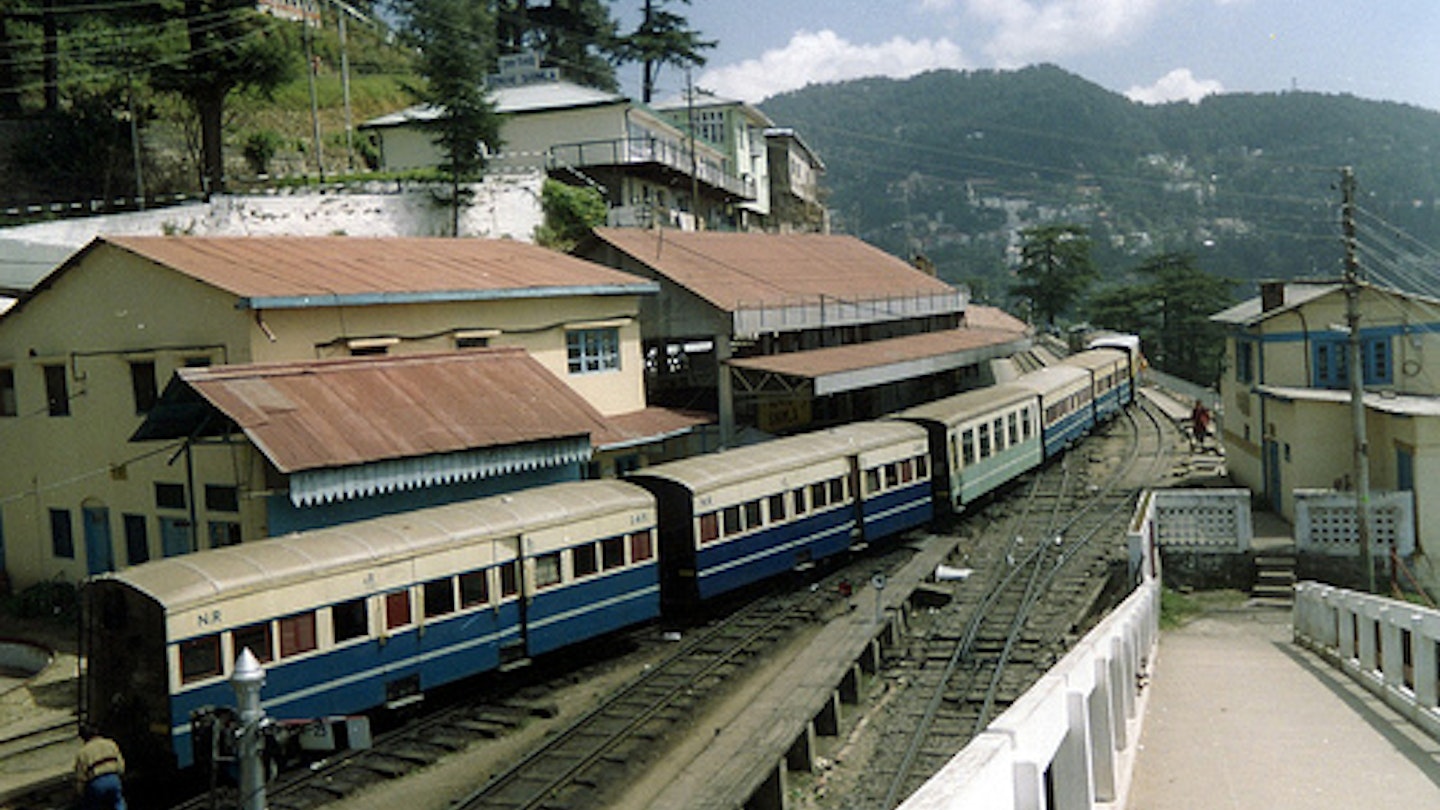
Travelling on an Indian train is a reason to travel all by itself. India ’s rail network is one of the world’s most extensive and the prices are very reasonable. Bookings open 90 days before departure and seats fill up quickly – an estimated 17 to 20 million people travel by train in India every day. So if you have a route mapped out and dates locked in, you can book your train tickets before you even arrive in the country. Here’s the lowdown on how to do it.
Booking tickets
Booking online is the easiest way to buy train tickets. The railway reservation system is open from 1.30am to 11.30pm every day (IST) so keep this in mind when trying to book online, particularly if you are abroad. The following websites all issue e-tickets, which are valid for train travel. You may have to show your passport as ID along with the printout of your booking reference when you are on the train. The following websites all accept international credit cards.
- Indian Railway Catering and Tourism Corporation Limited : Set up by the Ministry of Railways, you can book regular trains as well as tourist trains such as the Deccan Odyssey.
- Cleartrip : An excellent, easy to use and reliable website that charges a small fee (₹20) on top of the regular ticket price.
- Make My Trip : Similar to Cleartrip with very good reports from travellers.

Image of Shimla Railway Station by Miran Rijavic
Reserving a seat
You must make a reservation for all chaircar, sleeper, and 1AC, 2AC and 3AC carriages (check out the glossary below for more details). No reservations are required for general (2nd-class) compartments. Bookings are strongly recommended for all overnight journeys and if you plan on travelling during Indian holidays or festivals.
Some pointers about trains and classes
- Trains and seats come in a variety of classes and not all classes are available on every train.
- Express and mail trains usually have general (2nd class) compartments with unreserved seating and more comfortable compartments that you can reserve.
- Shatabdi express trains are same-day services with seating only, in AC Chair and Executive Chair cars.
- Rajdhani express trains are long-distance overnight services between Delhi and state capitals with a choice of 1AC, 2AC, 3AC and 2nd class.
- New to the rails are eight women-only trains, which service New Delhi , Mumbai , Chennai and Kolkata .
- Some cities also have suburban train networks, but these are very crowded during peak hours.
- In the higher sleeper categories bedding is provided but it doesn’t hurt to bring your own.
- In all classes, a padlock and a length of chain are useful for securing your luggage to the baggage racks.

Image of station in Chennai by seeveeaar
When to use a rail pass
The IndRail Pass permits unlimited rail travel for the period of its validity, but it offers limited savings and you must still make reservations. Passes are available for one to 90 days of travel. The easiest way to book these is through the IndRail pass agency in your home country. They can also book any necessary train reservations for you. Overseas travel agencies and station ticket offices in major Indian cities also sell the pass – click here for further details, including prices. Note: there’s no refund for either lost or partially used tickets.

Image of a sleeper carriage by stevehicks
Air-Conditioned First Class (1AC) : The most expensive class of train travel; two-or four-berth compartments with locking doors and meals included.
Air-Conditioned 2-Tier (2AC) : Two-tier berths arranged in groups of four and two in an open-plan carriage. The bunks convert to seats by day and there are curtains for some semblance of privacy.
Air-Conditioned 3-Tier (3AC) : Three-tier berths arranged in groups of six in an open-plan carriage; no curtains.
AC Executive Chair : Comfortable, reclining chairs and plenty of space; usually found on Shatabdi express trains.
Sleeper Class : Open plan carriages with three-tier bunks and no AC; but the open windows afford great views.
Unreserved 2nd Class : Wooden or plastic seats and a lot of people – but cheap!

Get inspired by our 30th anniversary edition of the India guidebook!
Explore related stories

Water Sports
Mar 4, 2024 • 8 min read
From swimming in protected waters frequented by whale sharks to spotting colorful fish over a reef, here are the world's best places to snorkel.

Feb 22, 2024 • 5 min read

Feb 12, 2024 • 10 min read
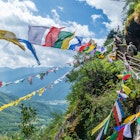
Jan 28, 2024 • 7 min read
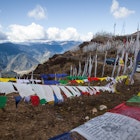
Jan 14, 2024 • 8 min read

Jan 11, 2024 • 4 min read

Jan 2, 2024 • 8 min read

Jan 2, 2024 • 11 min read

Dec 27, 2023 • 8 min read

Dec 20, 2023 • 7 min read
Type and press Enter.
The Ultimate Guide to Train Travel in India.
This post contains affiliate links. If you book something through these links I get a small commission at no extra cost to you. You can read more about my disclosure and affiliate policy here .
Train travel in India – feared, fabled, the holy grail, and a rite of passage. You cannot travel to India and not take a train. Well, you can, in fact, I have done it more than once but I actually still believe it is part of the experience and makes for a well-rounded India journey.
My experience with train travel in India was limited to one very luxurious trip with the Maharajas Express until recently. Unfortunately, this experience did not fall in the ‘very affordable’ category and is definitely not part of the everyday traveler’s journey or budget.
During my most recent trip, I wanted to conquer the art of train travel in India. Apparently, even the ticketing process would be arduous and to be honest, Lion was still fresh on my mind and those trains did not look comfortable. But there was something in me craving an adventure and also telling myself that it surely couldn’t be that hard. Turns out it really wasn’t and I spent 2 weeks zigzagging my way through Rajasthan by train.
What did I learn and how does train travel in India work? All the answers in this post.
The ins & outs of train travel in India
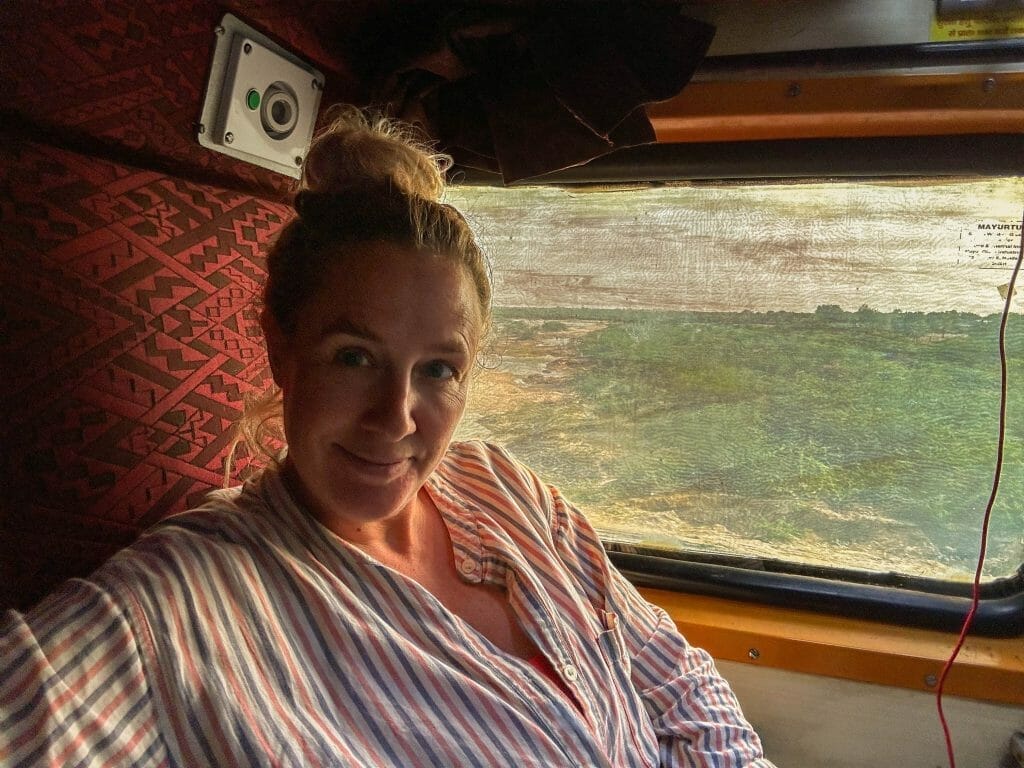
Table of contents:
- Why travel by train in India?
How to book a ticket for a train in India?
Seat reservations & how do i find my seat, how long to book your indian train ticket in advance , classes of the indian railway.
- General safety & Tips for women traveling by train
Can I buy food on the train?
Why travel by train in india .
First of all, it is hard to avoid traveling by train in India. Trains are the transport mode no. 1 and the Indian Railway network is the third biggest in the world. Train travel in India ranges from dirt cheap to very affordable. That said, with a tourist budget you can probably also afford a personal driver for a few days but still, it won’t be as cheap as taking the train.
I also think trains are more comfortable especially when you are covering a long distance overnight. And unlike German trains, Indian trains run a lot more on time than you would think.
Ultimately I think train travel in India is part of the culture and thus should be part of your experience when coming to India. If only to master the art of peeing on a moving train or sharing a meal with a local family you just met.
First things first: you will need a train ticket in India before you board. If you don’t mind winging it you can get it at the station but – and I cannot stress this enough – Indian train tickets sell out fast and far in advance. So chances are you won’t get one at the station on short notice. There are also plenty of little travel agencies all around where you can get your ticket from.
Personally, I prefer buying it online because I like to plan and suss out all the options and best trains, and compare prices… you get my drift. Even if you are not as much of a planner as I am, getting your tickets online is ideal because you can already sort out your travel arrangements when you are not even in India yet.
As a foreigner you currently have 2 options to buy your train ticket online: via 12go or on the website of the IRCTC (Indian Railway Catering and Tourism Corporation Ltd.). I tried both and they each have their advantages and disadvantages, I will walk you through the process.
Booking a train ticket with IRCTC
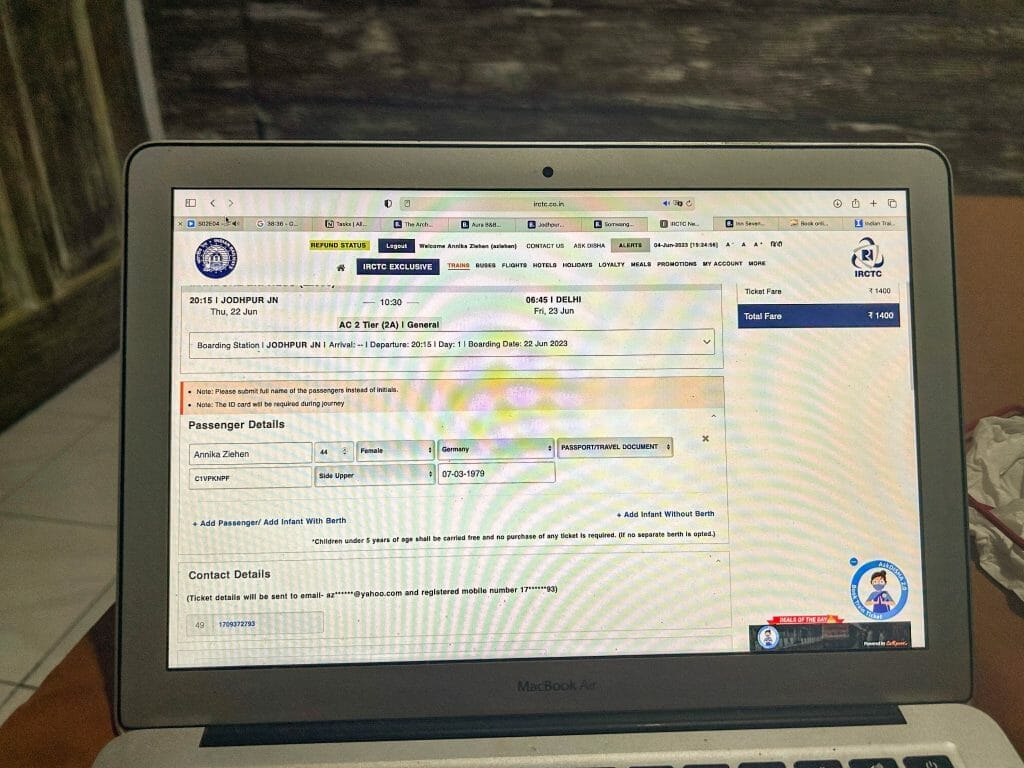
The website of the IRCTC is a little bit infamous as it can be a bit confusing for first-timers. But honestly, once you have your account and know how things run, it is not so bad.
To book tickets you will need to create an account and verify your phone number and your email address. In order to do that as a foreigner you will need to use your credit card to pay a small amount (I think it was 110 ₹ so less than $1,50 ) for the verification. Once this is done you can start booking your tickets. I had to attempt this a couple of times so don’t be dismayed if it doesn’t immediately work.
Afterward, the system is pretty straightforward – put in your departure station and where you want to go, date, how many people traveling, and if you want to use a specific quota (quotas are explained below). Once you have hit ‘search’ you will get your results and you can still narrow it down from here. You can for example enter a maximum travel time, and specific train types as well as narrow down your stations. This can be useful if you are traveling to or from big cities like Delhi that will have more than one station far apart.
Once you have found the train you want you select the class and afterward you can book your ticket if the class you want is still available for your travel date. These tickets will show AVL for available . During the next step, you will put in your details including your passport number, and choose the seat/bunk you would like. Then you are ready to pay for your ticket and yes, you can just use your international credit card.
What happens if no tickets are available for your preferred train? Then you have the option to go for a RAC ticket or get on the waitlist. RAC stands for Reservation Against Cancellation . With this ticket, you can definitely get on the train but won’t have an assigned seat yet. These tickets basically rely on the fact that there will always be last-minute cancellations or no-shows.
In the worst-case scenario, you can opt for a waitlisted ticket. This will show a number like WL10/WL5 . The first number tells you the original length of the waitlist, and the second number your current spot so this one will change. Note that you can only travel if your waitlisted ticket either changes to RAC or CNF for confirmed .
Booking a train ticket via 12go
12go is my favorite platform to book transport tickets in Asia. They are currently the only third-party platform that offers Indian train tickets.
There are a few things to keep in mind when you book your Indian train ticket with 12go. First up: they only show you a select number of trains and only tickets that are still available. This is great if you don’t want to worry about RAC , WL or quotas. On the other hand it also limits your choices quite a bit, which can make things tricky especially if you are late with your booking.
A definite plus are the payment options on 12go – you can easily pay with your credit card without a lenghty verification process but also use Pay Pal or Google Pay. But of course, you will have to pay a fee for the service.
And, a little downside in my books – when you book with 12go you can’t choose your preferred seat/bunk yourself.
As you can see both websites have their pros and cons, just try them both and see which one you prefer.
After you’ve made a booking with either platform you will get your e-ticket. On the IRCTC site, you will get it instantly while it can take up to 24 hours with 12go. This ticket has all your information incl. the all-important PNR . This is the passenger name record and includes your name and details, train number, wagon, and seat.

One of the most common questions: do I have a seat reservation when I get a ticket for a train in India? This question usually comes from a German as we are used to paying almost 5 Euro extra if we want a seat reservation.
The good news is – yes, you will get a reserved seat with your train ticket in India unless you book 2GN class. If you have seen people hanging off trains in India and that scared you, fear not – this is not the norm and in most coaches, you will need a seat reservation and people adhere to them.
If you book your ticket with 12go you will get your seat assigned. If you book your ticket through IRCTC you can choose where you want to sit. I like this option better because especially for the sleeper train I had specific ideas about where I wanted to sleep for safety and privacy reasons.
Once you have your ticket you will see it mentioning your PNR as well as the train name and number, the status of your ticket (it should say CNF ), and something like A1/88 – this means your coach number is A1 and your seat number is 88.
Download the Ixigo App and put in your PNR to check the status of your train (great to confirm whether it is on time or not) and to see the order of the coaches. Click on your coach in the app and you can see the seat figuration and find your seat.

This chart is useful as you will already get an idea of where approximately your coach will be once the train arrives at the platform. On the platform you will see displays switching from the train number to the coach number all along. This way you will know where your coach will be when the train arrives and you can wait there.
Note: If you have booked a first-class ticket you will not know your coach or your seat number until a few hours prior. I was told they put up charts at the station however I didn’t even need to check there as the Ixigo app showed my seat a few hours before departure. Alternatively you can send a message with your PNR to 139 on your phone and it will tell you the seat when the chart is ready.
Indian trains are very popular and they sell out quickly. For most trains, ticket bookings open 120 days in advance. Chances are you may not be able to book your ticket quite as early but you also shouldn’t wait too long especially during holidays or in high season.
If you are cutting it tight you can always use the Indian train quota. What’s that you ask? Well, basically Indian train tickets are sorted by categories, so-called quotas. Not everyone can buy from every quota.
The main one is the GN – general quota . Those are the regular tickets that everyone can buy. As a tourist, you can also use the tourist quota . This is a small number of tickets for certain trains which can only be bought by tourists. You will need to have a valid international passport for buying those tickets. This can be a lifesaver if you are too late with buying a regular ticket but also comes with a caveat: tourist quota tickets are 1,5 x as much as normal tickets.
By the way: as a tourist you can but don’t have to use the tourist quota. I bought all my tickets from the general quota. While I did get an error message once saying I needed to buy a tourist ticket after entering my passport information that was indeed an error – I simply tried again in a different browser and it worked.
There is also a quota for women compartments, people with disabilities, and the infamous taktal . This can be helpful if you are super late with booking your tickets as this quota is only released a day before the departure of the train. However, these tickets also cost more, and sometimes the price is even increased based on demand.
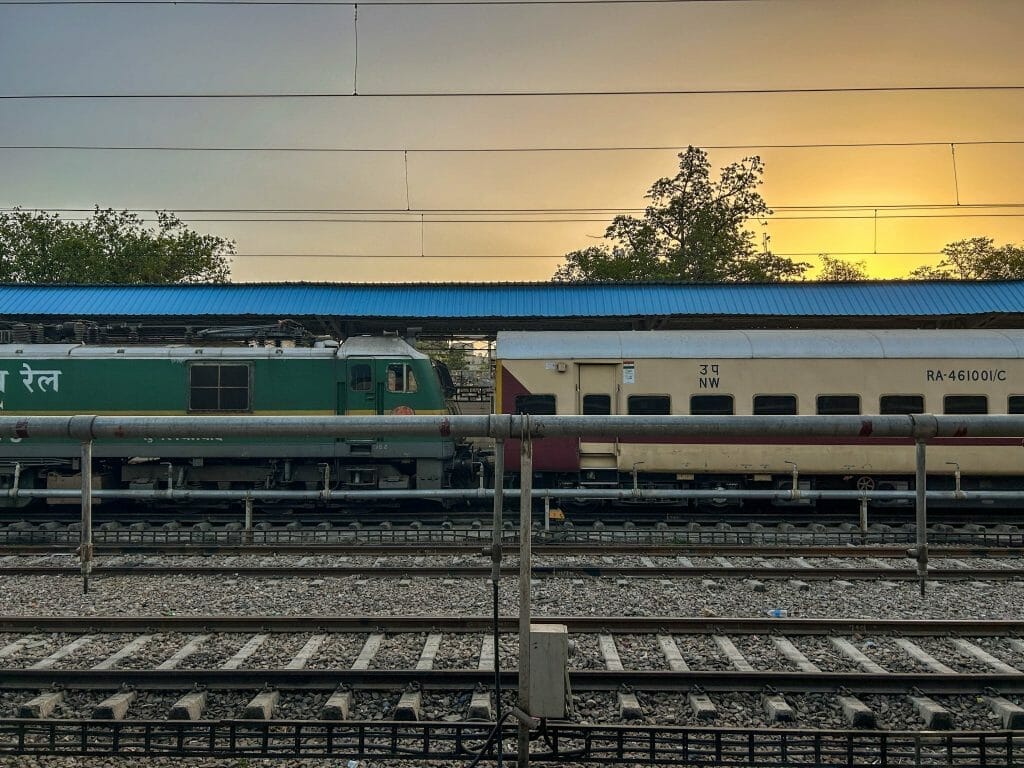
I traveled with a few different classes so I could report back to you. I did not, however, travel in the general class or sleeper class. I was told that these are fine for a shorter trip but since all my journeys were 5+ hours and I was traveling in Rajasthan during summer I didn’t want to be without aircon.
You will see the price differences in the various classes with first class being the most expensive one, often costing double. But generally train travel in India is super cheap, especially when compared to trains in Germany (thanks, Deutsche Bahn).
AC3 / 3A / 3E
This one is third-tier with aircon and at least for a day trip quite comfortable. When you travel overnight this turns into 3 bunks on top of each other – too little space for my liking. But during the day will share a bench between 3 travelers with 2 benches across and another one on the other side of the aisle. Chances are that some travelers will hop on the top bunk which means even more space for you.
Just be aware that you won’t have an individual seat. I didn’t mind but I realized that Indians (or at least the ones I traveled with) have no problem extending their limbs beyond their allocated space (well, allocated in my German mind) and you may end up playing footsie with some. If you can’t fight them, join them…
You will also get a sheet and a pillow even for your day trip if you like. I was told that sheets on Indian trains all get boiled and are thus quite clean and they are being handed out in a fresh paper package.

CC stands for chair class the one that probably reminded me most of German regional trains. You will usually have 3+2 chairs per row and the seat in front of you has a little tray table. There are some rows where chairs face each other and you have a bigger table in the middle. And the seats will even recline a bit!
I thought this was by far the most comfortable class for the money I paid but I also got lucky (or tourist privilege, I am not sure) and got allocated a seat at a big table.
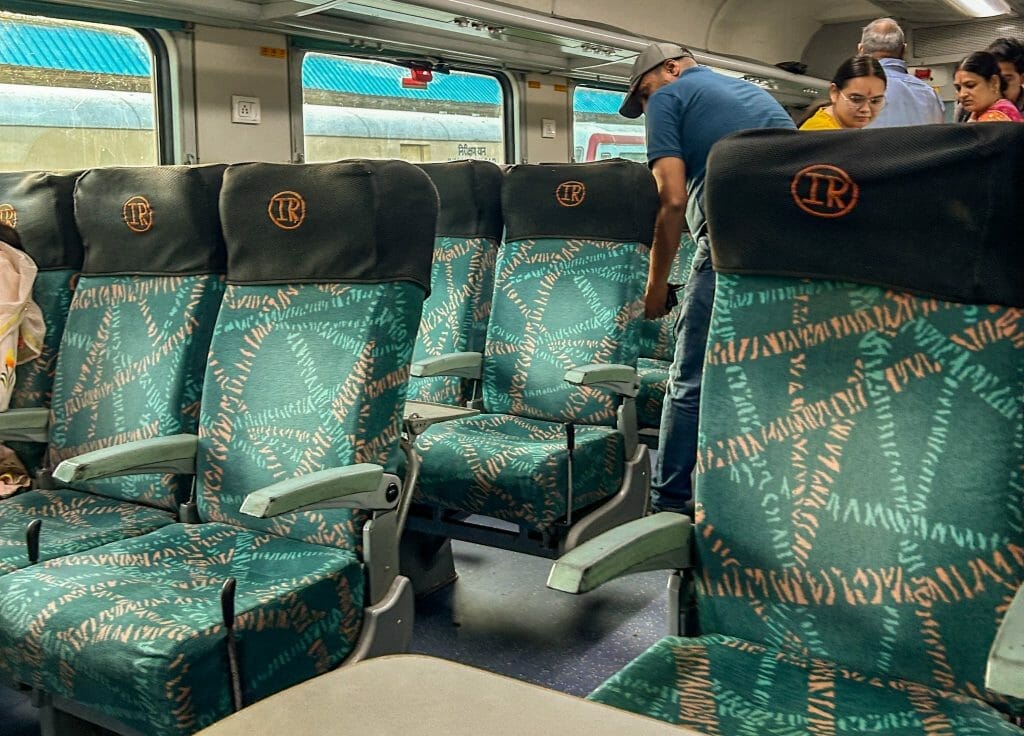
EC stands for executive chair class and is the slightly fancier version of CC. You will get a 2+2 seat combo here and sometimes a meal and a drink are included in the price.
I would definitely recommend CC or EC for a longer trip during the daytime. As far as I know, you won’t find both, CC and EC, on one train so you won’t have a choice but both are reasonably comfortable. They are nicer for a day trip than AC3 or AC2 as you will get a proper seat and won’t have to share a bench.
I chose this second tier for my overnight trip from Jodphur to Delhi and I honestly thought it was the perfect choice. Unlike in first class, you are not alone in a compartment with a stranger but you are also not as cramped as in AC3. In AC2 there are only 2 bunks on top of each other in an open compartment. So you have 4 people facing each other on one side and 2 across the aisle.
I chose the aisle top bunk for safety and it was the perfect choice. I put my backpack underneath the bottom bunk and my hand luggage in my little nest, and while it was snug it was actually pretty comfortable too. You also get fresh sheets, a blanket, and a pillow and unlike AC3 you even have a curtain for more privacy. My top bunk also had a reading light and each bed/seat has its own outlet.
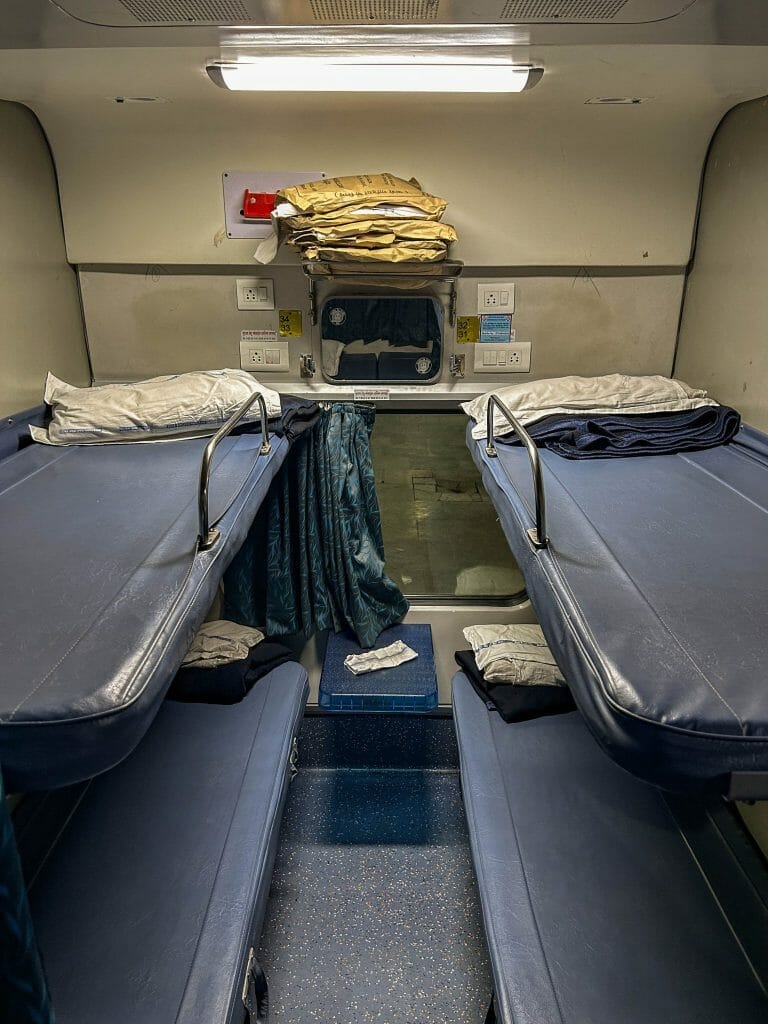
I splurged on one first-class ticket to experience it and also to be as comfortable as possible on a long trip in the middle of the day. I expected it to be hot as hell and the least amount of people around me as possible for this sounded like a good idea at the time of booking.
A day before my trip monsoon had started early so it was not hot but very wet instead. The train was running over an hour late, which I had luckily caught on the app so my wait at the train station in Ajmer wasn’t too long.
The first class has individual compartments with either 2 or 4 berths. To put it nicely – it ain’t the Maharaja’s Express. And to be very real – I wanted to turn around and find a different seat back in cozy third class once I saw my compartment.
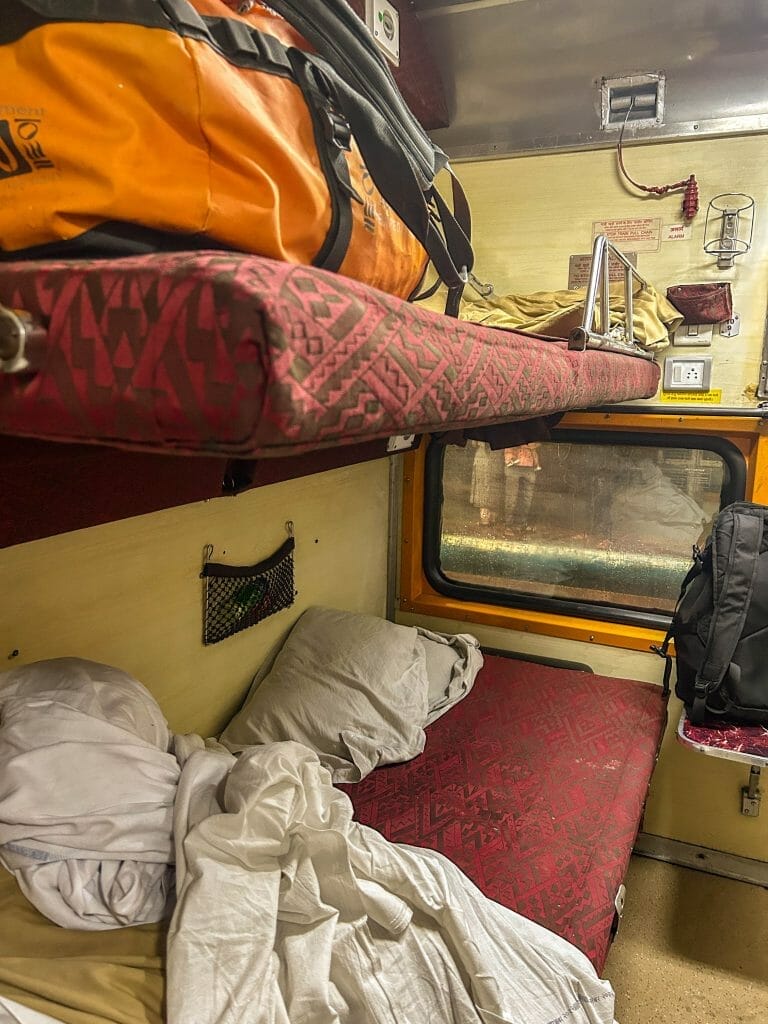
Well, I moved all of the sheets on the top bunk, sanitized my hands vigorously, and settled in the window seat. Once we were on the way, someone came to take the used sheets and brought me new ones. And the conductor even knew my name.
All in all, I don’t think ‘splurging’ on first class is worth it. It doesn’t seem cleaner or more comfortable than the rest, and personally, for an overnight trip, I prefer being in a shared compartment for safety reasons. I guess it is a nice option if you are traveling with your partner or friend and get a coupe for 2 people as you will have complete privacy.
If you are booking any AC compartment make sure to pack some warmer clothes – I was freezing twice, especially during my overnight trip, so bring layers.
This sleeper class is similar to AC3 minus a lot of amenities. If you want a local, authentic experience, go for it but you will have to make do without aircon, pillows, and sheets.

2S & GN
This is the official second class on Indian trains. 2S looked perfectly fine to me but again you will have to manage without aircon and open windows – that can be a hit or a miss but is usually fine for a shorter trip during the day. In 2S you will have a reserved seat unlike in GN – this general compartment is probably what you know from the movies. Since there are no reserved seats these are often crowded and not something I would recommend.
General safety & Tips for women traveling by train in India

The first time I came to India to see the Golden Triangle I was too scared to take the train. Instead, I asked my friend to organize a private driver for me, something that was still super affordable. Then came my trip with the Maharajas Express, obviously a very different kind of train experience than your average journey. But to be honest, it got me excited about train travel in India.
Luckily, I had no issues whatsoever and everyone was really kind. From the driver who walked me to the platform to the young boy and his grandmother who wanted to share their food with me, people were nothing but helpful and lovely when traveling by train in India.
Still, I understand that shit can happen and it is not always rainbows and roses. Here are some tips for everyone but women in particular when taking a train in India.
Travel light
My number 1 tip for anyone traveling by train in India: travel light. I left my big suitcase at my friend’s house in Delhi so I had one big backpack and one smaller backpack I wore in front of me. Light enough to get on and off the train. My big backpack was squishy enough to fit under the seats.
I also took a small shoulder purse with all my valuables to take to the loo. I would advise you to get a good lock for your luggage. I did not only not have one but my backpack also had a giant hole so a lock would’ve been useless. I got lucky even on my overnight trip but wouldn’t risk it again. My small backpack slept almost literally in my arms.
Women’s seat
While some trains do have women’s only coaches I never bothered to look for those. I simply booked my seat in an aircon class and called it a day. You do specify gender when booking and apparently, the IRCTC will try to seat you next to other women if you are traveling alone. I was always seated amongst a mix of people. But if you are really nervous try to find a women’s compartment though I guess this will severly limit your options when searching for a train.
Overnight travel
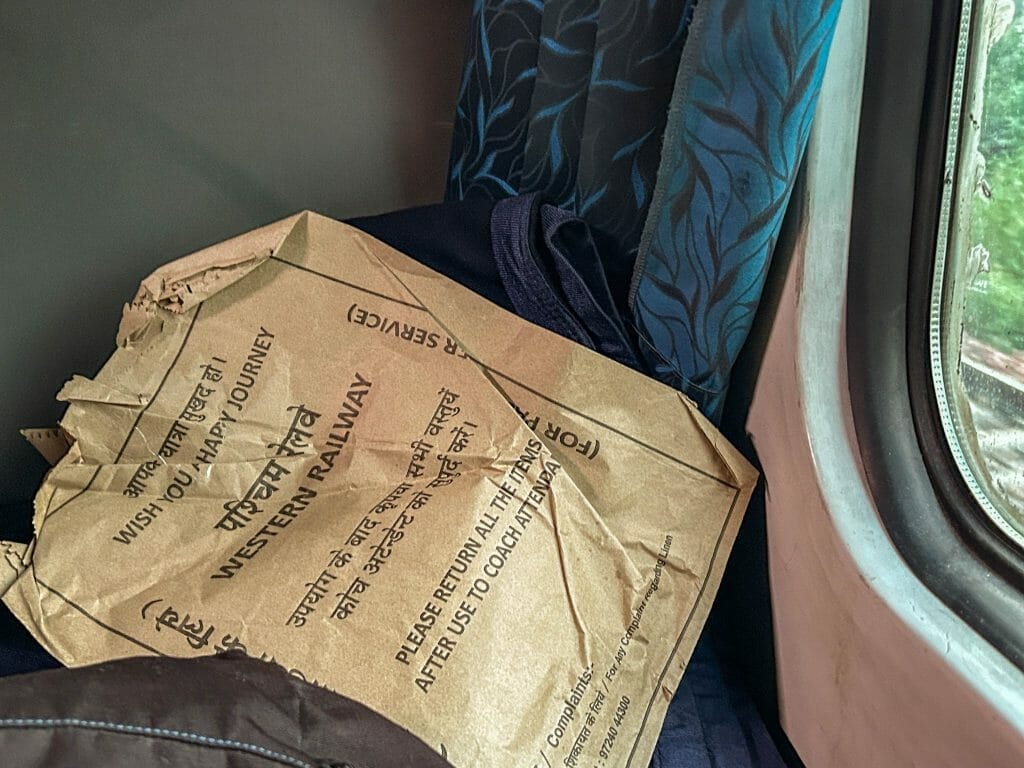
My biggest concern was my overnight trip from Jodphur to Delhi. I made sure to depart and arrive at a decent time and discussed with my Indian friend what class would be best to book. I decided on AC2 and chose a top bunk. While I could have gone for AC1 the idea of being stuck in a separate compartment with one or more strangers at night did not sit right with me. I prefered sleeping in an open compartment – safety in numbers.
And while I would have preferred the bottom bunk after my overnight train in Thailand because they are easier to get into and you have a window, I decided on the top bunk as it feels a bit safer.
Toilets

The less we say about the toilets on the train the better. Then again it was only just as bad as I imagined. There is usually a sqat and a western style toilet in each coach. While the squat toilets are definitely the more hygenic, I understand the creature comfort of a toilet you can sit on – espically on a moving train squatting is an art form. Whichever one you choose bring your own toilet paper and copious amounts of handsanatizer. You may need to hold your breath too – I am sorry!
Wear something not too flowy or pants that are too wide-legged as you will need to put all this fabric somewhere and you probably not want it on the floor. Do not under any circumstances wear a onsie. Yes, they are cute and you look awesome but now you will have to deal with so much extra fabric around your legs and you are also topless.
Are you on your period? To be honest, I would avoid a trip long enough that you will need to empty your cup or change your tampon. While most train toilets have a small sink, it is really not the place you want to deal with this.
Is there wifi on trains in India?
No, they are not quite as fancy and there is no wifi on trains in India. However, I found that making a hotspot with my phone and using my 4G/5G data worked surprising well most of the time.
Are there charging points in the trains?
Yes, there are charging points, at least in the AC3, AC2, CC, and AC1 class that I was traveling with. However, there is not a charging point for each seat available so you may have to take turns with your fellow travelers.
If you have a very long trip ahead of you I recommend you pack a power bank for your phone.
Are Indian trains on time?
Honestly, I was impressed with how punctual the majority of my trains were. One was delayed by a total of 2 hours after the area was hit by heavy rains and flooding so that seemed like a good enough reason.
To make sure you know if your train is either departing or arriving late you can check the Ixigo App which is not 100% reliable but pretty good. In general, it seems similar to flights: the earlier you depart the better your chances are for no delays building up over the course of the day.
At the train station
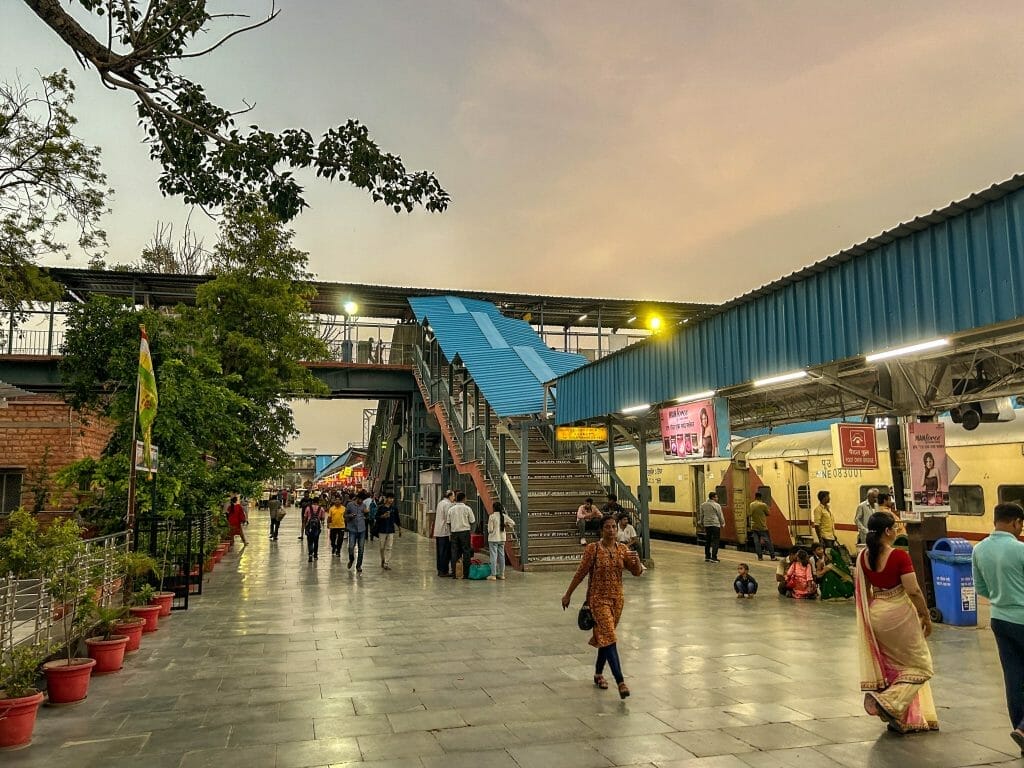
To be honest, the only moments when I didn’t like traveling alone was at the train stations. There was no problem whatsoever but unfortunately, many people sleep on the platforms and beg, and I felt quite uncomfortable at times. I know first-world problems but still.
I had two early morning trains departing at 6 am. I chose them because it wasn’t too hot yet early in the morning and I would have some more time to explore once I arrived. That said, I recommend you only take an early train from a station you have already been to. This way you will at least know your way around a little and not stand at the station like a deer in headlights. I left early from Jaipur and from Udaipur however, I had already seen both stations upon arrival and knew where to go.
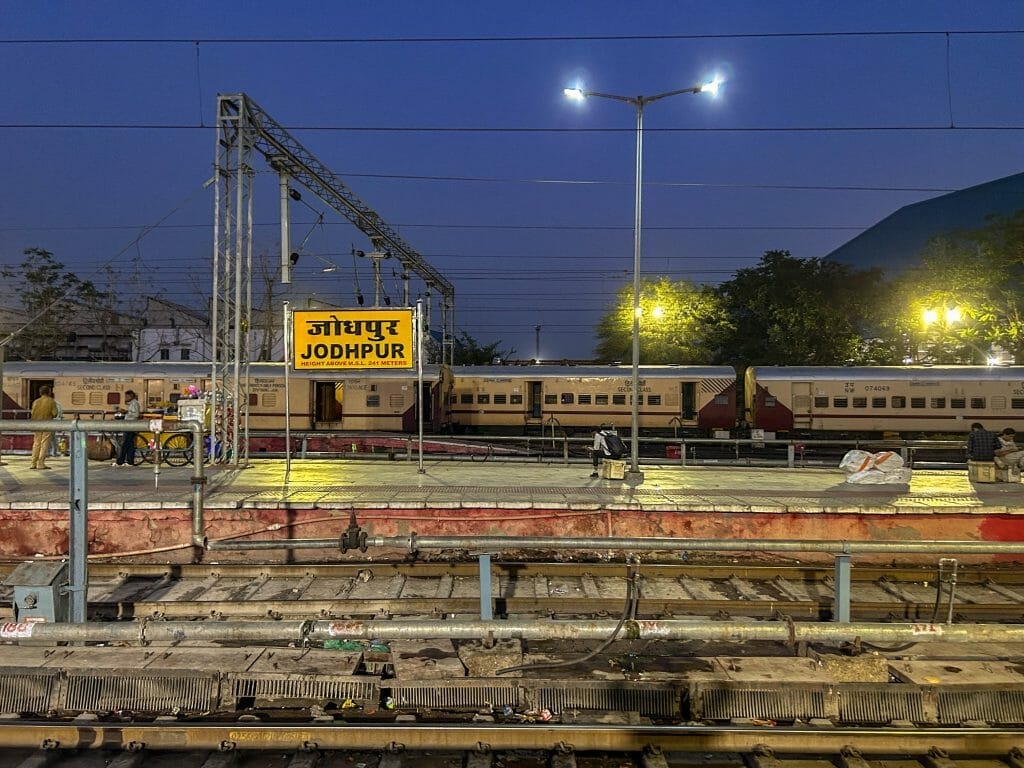
Also, don’t come too early so you don’t end up waiting too long. If your station is the first one chances are your train will arrive early too and you can already get on. When in doubt ask the station master for help!
In some cities auto and taxi drivers can get quite annoying once you exit the train station. In fact, in Jaipur, a driver started hassling me while I was still on the platform and approached me five times until I almost put my hand in his face to tell him off. If your accommodation provides this service ask them to organize a driver for you. Otherwise, check with them beforehand how much you should pay for an auto from the train station. Ultimately you will have to say yes to one of them and this way you will at least know a reasonable price.
Beware of the moving train!
I was very surprised to see that open doors are quite normal for Indian trains when moving. For reasons unknown, because unlike Sri Lanka, no people are hanging out the doors (at least not in the coaches with reserved seats). And if a door isn’t open yet chances are a traveler will open it long before the train comes to a stop in the station.

I stood back and was in awe the first few times I saw this happen. During my last journey, it was I who opened the door long before the station, feeling very daring and adventurous. Then my friend Joe brought me back to earth and told me to be careful – apparently, there are quite a few pickpockets who will approach slowly driving trains and unsuspecting travelers standing in the door to snatch their bags.
Yes, you can buy food on a train in India! However, there is no designated dining car as such. Some fancy tickets will include a meal service though. In most trains, vendors will walk through who sell chai, bottled water, chocolate bars, chips, or prepackaged meals like biryani and even mini Domino’s pizza. You won’t really know your options before but you definitely won’t go hungry either. Prices are totally okay – a small cup of chai is 10 rupees and a pizza is 150 rupees.
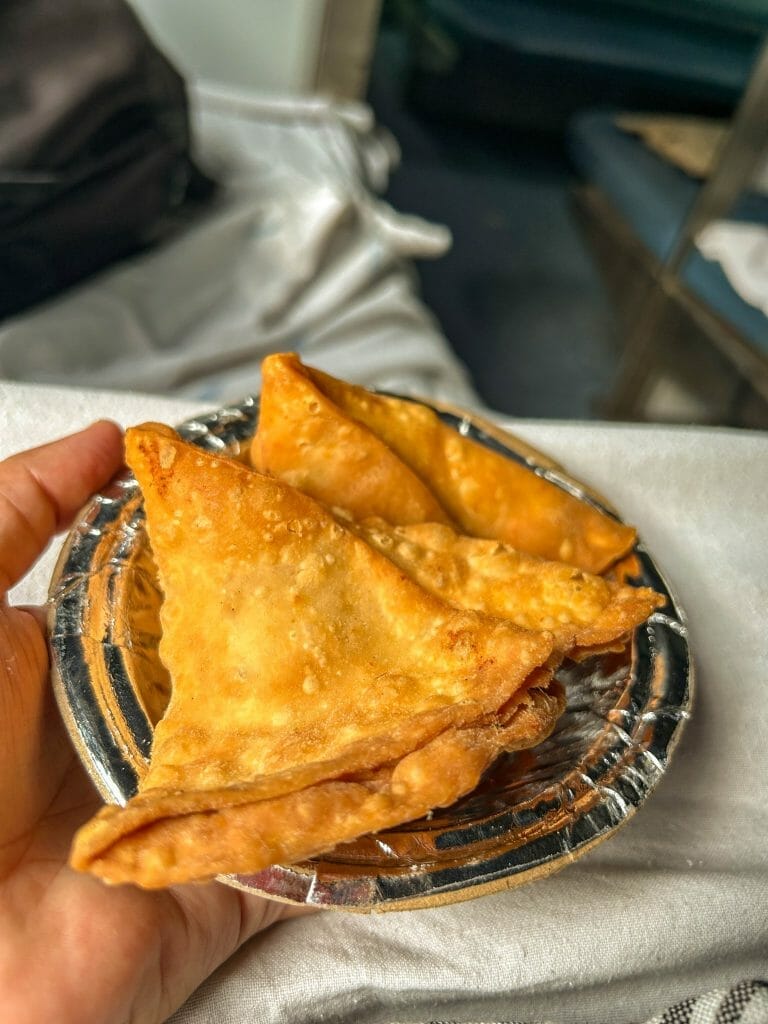
During longer stops in a specific station, vendors from this station will also get on to sell you food and snacks. During my trip to Pushkar, I couldn’t resist and got some samoosas. I think his probably not-so-clean fingers on my food should have been a giveaway but this samoosa did not sit well with me for the rest of the day. However, the dishes you buy on the train are usually neatly packed and looked very hygienic.
The greatest invention and option to eat on a train in India is to pre-order your meal. There are a few apps and websites for this but I recommend the IRCTC Catering App . All you need to do is put in your PNR and the app will show you the route you are traveling and stops along the way where you can order food. Each stop usually has a few restaurant options. Pick a restaurant and order the food you would like. Depending on the restaurant you will either pay cash on delivery or can pre-pay with your credit card. Then you just need to get on your train, sit back, and wait for the magic to unfold.
And honestly, it is pure magic to me how it all works out. Get a local SIM card so the delivery guy can contact you if needed. The restaurant has your seat number through your PNR so they bring the food straight to your place. Once you arrive at the station you ordered from someone will hop on the train and bring you your meal. If you still have to pay make sure to have small change.
I ordered twice and the food was yummy and hot – I can highly recommend this service especially if you are a somewhat picky eater or don’t want to gamble with train samoosas.
In the mood for a train trip through India now? Give it a go and let me know if you have any questions!
Pin for Later!
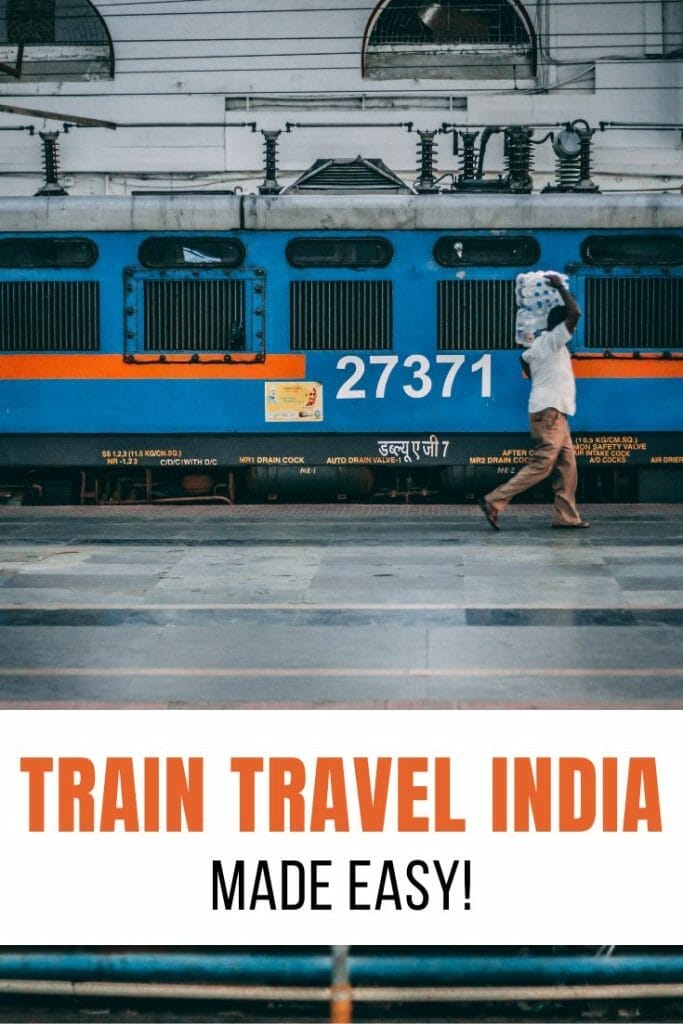
Join the Midnight Blue Elephant
Follow along on my solo travels and culinary adventures around the world. Sign up to the Midnight Blue Elephant newsletter now & get monthly updates, exclusive tips & recommendations and some more personal travel stories. Let’s stay in touch!
Your email address will be added to the Midnight Blue Elephant mailing list with the purpose of sending you our email newsletter. I will not share your information with anyone, and you can unsubscribe at any time.
You have successfully joined our subscriber list.
Sharing is caring!

Leave a Reply Cancel reply
Your email address will not be published. Required fields are marked *
This site uses Akismet to reduce spam. Learn how your comment data is processed .
One comment

- Privacy Overview
- Strictly Necessary Cookies
This website uses cookies so that we can provide you with the best user experience possible. Cookie information is stored in your browser and performs functions such as recognising you when you return to our website and helping our team to understand which sections of the website you find most interesting and useful.
You can adjust all of your cookie settings by navigating the tabs on the left hand side.
Strictly Necessary Cookie should be enabled at all times so that we can save your preferences for cookie settings.
If you disable this cookie, we will not be able to save your preferences. This means that every time you visit this website you will need to enable or disable cookies again.
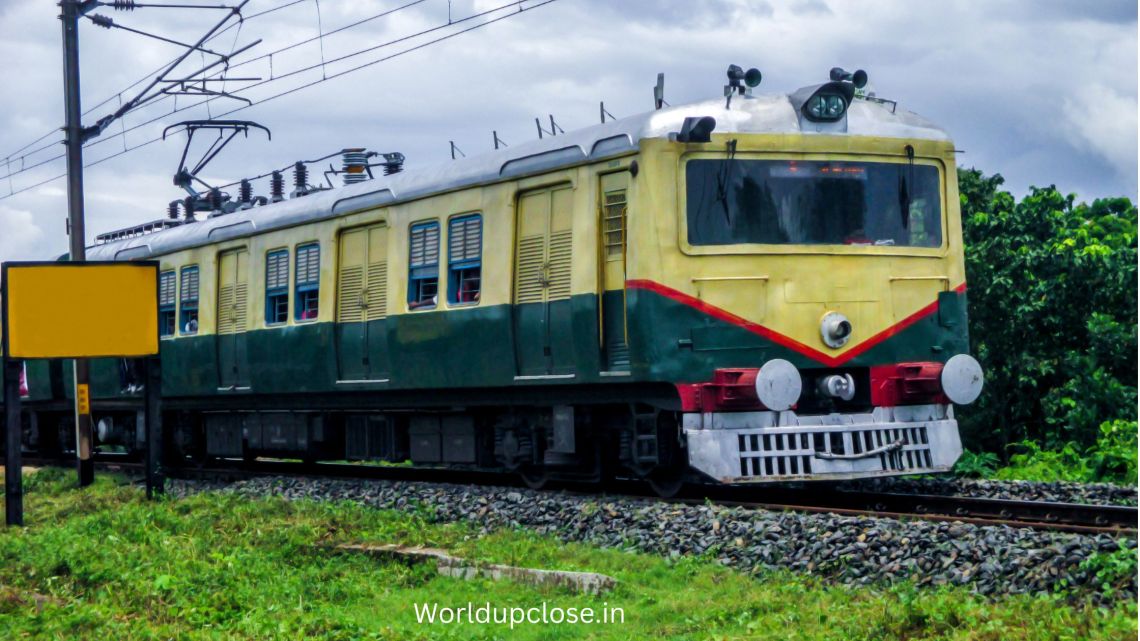
Complete Guide to Train Travel in India
Why should you train travel in india.
India’s expansive railway network is not just a mode of transportation; it’s an integral part of its cultural fabric. With over 18 million people traveling daily across its vast expanse, Indian trains offer an unparalleled opportunity to witness the pulsating heartbeat of this nation.
Each train ride is a microcosm reflecting the myriad experiences awaiting intrepid travelers – from breathtaking landscapes rolling by like living paintings to encounters with warm-hearted locals who share tales steeped in history and tradition. As you step aboard one of India’s iconic trains, you’ll be greeted by a vibrant tapestry of sights and sounds.
The rhythmic clickety-clack as the wheels roll over tracks creates a symphony that lulls you into a state of relaxation. As the scenery unfolds outside your window, you will witness breathtaking landscapes: misty mountains covered with emerald tea plantations, golden deserts stretching towards the horizon or lush green fields dotted with colorful saris drying under the sun. But what truly sets train travel apart in India is its ability to connect people from all walks of life. It offers a unique glimpse into Indian culture.

Train Travel in India
How to book trains in india, online booking ( irctc website).
Booking train tickets in India has never been easier with the advent of online booking platforms like the Indian Railway Catering and Tourism Corporation (IRCTC) website. Gone are the days when travelers had to stand in long queues at railway stations, juggling their schedules and hoping for available seats.
The IRCTC website offers a seamless booking experience for both domestic and international travelers. Its user-friendly interface allows you to search for trains based on your preferred date, time, class, and destination.
The comprehensive search results display all relevant information such as train availability, seat quotas, fares, and even station codes – making it convenient for frequent travelers.
The IRCTC website provides various payment options so that you can choose the most suitable method for yourself. Whether it’s credit/debit cards or net banking facilities or even e-wallets like Paytm – there is an array of choices that cater to different preferences.
In addition to ticket reservations, this platform also offers other services like checking PNR status updates, live train running status updates using GPS technology – allowing passengers to plan their journey accordingly without any last-minute surprises. One of the most significant advantages of using IRCTC’s online booking platform is its efficiency.
No longer do you need to worry about missing out on your preferred trains or being stuck with inconvenient timings. With real-time availability updates and instant reservation confirmations, you have complete control over your travel plans.
All you need to do is –
- Create an account on the IRCTC website to log in and make reservations.
- Enter your journey details, including the source and destination stations, travel date, and class of travel.
- Select the train, check seat availability, and choose your preferred seats or berths.
- Make the payment using various online payment options available on the website.
Foreign Tourist Quota for train booking
For foreign tourists planning their Indian adventure, there is a unique opportunity available – the Foreign Tourist Quota for train bookings. This special quota ensures that international travelers have access to reserved seats or berths on various trains across India.
The Foreign Tourist Quota allows foreigners to book tickets up to 365 days in advance, giving them ample time to plan their journey across this captivating nation. The Foreign Tourist Quota not only simplifies reservation procedures but also offers special fares that are often significantly lower than regular prices.
This initiative aims at promoting tourism while ensuring that travelers have a memorable experience exploring the diverse landscapes and heritage sites scattered throughout India. To take advantage of this exclusive quota, all you need is a valid passport and relevant visa details.
Travel Classes in Indian Trains
What makes train journeys in India even more fascinating are the distinct travel classes that cater to various budgets and preferences. For those seeking luxurious indulgence, first-class air-conditioned (AC ) compartments provide unparalleled comfort and privacy.
With spacious cabins adorned with plush upholstery, cozy beds, and personal attendants at your beck and call, this class promises an opulent experience fit for royalty.
Then there is Second-class AC (2AC) offers similar amenities but with slightly less space, perfect for those seeking comfort without breaking the bank. Here you can enjoy air-conditioning while sharing a cabin with fellow passengers as you exchange stories over steaming cups of chai.
For budget-conscious travelers, there are several non-AC options such as sleeper class and general class. Sleeper class allows you to witness the sights and sounds of Indian Railways up close while still providing basic facilities like berths to rest during long journeys.
General class is an authentic Indian experience – crowded compartments filled with people from all walks of life sharing stories and laughter.
But perhaps one of the most intriguing classes is known as “ unreserved ” or “general unreserved.” This category represents chaos mixed with excitement; it embodies the true essence of India. People scramble for seats or stand shoulder-to-shoulder throughout their journey, creating an atmosphere where strangers become friends within minutes.
I would recommend to go for the AC class as it gives you the comfort. Regardless of which travel class you choose, traveling by train in India promises unforgettable memories at every turn.

Important things to carry while travelling in train in India
Travelling by train in India is an experience like no other. It’s a chance to immerse yourself in the vibrant culture, witness breathtaking landscapes, and interact with people from diverse backgrounds. However, before embarking on this exciting adventure, it’s crucial to ensure you have all the essential items packed for a comfortable journey.
Train journeys can be long and sometimes boring, so having something to keep yourself occupied is crucial. A good book or some form of entertainment is essential.
Don’t forget your travel documents ! Keep them organized and easily accessible as they are required during various checkpoints. A valid ID proof is mandatory when traveling by train in India.
Indian trains offer onboard catering services; however, carrying snacks or homemade meals can be a good idea too. Pack some dry fruits or energy bars that will keep you energized throughout the journey. Additionally, staying hydrated is vital, make sure you have enough water bottles handy.
Indian trains may not always guarantee clean washrooms or readily available supplies, so having your own essentials is crucial. Include travel-sized toiletries such as toothpaste, soap, wet wipes, and hand sanitizer to keep yourself fresh throughout the journey.
A few more things like a comfortable pillow or neck rest can do wonders for long train journeys. It will provide much-needed support during those overnight trips when sleep becomes elusive.
Additionally, packing some earplugs or noise-cancelling headphone s can help drown out any unwanted noises that might disturb your tranquility.
Another important item to carry is a power bank or portable charger for your electronic devices. Trains often have limited charging points or erratic power supply; therefore keeping your gadgets charged up ensures you stay connected and entertained during those long hours onboard.
Another important consideration is security and safety measures while traveling through crowded stations or longer routes. Carrying a lock for your luggage will give you peace of mind knowing that your belongings are secure.
What is the process of Boarding the Train in India?
The first step in boarding a train is finding your platform, which can be quite challenging if you’re not familiar with the station layout. There are usually multiple platforms, each catering to different trains heading towards various destinations across this vast country.
Once you’ve located your platform, it’s time to navigate through throngs of people jostling for space. Once on the platform, it’s essential to locate your assigned coach and berth. Keep an eye out for porters carrying towering stacks of luggage expertly weaving their way through the crowd, they might just come in handy if you have heavy bags weighing you down.
As time ticks away before departure, ensure that you are ready with all necessary documents – tickets, identification proof, easily accessible in case any inspection arises during travel.

Safety and Security in Indian trains
With millions of passengers commuting daily across its vast rail network, ensuring a secure journey is not just a goal but an obligation for Indian Railways. From bustling metropolitan cities to remote rural areas, the railways serve as the lifeline connecting people from all walks of life.
The authorities understand this responsibility and have taken several measures to maintain safety and security within trains. To begin with, strict protocols have been implemented to safeguard against accidents or mishaps.
Regular maintenance checks are conducted on all trains and tracks to ensure they meet the highest standards of safety. The introduction of advanced signaling systems and improved communication technologies has further enhanced operational efficiency while minimizing potential risks.
RPF (Railway Protection Force) personnel patrol both inside the trains and at railway stations, maintaining a constant vigilance over potential threats such as thefts or misbehavior. CCTV cameras installed throughout coaches act as an additional deterrent against criminal activities.
Indian Railways actively encourages passengers’ participation in ensuring their own safety by reporting any suspicious activities or unattended baggage promptly. Various awareness campaigns educate travelers about emergency procedures and how to respond effectively during challenging situations.
Share this:

You May Also Like

10 Ultimate Magical Monsoon Destinations in India
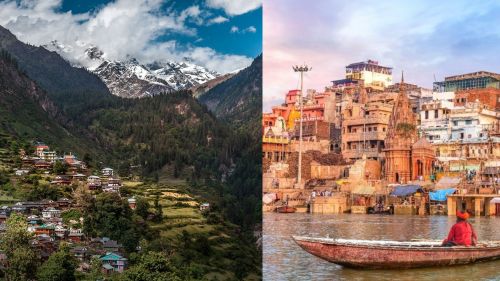
11 Best Affordable Backpacking Destinations in India (2024)

25 Amazing Reasons to Visit Kerala Once in Your Life
Leave a reply cancel reply.
This site uses Akismet to reduce spam. Learn how your comment data is processed .
Discover more from World Up Close
Subscribe now to keep reading and get access to the full archive.
Type your email…
Continue reading
Rail travel in India

- 2.1 Regular trains
- 2.2 Mountain trains
- 2.3 Luxury trains
- 3 Scenic routes
- 4.1 Long-distance
- 4.2 Short-distance
- 4.3 Vistadome
- 4.4 Other classes
- 7 Schedules
- 8.1 E-ticketing
- 8.2 Counter booking
- 8.3 Booking tips
- 8.4 Non-confirmed accommodation
- 8.5 Tatkal quota
- 8.6 Foreign tourist quota
- 9.1 Suburban railway
- 9.2 Metros and monorails
- 9.3 Rapid rail
- 10 Eat and drink
- 11.1 In the train
- 11.2 In stations
- 12 Stay safe
The rail network of India is the third largest in the world, and the rail system is efficient, if not always on schedule. Tracks running well over 60,000 km help connect over 7,500 stations, ferrying nearly 20 million people every day. Although distances in India are long and Indian trains aren't the world's best, travelling on them can add a fascinating new dimension to a visitor's experience. There is virtually no better way to make friends with the local people and see the spectacular and diverse Indian countryside. On many routes the railways are the fastest and cheapest way to get around.
All trains in the national system in India are operated by the government-run Indian Railways (IR).
History [ edit ]
India's first commercial railway service began on 16th April 1853 at 3:35PM on its first run between Bori Bunder (in Mumbai , present-day Chhatrapati Shivaji Maharaj Terminus) and Thane . On 15 August 1854, Eastern India's first passenger train ran from Howrah (near Kolkata ) to Hooghly . Back then, most railways in India were built by different private companies, and all of them were taken over by the government in 1944.
There used to be several different track gauges across the country. However, since 1992, most tracks are converted to broad gauge (1,676 mm or 5 ft 6.0 in). However, you can still enjoy narrow-gauge "toy trains" in mountainous areas (see #Mountain trains below).
Trains [ edit ]
There are a variety of trains in India, depending on the route you travel and whether you travel during the day or overnight. The more expensive and luxurious trains are as a rule air-conditioned, stop only at major stations, only have reserved seats or beds and in general offer passengers more space. In contrast, the cheaper services are slower, often have no air-conditioning and include non-reserved compartments. With a wide range of trains and accommodation types, you have the choice of travelling in a first-class compartment comparable to first class in a western country, in a more down-to-earth (and likely more adventurous) way or something in between. If you are looking for a really luxurious experience, there are several luxury trains touring popular destinations around India.
IR has some newer coaches (usually updated chair cars) and faster services (listed below) that make riding the rails more appealing compared to flying. These trains tend to be more comfortable and faster than other trains, however, they aren't as common as other services.
Regular trains [ edit ]

All regular trains in India are either superfast express, express/mail, fast passenger, passenger or local/EMU trains. Don't get too excited by the term superfast ; it merely means that the train has an average speed of at least 55 km/h, and therefore the "superfast surcharge" is added to the ticket price. The broad hierarchy from luxurious to normal is as follows:
- Rajdhani Express — translated as "capital express", these are fully air-conditioned overnight trains, with only AC sleeper accommodation, that run between the national capital ( New Delhi ) and regional state capitals. They are Indian Railways' most luxurious trains. All meals are provided. With a top speed of 130 km/h, Rajdhani Express are the fastest long distance trains of India and almost always on schedule. They get priority over other trains on their respective routes.
- Vande Bharat Express — These are fully air-conditioned semi-high-speed, intercity, EMU trains, operated by the Indian Railways on 41 routes as of 2024. These are among the fastest and most luxurious trains of Indian Railways, and have seats only (no sleeper coaches). For example, with a journey time of 8 hours, the New Delhi–Varanasi Vande Bharat Express is the fastest train to connect these two important cities; all other trains take at least 12 hours on this route.
- Tejas Express — The Tejas Express is a semi-high speed fully air-conditioned train which runs 4 routes as of 2024. It features modern onboard facilities with doors which are operated automatically. Tejas Express are seat-only trains which run during the day.
- Shatabdi Express — Fast, daytime intercity trains that connect important cities in a region, for example two adjacent states' capitals, and returning to their origin station the same day. These are fully air-conditioned trains offering sitting accommodation (no sleepers). They are among the fastest trains in India, and run on 21 routes as of 2024.
- AC First Class (1A) with 2-berth and 4-berth lockable coupes
- AC 2-tier (2A) with open bays (4 berths/bay + 2 berths on the other side of the aisle of each bay)
- AC 3-tier (3A) with open bays (6 berths/bay + 2 berths on the other side of the aisle of each bay)
- Sleeper Class (SL) with open bays (6 berths/bay + 2 berths on the other side of the aisle of each bay)
- Garib Rath Express — Translating to "chariot of the poor", these are fully air-conditioned superfast overnight trains, having both sitting and sleeper accommodations, that offer more seats per coach at a lower fare. These are not as punctual as other trains mentioned above and not as luxurious. The priority it gets in Indian Railways is also lower than the trains mentioned above.
Note: Above are fully reserved trains . They do not have unreserved/general compartments (see below).
- Jan Shatabdi Express — Translating to "people's Shatabdi Express", these are superfast daytime intercity trains offering both air-conditioned, non-air-conditioned and unreserved sitting accommodation. Jan Shatabdi Express are usually very punctual, and are intended to be an economical version of the Shatabdi Express. While their route priority is below all the trains mentioned above, they still have higher priority than all the trains lower on this list. There are 27 active services as of 2024.
- Express and Mail — These trains have both air-conditioned and non-air-conditioned carriages, including both sitting and sleeper accommodation, and stops at major railway stations.
- Fast Passenger — These trains have only non-air-conditioned carriages,including both unreserved sitting (mostly) and sleeper (sometimes) accommodation. They stop at almost all stations on their route.
- Passenger — These trains have only non-air-conditioned carriages offering only unreserved sitting accommodation.
- Local or EMU — These trains offer both sitting accommodation as well as standing room and grab rails and operate within and around big cities. Local trains are often part of a suburban railway network.
The IR uses two types of coaches. ICF coaches were the mainstay of IR passenger services. As they were developed in the 1950s, they were rather antiqued and have interior facilities worn-out. LHB coaches, which were developed in the 2000s, are largely air-conditioned (except Deen Dayalu coaches) and have better interior facilities. LHB coaches are often identified with its red and grey or blue and grey colours. In general, LHB coaches are more comfortable than ICF coaches. As of 2023, Rajdhani Express, Tejas Express and Shatabdi Express trains use LHB coaches, Duronto Express and Jan Shatabdi Express trains vary, Vande Bharat Express trains have their own coaches and the rest are most likely using ICF coaches.
Mountain trains [ edit ]

- Darjeeling Himalayan Railway (DHR) — Winding its way over the steep and torturous foothills of the Himalayas, the "toy train" takes six hours to cover the 83 km (52 mi) distance from New Jalpaiguri (NJP) Station in Siliguri to Darjeeling . Completed in 1883, the railway follows the road (and mostly shares the same bed) and uses an interesting system of reverses (the trains climbs into a sliding and then goes into reverse to climb up the next section of the hill, sort of like a sideways V) and loops (the track loops around and crosses itself) to navigate the steep climb. Batasia Loop , at a tor point near Darjeeling just beyond the town of Ghum, is the most famous because of its great views.
- Kalka–Shimla Railway — The railway from Kalka to Shimla was completed in 1903, the final stage in the connection of Calcutta (Kolkata), then the winter capital of British India, with Simla, then the summer capital. The 96 km (60 mi) railway line runs through the magnificent scenery of the Shivalik Hills, up valleys ringed by high mountains, across 864 stone bridges built like Roman viaducts, and through 107 tunnels, the longest 1,144 m (3,753 ft) in length.
- Nilgiri Mountain Railway (NMR) — The steepest mountain railway in India, the NMR climbs the 6,159 ft (1,877 m) from Mettupalayam to Udhagmandalam (Ooty) over a distance of 46 km (29 mi), with gradients of 1:12 in some stretches. Completed in 1899, it is the only railway in India to use a rack and pinion system to climb the steep gradient. The train passes through 16 tunnels, over 250 bridges and around 205 sharp curves, with the breathtaking scenery of the Nilgiri Hills visible all along the way.
- Kangra Valley Railway (KVR) — This narrow-gauge, British-built train, also called Kangra Toy Train , from 1929 crawls 128 km from Pathankot main station through stunning scenery to Jogindernagar (6 hr) via Palampur and Kangra (93 km, 4 hr, ₹20) (near Dharamsala ). About six daily departures of slow, often packed second class trains make the trip. (The luxury Kangra Queen service is no more.) Some head only to the penultimate stop of Baijnath Paprola, though all serve the main towns of interest: Kangra and Palampur.
Luxury trains [ edit ]
One of the luxurious ways to explore the most prominent tourist destinations and attractions in India is to opt for luxury train travel . The history of luxury train travel in India dates back to the days of the maharajas who used to travel in opulent personal carriages. In 1982, Rajasthan Tourism Development Corporation launched the Palace on Wheels in collaboration with Indian Railways to revive the art of elegant traveling in India. The Palace on Wheels was launched to promote tourism in Rajasthan and cater exclusively to the overseas traveler and offer them a hassle free, all-inclusive and opulent option of traveling to the royal destinations in Rajasthan. Nowadays there are a total of 6 luxury trains plying different routes and offering a total of 11 pre-packaged itineraries.

- The Palace on Wheels — Although the history of luxury train travelling in India dates back to the time of maharajas during the days of British Raj, the modern history of this mode of transport dates back to 1982 with the introduction of India’s first luxury train. It was introduced as a joint venture of the Rajasthan Tourism Development Corporation and Indian Railways to promote Rajasthan as a global tourist destination. The venture turned out to be a great success among overseas travellers and a few decades later more such train journeys followed. The Palace on Wheels does an eight-day loop from New Delhi with stops and tours in Jaipur , Ranthambore, Chittorgarh, Udaipur , Jaisalmer , Jodhpur , Bharatpur , and Agra . The train is equipped with Wi-Fi, TV, dining cars, bar & sitting lounge, guest cabins with attached bathroom and even a spa. The all-inclusive prices of the Palace on Wheels start from US$340 per person per night on triple occupancy basis in the off-peak season and US$450 for the same in peak season (October–March).

- Maharajas' Express — Latest luxury train in India, Maharajas' Express is touted as the India’s answer to the Orient Express. This luxury tourist train offers 5 itineraries 3 of which are pan-Indian tours and 2 are golden triangle tours. The Maharajas’ Express journeys are named the Heritage of India, the Indian Splendor, the Indian Panorama, Gems of India and Treasures of India. Maharajas Express also happens to be one of the costliest luxury tourist train rides in the world with fare starting from US$3580 per person per journey and reaching as high as US $22000 per person per journey for Presidential Suite.
Scenic routes [ edit ]

Other than narrow-gauge and luxury trains, many regular trains run across the spectacular countryside of India. Here are some of the most scenic routes that are operated as part of the regular train network:
- Kashmir Railway (Jammu–Baramulla) — Completed in 2023, the railway line starts from the flatlands of Jammu and ends at the hilly town of Baramulla in Jammu and Kashmir . It runs across the Pir Panjal hills and crosses the Chenab River with the Chenab Bridge, the highest railway bridge in the world. The route crosses inhospitable terrain, traverse major earthquake zones and be subject to extreme temperatures of cold and heat.
- Konkan Railway (Mumbai–Mangalore) — Completed in 1998, the railway line starts from the bustling cityscape of Mumbai and ends at the coastal city of Mangalore . It runs across the mesmerising Western Ghats from Mumbai to Madgaon , then runs across the western coast up to Mangalore.
Classes [ edit ]

India has seven classes of train travel to choose from. Not all classes are available on all trains: for example, Chair Cars are usually found only on short-distance daytime trains and higher-speed trains, while the sleeper classes are only found on overnight services.
Long-distance [ edit ]

- AC First class (1A) , the most comfortable class to travel in, includes lockable four-berth and two-berth (coupe) compartments. The carriages are clean (and carpeted) and the toilets the cleanest of any on Indian trains. Sheets, pillows and blankets are provided and an attendant makes the beds at night. AC First Class carriages are usually found only on important overnight trains and are the most expensive class.
- AC 2 Tier (2A) Passengers sleep on four berths in an open cabin or on two berths that are positioned lengthwise along the side of the carriage. Each cabin has a curtain for privacy and each side berth has its own curtain for privacy. There are four toilets, two at each end of the carriage, and usually include a mix of western and eastern style toilets, spottily provided with toilet paper. An attendant brings around blankets, sheets and pillows.
- AC 3 Tier (3A) is similar to 2 Tier, the significant differences being the additional middle-bunk in the cabins (but not on the sides). Curtains may be present in each cabin for privacy and each side berth has its own curtain for privacy similar to AC 2 Tier coach. This can make it uncomfortable to sit up straight during the morning if the person in the middle-bunk is a heavy sleeper. An attendant brings around sheets, blankets, and pillows in the evening. Because there are more people around, AC 3 Tier tends to be noisier than AC 2 Tier.
- AC 3 Tier Economy (3E) is generally found in Garib Raths and a few Durontos - it is similar to AC 3 Tier but with the presence of a middle berth on the side too making it 9 berths in a bay. Denoted by "G". 3E is cheaper compared to 3A.
- Sleeper (SL) is the way most Indians travel and is an inexpensive way to get around the country. Berths are arranged in the same pattern as AC 3 Tier, six berths in a cabin and two along the side of the carriage, but there is no air-conditioning. The downside is that it can be hot, sweaty, and uncomfortable inside. The toilets are sometimes dirty and you may find yourself sharing your cabin with passengers without a reservation. For the adventurous, this is the way to see India. Chai-wallahs and hawkers selling local food and other items roam the carriages and you'll find yourself sharing food and life-stories with the lower-middle-class families travelling with you.
For typical layouts of the different classes, you can refer to these unofficial diagrams .
Short-distance [ edit ]

With the new coaches and services that were made and established in the last few years, the quality of these "daytime" coaches can vary immensely, even in the same class.
- Anubhuthi (EA) is available on a few Shatabdis. It is essentially a modernized version of EC ( see below ), with new coaches that have updated seats with a screen for each passenger. It is similar to Tejas Express chair cars.
- Executive Chair Car (EC) is only available on Vande Bharats and some Shatabdis and Durontos. It is extremely comfortable, and is the most comfortable way to travel during the daytime.
- AC Chair Car (CC) , found on most daytime intercity trains, is also quite comfortable, but the seats are not as wide as EC. It is advisable to travel on this class wherever possible, as 2S ( see below ) can get quite crowded, particularly on busy routes.
- Second seater (2S) , available on most daytime intercity trains, is reserved seating in carriages without air-conditioning. Seats are comfortably padded, but the heat and dust outside can make it an uncomfortable ride in summer. Also, it is usually used by the passengers with a "general" ticket and use the seats by paying the fine (usually ₹20) to the TTE. There is a very good chance that you may end up in a seat with four people which is actually meant for 3. Also, if you find that there are too many empty seats while booking online, don't expect the compartment to be empty.
Vistadome [ edit ]

Some tourist routes have glass roof coaches, called Vistadome coaches. These coaches provide panoramic views of certain tourist attractions. The fares are usually equivalent to EC. There are three types of Vistadome coaches, Vistadome Chair Car ( VC ), Vistadome Non AC ( VS ) and Vistadome AC ( EV ).
Other classes [ edit ]

- Unreserved ( UR ) or General ( GEN ) — these have padded seats but the carriages are often packed with people sitting on the aisles and luggage racks. Not an advisable way to travel, even for short distances, except for the exceptionally tough and the curious that are in it for the experience alone.
- Ladies — if you are a solo female and taking the train, look for the compartment labelled "Ladies" or "Men Not Allowed" to enjoy a more comfortable and hopefully less crowded ride.
- For Disabled or Divyangjan — these are available at both ends of a train and they are reserved for passengers with disabilities.
Stations [ edit ]
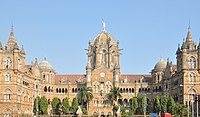
There are different types of railway stations in India, from a large station where you can find trains from all major cities, to a single platform by a rail track where even local trains don't stop at all. Most major stations are in the centres of respective cities or villages, although some newer stations are built at the fringes of cities.
All railway stations in India are labelled in English and Hindi , the two official languages of the country. Most stations are also labelled in other languages, which are usually the local languages used around the area. For example, the stations in Bihar and Uttar Pradesh are labelled in English, Hindi and Urdu , while the stations in Tamil Nadu are labelled in English, Hindi and Tamil .
The announcements of trains are performed in the languages used in the stations, and depending on the station, the English announcements are performed initially or finally.
Fares [ edit ]
Log in to IRCTC for details of trains and fares. Alternatively (and especially if you do not have an account yet), you can find trains, fare details and ticket availability on the Indian Railways section on Fare Enquiry .
Despite the numerous types of trains and classes, the fare system is quite logical.
- Vande Bharat, Shatabdi, Rajdhani, Jan Shatabdi and Garib Rath Express trains have fixed point-to-point fares. The fare one-way may be slightly more or less than the reverse-fare, due to different catering charges.
There are basically five types of trains on the basis of fare:
- Passenger — slow trains that stop in all stations including very small stations.
- Fast Passenger — passenger trains that skip smaller stations and offer the same fare structure.
- Express and Mail — they stop only at major railway stations and charge higher than Passenger trains.
- Superfast Express — they skip some of the major stations and charge even higher than Express and Mail trains.
- Rajdhani, Shatabdi and Vande Bharat Express — they are elite trains that offer only air-conditioned coaches. They stop only at selected stations. The fare is quite high because all food is included.
Schedules [ edit ]
Before booking a ticket, do visit the Indian Railways website on Fare Enquiry for information including finding a train, fare and ticket availability.
You can also get the whole schedule online of a train here . A list of trains operating between two stations can be found here after clicking the Trains B/w Stations option at the top right.
Alternatively, you can get a copy of Trains At A Glance , the national rail timetable, from any railway station. This is updated every July and remains valid until the end of the next June. It allows you to choose the best train for your needs, and find the name and number of the train for your destination. However, this is a general guide and does not contain a detailed list of all stations, neither does it contain every train on a route. A more specific guide depending on the "rail zone" is available at important stations on that zone. For example, a detailed guide on trains plying in Western India (i.e. the Western Zonal Timetable) will be available at all major railway stations in Western India.
This private webpages like India Rail Info , Confirmtkt Trainman etc. also lets you search for trains, fares and ticket availability and route maps (no account necessary). Only use this site for your information, but always book online tickets, etc. via the official webpage (IRCTC) as stated under Ticketing .
Ticketing [ edit ]

Tickets can be purchased online or from counters at railway stations. If bought online, the ticket can be printed instantly or mailed to you. Availability of tickets depend on when you travel, how early you book and which class you want to travel in. On busy routes and dates you may end up on a waiting list and will get on the train only if there are cancellations, or you may have to travel in a rather uncomfortable general compartment.
It is necessary to reserve tickets in advance in order to travel by any of the classes listed above (except UR/GEN ). Tickets can be booked in two ways, e-ticketing and counter booking.
E-ticketing [ edit ]
An e-ticket (short for electronic ticket ) is a ticket that is booked online and printed instantly. Valid proof of identity (voter ID card/PAN card/Aadhaar card/passport/driving license) of any of the passengers should be produced along with the ticket on the day of the journey. The procedure for booking an e-ticket is as follows:
- Log in to the IRCTC (Indian Railway Catering and Tourism Corporation) website. Additionally, there is an official app called IRCTC Rail Connect available in both the Google Play Store and the Apple app Store .
- Log in with your username and password. If it's the first time you're using the site, you need to sign up first, by providing your name, email id, residential address, mobile and occupation (note: they also take mobile numbers from outside India, but the mandatory verification, via a one-time password (OTP), of international numbers does not work reliably).
- In the left section "Plan my Journey", type the station names of the originating and destination stations and select the station codes from the autocomplete list that will appear. Select the date of the journey and press the submit button.
- The page will reload and show you the results. If no results are returned, try different station names (for example, from Agra City to Agra Cantt).
- Results will list available trains ordered by departure time. Ih the last part of each result, there are the classes (for example 1A, 2A, 3A, SL). Click the wished class and, on top, additional information will appear.
- The site will display information for that train, class and day, and will show other times available for that particular day and class for upcoming days. Search for AVAILABLE-XXXX. That means you can book it right now. Other words like WL-XX mean that you can join a waiting list. Click the 'Book now' link. (X refers to the number of seats)
- A Ticket Reservation form will open on the page. Fill in the details and preferences of all the passengers (a maximum of six in a single booking), check the appropriate address box and click on the Next button.
- A copy of your ticket with the details will appear on the screen. Click on the Make Payment button.
- A list of payment options will appear, including Unified Payment Interface (UPI). Choose your preferred payment option. If you are using a foreign credit or debit card, select the option "Payment Gateway / Credit Card" and then "International credit cards - Powered by Atom". Click the Make Payment option.
- The copy of your ticket with the details will reappear on the screen. You can carry the printed copy/SMS sent on your electronic copy on your tablet, mobile phone, laptop etc. as well as a valid proof of identity with you on the day of your journey.
- E-ticket is considered to be the fast, secure and best way to book tickets (especially Tatkal tickets).
Tickets for unreserved trains can be purchased from the Unreserved ticketing system or UTS app available in both Google Play Store and Apple app store .
Counter booking [ edit ]

Tickets are also sold at most railway stations and at Indian Railways' 1000-plus computerised passenger reservation centres located across the country. For reservation at a counter, you need to fill in a paper form and submit it to the clerk at the counter (occasionally, after a long wait in a queue) along with the payment in either cash or by credit card. Credit cards are accepted at most important stations. Counters in the metros and other important cities accept Visa, MasterCard, AmericanExpress and Diners Card, as well as cards of most Indian banks. There are generally 1 to 3 counters where credit card payment is allowed, depending on the station.
Booking tips [ edit ]
- Avoid travel agents, touts, or anyone else who offers to book your tickets for a fee. It is usually much easier and cheaper to do it yourself.
- If you are booking from abroad, the easiest is to use the online service and print e-tickets at home. E-tickets can also be sent by local courier to addresses in India (not abroad) and most hotels willingly accept delivery if notified in advance.
- Train tickets are in high demand, especially during the summer (April–June) and winter (December–January) breaks. This means that without careful planning, it may be next to impossible to get tickets for long distance travel (for example from New Delhi to Mumbai). You can book up to 120 days in advance, but during the busy season, the tickets may get sold out quickly. So, plan your journey well in advance.
- Foreign nationals can get tickets from a quota reserved for them. In big cities, you have a specific counter or even a special office for them.
- If you plan to travel in 1A or EC , tickets should be easier to get - they are generally in less demand. However, in view of the increasing tourist population, even those seats are hard to get unless booked at least 5 days in advance.
- If the Indian Railways website seems too daunting, consider using Cleartrip or MakeMyTrip: Both offer comfortable booking for a small fee and will keep you updated on your waitlist status. However, these pages require IRCTC accounts.
- 12Go Asia offers a ticketing service for Indian trains that comes without the need of creating an IRCTC account. However, the service does not cover all the routes in India.
Non-confirmed accommodation [ edit ]
If you do not get a Confirmed (CNF) ticket, you may get one that is Waitlisted (WL) or in the Reservation Against Cancellation (RAC) status. If you've booked your ticket in advance, it will probably move from WL to RAC status or even to CNF status as time goes by (because of cancellations), so it is a good idea to check it periodically and keep your plans dynamic. Use the 10-digit Passenger Name Record (PNR) number, printed on the top right-hand corner of your ticket, to check the status of your ticket at any point of time। PNR is a record in the database of Indian Railways computer reservation system (IR-CRS) which saves the journey details for a passenger or the group of passengers. The number will read like WL32/WL14 or similar, with the structure being WL (original position)/WL (current position). There are many different ways to check your PNR status among which popular ones are listed below:
- Through websites. Indian Railways is the official portal to check the PNR status online.
- Dialling 139 .
- Through mobile application.
- Reservation status checks using SMS service.
- Railway enquiry or sahyog counters in your nearest railway stations.
- After final chart preparation.
You cannot get on to a reserved compartment if your ticket is waitlisted (you can only enter a General Compartment if available). Waitlisted caught entering the train are treated as non-ticket holders and fined. But if you have an RAC ticket, you are allotted 'sitting' berths i.e. in a Sleeper Coach, you and a fellow RAC ticket-holder share a berth so that both of you can travel sitting instead of sleeping. The Ticket Examiner then allots you a CNF sleeping berth as and when one is available due to last minute cancellations, no-shows etc. Depending on the train, the route and the season you are travelling in, the RAC ticket may get upgraded to CNF either as soon as the journey begins, mid-way through the journey or not at all. If you do not move up past a wait list (WL) ticket before the train leaves, you can apply for a refund, but only up to a maximum of a few hours after the train leaves (3 hours for short journeys, up to 12 hours for long journeys). If you bought your ticket online, a WL tickets receive an automatic refund.
Final berth listing will not be completed until at 4-hours prior to departure. Once the checked list is posted, often final cancellations and government official reservations are re-positioned which allow WL and RAC to move up in the queue. It is also possible that the list moves downward as officials are granted priority seating, and later confirmed seats become non-confirmed. Booking non-confirmed is really a gamble, but more often than not the seat will become available, especially if your earlier in the queue.
If you arrive at the station while still waitlisted, wait until the train arrives. A reservation list will be posted at the beginning of each class or tier. Locate your name according to reservation number. If your name is not listed, your ticket remains non-confirmed.
Tatkal quota [ edit ]
All reserved trains keep a small quota of seats known as Tatkal ( Hindi pronunciation: tuht-kahl, meaning 'immediate', abbreviated as TK ) for sale one day before the departure date. There is an extra charge for these seats. This option is also available at the time of booking online. Even with this extra quota (about 4% of the seats on a train) it can sometimes be difficult to get the train you want when you want it. If you cancel a Tatkal ticket, you won't get any refund. Only four tickets can be booked at time. ID proof is must for Tatkal ticket booking.
Foreign tourist quota [ edit ]
Many important trains also have a foreign tourist quota (abbreviated as FT ) available for foreigners. This is a small number of seats reserved, on some trains, specifically for people traveling to India on a tourist visa. The price is the same, but if the train is full, there's a chance that there will still be FTQ tickets available, and vice versa. There are very few seats available for this quota, so it is best to try for a seat at least 2 or 3 days in advance.
Payment must be in foreign currency, usually US dollars ($) or British pounds (£), or in Indian rupees (₹) backed with adequate proof of foreign exchange conversion (an ATM receipt is usually acceptable). A passport may also be required. Tickets on the foreign tourist quota cannot be booked online.
Intracity transport [ edit ]
The larger cities in India are generally served by more than one railway station. Most trains might halt at only one station, while others may stop at two to three.
Suburban railway [ edit ]

Suburban railways, often known as "local trains", are often crowded but are generally the fastest and cheapest way to get around cities which have them. They use the existing broad-gauge network and usually get less importance than express trains. Those who are not accustomed to it are advised not to travel in those trains as it might be quite troublesome for them to alight from the train at the correct station after pushing through a large crowd of other commuters. IR runs suburban trains in Chennai , Delhi , Hyderabad , Kolkata , Mumbai and Pune .
Metros and monorails [ edit ]
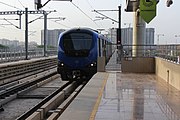
Major metropolitan cities in India have rapid transit systems, which are popularly known as "metros" in India. They have their own railway lines separate from the broad-gauge network. As of 2023, Ahmedabad , Bangalore , Chennai , Delhi , Gurgaon , Hyderabad , Jaipur , Kanpur , Kochi , Kolkata , Lucknow , Mumbai , Nagpur , Noida and Pune are served by metro systems. Except Kolkata, all other metros are not operated by IR. Delhi Metro is the largest metro system which connects to a few other cities nearby.
Mumbai is also served by a 20-km monorail line and it is the only city in India with a monorail system. Although other Indian cities had planned monorail projects, most of them were converted to other transport projects as the Mumbai Monorail has faced multiple issues.
Rapid rail [ edit ]

Semi-high-speed regional trains, popularly known as "rapid rail", operate between a large urban area and a nearby smaller city. Like metros, they also have their own railway lines separate from the broad-gauge network. As of 2024, the Sahibabad–Duhai stretch of the Delhi – Meerut rapid rail is operational, and the trains used on that line are called Namo Bharat.
Trams [ edit ]
Tram systems in India were built by the British in Bombay (Mumbai), Calcutta (Kolkata), Cawnpore (Kanpur) and Madras (Chennai). As of 2023, only the Kolkata trams remain and all other cities have phased out trams. Although appreciated for being emissions-free, they are not very popular due to their slow speeds.
Eat and drink [ edit ]

Eating and sleeping much depend on the type and class of the train. Cuisine in India is very diverse, and as food is usually prepared on stations the train stops at and served on board, you'll have a chance to experience the local cuisine when you travel! In the lower classes such as Sleeper Class there are often also hawkers selling food.
Hot food is available at mealtimes on almost every train in India. The food is mostly prepared in kitchens at railway stations and then loaded onto the train, either onto a pantry coach attached to the train (on most important trains), or just brought on board by waiters and distributed directly to passengers. In some trains food is cooked in the pantry coach of the train. In most cases, a waiter collects orders an hour or two before mealtimes and if you don't place an order, you may be left out in the cold, or if you are lucky, you can get some food at many railway junctions. However, in trains having a pantry car, breakfast is prepared on board the train and you do not have to place an order beforehand. You can tell which trains have a pantry car because there is a P listed with the classes available in Trains at a Glance . Meals available for lunch and dinner are generally vegetarian and non-vegetarian thalis (rice, dal, a vegetable (chicken or fish curries for non-veg thalis), yoghurt (often sour), chapattis and occasionally, a sweet dish) or (veg/egg/chicken) biryani. Chilli chicken (sweet and sour chicken wings with chillis) is often available. Breakfast normally consists of vegetable cutlet and bread, or omelette and bread. Pantry car service always includes the sale of tea, coffee, cold drinks and "namkeen" (chips and other salty snacks). Note that while pantry cars mostly re-distribute food, they do have a small kitchen and, if you're sick of the dal/chapatti that shows up in the thali, it doesn't hurt to visit the pantry car and see if they can rustle up an omlet or some fresh chicken curry with parathas. The quality of food varies, with the fare being better in the South, North and West. The concept of hygiene, taste, and cuisine changes from region to region.
Most pantry cars and restaurants at stations are now managed by Indian Railway Catering and Tourism Corporation (IRCTC) [dead link] . IRCTC provides satisfactory quality and hygienic food aboard trains and at stations. IRCTC kiosks are ubiquitous where one can find snacks, breakfast, packed foods, biscuits, cookies, mineral water etc. At major stations, IRCTC has licensed Comesum to open fine-dine restaurants. There are also Jan Aahaar outlet at many junctions which provide tasty and healthy food at affordable prices.
On Rajdhanis, Vande Bharats, Shatabdis and Durontos, all meals are included in the fare and are served at your seat at mealtimes.
If you are finicky, bring enough food and bottled water for the journey including delays: bananas, bread and chocolate bars are good basics to have. Most important stations will have vendors selling all kinds of edible stuff, but the usual caveats about eating in India apply. Often, snacks and food reflect local specialities.
Sleep [ edit ]
In the train [ edit ].
Some places in the compartment are better than others for sleeping. In addition, the cheaper trains, often rather crammed, without air conditioning and stopping at every station may not offer an optimal environment for a good night's sleep. If you will stop for the night at a railway station you may not need to worry about finding a hotel room as many stations offer accommodation in retiring rooms.
The top ( UB ) and side upper ( SU ) bunks are best if you are the sort who likes to sleep early or late. The middle ( MB ) and bottom ( LB ) bunks are converted into seating area, so you will be forced to stay awake if everyone else in your compartment wants to stay up. Side lower ( SL ) and upper ( SU ) bunks are a great idea if you want a window seat, but they are a bit smaller than the other bunks, so don't choose them if you are a tall person. Note that 1A and FC classes do not have MB , SL or SU bunks, while 2A does not have MB bunk.
In stations [ edit ]

IR operates two hotels in Delhi and Howrah . Passengers can book independent rooms or dormitories on production of tickets. Known as the Rail Yatri Niwas , the facilities are very basic and the rooms are quite shabby. There is a self-service restaurant.
There are also two Railway Hotels in Puri , Odisha and Ranchi , Jharkhand , which offer far better service than the ones in Delhi and Howrah.
Retiring rooms are available at most major railway stations across the country. They offer basic facilities including a bed, mattress, blankets, drinking water, closet, toilet (and in the case of air-conditioned rooms) a television. One has to produce a reserved journey ticket in order to be able to book retiring rooms.
Dormitories , both air-conditioned and non-air-conditioned, are available at almost all railway stations in India.
- 28.642314 77.220004 1 Rail Yatri Niwas , New Delhi railway station ( Metro: New Delhi 2 ), ☏ +91 11 2323-3484 . Dorm ₹145/bed, Single Non-AC ₹265, Double Non-AC ₹385/₹450, Double AC ₹850 . ( updated Sep 2022 )
- 22.58205 88.34245 2 Sampath Rail Yatri Niwas , New Complex, Howrah Junction railway station , ☏ +91 33 2660-1742 . Contains dormitory, single room, and double room accommodation. First-class passengers can wait in an air-conditioned area with balcony views of the Kolkata skyline and the Howrah Bridge. Dorm ₹100/bed, Double Non-AC ₹350, Double AC ₹550, Triple Non-AC ₹400 . ( updated Oct 2022 )
- 19.807743 85.838029 3 Railway Hotel , Puri railway station , ☏ +91 6752 222-063 , fax : +91 6752 223-005 . Single ₹400/₹600, Double Non-A/C ₹/750/₹1000/₹1200, Double A/C ₹900/₹1500, Triple Non-A/C ₹850/₹1700 . ( updated Sep 2022 )
Stay safe [ edit ]
- Always watch your bags , especially in and around train stations. Once on a train, chain and lock your bags to the hooks provided under the lowest bunk, or keep them at your head. Make sure to also lock any exterior pockets (keep your toilet paper, and anything else you'll want on the outside). You can buy chains from chain-and-lock sellers who walk around train stations and trains.
- Do not take food or drink from any unknown passenger if they insist to do so. Politely decline their offer. There is a small chance the food or drink may be drugged so they can steal your belongings.
- It is also common among Indian travellers to board on and alight from moving trains. Such moves are obviously risky and travellers should wait until the train has stopped.
- India has two separate police forces for railway policing, namely the Railway Protection Force ( RPF ) and the Government Railway Police ( GRP ). Crimes that occur on trains and at railway stations should be reported to the GRP, as the RPF has no investigation power.
Connect [ edit ]
Cope [ edit ].

- Smoking and consumption of alcohol on all trains and at all railway stations is prohibited. There is a steep fine for violation of these rules.
- Bigger Indian train stations offer a standard set of facilities including cloak rooms to leave your luggage (slow and bureaucratic but cheap and reasonably safe; you must lock your own bag and show a ticket), First class waiting rooms (no touts or beggars), a computerised reservation office for advance bookings and a booking office for unreserved/same-day tickets. Restaurant facilities vary widely.
- Several railway stations also have touchscreen kiosks which help you track your train (real-time running information) and also provide a host of other details regarding bookings, schedules etc.
- All railway stations in India have signs in English mentioning the station name and details of facilities at the station. If you are still in doubt, asking around might be a bit of a problem because of the language barrier. In such circumstances, and in case of an emergency of any sort, contact the station master or the station superintendent for assistance. All station masters and superintendents speak English and will help you out.
- Don't just look at a map and assume a short trip, it's best to check Trains at a Glance before making your plans.
- Restrooms on Indian trains are usually of the squat variety (most carriages have two squat-type and two sit-down type toilets), and are serviceable at best. The cleanliness tends to deteriorate over the duration of a journey, and the toilets may even be broken, but on longer trips toilets are cleaned at intermediate stations. Washbasins are provided both inside and outside the toilets. Shower cubicles are available only on AC First carriages in Rajdhani Express trains.
- Enjoy the train, and speak to your fellow passenger. You may meet fascinating, wonderful people.
- In all the states, all the non-AC coaches (especially second class/general compartments) can be over-crowded because of local ticket-less passengers. At the time you may not find an authority to complain. So, better to adjust in the situation and try not to argue and complain. AC coaches are fairly safe from this problem.
- In all reserved classes, every passenger needs to carry a form of ID , though whether your ID will actually be checked depends on the serving Traveling Ticket Examiner (TTE).
- Previous Featured travel topics
- Has custom banner
- Articles with dead external links
- Has mapframe
- Maps with non-default size
- Has map markers
- Rail travel
- Topics in India
- Topic articles
- Guide topics
- Guide articles
- Pages with maps
Navigation menu
Complete tourist guide to Indian Trains you should read
Last Updated on August 26, 2022 by
Did you know that with more than 8,000 stations across the country and about 121,000 km of rail routes the Indian Rail Network is the fourth extensive rail system in the world? It’s not your fault if after opening the Indian Railways page for the first time, you had a terrible headache and preferred to opt for a bumpy car ride on one of the Indian dusty roads. This guide will help you to understand the Indian railways step by step! Let’s start!
Table of Contents
Indian railways step by step
Like everything in India, also the Railways website is messy, overwritten and with scammer bans behind the corner. Last year, I was exactly in your position and when I was planning my trip from New Delhi to Agra I had in front of me two choices: booking a ride with a private taxi costing no less than £60-80 for two people or learning how to book a, way much cheaper, train ticket from abroad. Once you get how the system works, it is not difficult, but it definitely try your patience.
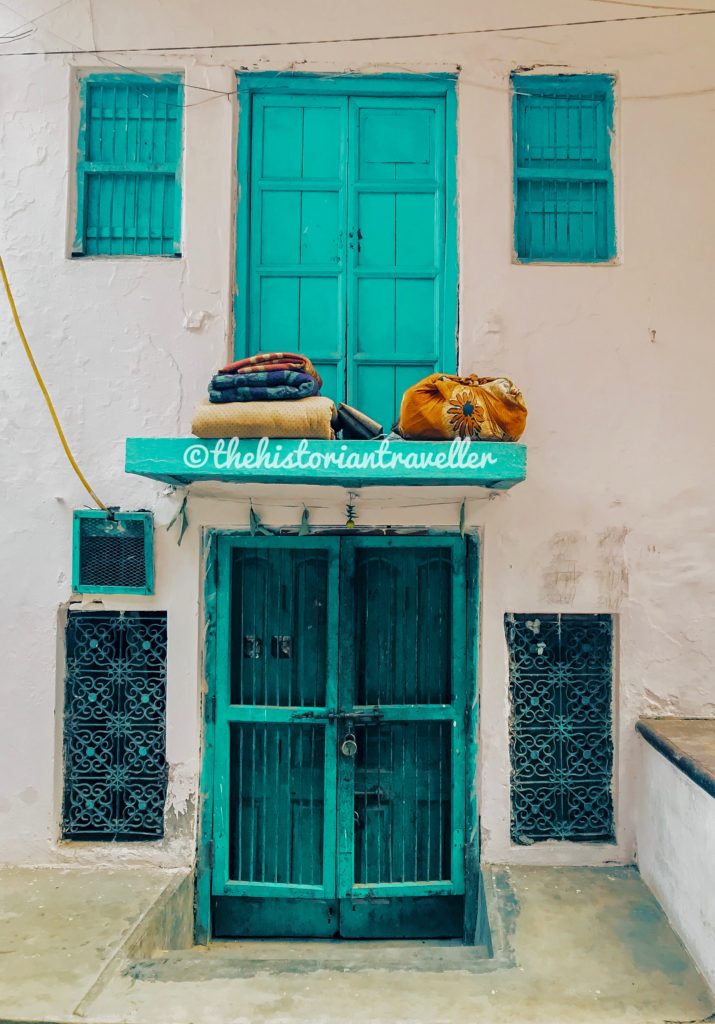
Why I have to travel by train in India?
Lonely Planet states that ” Travelling on an Indian train is a reason to travel all by itself “. This cannot be truer because travelling by train in India can be considered an essential way of experiencing Indian culture. Millions of Indians travel by train every day. In fact, the railway system covers almost the whole country and despite chaotic, it is more reliable than what it appears from a distorted western perspective. There are two basic misconceptions about travel in India by train. The first is that all Indian looks like the one in the photo below…
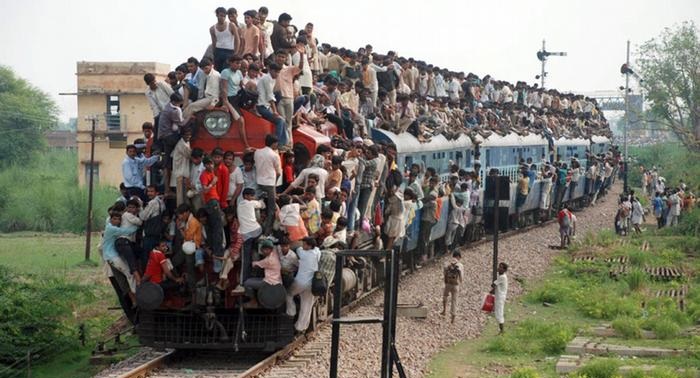
I still have friends who are convinced I was actually travelling sat on the roof of an Indian train. They simply can’t believe that I never seen anything like this in India, even in the smallest place I visited. The second misconception is that trains in India are unsafe because of Indian people travelling with you.
Reasons why to travel by train in India
FALSE! Indian trains are generally safe, most of the people travelling with you are trying to go to work/reach their families, and their intention is not to harm tourists in any way. It’s true also that if you are travelling in the lower classes (especially at night), I would not recommend leaving your luggage alone (but I would not leave my luggage alone in any other train in the world). Keeping in mind this, there are definitively more advantages than disadvantages in travelling by train.
It’s safe, cheap and relaxing
Firstly, because it’s cheaper than going with a taxi. A first class ticket from Delhi to Agra will not cost you more than £20. A reliable pre-paid cab will cost you £60-80. There are other much cheaper cabs to hire locally, but their reliability is not granted and if you are a first time visitor, I would not recommend them. Secondly, it’s FASTER! A journey by car that would take 4/5 hours may take 2 travelling by train! This will reduce greatly your travelling time and allows you more hours to spend in sightseeing! Third, it’s way more relaxing than travelling by car. India is chaotic and the continuous horning of every single vehicle on the road it’s much more than a necessity for Indian people, it’s a cultural life-style. If for locals and well-travelled tourist, this is OK.
Most of people visiting for the first time India find it unbearable. Imagine travelling by car for 6/7 hours accompanied by that continuous horning! And believe me, this doesn’t stop even in the motorway. Train travelling can give you a little bit of a rest far from the overwhelming Indian chaos and you will be grateful for that after a long journey. Lastly, it’s SAFER! The Indian road safety report of 2018 states than more than ONE MILLION people were killed in car accidents last year.
To be honest, after having seen people driving in the wrong direction in the Indian motorway and seen my driver watching a TV series while driving me and Alessio from Mumbai to Pune, this is not a surprise. In my twenty days in India, I’ve been involved in one minor crash in Jaipur and it was totally fault of my driver. Don’t get me wrong, it’s ok to travel by taxi for short distances but if you have to move between distant cities, train travelling is the safest way. In the end, is better safe than sorry!
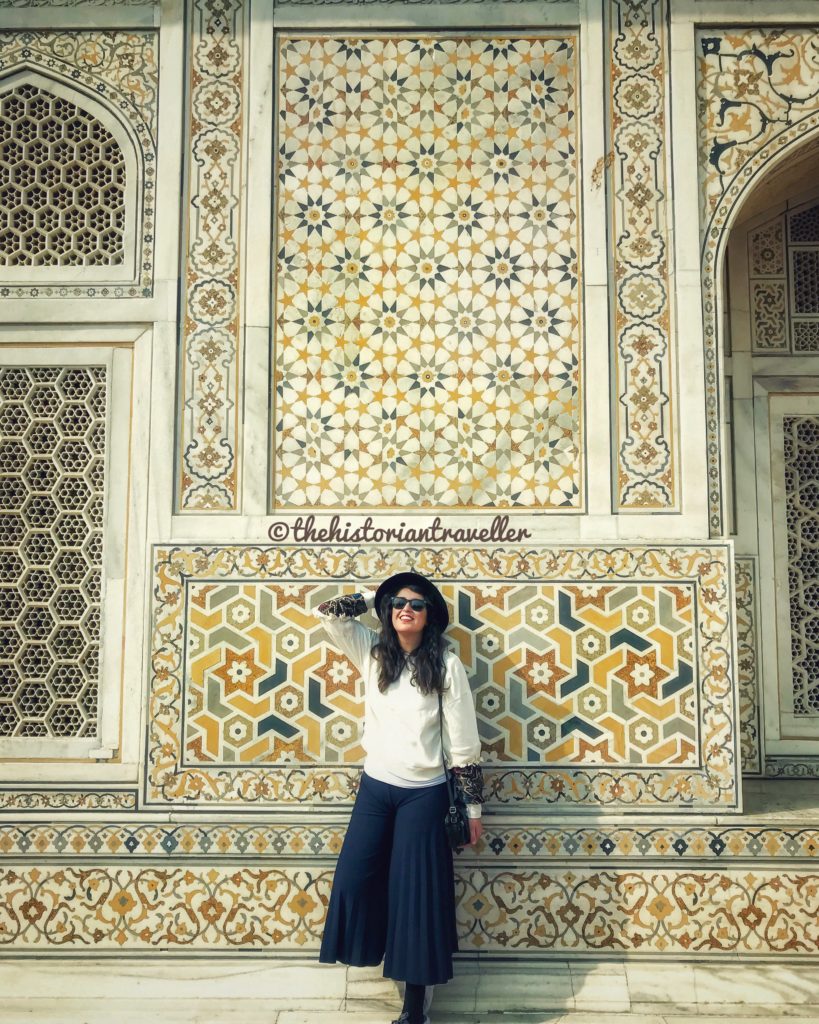
Train classes and type of trains
Train classes in India are much more complex than westerners train ones, which generally distinguish between first and economy class. In fact, there are 8 classes on Indian trains of which price is accorded to the quality of the service you will receive on board and the type of coach/seat you choose. When booking your class, this will appear with the two/three acronyms and numbers e.g. AC1/AC2 etc. To know the meaning of these acronyms, read below!
Train classes on Indian trains
- AC Executive chair class (EC) This type of class is not present on every train but you can find it on high speed trains like the Shatabdi Express. Executives and tourists commonly use this. For this reason, booking in advance is very recommended. Food served on board of the train is included in the price and you have the possibility to choose between meat and vegetarian dishes.
- AC Chair class (CC) Similar to the AC EC, the AC CC class can be found in high-speed trains and has comfortable seats in a air conditioned coach. However, food is not included.
- FC First Class First Class no longer exists in Indian trains, replaced mostly by AC1 coaches. However, if you find the abbreviation FC this means that you will get a first class ticket in a non-air-conditioned coach.
- Sleeper Class (SL ) Sleeper Class can be found in trains covering long distances. There is no air conditioning but ventilation is granted by fans and windows open. Mattress are quite rough so it is suggested to bring a sleeper bag.
- Air-conditioned first class (AC1 or 1A) This is usually found in trains covering long distances and used by Indian businessmen. It is considered a comfortable class for travelling and seats are organised in 2 and 4 berths and sleeper section.
- Air-conditioned 2-tier (AC2 or 2A) This class is a cheaper version of the AC1. It is still considered a comfortable way of travelling and used mostly by families. You can use berths also as sleeper bunks for longer distances. These are provided with curtains for having a bit of privacy. Two tier indicates the number of bunks for each section of the row.
- Air-conditioned 3-tier (AC3 or 3A) Is more crowded than AC2 because each bay has 3 tiers (up, lower and middle). Curtains are not provided to grant you privacy but tickets are cheaper.
- 2nd class seats (2S) Coaches are here divided in reserved and not reserved sections. These are generally more crowded than other classes is not recommended for longer journeys because seats are not padded and generally made of wood or plastic.
Type of Trains in India
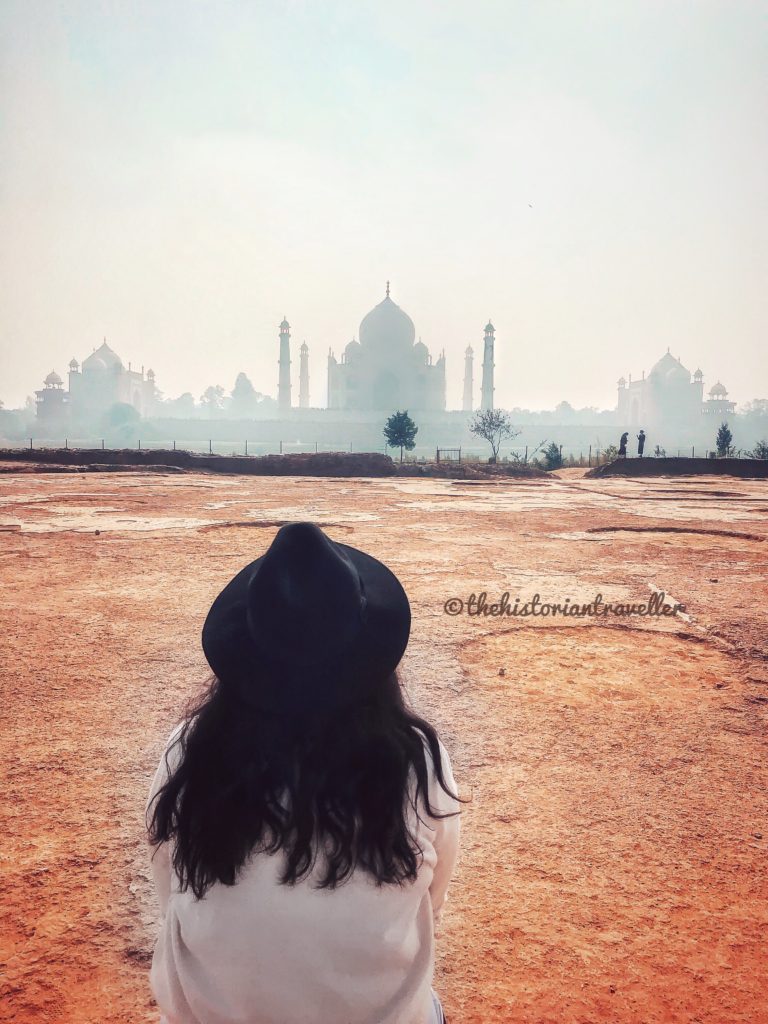
Because there are more than 20 different types of trains in India but it’s likely you wont use 90% of those, listed below you will find only the ones you are more likely to book during your journey to across India.
- Tejas Express It has been introduced just two years ago and it’s the most similar to our western trains you will find in India. It’s a semi high speed full AC train featuring braille displays, LED TV for each passenger with phone sockets, WiFi and food services. Tickets are about 30% more expensive than the Shatabati fares and at the moment the train covers only the following routes: – Mumbai CST – Karmali Tejas Express – New Delhi – Chandigarh Tejas Express
An extention of the route in Chennai and Lucknow is planned for the upcoming years.
- Shatabdi Express is one of the most famous train lines in India and it is usually make a day round trip. Tourists use mostly this route (and this is the one I used as well). This is the Bhopal Shatabdi Express (train number 12001/12002) going from New Delhi to Agra in just two hours. The train is quite fast (the second faster in India) and the first class is comfy and safe. Not comparable to our first classes but I would say a good economy on our trains.
- Rajdhani Express are those trains that connect the Indian main capital to the minor state capitals (E.g. Mumbai-New Delhi). They are air conditioned and considered the most fast trains in India.
- Duronto Express are a category of non-stop long distance trains connecting India’s major state capitals. They are very fast and stop only for technical checks. A most known one is the 12239/12240 Jaipur Duronto Express.
- Suburban rail and Metro connect cites central business districts to their suburbs. You can find these in major cities like New Delhi, Kolkata or Mumbai. They usually stop at every station, and have unreserved seating.
- Mountain railways if you are looking for more adventure and a breathtaking scenery, these trains are the most popular ones and considered a UNESCO World Heritage Site. Among the most popular ones there is the Darjeeling Himalayan Railway r unning between between Siliguri and Darjeeling at the highest elevation of 2,300 mt.
- Luxury trains t here is a variety of luxury trains in India designed exclusively for tourists. These follow itineraries of 7/10 days and include accommodation, tours, food and sometimes even a on board spa! They are usually quite expensive and price ranges from US$ 4,550 to US$ 6,930 for two people. The most known ones are Palace on Wheels, the Deccan Odissey and the Maharajas’ Express . I haven’t personally tried any of these luxury trains but would love to experience them once!
Finding the right timetable for your trip
Giving the high number of trains, the timetable may look quite confusing. A good system to find your train timetable and your platform at the station is to remember the name, number and route of the train. Example, if you are going to Mumbai you have to look for the number 12952 route NEW DELHI – MUMBAI CENTRAL and type of train Rajdhani Express. Online, you can check your timetable in these two different websites: Indian Rail, by searching your destination and date. This will show you different trains and times, to check yours you can search it by number or type of train. You will also have a preview of the classes that you can book on a later moment.
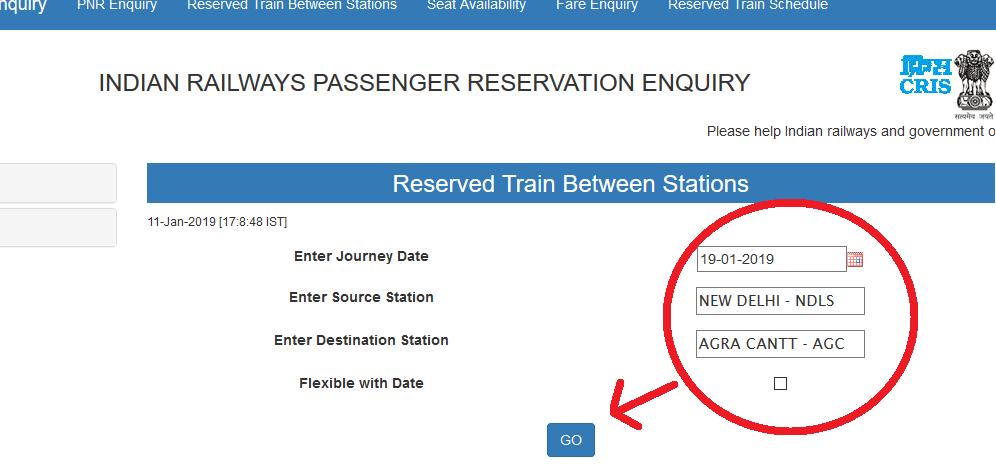
Maps of India provides a reliable train time table according to the type of train. If you click on the number of the train, this will show you all the stops the train will make with the expected time of arrival/departure till destination.
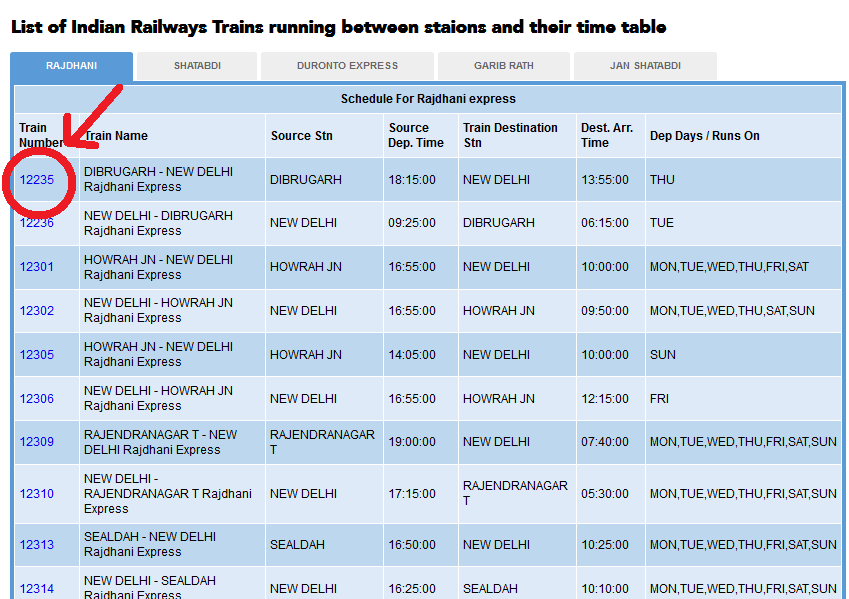
Where/when/how do I have to book my tickets?
Before proceeding to book your train tickets, let me explain you what different types of ticket you may find while booking. As for the train classes, also the ticket types are listed per acronyms.
Type of Tickets on Indian Trains
- CNF means “confirmed” this means that you made it and your seat has been reserved!
- RAC means “reservation against cancellation”. This type of ticket activates when all the reservable seats on the train are fully booked. The system will put you automatically in a Waiting List (WL) and you can still travel with that train but if you don’t get any reservation, you have to search for an unreserved seat. If someone cancels his booking you might be promoted to CNF and get a seat on a specific coach. If the waiting list is very long and you are not accommodated a place your ticket will be refunded.
- Tatkal (CK) means “Immediate” these are generally last-minute tickets for emergency departures. These tickets can’t be cancelled or refunded.
- Tourist Quota Tickets some trains (generally the most popular routes) reserve some tickets to tourists. They are usually sold very fast and it is advisable to book them well in advance. I personally used the tourist quota tickets and booked my train ride about three months in advance.
When to book a ticket for a train trip in India
Now that you know how distinguish the type of tickets, it’s time to book! If you follow these steps one by one you can make it! First one-million-dollars problem. When do I have to book my train tickets? During high season (Nov-Mar) tickets on EC and AC1 sell fast. If you want to travel on a reserved seat on one of those coaches, my advice is to book as soon as you know your itinerary. Otherwise you may be disappointed. Generally, you can book tickets up to 120 days in advance.
Where to book train tickets in India
Where do I have to book my tickets? Essentially, there are three ways to book your tickets. Via a travel agent (who will ask you for a commission), in person and online.
- In person. If you are on the go and want to buy a ticket directly at the station check www.indianrail.gov.in for a list of International Tourist Bureaux selling tickets to foreign visitors at the station. These are generally based in big cities like Agra, Delhi or Mumbai but there are possibly other offices around India. Be sure to get to the right office and don’t listen to anyone telling you it’s closed (they are scammers! we will talk about this below). At the counter they will ask for your Visa and Passport. Don’t forget to prepare them! Furthermore, you can only pay in cash! Some offices accept also foreign currencies like Sterling or Dollar but do research prior to bring other type of money.
- Online booking. You can book your tickets via three different websites. These are Indian Railways , Clear Trip and Make my Trip . I have personally booked my tickets via the Indian Railways website because Make my Trip was asking me an indian telephone number to confirm my booking and at the time I did not have it! In any case, to use Make my Trip you have to register your details with the IRCT (indian railways), and it is much more straightforward to book the tickets with them!
How to book India train tickets online
If you follow the steps below, booking your online train ticket with IRCT (Indian Railways) will be very easy!
First Step – Registration
Go to the IRCT webpage. This will look like the picture below. Before booking your tickets, you will need to register your details on the “Register” page. Here you will be asked many questions to confirm your identity.
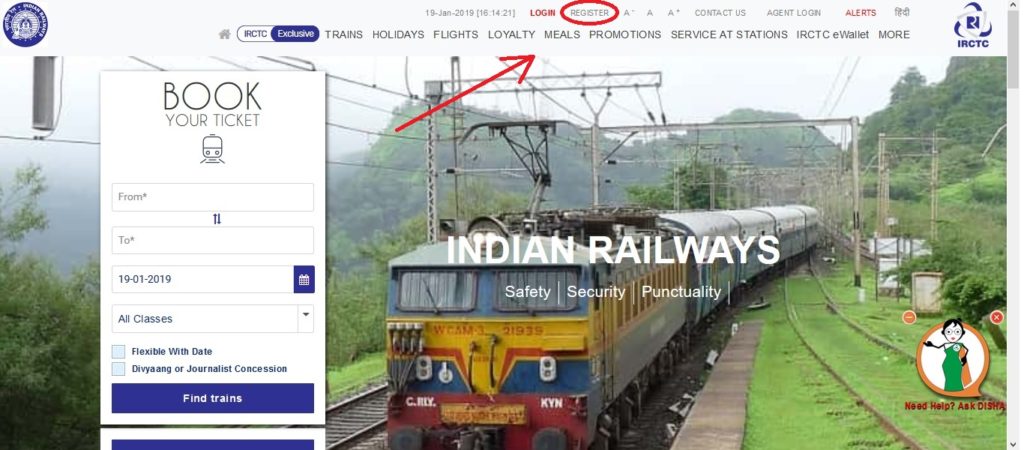
Be patient at this stage of registration. I had some troubles while registering my details and I had to fill the page at least three times but in the end, it did work! Once you completed your registration, you will receive an email with your login details like the one below. This will tell you to login and inform you that for international users there is a registration fee to pay that will confirm your email and mobile number.
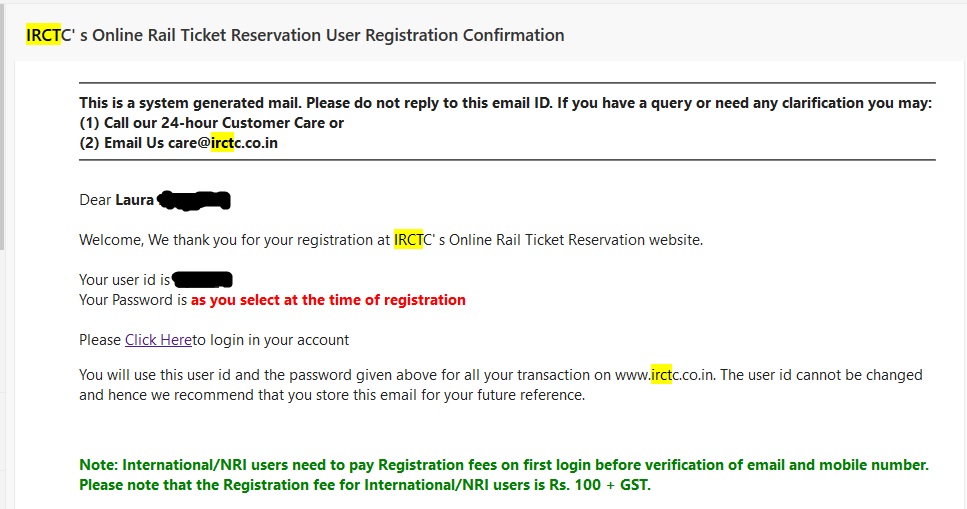
Second step – Verify your number and email.
Login with your details via the email you received. The website will ask you now to verify your mobile phone and email. The verification of your mobile phone comes via the OTP (One time password) and the payment of a small fee ( Rs. 100 + GST. / £1,50 circa). You will receive the OTP via sms on the phone and have to insert a 6 digit number in the space suggested on the IRCT page.

Once you have done with the mobile phone and the fee payment, the website will ask you to verify your email with the same method. You will receive an OTP password in your email and you have to insert the six-digit number in the space provided.
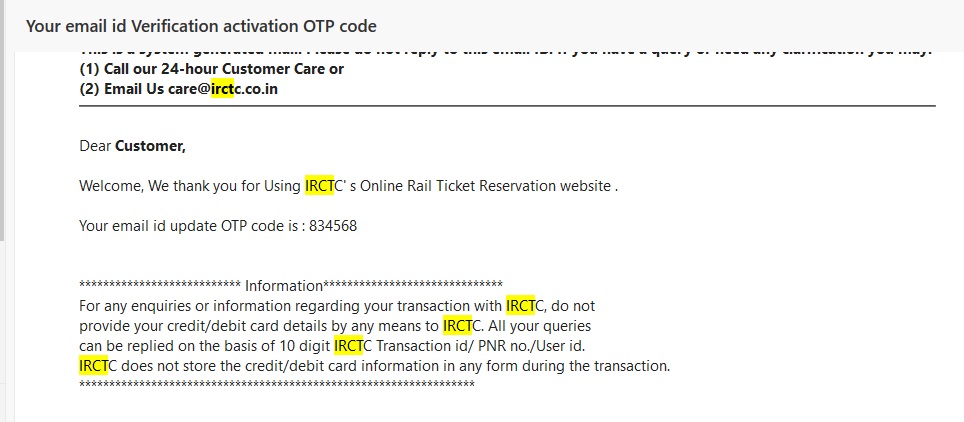
Once you insert your OTP on the box you’re done! Congratulation, you are now fully registered on the Indian Railway system and able to book your tickets online! Eureka!
Third step – Book your tickets
Now that you have everything all set up, it’s time to book your journey! First, you have to login into your account. The system is a bit annoying because every time you login it asks you for a OTP or a screen temporary password. Don’t get mad if you can’t login the first time, it’s the system not you!
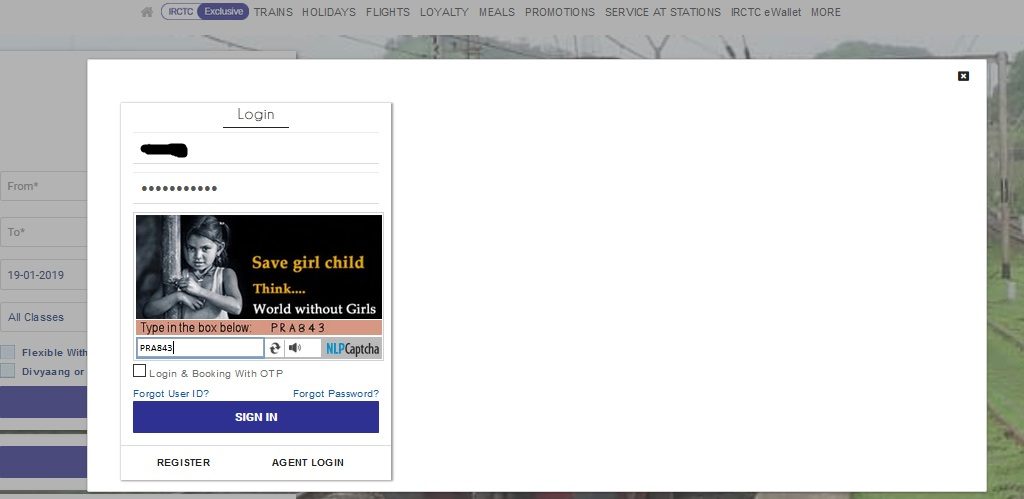
Once you have completed your login, you will see again the initial screen that needs to be filled with your travel request. Search for your destination and date (you can eventually choose your class if you already know it, otherwise you can choose it later). As example for you, I choose a hypothetical New Delhi-Agra trip (which I actually tried by the way!). Once you choose your destination, you will see the screen (pictured below) giving you the following main information: type of class and train you can choose to display on your selection (black box), type of train you can book (red box) and what class is available (yellow box), duration of the journey (blue circle) and type of travel with departure and arrival time (e.g. morning train 6.10-8.10 as shown on grey box).
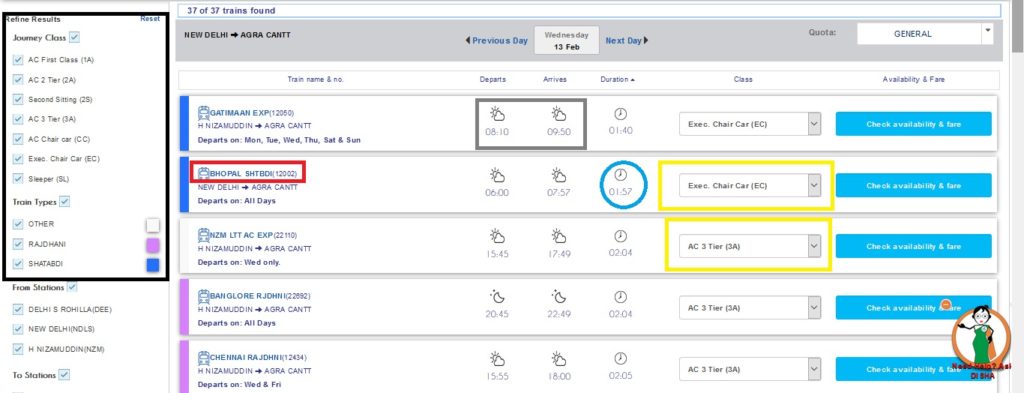
If you want to check the price of your train, click the blue box on the right and you will see more details about the train selected. Don’t panic when you see what looks like a huge amount of rupees for a ticket. This price converted into your local currency is actually very cheap. For example, 1,000 Rs. are about £11/15$.

If you are happy with the price, class and train for your destination you can proceed to the booking by clicking the box “book now” on the available time and date. This will lead you to the main booking page consisting of three main steps. On the first one, you have to insert your (and all your companions) ID details and choose what type of dish you prefer (if this is included in your ticket). If you are not Indian, you must provide your passport number. On the right of your screen you will continue to see the main details of your train ride.
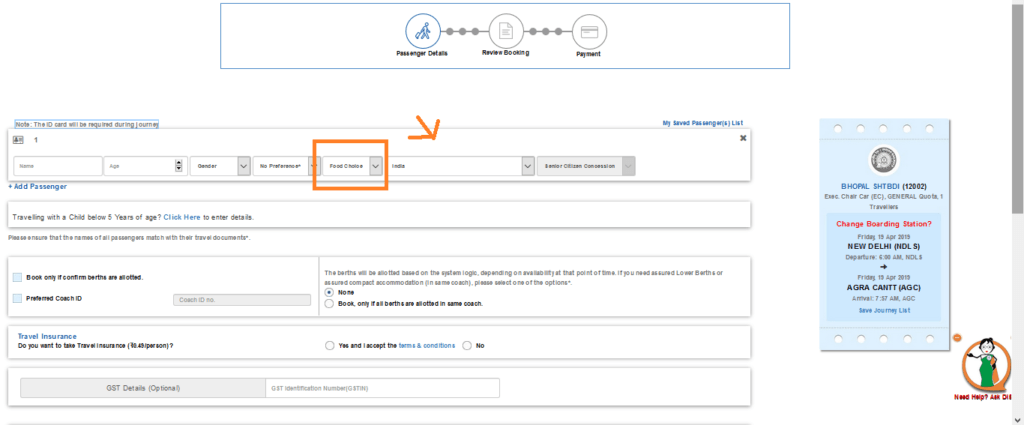
Once you have inserted all your details you will be directed to the second step, which is checking that everything you inserted is correct. At this stage of the booking, you can still amend your information if you made any mistake.
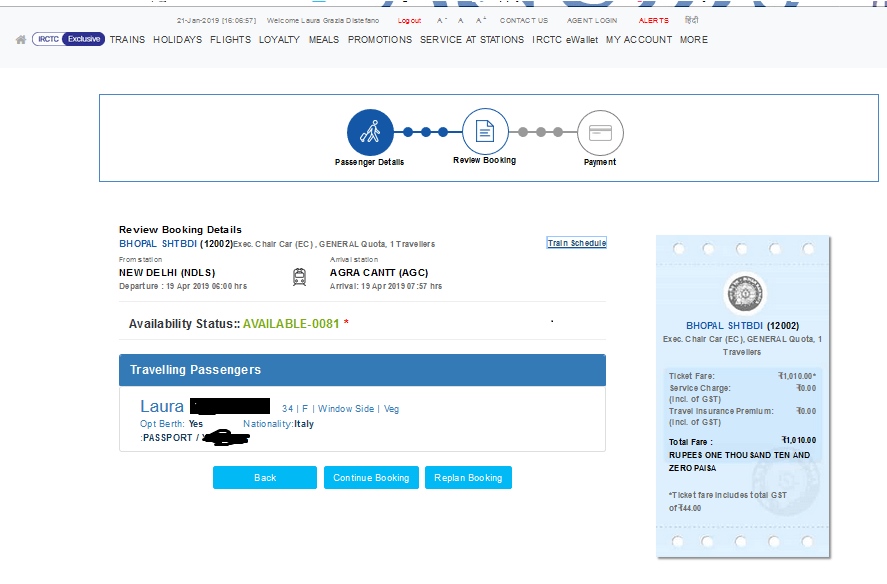
Fourth step – Payment
If you are happy with your selection and details, you can proceed to the last step, which is payment! On the payment page, you will find many options that might create confusion if you are a tourist because the payment page is not properly tourist-friendly. Indeed, the Indian Railways accept different methods of payment but the only one YOU can use as a tourist is the one under the category “international cards” this option is hidden under the voice MULTIPLE PAYMENT SERVICE . Ignore all the other options because in the end they accept only Indian debit/credit cards. So, click “multiple payment service” and then INTERNATIONAL CARDS (powered by Atom).
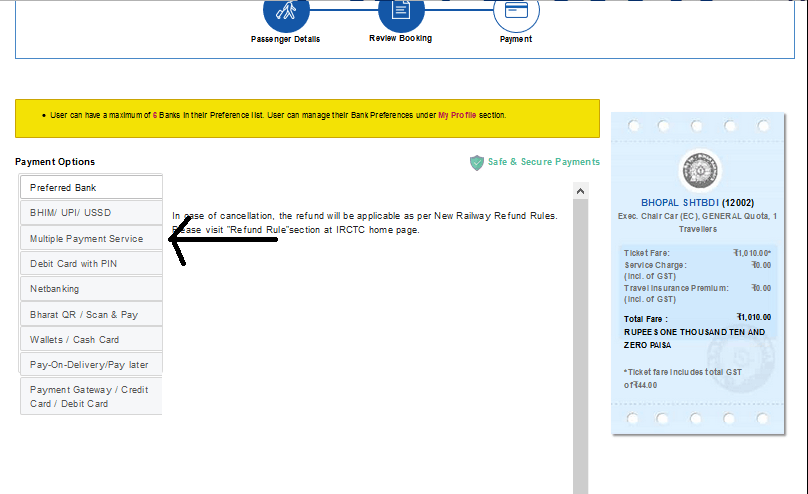
I haven’t tried the other five options in addition to International cards, so I can’t guarantee they work well. Once you will click the Int. card option you will be directed in the actual payment page where you have to insert your credit card details. You can choose to pay in rupees or in your own currency (this option depends on the card you are using) and the process is quick and simple!
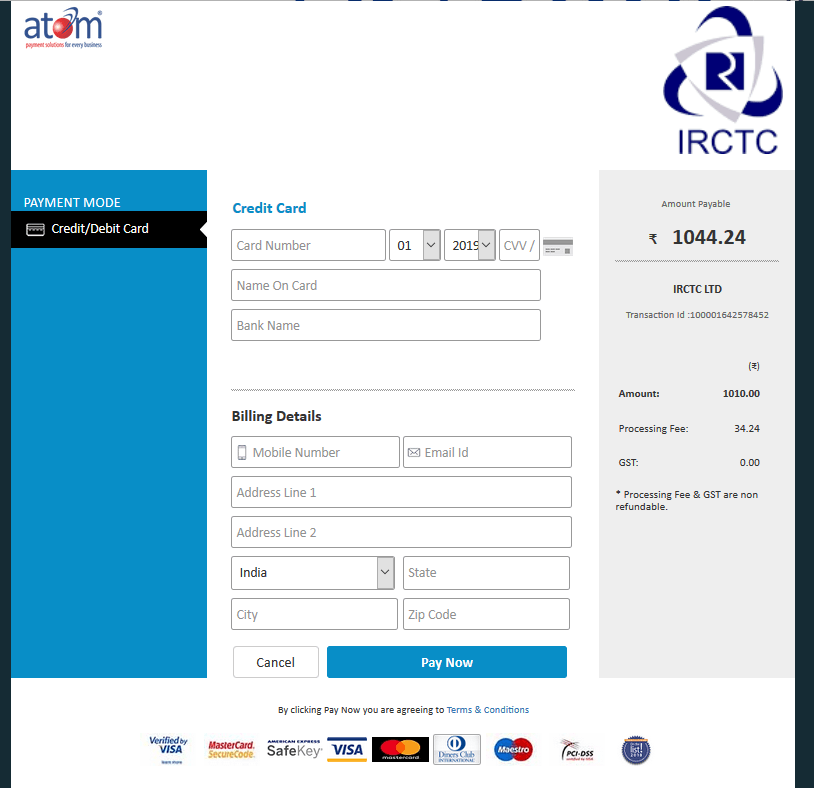
Congratulation!!! You’ve made it!! You are officially booked on an Indian train journey! At this point, check your email because you should have received your e-ticket that should look more or less like mine below! Don’t forget to print it out and keep it with you during your journey!
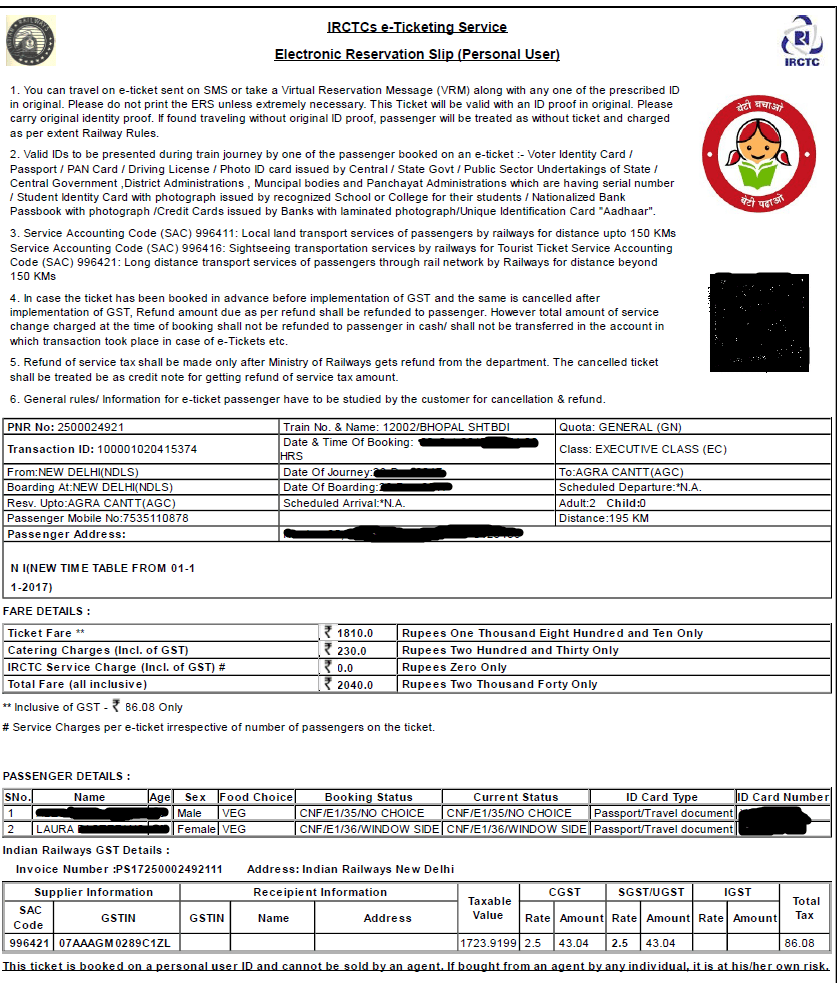
Fifth step – At the station, boarding the train
It’s time to depart! Check carefully all the information about your train on the ticket especially about your place/berth/coach. If you are travelling on a long-distance train, your name will be printed out on a list placed out at the train station ticket office (2h before) and on the outside of the train before departure. Here you will find the confirmation of your name and coach (eg. Name- AC1 coach 2 seat/berth etc.).
Actually, I discovered that this system is in use also on short-distance trains. In fact, on the morning of our departure, I found Alessio name and mine on the door of our coach. You must take your ticket and passport with you. A few minutes after departure, an inspector will check that all the details on your passport correspond to his own list (similar to the one published outside the train). Now you can relax and enjoy your journey!
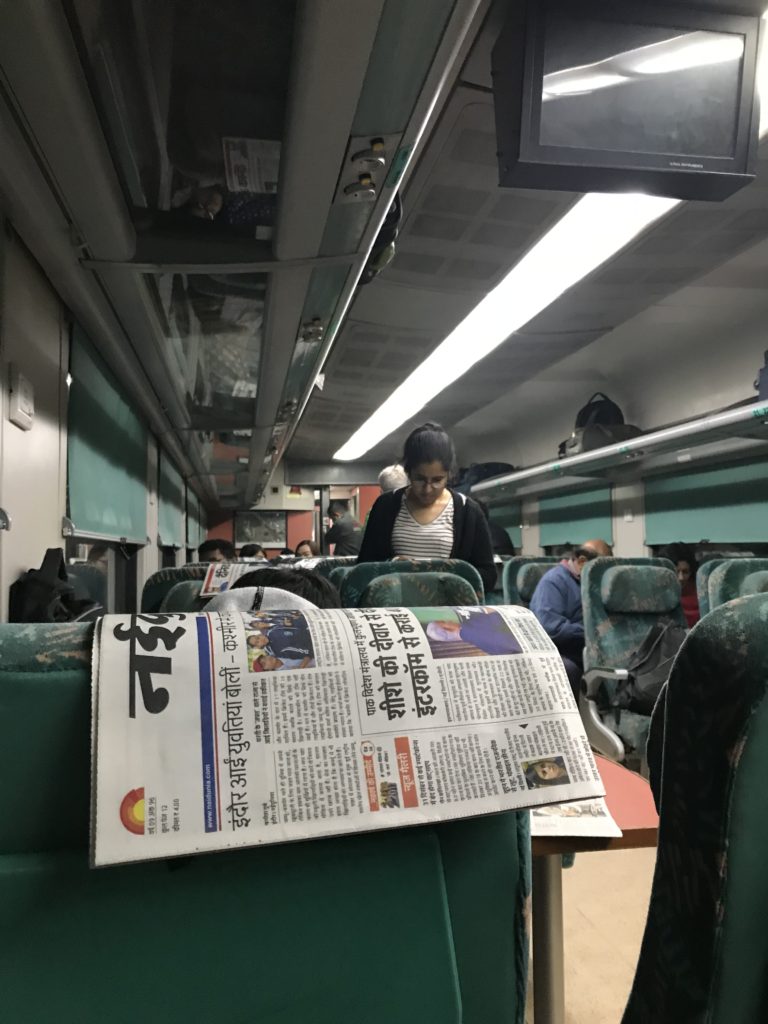
I have to say I was quite satisfied with our train experience in India. The train was clean and in good conditions. We booked on the Executive class, which more or less is like our second class but with a much nicer service! Immediately after boarding we were provided with two bottles of water of 1L each and just ten minutes after leaving we were already been served breakfast! This came in two parts. A first part with tea/coffee, biscuits, marmalade, milk, bread and even cereals! A second part (after about half an hour ride) with some traditional Indian dishes, juice and chapati! What a way to start the morning! Our trip was just a short 2h ride but I was very happy about it!
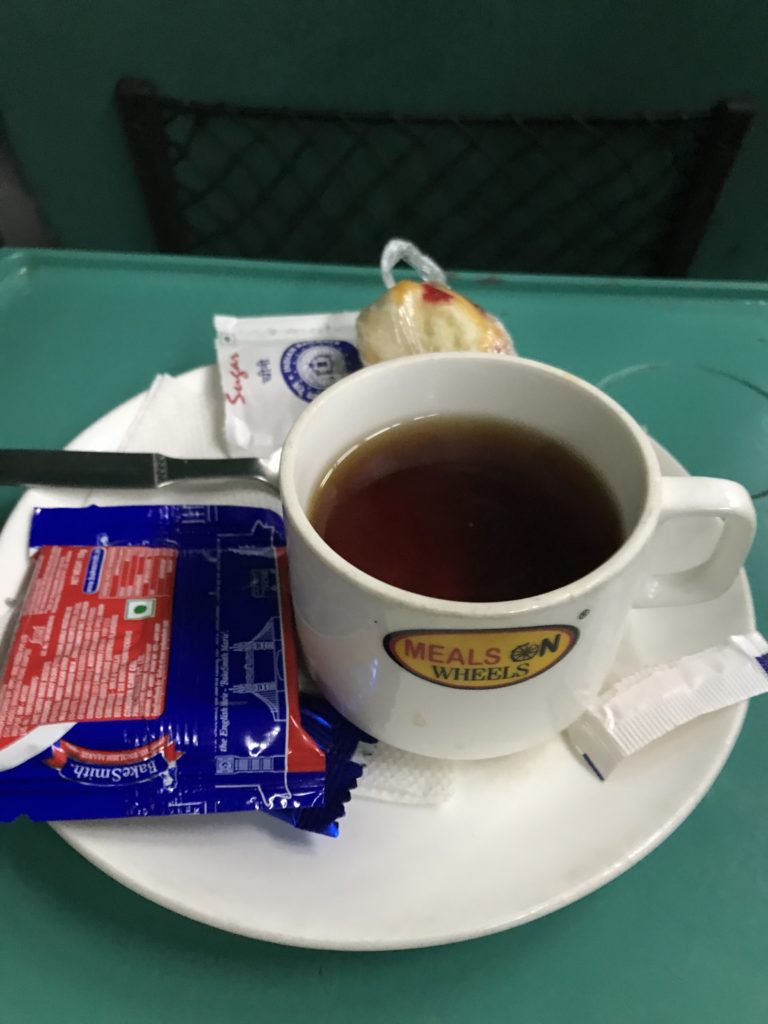
Issues and troubleshooting while booking.
Recently, the Indian Railways website was renovated with a much more friendly user facade. In fact, it is much simpler to use for a tourist compared to just one year ago. I personally did not have any problems while booking my tickets and verifying my details. However, there might be some issues due to their system that you can face at the time of booking. These are generally not receiving the OTP password to verify your number/email.
Problems are due to their system, so the only solution is continue to try until you get it (concerning your email, you may try to verify different emails and edit later your details from your account). Another error you might face is the “login error”. Despite typing the correct credentials, the system does not recognise them. Once again, persevere! It is their fault not yours, so after two-three attempts you should login successfully! If you have issue during your credit card transaction, this might be your bank that does not approve a foreign transaction. You can verify this by calling their call centre.
Bookings via Makemytrip and Cleartrip
Many users prefer to book their tickets throughout Makemytrip and Cleartrip. I personally preferred to book directly with Indian Railways as I don’t like much to proceed with third companies when I have a direct option. Furthermore, even if you want to book with these two companies you MUST register your ID details with Indian Railways anyway (Makemytrip will ask these before booking the tickets) so, to me there is no point in doing all the hard job and switch site when it comes to the easiest part! If you still want to book with these companies, you have first to register and verify an account with IRCT (see Step 1 below), second you have to create a second account with their company and only at the end you can proceed with the booking on their page.
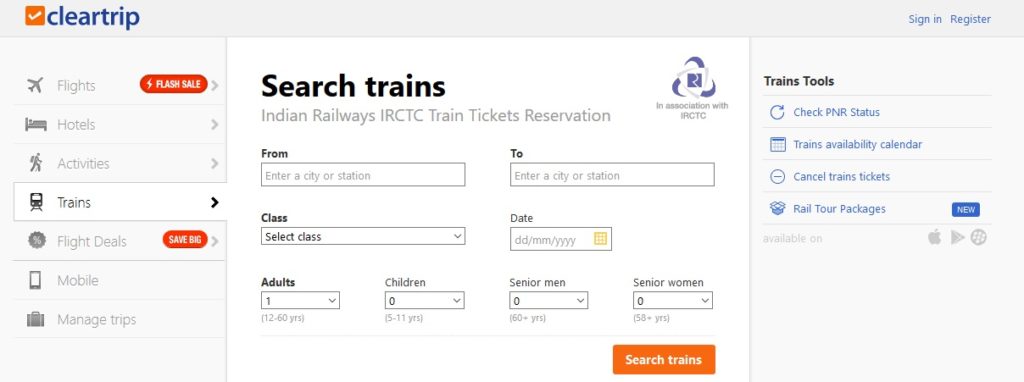
Pro: both websites looks much more tourist-friendly and simple to use after the registration. You can book also other types of transportation, including taxis. Cons: first , you have to register with IRCT anyway so it is much more straightforward to book with them. Second, when I tried to use makemytrip last year it did not allow me to book without an Indian phone number, so after a couple of trials I gave up! Furthermore, it looks like they don’t accept foreign credit cards, although I couldn’t verify this personally and things change very quickly. Third, Cleartrip charges additional booking fees you will not find on IRCT. These are usually $0,50 in addition to the ticket price plus a 1.8% credit card fee.
Watch out! Scams at the train stations (and how to avoid them).
India is, unfortunately, famous also for the great number of scams you may encounter while on the road. Stations (especially big ones) are particularly sensitive to frauds and it would be really sad if your well-planned trip, possibly the trip you are dreaming for an entire life, ends up badly because of a scam. We almost got scammed at the New Delhi station and believe me, is not something I wish to anyone. There are various type of scammers at the station. However, the most popular is the fake police man/army man, which is the one I personally encountered.
Before my trip, I read so much about possible scammers, the way they acted and where to find them. I felt smart and well prepared, but reality is another thing. Especially if you travel at early morning/late night when you are not at the top of your faculties and a bit sleepy. This was my experience. Little parenthesis, Indians are obsessed with security. You’ll pass security checks in “airport style” everywhere, even to enter shops at the mall. Stations are, of course, no exception. Closed parenthesis.
The “your train is cancelled” scam
It was around 5.15 in the morning and our train to Agra was at six (it was still very dark outside). We reached the station well in time taking in consideration also that we did not know where to go or what to do precisely. After having spotted the security checks in one corner outside of the main gate, we knew we were on the right entrance.
We approached the security line. When it was our turn to pass the metal detector and scan the baggage, the guy looking like a police officer (who was sitting next to the bag scanner) with an evident badge attached on his jacket, asked for our tickets and passports.
It doesn’t sound too strange to me as he looked like part of the security team and he was wearing a uniform with a badge. However, I had anyway a red flag alert on in my mind and I gave him just the train tickets (of which I had a copy) trying to take time to “find” the passports. He did not wait too much time after receiving the tickets to state that our train was cancelled that morning and we couldn’t get inside the station because of this reason. Here was the moment I immediately knew he was a scammer!
He did not want to return us our tickets so we started discussing very loudly in front of the security line and I threatened him to call the police in that exact moment. I still don’t remember how, but I was able to take my tickets off his hands and he was still persistently continuing to say that our train was not departing that morning saying “go inside and you’ll see”. We genuinely sent him to hell and continued to the security without problem. Of course, our train was there as expected.
Things that surprised me a lot about this event were: first, the actual security people were watching the scene and did nothing despite knowing exactly what was happening. Second, people (including other French tourists who departed with us from the same hotel) did nothing despite hearing what was happening and possibly (if true) involving them as well. Thanks guys, so nice from you.
How we got out of the scam
Third, no actual police officers were around in or outside the station at that time! So, be extremely careful and take your guard high ALL THE TIME. Never give someone (despite officially looking) your passport or tickets. I had a copy of the tickets for this reason. Don’t trust anyone stating your train is burned, delayed, cancelled or anything else (same thing about hotels! Don’t trust anyone saying your hotel is closed etc.). Moreover, save the police number and your embassy number (just for the very bad cases). We got misled by the guy’s uniform and his position in the security line! In the end, we were lucky. However, I was also sure that our train wasn’t cancelled because I checked on the website before going! Trains are cancelled only in case of technical faults or bad weather conditions (e.g. flooding or heavy fog).
Other types of scams
What happened to us is not the only fraud you might face at the station. Watch out also for the fake ticket office and officer (inside the station) and for taxi drivers bringing you purposely to wrong stations/ fake ticket offices in order to force you going by car (with them or some of their friends) to your destination. If you travel at early morning, I warmly recommend making your hotel arranging a taxi for you and don’t go venturing with the first cab you find! Uber is generally safe in India but if you have trouble booking with them because of the network/ data etc. trust your hotel.
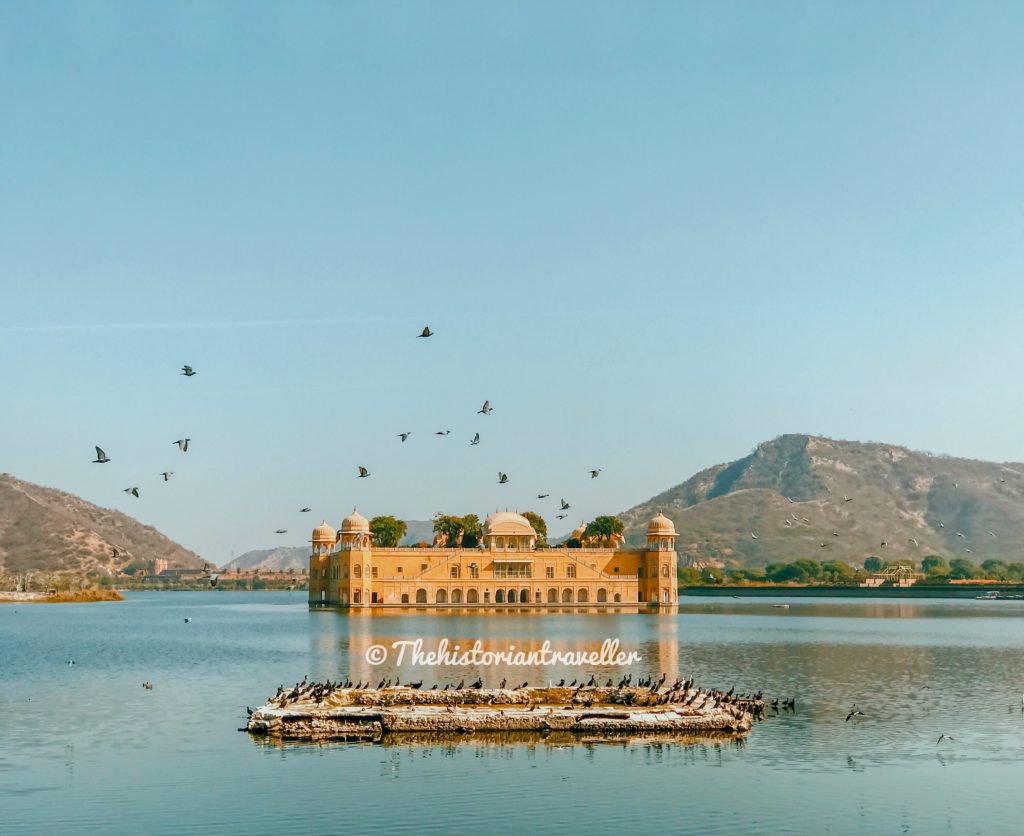
Conclusions
And that’s a wrap! If you have read till here and finished this Indian railways guide step by step, first, THANK YOU! Second, it means that you are very determined in getting these train tickets!! So don’t give up and you’ll manage that! I’ll try to keep this page as updated as possible. If there is any big change, you will find it here! For the moment all the info are updated to 24/01/19.
Cheers! Laura
Liked this blog? Pin it for later!
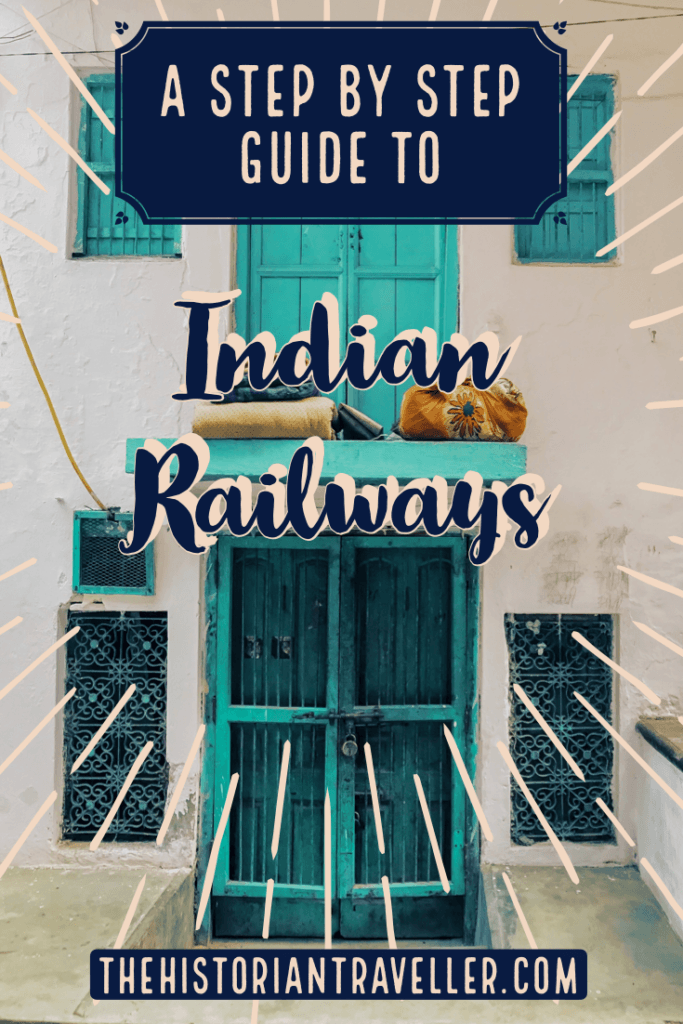
Interested in India? Read my Jaipur guide here
Share this:
You may also enjoy:
Land of kasbahs. exploring the high atlas …, everything you need to know to visit …, a complete peloponnese travel guide for 2024, how to plan a perfect day trip …, tell me what you think, leave a reply below cancel reply, the historian traveller instagram, where is laura.
Email address
Subscribe to The Historian Traveller newsletter
Looking for something.
Everything you need to know about overnight trains in India
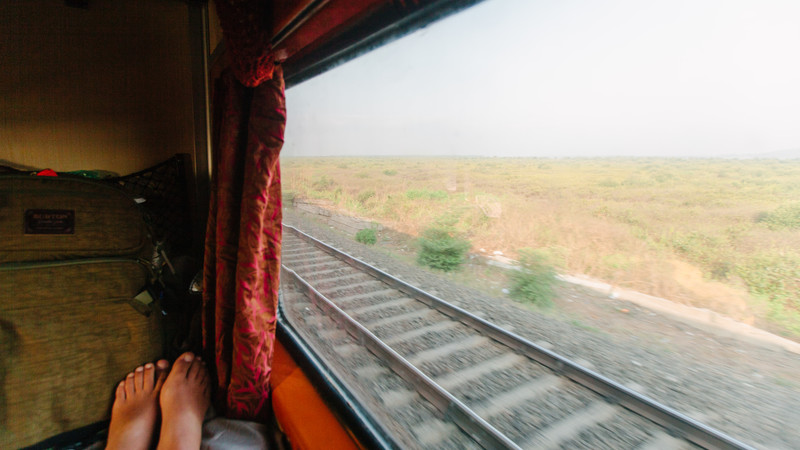
I watched my favorite Wes Anderson movie, The Darjeeling Limited, on repeat prior to my first trip to India more than two years ago.
The camera pans across lush landscapes as the train with three troubled brothers slowly snakes through the Eastern Himalayas. Remember that scene where the impeccably-dressed steward brings the brothers sweet lime juice on a silver tray, and they sip while sitting on opulent orange upholstery? The movie is absolute eye candy.
My overnight train journeys, both solo and as part of Intrepid’s South India Revealed trip, looked nothing like the cinematic masterpiece. They were, however, equally quirky and rewarding immersive experiences, and I would gladly take the train again (now that I’m prepared).
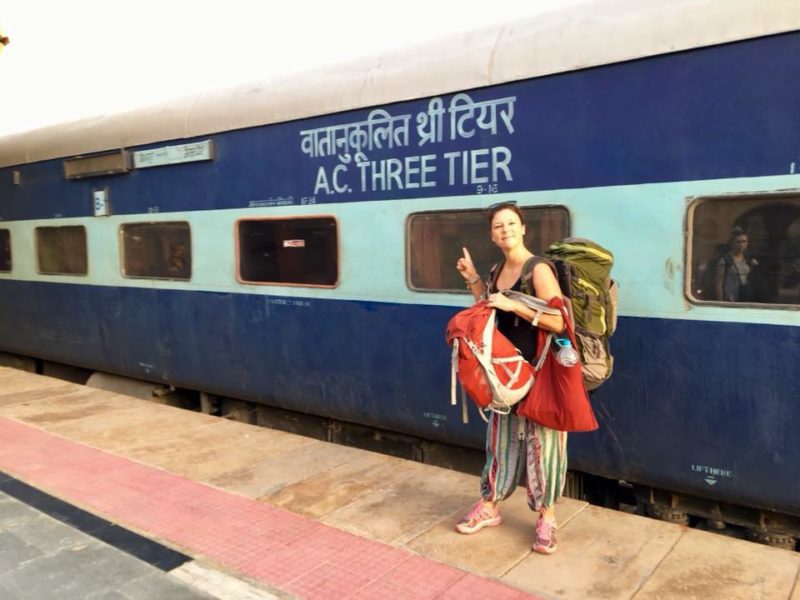
You’ll make new friends
There’s a chance you’ll be sharing a compartment with local travelers of either gender. Our group met a variety of passengers along the way, including a professional web developer who was traveling for work, and a young couple on holiday. Part of my group took the North India Revealed trip before I met up with them in the south, and told me about their shared meals and late-night conversation with a family sharing the quarters. While it sometimes feels exhausting to take long trains, it’s hard to turn down homemade desserts!
The thing all these experiences with local travelers have in common is the genuine interest about our journey across India, and desire to learn where we were all from. Fellow train travelers always have the best food tips for each city, too!
READ MORE: THE MAGIC OF MOVING OUT OF YOUR COMFORT ZONE IN INDIA
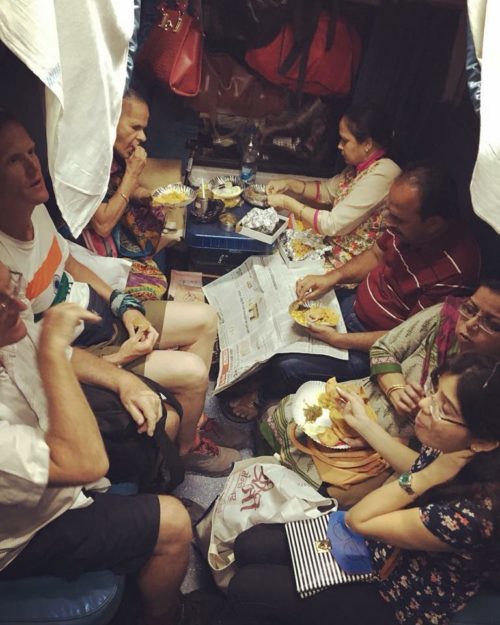
Put your misgivings aside
The ambiance on Indian trains falls somewhere on a sliding scale of slightly tattered to dorm room drab. With vinyl seats, metal walls and fluorescent lighting, it’s definitely not a design marvel, but I ended up getting a decent night’s sleep as the beds are actually quite sturdy.
The accommodations aren’t spotless, but they aren’t dirty, either. You’ll be provided with clean sheets that come in paper packets, blankets, and a pillow. Many of the seasoned travelers I met chose to bring their own cocoon-style travel sheet.
CHECK OUT INTREPID’S INDIA TRIPS AND EMBARK ON THE ADVENTURE OF A LIFETIME
Don’t expect privacy
Unlike European sleeper cars, there are no doors to each compartment, nor are there curtains that slide in front of the bunks. The vinyl seats fold down to convert each seating area to a 6-bunk compartment with three bunks on each side. Think of it more like an open-air sleeping cube. Passengers will be walking up and down the aisle at the far end of the beds.
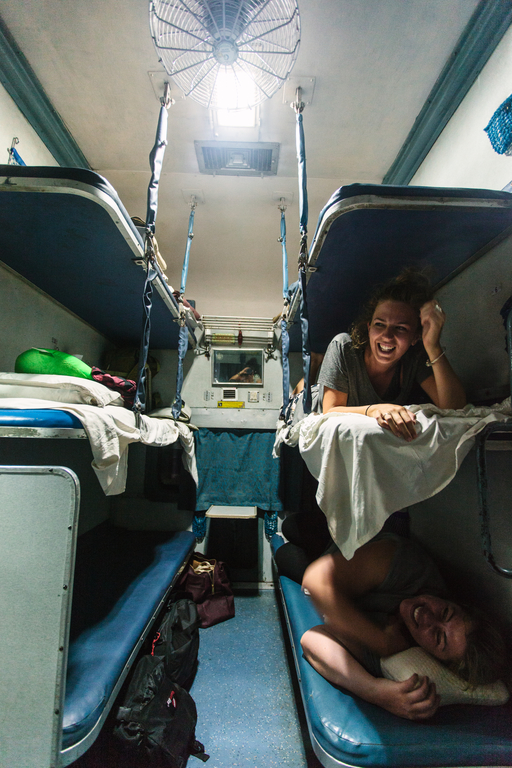
You’ll want to sleep in comfy yet modest clothing. A t-shirt and yoga pants are fine, and you’ll see plenty of local men sleeping in jeans and sweatshirts, and ladies in comfy shirts or tunics paired with traditional pants called salwars, which can be tight like leggings or loose like pajamas.
SUBSCRIBE TO INTREPID’S NEWSLETTER FOR TRAVEL TIPS, STORIES, GIVEAWAYS & MORE
What’s to eat?
There is no cafe cart. Ask your guide about what bring before you arrive at the station, or even what will be available to eat at the station. Our amazing guide, Usha, who was not only a travel pro, but a provider of great food advice, prepped us before each journey, alerting us to which stations had good street food, and which ones were bare bones. It’s easy to pick up bananas, chips, water and a last-minute cup of chai before boarding the train. Some even had vendors making fresh takeaway.
On extra hot days, most in our group indulged in ice cream bars (look for the small freezers where they sell cold water), as our pre-train sweet treat.
Bring a sweatshirt
Yes, India is often hot and it seems crazy to pack such a bulky item in your luggage , especially if you’re limited to just a backpack. Train cars with AC – which is how you’ll travel on an Intrepid trip – can get cold, especially if you are on the top bunk near the fan.
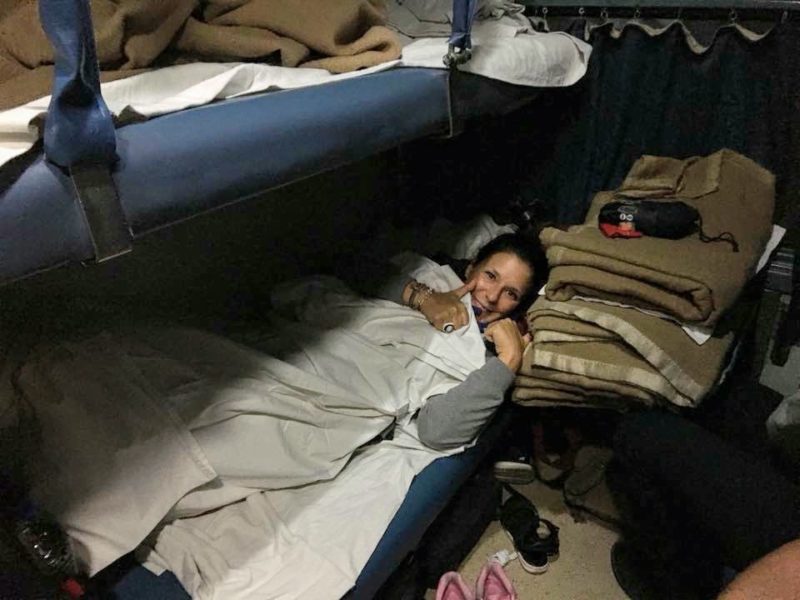
Vital train tips from Ashish Verma, Intrepid Travel’s Contracting Manager in India:
Be ready for delays for a number of reasons – fog is a pretty common one. And remember a chain and padlock (there are bars beneath the seats where you can lock up your bag). Also, don’t use the toilets when the train is stationary!
Sleep early and bring earplugs
Once you and the group board, it’s best to get settled and get to sleep earlier rather than later. First, there are no individual bunk lights, just one big overhead light, so you can’t customize it to your liking. Second, the chai wallahs start gliding through the aisles early (around 6am) to hawk their hot tea – and they aren’t quiet about it.
In addition, the train will make stops throughout the night letting passengers on and off, and it might get noisy. The earplugs will help offset the sporadic commotion throughout the night.
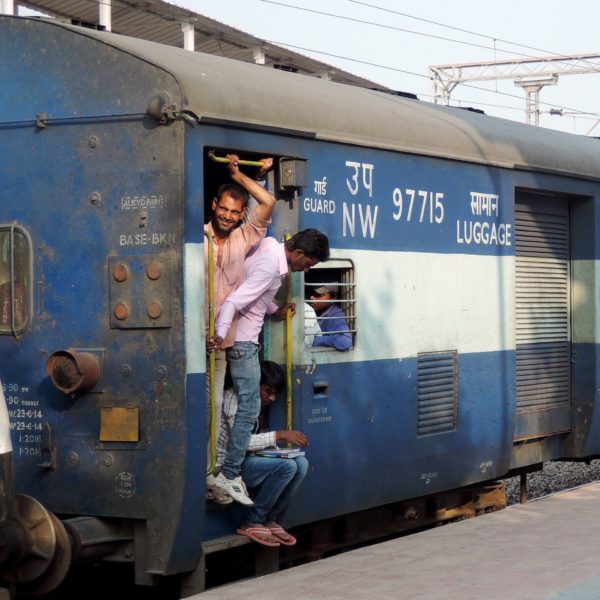
Let’s talk toilets
Sleeper trains have toilets at the end of each car. Most have 3 bathrooms — 2 Indian-style squat toilets, and 1 Western-style seated (drop) toilet. Attendants come through and clean throughout the journey. It won’t be the cleanest bathroom ever, but I’ve experienced worse at roadside stops during my travels. I’m going to admit, me a few of the other ladies on our trip ran to the bathroom as a bunch as soon as we boarded to scope out the situation — that’s when we pulled together a communal bathroom supply bag with toilet paper, hand sanitizer, and wet wipes.
Put on shoes to visit the bathroom (the floors are often hosed down and wet) and bring toilet paper and hand sanitizer, though there are sinks. Most importantly, don’t avoid drinking water during the journey simply because you want to avoid the WC. It’s hot throughout most of the year in India and you’ll risk dehydration. Our guide Usha warned that dehydration, not Delhi belly , is the reason they most often need to seek medical attention for guests.
READ MORE: AN ESSENTIAL GUIDE TO THE DELHI METRO
Luggage stays with you
There is room under the bottom bunk to store your luggage. You’ll be able to squeeze a carry-on, large duffle, or 60-70 liter backpack under the seat. Large, traditional suitcases don’t fit so well. Nor will that kind of luggage fit in a tuk-tuk, which you’ll take almost daily in India. So be a smart traveler, and opt for luggage you can easily carry.
What’s available on the train?
- No dining car, but vendors will come by selling a limited supply of water, packaged snacks, tea, and (instant) coffee
- Yes, there are electrical outlets, but there are only 2 in a compartment of 6 beds
- No wifi, bring a book
- Yes, sheets, blankets, and pillows are provided for each passenger
- Hand sinks are in the WC, there are no showers
Safety tips from Ashish Verma, Intrepid Travel’s Contracting Manager in India:
Don’t carry too much cash on overnight trains and don’t leave any electronic gadgets unattended. Money belts should not be visible to anyone and expensive jewelry should not be worn!
Overnight train survival kit
- Hand sanitizer
- Toilet paper
- Flip flops or slippers
- Sleeping sheet
- Deck of cards, book or writing journal (anything non-digital) to pass the time
Ready for an incredible adventure? Check out Intrepid’s range of small group trips in India.
(Image credits from top to bottom: Intrepid Travel, Kristin Amico x2, Intrepid Travel, Kristin Amico x2, Intrepid Travel.)
Feeling inspired?
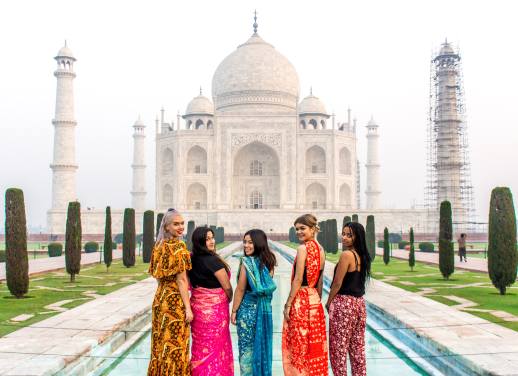
Kristin Amico
In early 2017 I quit my full-time job, gave up my Boston apartment, sold most of my belongings, and bought a one-way ticket overseas. I'm currently spending a year living nomadically and eating my way across Europe and Asia. My food and travel writing has appeared on Intrepid Travel, Fodor's, Paste Magazine, and The Kitchn. Follow my adventure on Instagram @Kristinamico.
You might also like
5 reasons to visit sri lanka in the..., why 2024 is the best year to see..., 6 unique experiences you can have in el..., from delhi to udaipur, here are the five..., cinque terre vs amalfi coast: which destination to..., love at first bite: 10 famous sandwiches from..., galapagos or madagascar which unique destination should be..., central vs south america: how to plan your..., why road-tripping is the best way to see..., lessons learned on intrepid’s sabah adventure, travelling to chile here’s the best time to....
TRAIN TRAVEL IN INDIA – EVERYTHING TRAVELLERS NEED TO KNOW.
Train travel in India has got to be one of the best experiences of journeying the subcontinent. Nothing quite beats sitting by a window, fresh chai in hand, enjoying the scenes of life that pass by. But, the Indian railways system is renowned for being overly complex and sometimes complicated – so we’re here to help set you up with everything you need to know to enjoy travelling by train in India to the full!
This post contains compensated affiliate links, please find out more in our disclosure . Thank you for supporting Soul Travel!
How to Master Indian Train Travel for Foreign Visitors
I tend to subscribe to the belief that you haven’t been to India (let alone experienced India), until you’ve taken a long ride on Indian Railways. The view of this beautiful country is best from a bunk in an overnight train sleeper coach, watching the landscapes roll by and chatting to new-found friends.
There are few better feelings on a journey around India than sitting at a window seat, masala chai in hand, simply watching the varied landscapes of India change, merge and blend before your eyes, or standing near a train doorway early in the morning after an overnight journey feeling the cool fresh breeze on your face.
Travelling by train in India is safe, efficient, comfortable (depending on which class you pick – read below!) and our number one way to get around India. Head over here for some of our must-not-miss favourite train journeys in India !
The third largest employer in the world, mover of 25 million passengers ever day, and owner of the longest railway platform in the word (amongst other trivia), travelling by Indian Railways is an experience not to be missed during your trip to India.
Train travel in India is many things: But being ‘turn-up-and-go’ is definitely not one of them, and especially not for foreigners travelling in India (although fortunately this is changing – more below).
Good things come to those who persevere, however and I truly believe that you won’t regret the time and effort put into planning your Indian train journeys. Many Indians depend on train travel to get around the country and the railways are still referred to as India’s lifeline. Given that a population of 1.2 billion people depend on them to get around, you can begin understand why the ticketing system is a little complex.
Over my trips to India and living here over the last seven years I’ve learnt a lot about how to travel by Indian railways – by trial as much as by error – so much so that locals seem to come up to me on station platforms and ask me for directions! I’m happy to share all my tips with you in this post, along with how train travel in India has changed post Covid-19 .
Planning Train Travel in India
The first step towards planning your trip to India is working out an approximate itinerary .
This doesn’t mean you have to book all your hotels etc, but do have an idea of which places you want to go to and how long you will have in each place. This will help you pin down which dates you need your Indian Railways tickets for so that you can start to look into specific trains.
You may then need to re-orgnise your itinerary based on availability of trains, or which places are well connected to each other by rail (for example – Jaipur and Udaipur are well connected by train, but there’s no train from Udaipur to Jodhpur (or vice versa).
The most important point is that you want to book your trains as early as possible – they open up for sale 120 days in advance and ideally you want to be booking your train tickets for your Indian rail journeys 3-4 months out if you can, especially if there are holidays such as Christmas, New Year, Diwali etc occurring around that time.
Not all trains run every day. Some express trains run only certain days of the week. When researching trains you might find information like the below:
Here you can see some of the many trains that run from Varanasi to Delhi, which days of the week they run on (letters are for days of the week), how long they take and which classes they have. If you want to research train options between cities, a google search will bring up plenty of sites with this info such as indiarailinfo.com.
Types of Train in India
There are many different types of train in India – even for long distances and know upfront that not all trains are equal. Some trains move at twice the speed of others, calling at 20% of the stations. Depending on which train you choose, a journey between two places can take five hours or ten hours – so be careful with which train you book!
Here are some of the main types of trains that you may come across during your travels in India:
Overnight Trains:
- Rajdhani Express – The RollsRoyce of Indian express trains (ok, well maybe more like a Volkswagen). These are the fastest and most reliable intercity express trains that run between Delhi and state capitals. They’re a great way to get from Delhi – Mumbai or Delhi – Kolkata (or vice versa) quickly and comfortably. The Rajdhani’s always have priority on the tracks and meals are included on these trains. Rajdhanis are fully air conditioned, but don’t expect red carpets or chandeliers; the interiors are similar to any other air conditioned Indian Railways train. These are also the most expensive trains. Recommended.
- Garib Rath – Distinguishable by its olive green and mustard yellow outside livery, the Garib Rath is an all economy Air Conditioned express train, designed to be an affordable option for those who could not afford air conditioned train travel. Runs 1-2 times per week and there are several routes including south from Mumbai to Kerala (which we travelled on and found very comfortable). Recommended.
- Duronto Express – Duronto means non-stop in Bengali, and these trains were introduced in 2009 as India’s first step towards high speed rail services. They were introduced to be point-to point services with no stops in between (although now some do stop it seems). Generally a great option for long distance travel. Recommended.
- SuperFast Express – Possibly the type of train you’ll find yourself on most for inter-city / town travel, sometimes all AC ( referred to as AC SuperFast), or sometimes a mix of Sleeper + AC Classes (SuperFast). These trains are relatively fast and a good way to travel. Recommended.
- Express – A step down from SuperFast Expresses (and indeed the Express name may be aspirational only) these trains tend to stop at more stations and take longer. Generally these are fine too, and may be your only option for less common routes, but are prone to more delays than the above categories of trains.
- Mail Trains / Passenger – the slowest trains, stopping at yet more stations, taking more time, and prone to more delays. Only recommended if this type of train is your only option.
Daytime Trains:
- Tejas Express – A (relatively) new addition to train travel on selected routes in India, the Tejas Express trains are India’s latest high-speed train travel offering. These trains are new, modern, and are fully air conditioned with automatic closing doors and tv’s in the back of seats in Executive AC class. A novelty for travelling by train in India, but not recommended for those who relish the chance to sit by an open window or door. Given the high ticket price, these trains often have seats left when others are fully booked.
- Shatabdi Express – These are daytime express trains with seating only (all the above trains have sleeper berths) and cover popular shorter routes like Delhi to Agra, Amritsar and Jaipur. These are good trains which usually run on time and we highly recommend them. All AC. Recommended.
- Jan Shatabdi – Like the Shatabdi trains above but with the addition of non-AC chair car class. Slightly slower and cheaper than Shatabdis. Recommended.
- Local Trains – These come in a range of forms to the local suburban trains of Mumbai and Kolkata, to state local trains which run between towns and usually offer “General” unreserved seating only. They are usually very busy in cities. Avoid these unless you really want to take the “scenic” route!
If you want to travel as quickly as possible, research the fastest train for your route. In general the SuperFast trains sell out quickest, I’ve never had any problems getting a Rajdhani ticket, but the cost is about 30% higher than a SuperFast for the same route.
Some trains are also famous for being late. I used not to believe this, until someone warned me about a particular train and it was 11 hours (yes you read that right) late. So I am now a member of the official India train geek society and check the average punctuality score for trains before booking them – Railyatri.in (another useful site for checking train routes and status) has an “on time score”!
How to Book Indian Railways Train Tickets
There are many ways to book your Indian train tickets. Here are some of the best options:
Booking Indian Train Tickets From Overseas
This has always been much harder (and at times impossible) than booking Indian train tickets inside India. The issues include not having an Indian phone number, foreign credit cards not being accepted, and no access to the foreign tourist quota. Fortunately – times are a changing, and it’s now easier than it’s every been to nab your Indian train tickets before you even set foot in the motherland!
Option #1 – The stress-free way with Raj from Train Ticket Please
I used to enjoy booking my own train tickets with my IRCTC account, but on my return to India in October 2021 after Covid, I found that I could no longer use my UK bank cards to pay for my tickets. Most other foreign travellers have reported the same issue, with foreign (non-Indian) bank cards from most countries being rejected.
Enter my saviour and agent, Raj, from Train Ticket Please, who now books all of my tickets, along with arranging ground transportation, domestic flights, drivers and guides. Raj books trains all over India for a small service cost, meaning you don’t have to spend out hours – or days – trying to work out how to register, create an account and book your own tickets on the Indian Railways website, and it’s just done for you!
If you’re short on time and want the least hassle, I recommend booking via him. Contact via Whatsapp: +91 89621 29008 or Email: [email protected] mentioning ‘SOUL TRAVEL’.
Option #2 – Do it yourself with 12Go.Asia
12Go.Asia is one of the leading platforms for booking transport in Asia, and is one of the only international websites to offer Indian train bookings without having to register for an IRCTC account first. Which makes it the easiest and quickest option for booking trains in India, and ideal for if you only want to take a couple of journeys / are only in India for a couple of weeks. They don’t have every single journey online yet, but they do have most of the ones you’d want to take as a visitor to India, between the main towns and cities.
Search and Book Indian trains on 12go here!
How I suggest using 12Go.Asia for booking trains:
- Conduct a general search on railyatri.in or indiarailinfo.com to check the trains running between your destinations
- Note the train number, station that they leave from and station they arrive at. Most cities have multiple stations and you need to enter the specific departure and arrival station to get the right train results.
- While booking you can request your preference of upper or lower berth and normally there will be different classes available – see our notes below for recommendations on what to book.
- Enter your details and pay by international credit card. Bookings are on a request basis so they are not confirmed until you receive the confirmation from 12go.Asia. There’s an option to let them know if you are flexible to travel a day before / after. Search train journeys in India now !
Search & Book Popular Train Journeys in India on 12go
Jaisalmer –> Jodhpur
Jaipur –> Ajmer (Pushkar)
Delhi –> Jodhpur
Agra –> Jaipur
Delhi –> Agra
Mumbai –> Goa (Madgaon)
Goa –> Cochin (Ernakulam)
Delhi –> Varanasi
Delhi –> Haridwar (for Rishikesh)
Option #3 – Sign up for an IRCTC Account & (try to) Book Directly
This option is high risk if you don’t have access to an Indian bank card/credit card – you may go through all the steps to book tickets only to find that your payment cannot be accepted. If in doubt, use one of the previous 2 options.
As of 2022, sadly Cleartrip is no longer offering train bookings via your IRCTC account (which used to be my workaround).
This is the traditional way of booking train tickets and used to be possible, but is now unlikely to work with foreign cards, unless you get lucky. It’s a high investment of time with limited chance of success, so I urge you to use other options especially if it’s just for a couple of journeys. But, if you’re really determined and have Indian friends who are happy to let you use their payment cards, proceed as follows:
Step 1: Sign up for an IRCTC Account.
The first step is to sign up for an IRCTC account . IRCTC stands for Indian Railways Catering & Tourism Cooperation and is the Government body that oversees all railways in India. As of November 2017 you can now get an IRCTC account with a foreign mobile number (include your country code when signing up). Unfortunately, the “OTP” (One Time Passcode) which is sent via SMS/Text and which you need to validate your account doesn’t always arrive to international numbers. If that happens, your best bet is to try to book with 12go.asia or email Raj at [email protected] as above quoting “Soul Travel”.
With your foreigner account you will also be able to book tickets from the Foreigner Tourist Quota (more on what that is below) but note that that the quota is only available for 1AC and 2AC classes. Make a note of your ID and password somewhere safe as you’ll need it for whenever you make a booking!
As a non-Indian national (using a foreign phone number to register) you will need to pay an activation fee of 100 Rupees after activation, on your first login to your account before you’ll be able to make any bookings.
There is now a maximum number of train bookings (single journeys) you can make per month per IRCTC id which is six . For additional bookings over six per month per person/ID you’ll need to use an agent or buy at the station.
Step 2. Booking Tickets with an IRCTC Account on IRCTC website
Once you have a validated IRCTC Account, you can log in, choose your train, class of travel and preferred bunk (upper / middle / lower – note that you’re not guaranteed to get it), etc.
Login, search for trains between your chosen destinations and preferred class of travel (we recommend searching for train options as above first so you can enter the exact start and end station).
Availability on trains opens up 120 days prior to departure. Many trains get booked up weeks if not months in advance, so this is where having an account well in advance helps. If your train is still available, simply book a confirmed ticket, note your booking number (called a PNR) and away you go! If not, read on…
Step 3. Things to know when booking tickets yourself on IRCTC
When searching for trains you might see statuses like “RAC” “Waitlist” and “Available”. Here’s what they mean:
Available – Pretty self explanatory – you can book a ticket with a confirmed seat. Lucky you!
RAC – Reserved against Cancellation. Indian Railways know that not everyone will show up for their train, so they do what they can to make sure the train runs full and “overbook” using RAC tickets (similar to what airlines do really).
With an RAC ticket you CAN board the train but you are not guaranteed a seat/berth number at the time of booking and may have to share a berth if everyone shows up for the train. Usually, as ticket quotas are released one day prior / up to four hours before the departure of the train, you will be allocated a berth. I have seen some cases where trains were full and some RAC passengers had to sit for long journeys sharing berths, but this is unusual and RAC passengers normally get berths fine.
You should board the class of travel that you paid for – ie if you booked an RAC ticket at the AC3 fare, you should board an AC3 coach. We advise booking RAC for the most popular class such as AC3 tier as there is normally much more of this on a train than say first class. You can see how many people are on RAC tickets already by the number given – eg RAC 23 means there are 23 people on RAC tickets already in front of you. Obviously, the lower the number the better your chances.
WL or Waitlist – That means your train is officially closed to guaranteed bookings. Once the general quota sells out for a train and all RAC tickets have been booked, the train moves on to Waitlist status. You can book a Waitlist ticket but that means you are not confirmed a place on the train and you cannot (officially…) board a train with a Waitlist ticket.
See more on what we suggest you do if you are issued a Waitlist ticket below!
Pin this for Later!
Option #3 – Use a Local Travel Agent
I recommend Raj at Train Ticket Please ([email protected], quote “Soul Travel”), however you can also use other agents you find along your travels – such as through your accommodation, guide or through travel agents in tourist destinations. They will charge a small fee for booking tickets.
TIP: If going with travel agent shops in tourist destinations, check the price and availability of trains yourself on IRCTC first to know availability and pricing. It’s normal to pay a small fee (around 100rs) for booking, but be aware of agents trying to increase ticket prices, or trying to tell you to book first class tickets when there are lower classes available, if you don’t want them.
Travel agents have been known to claim that certain trains are full, or only have First Class tickets left in order to increase their revenue – which is why I recommend using Raj at Train Ticket Please (email above), 12go.asia, or another agent you know/trust.
Option #4 – Buy Your Ticket at a Railway Station in India
Once you are in India, you can turn up at any Railway Station in India and book trains in person (payment is by cash only).
Most Railway stations have someone who speaks English (at a smaller station, ask for the station manager) – and larger Railway stations have ticket windows that are dedicated to train bookings for foreigners. There is also a foreigner quota that is available only in person (or now on IRCTC too but only for certain classes and if you have registered with a foreign mobile number). Try and go to the station to book your tickets at the earliest chance possible, as the trains sell out. Beware anyone trying to point you away from the ticket office and towards their own travel agency (New Delhi is infamous for this!).
Logistics of Train Travel in India
You’ve booked your tickets, congrats! You’re half way there 😉
Now here’s how you go about making sure you get on your train.
To get to the right place on the right train you are going to need: Your train number, compartment number and berth number.
Example: 13015 (Train), B3 (Coach / “Bogie”), 23 (Berth).
How to Find your Platform
Indian Railways stations vary hugely across the country – some have really great, clear signage and others hardly any. If you’re getting on your train at the start of the route, you should have some time, but if you’re getting on at an intermediate station, you need to make sure you are in the right place as trains are very long and at worst only stop for 2 minutes .
Make a note of your Train Number (5 digits eg 13015) as some stations will show trains by numbers rather than destinations. If there is no board with train departures (normally to be found in the main station entrance, waiting room, or on the Footbridge), you can ask the station manager or other railway official. Porters (who wear red shirts) are often a great source of information too – it can be worth paying them to carry your bags and get you to the right place.
How to Find your Coach on the Train
Once you’ve found your platform, you need to find where to stand on your platform. THIS IS REALLY IMPORTANT as Indian trains are very long and you need to be in the right place. Normally you will see numbers along the platform on signs such as “10”, “11” etc. These do not correspond to the coach number but are indicators of where the different coaches will stop. Eg B2 may stop at 10, B3 may stop at 11 etc. In northern India I found that there are often electronic indicators along the platform (with red lights) indicating which coach will stop where. However in Southern India I didn’t see these, and there were only signs with (1, 2, 3 etc on). So you then need to work out which number your coach will stop by:
- There are usually announcements in the local language, Hindi, and in ENGLISH so listen out for those.
- Ask a station official
- Use an app/the internet to check the train composition – google your train number + train composition (or use indiarailinfo.com – where the below screenshot is from) you should get something like the below which shows which number your coach stops by. Most of India’s railway stations now have free, super fast wifi courtesy of Google…
- As a last resort, stand in the middle of the platform (not either end) and get ready to run as the train comes in! Each coach has a sign in the middle near the top with the coach number on it (eg A1, B2), plus you can easily see which coach are AC vs non AC by the sealed vs unsealed windows.
How to Find out your Seat + Coach
If you booked a confirmed ticket, you will find your seat plus coach on the ticket. It will give you your coach (called “bogie” in Indian English) number (eg A1, B2, S1) and your seat / berth number (eg 56).
Note that reservations charts are not finalised until 4 hours before the train departs from its starting point.
If you are issued a waitlist ticket that then confirms, you can check your seat and coach number in two ways. The easiest way is to use an App (I use one called “Confirmtkt”) where you enter your “PNR” (your ticket number) and it will return you your ticket status, coach and seat/berth number.
You can also send a text message from your mobile phone to 139 with just your PNR (ticket number) on it, and you’ll get an auto reply which looks something like this. Again, this can change up to 4 hours prior to departure, when charting is done, so the best time to do this is within 4 hours of departure of your train. You should get a reply that looks something like this, telling you your coach and berth/seat number.
Classes of Travel on Indian Trains
Train travel in India is famous for having a total of 9 different classes of travel. Worry not though, you won’t have a choice of all 9 on any given train. The choices are essentially First Class / 1AC, 2AC (Two-Tier AC), 3AC (Three-Tier AC), and Sleeper (Non AC). Classes like 2nd (non AC chair cars) or General Class are not recommended for long journeys and are very basic. On Shatabdi express trains there are also Chair Cars (CC – Air Conditioned) and Executive Chair Cars (EC – First Class Air Conditioned).
The main difference between the Air Conditioned Sleeper Classes (from what I’ve experienced – trains can be different) are as follows:
First (1AC) gets you a locking compartment with 2 or 4 of you. It’s not possible to choose the 2 or 4, it’s down to pot luck on the day. Slightly thicker pillows are included but apart from the locking compartment door the rest is the same as 2 or 3AC – in that toilets and washbasins are at the end of of each coach. First is not particularly fancy and costs double the price of 2AC. I was not a fan of my one and only experience in first, mainly as I ended up in a compartment of snorers ( you can read about that one here ).
On some special Radjhani Express trains, meals are included. It can however be a good option if waiting lists on all other classes are very long and you need to get somewhere. It’s also the class that Indian Ministers and important persons tend to travel. So if you fancy some networking…
2AC / Two Tier AC (Recommended). The layout is open plan within the coach and comes with bays of 2 bunks opposite 2 bunks, and a further 2 sideways against the side of the coach. The main advantage of 2AC is that the upper bunk is less high (as the bunks are only 2 high vs the 3 high in 3AC) and there are curtains around each bay of bunks (not individual bunks unless you get the side bunks) to provide some privacy. Bedding (sheet, blanket and pillow) is provided. Toilets are at the end of each coach.
Tip – In 2AC my favourite bunk is side upper. You have a curtain giving you perfect privacy!
3AC / Three Tier AC (Recommended). Same open plan layout as 2AC but with 3 bunks facing 3 (so the top one is a bit of a climb), and there are no curtains. This is the class I travelled in for 90% of my train journeys and I found it to be comfortable. (Solo) women should try and get the top bunk . Bedding is included and it’s pretty clean. In all Air Conditioned classes the windows are of course sealed against the dirt which keeps them warmer in winter / cooler in summer and cleaner.
Tip – In 3AC I always go for the top bunk as for women that is the best option. However it can get pretty chilly as you’re right next to the fan! I recommend bringing an extra scarf or hoodie to help keep you cosy. It’s also quite high up so not recommended if you don’t feel comfortable doing a few acrobatics to get up/down. Unlike in 2AC I don’t recommend the side bunks for single women as everyone gets to have a good look at you as they walk up/down the train.
3 Tier Economy AC / 3E (NOT Recommended). As of 2022, a new sub-type of 3 tier AC has started being introduced, known as 3-Tier AC Economy, 3 Economy, or 3E. This is intended to allow more people to travel in AC classes at a lower price point, however is very cramped and not recommended as it’s more cramped than 3 tier AC (already a lot of people) and more cramped than non AC sleeper (see below. 3E class basically fits in an extra set of berths in each coach compared to the other classes.
Sleeper (Non AC Sleeper) is basically the same layout of 3AC, but a third of the price, and a lot dirtier. Windows are open so the coaches get hot in summer and cold in winter. Bedding is not provided so bring your own. Everyone warned me about not going in Sleeper class as a foreigner (especially as a solo female). I don’t take sleeper for overnight journeys, however I have taken it for daytime journeys, for which it can be fine and is certainly much better for photography as the windows can be opened. Sleeper can be very hot/cold depending on season. If it’s your first time in India then I recommend starting off in the AC Classes and not sleeper.
Another reason to stay out of (non-AC) sleeper class is that it is subsidised by the Indian government to keep costs low for those who struggle to pay for sleeper class and long-distance railway travel. Sleeper class is hugely in demand and oversubscribed, so for these reasons too I suggest visitors should purchase higher classes of travel, leaving more room in sleeper for those who need it.
2nd Class & General Class – AVOID these unless you are going for a short hop without your luggage and really want to travel backpacker style. These are coaches with wooden benches for sitting which can be fine in winter for a short journey – I’ve travelled in Goa & Kerala in 2nd Class (which is divided between reserved and un-reserved) for 1-2 hour journeys but definitely wouldn’t attempt it in summer or for longer.
General class is unreserved and can be truly appalling, especially in poorer states of India such as Uttar Pradesh. Anyone who does not have a confirmed reservation has to get in here – do NOT attempt this . (I’ve been in General class once for a 1 hour trip and those travelling in General class do not need tourists joining them, it’s crowded enough!)
What to do When your Train is Full (and all the others)
Worry not. Not just yet anyway. There are some options that do not involve flying or taking the bus to help you get a train ticket when your train (and all others) appear to be full.
Buy A Tatkal Ticket
Tatkal is the name of the service which is a quota of emergency travel tickets that is released at 10am the day before departure of the train for AC Classes (11am for non AC Classes). Make sure you get there ahead of time as there will be a queue! You (or your travel agent or other trusted envoy) need to be at the station before that time to get a spot in the line and fill out a form. You can then likely get a ticket for your desired train, albeit at an extra 30% of the normal price as a “Tatkal Premium”.
It used to be the case that Tatkal tickets could only be booked in person at the station but I have now done this several times via Cleartrip. It’s been really helpful and I’ve managed to get a number of train tickets this way, even though they ended up being a bit more expensive.
Book a Waitlist Ticket
During my travels in India I’ve had several waitlist tickets, with most of them getting confirmed a few hours before the train left. Once a train is ‘full’ – i.e. standard non Tatkal tickets sold out – then the waitlist will open up and you can book a Waitlist ticket (see above). Then you have Waitlist spots 1 up to a few hundred depending on the popularity of the train. I’ve been on Waitlist 6 and had my spot confirmed, and even up to Waitlist 20. Last year I noticed that waitlists are getting longer and longer as it seems more tickets are being held back to Tatkal to help improve IRCTC’s revenue management…
Often, spots aren’t released until the day of travel (as how many waitlist spots will be confirmed is dependent not only on cancellations but how many tickets are sold in Tatkal (see above). So this can add some uncertainty to your journey. If you need to travel on that day, it’s better to pay the extra for a confirmed Tatkal ticket.
At the latest, you will find out 4 hours before departure if your seats have been confirmed as this is when the reservation charts are finalised.
Getting on a Train with a Waitlist Ticket
If you have an RAC ticket you can board the train. If you have a Waitlist Ticket that isn’t confirmed, you’re not allowed to…. But last year we were in that situation and needed to get to Goa on time!
When our tickets from Kerala to Goa were not confirmed we pondered what to do. Tatkal for the next day had already closed, so we decided our best chance was to try and get on the train anyway and negotiate once on board (we bought a “General” ticket from the ticket office before boarding)
We had booked 2AC tickets so we boarded the train at the 2AC compartment. Seeing as it was nighttime and we didn’t know which berths were unoccupied, we stood in the vestibule for a good hour before the TC (Ticket Checker – the one wearing a suit with a big pile of papers on a clipboard) appeared. Ravi then showed him our general tickets and told him of our plight (drawing on me as a clueless foreigner) and eventually we were given two nice berths in 2AC for the remainder of the journey. Seeing as our ticket had been refunded, we paid the TC in cash. Our TC was extremely kind and honest and took less than what we had spent on the original ticket, but normally you can expect to pay a little extra for this kind of “service” (we suggest you negotiate).
So would I recommend this approach? Not necessarily. If I would have been travelling alone and without an Indian I would have felt pretty uncomfortable standing in the corridor with my luggage for so long, attracting a few looks. You may also encounter unscrupulous Ticket Checkers who will demand a big payment as technically speaking, you are boarding the train without a valid ticket for that class. However, if you really need to be somewhere and don’t mind chancing it, this could be your best bet! Also, you’re not depriving anyone of their seat this way, you’ll only be given a berth if one is empty (so there is a small chance you might have to stand!).
Get Creative with your “From” Station!
On queueing up to buy a Tatkal ticket from Bikaner to Haridwar, a friendly local stepped in to enquire where I wanted to go. Suspecting “come to my travel agency” stories, I told him anyway and he suggested that I didn’t need to pay extra for a Tatkal ticket, but I could instead buy a ticket from a place called Luni in Rajasthan but “getting on at Bikaner”.
Luni was a small station in the middle of nowhere that not many people travelled from, before Bikaner on the line. But because there are quotas from each station that a train calls at, there were still standard price tickets for sale to my destination as opposed to paying several hundred rupees extra for Tatkal. The ticket office sold this to me without questioning and the ticket inspector on the train seemed quite happy. You can only buy tickets with a different “getting on point” in person.
Safety Tips for Travel on Indian Railways
One of the questions we are asked most often by travellers visiting India is if travelling by train is safe. The straightforward answer: YES!
The longer answer: Yes train travel in India is generally very safe and most travellers have good experiences. Indian Railways generally has a good safety record and there are always police / guards on each train should you ever need help. The Railways Minister is also incredibly reactive on twitter! They can be reached at @RailMinIndia
There are a couple of things to be aware of to help make your journey even safer:
- The main scams around rail travel are around ticketing. Famously, several travel agents pretend to be the “official foreign tourist ticket office” at New Delhi Railway station (ignore them), and touts have been known to single out tourists on platforms, ask for their train # or ticket and then tell them that their train has been cancelled, their ticket is not valid. Sometimes the scams are elaborate but they all revolve around trying to get you to buy a new ticket through them. Just ignore people who approach you at stations – the official ticket checkers will be walking through the trains once you are on and you’ll see all passengers showing their ticket.
- Train travel in India is safe for solo women, but we recommend you get the top bunk whenever you can for some additional privacy and make sure you are well covered while sleeping – no shorts, vest tops and you can forget the idea of changing into your silk pyjamas…
- Doors are often open during train journeys – this makes for great photo opportunities but please be careful. Trains go fast and often pass next to poles on the track so do not lean out far or while the train is travelling at speed – hold on at all times if you do stand in the doorway.
- I’ve read a lot of advice saying to bring a padlock and chain for your luggage, but have personally never used this. I always make sure to keep my small day pack on my top bunk with me (i use it as a pillow, but have also had to leave it unattended on my top bunk when needing the washroom) and keep my main bag with clothes etc down under the seat. I use a cross body purse which never leaves my person with passport, phone and money in. If your bag is full of valuables or you are feeling especially worried about your belongings then by all means bring a padlock and chain. If travelling non-ac sleeper, I’d probably use a chain as sleeper gets more crowded.
Dispelling Myths about India Train Travel
Travelling by train in India gets a lot of attention and interest, unsurprisingly! But there are a few myths out there that we’d like to dispel 🙂
- Not all Indian Trains are late. It’s true that trains can and do run late, but for us that has been the exception rather than the rule. In general if you book the better trains and follow our advice, you’d be unlucky to experience several late trains.
- People don’t sit on the roof of trains in India. This used to be the case, but back in the 80s and 90s. Indian trains actually travel pretty fast – you’ll see that it would be pretty much impossible to stay on top!
- Not everybody is out to get you on Indian trains. Many articles warn against leaving your luggage unlocked, keeping your eyes out, not moving without your hand sanitiser, not touching the food, etc etc. Fine, there have been cases where people have had things stolen or got sick, but the overwhelming majority of experiences on Indian trains are good!
Got an additional myth we should add to this list? Let us know your India train stories in the comments below!
What to Pack for Train Travel in India
I recommend a few essentials that will help make your train trips in India more comfortable!
- Headphones. Sometimes you just want to retreat to yourself – you don’t need fancy headphones, your regular ones will do fine!
- An Eyemask – People are often switching lights on and off, so one of these will help you sleep, although personally when I travel alone in the train I don’t use one as I want to be able to see what’s going on if I need to quickly.
- Hand Sanitiser – Toilets don’t always have soap so this is a must
- A Sleeping Sheet / Sleeping Bag Liner – If you’re in AC Classes on Sleeper Trains, sheets, a pillow and a blanket are provided. The sheets are usually very clean (they are boil washed after each trip), but if you like to have something of your own that feels familiar to sleep in, we recommend bringing one along.
- A Power Pack – power points are few and far between on the overnight trains, with most passengers vying to charge their phones! Bring a power pack and make sure it’s charged before your journey (so your phone doesn’t die before your alarm for your stop! 😉 )
- A secure cross-body bag (purse) to keep your valuables (passport, phone, money) on you at all times.
- A good book! Phone and internet coverage can be spotty, and after a while you may run out of things to talk about. Train journeys are a great time to catch up on reading.
More India Train Travel Tips!
Food on Indian Trains – You can eat some amazing food on Indian trains! Food vendors generally get on and off trains with local specialities according to the region you are travelling through, but are remarkably unpredictable as to when they’ll appear, so it’s best to bring some of your own snacks, too. Multiple chai wallahs can walk down the coach in quick succession, only to vanish again for another few hours. Some trains also have pantry cars and food is sold by catering staff walking up and down the train.
The best chai and food is usually sold by vendors getting on the train at stations. Expect samosas in northern India, vada pav in Maharashtra, idli in south India, and wherever you go, there’s always plenty of staple ‘train biryani’.
Many foreigners are reluctant to eat train-food – with different advice being given out about whether it’s a sensible decision to eat or not. Personally I’ve eaten it many many times and had no stomach issues, but if you’ve just arrived in India or have a sensitive tum, you can give it a miss. I recommend you take provisions with you in case there’s not food around when you’re hungry 🙂
You can even order food to your seat now, too using various services – pick a restaurant you like at an upcoming station and tuck in!
Make sure you Wake Up for your Stop!
Don’t expect anyone to come and wake you up for your stop – set an alarm and keep it where you can hear it – as the railway staff don’t wake people up, and you need to be at the door waiting for your stop if it’s a station where the train only stops for a couple of minutes.
The Indian (Squat) Toilets are Usually Cleaner…
In most coaches there’s a choice between “western” and Indian toilets. I usually always go for the Indian squat variety as they tend to be cleaner! The Western style ones tend to have dirty footprints on the seat (go figure). Toilet paper is not provided so if you’re not happy with water, bring tissues (these go straight on to the track unfortunately so use water if you can). I recommend bringing hand sanitiser or liquid soap too as the soap often seems to run out or was never there to begin with…
Stay up to date with the status of your ticket (and train).
Train punctuality is getting better – the days of trains being 10 hours late (such as I’ve experienced a few years back) are mostly gone. More common is for trains to get an hour or two late, often in winter due to fog in north India, or during monsoon when there’s heavy rains. You can check the ‘running status’ of your train on this website. If a train says it’s about an hour late, it’s best still to go to the station on time, as trains often make up late time in the middle of their route.
Plan the rest of your Journey
Due to the long distances, trains often arrive or leave in the middle of the night or the early hours of the morning. Whenever this happens I recommend having pre-arranged transportation / a pickup waiting for you to/from your hotel – we definitely don’t recommend taking a rickshaw in the middle of the night to solo travellers. You can give your train number to anyone picking you up to keep on track if your train is delayed 🙂 .
Chat with your neighbours!
My favourite place for making new friends in India… is on long train journeys! There’s not much to do and locals are often curious about foreigners travelling – many love to speak English with foreigners and you’ll learn so much about travel habits and culture in English through engaging in friendly conversation.
Remember it’s about the Journey, not the Destination.
One thing’s for sure if you travel by train in India – you’ll go back home with stories to tell. Train travel can be hot, crowded, delayed, but it can also be the most wonderful way to experience this beautiful country, meet its people and experience all of India’s perfect contradictions. So relax, go with the flow and watch scenes of India unfold!
India Train Travel FAQ’s
Can i book train tickets as a foreigner outside of india how.
Yes! There are a couple of options. You can either register for an IRCTC account with a foreign mobile number and buy tickets directly there, or the much easier option is to book tickets directly here online . 12go offer the most popular routes in India and accept foreign credit cards with no need to create an Indian Railways account. See our “How to book tickets” section above in the guide for full details.
What’s the Best Class to Travel on Indian Trains?
Should i eat the food on indian trains.
Many travellers (including us) eat food on Indian trains and have absolutely no problems, while others have got sick or upset stomachs. If you’ve just arrived in India and haven’t got used to the food yet, we recommend taking it easy and bringing food from your hotel / a restaurant for the journey. Otherwise, tuck in!
Is it true that Indian Railways are Always Late?
On my first trip to India, someone told me that the lateness of trains is measured not in hours but quarter, half or full day late! There’s no denying that some trains do get (very) delayed in India, but i’ve found this to be the exception not the rule. Many trains run on time, especially the higher-tier express trains. Fog can cause delays in northern India during winter months, whereas monsoon rains in southern India can cause delays and cancellations too. Just ensure you have some extra food for your journey and leave plenty of buffer time in your planning.
Is Train Travel in India safe for (solo) Women?
Have you travelled in India by train? Got extra tips to share from your experiences? Let us know in the comments below!
Planning (solo) female travel by train in India? Read my safe train travel tips for women here!
Read More about Travel in India on Soul Travel:
First Time India: How to Prepare and What to Expect
Agra Travel Guide – Experiencing Agra Beyond the Taj
What to Wear in India
Pin this Post on Pinterest!
Soul Travel India
Passionate about all things India travel - journeys of transformation and discovery, local experiences, and getting under the skin of India.
Copyright Soul Travel India 2022, All rights reserved. This website uses compensated affiliate links.
Global Gallivanting
The ultimate guide to train travel in india: including how to book train tickets from abroad..
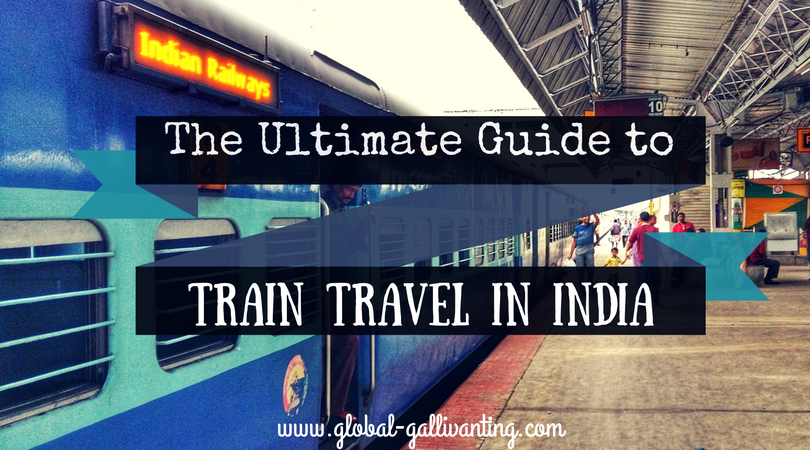
My Ultimate Guide to Train Travel in India
The best way to travel India is by the vast, and great value, Indian Railways network and traveling on Indian railways is an essential Indian bucket list experience in itself.
However, this massive system can be confusing to navigate at first and tickets can get booked up way in advance and can be difficult to book from abroad.
But never fear, read on and I’ll explain everything you need to know in this ultimate guide to train travel in India including how to book train tickets in India (even from abroad) and all the tips you need for traveling by train in India
I’ve been traveling around India independently, on a budget, and mostly as a solo female traveler since 2013. In my ultimate guide to train travel in India I’ll introduce you to Indian Railways and guide you through how to book train tickets in India.
As Indian trains get fully booked weeks and months in advance, I will also show you how to book train tickets in India in advance even from abroad to ensure a smooth trip.
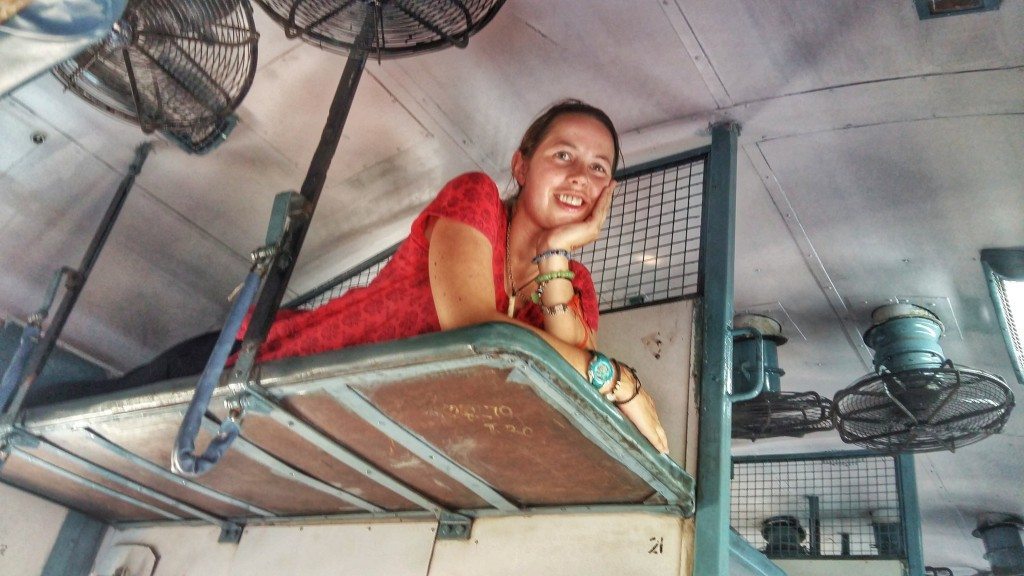
I will explain all the different ticket types and 8 classes found on Indian Railways. Do you need to know what a Taktal ticket is? What is the different between AC2 and AC3? Should you join a Wait List? Is sleeper class really that bad? All the answers are here…
I’ve also written down all my tips for traveling by rail in India and answered your questions and queries about how to find your seat, food, safety, scams and of course the state of the toilets on Indian trains!
It’s a long post (Indian Railways is one of the largest and busiest rail networks in the world after all!) so grab a chai and settle down and I’ll explain all you need to know about train travel in India!
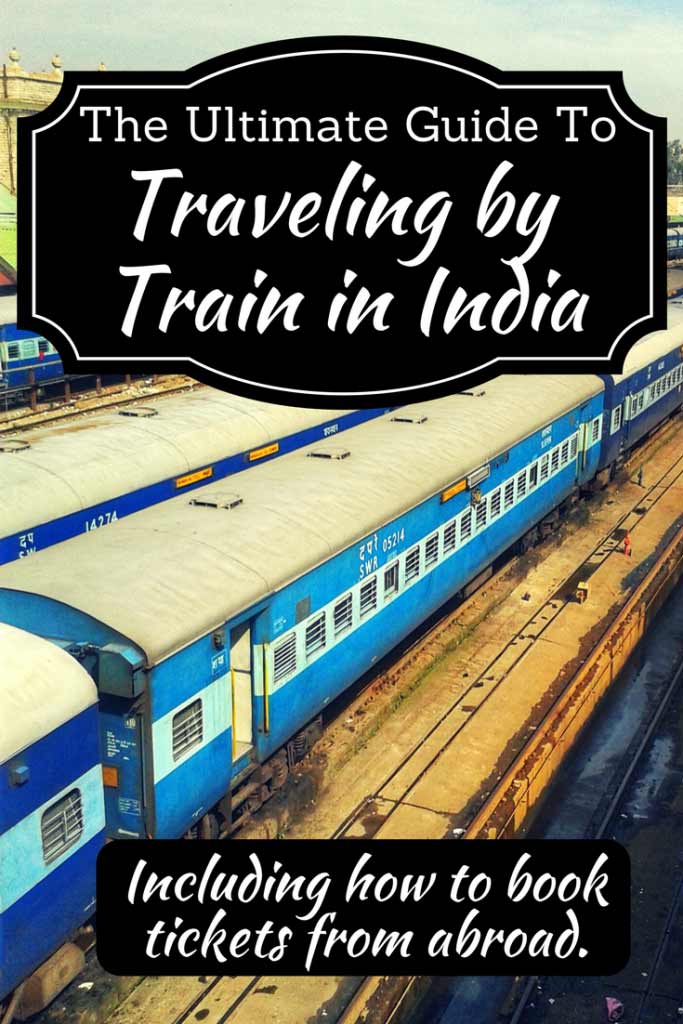
Indian Rail Travel Explained
India is a huge country with an amazing diversity of sights but vast distances mean that when planning a trip to India you need to give some thought about how you are going to get around.
India offers multiple ways to get around (albeit often slowly) this massive sub continent, you can get transport to pretty much every corner of India for a very affordable price, but you need patience because getting anywhere in India always takes longer than you think.
My main advice is always to take it slow – Everything seems to take a lot longer than you think and trying to cram too much in often leads to a stressful and frustrating trip that is hard to enjoy.
Read More: 5 Common mistakes travellers often make when visiting India for the 1st time
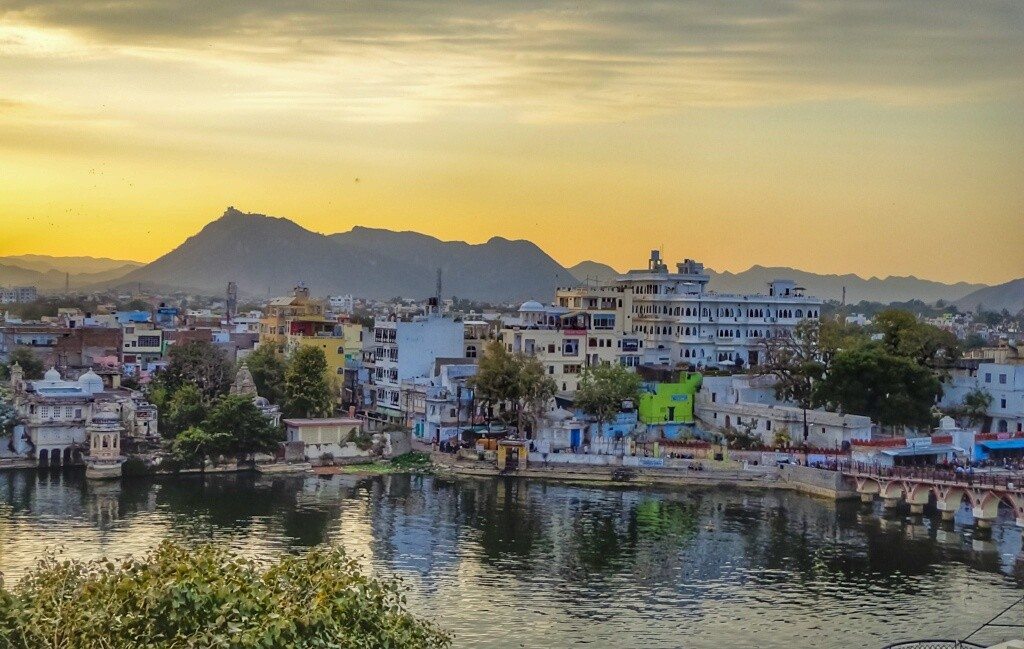
Why take the train instead of the bus?
Train travel is very popular because the roads in India are often poor, traffic can be chaotic and buses rickety so the best way to get around the huge and diverse country of India is by train.
Of course, you could take the bus – buses in India range from bone shakers that you can’t believe are still in one piece and running to ‘delux AC’ buses that are just about reasonably comfortable.
Still, taking the train is so much more comfortable in India and the scenery is usually better. After a nightmare sleeper bus ride ( it was like being in a coffin on a roller coaster) from Mumbai to Goa on my first trip to India I always prefer train travel in India now, especially on longer journeys.
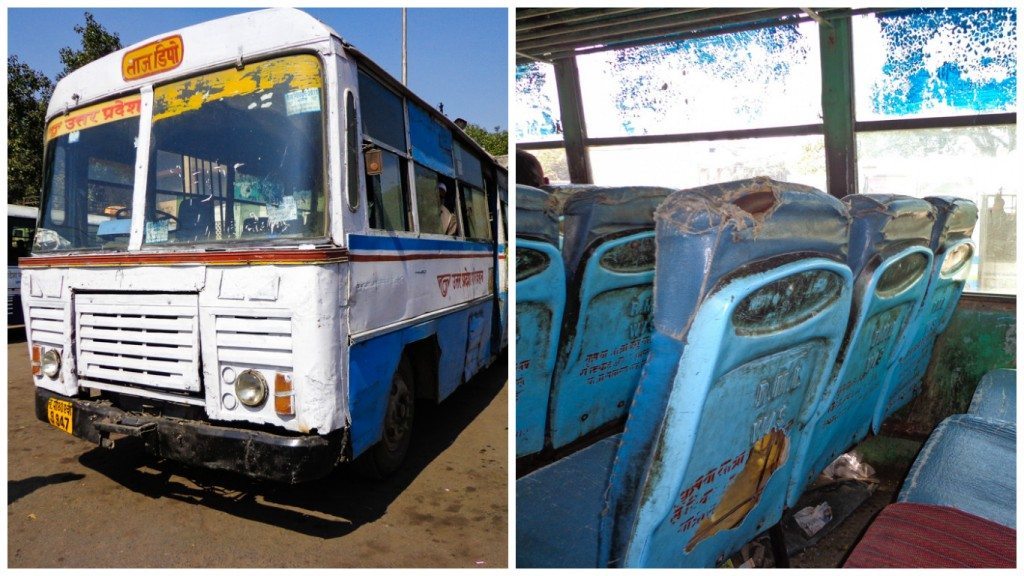
The Indian railways network is one of the largest in the world and stretches to almost every corner of this amazing and diverse country and ticket fares are incredibly good value. With over 63,000 km of rail routes and 6,800 stations you can get to pretty much every town or city in India by rail.
Indian Railways is the third biggest passenger rail network in the world (after Russia and China) and the busiest in terms of passengers. About 23 million people travel regularly by train in India and Indian Railways employs over 1.5 million staff making it one of the world’s biggest employers.
There are over 10,000 locomotives with over 67,ooo passenger coaches covering over 66,0o0 Kms across the country. If you laid out all the railway tracks in India in one straight line they would circle the earth about 1.5 times!
Indian train journeys don’t get boring, you’ll see all sorts going on both inside and outside the train and its a unique and culturally immersive experience that you won’t want to miss.
But in the world’s most densely populated country seats on Indian trains sell out fast , especially for popular routes in the peak tourist season you can find trains booked up weeks or even months ahead which could put a real delay on your travel plans! Which means arranging your train tickets should be on your ‘to do’ list as you prepare for your trip to India.
Read More India travel blogs:
- My Complete Guide to Planning your First Trip to India
- My complete guide to getting a tourist visa for India
How to book train tickets for Indian railways in advance?
As train travel in India is so popular I always advise people to book their train tickets in advance , there are many ways that you can book a train ticket in India but if you are expecting to be able to arrive and hop on and hop off then you will be disappointed.
You will need a reservation for all Indian Railways long distance trains , except if traveling in unreserved second class which I wouldn’t recommend (although it’s often not as bad as you this! …)
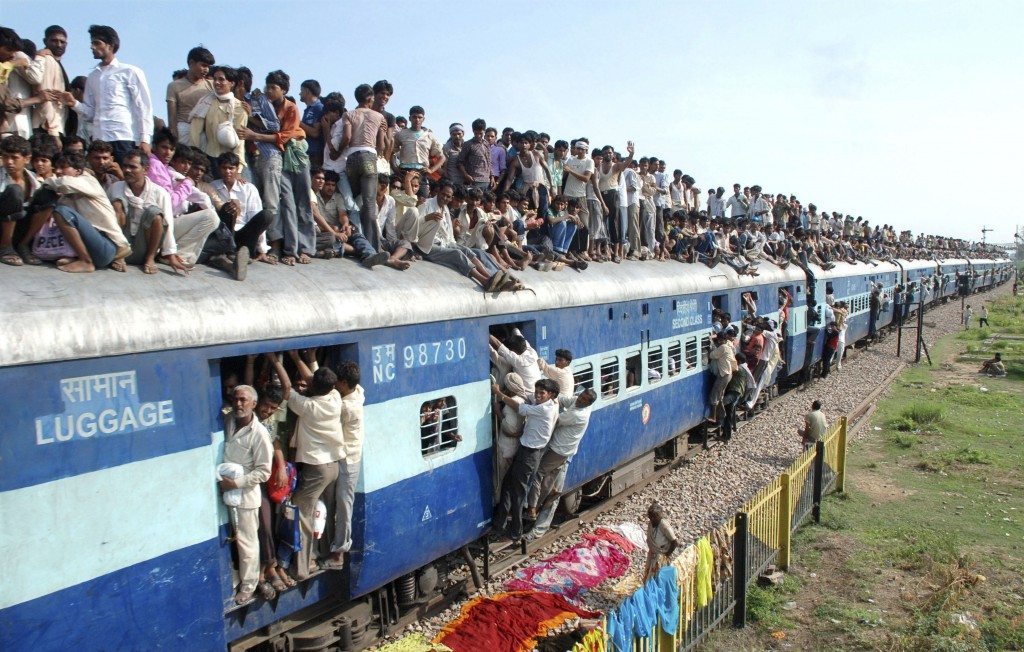
There are several ways that you can buy an Indian train ticket – online, at a travel agency or Indian Railways booking counter.
Update! You can now also book some (but not all routes are available) Indian Railway tickets online at Bookaway
Due to the high demand for train travel in India tickets for Indian trains can be booked up to 120 days in advance.
To make your trip to India more enjoyable and less stressful I recommend you book your tickets in advance, especially if you have a limited amount of time to spend traveling India and a packed itinerary of places you want to see.
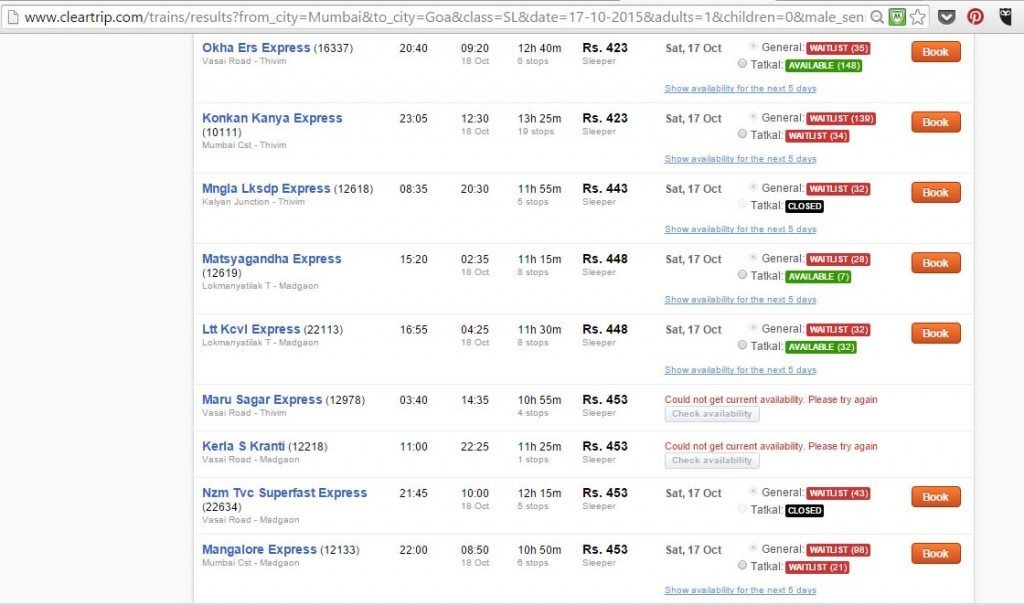
If you want to find out the earliest date that a train is available you can look on www.indianrail.gov.in and click ‘Availability at major stations’ then ‘Earliest date of available berths’ you can see the next date on which berths are available on key trains leaving each of the most important stations.
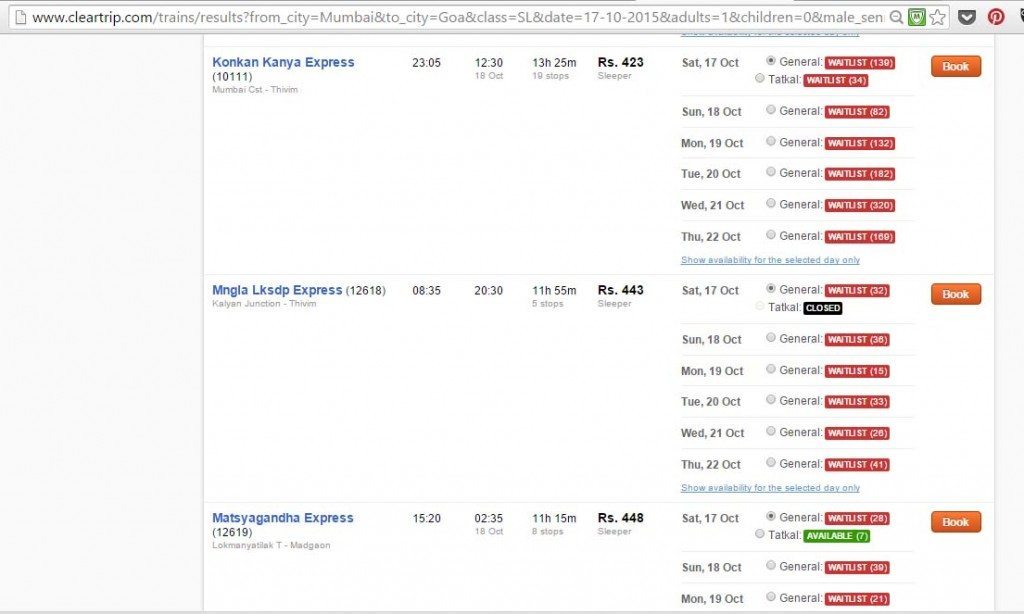
So now you can see why you need to book train tickets in advance! But booking trains from outside India is not so easy….
Where to book tickets for Indian trains:
Use a travel agent like india someday.
The easiest way by far to book train tickets from abroad is by using the services of a travel agent. India Someday are expert trip planners, and I’ve had great experiences travelling with them before so now I always use India Someday to book my train tickets. They charge a small service fee but it takes away all the hassle and stress of booking train tickets and ensure you get the right trains to make your trip run smoothly.
India Someday can also help with all aspect of planning a trip around India, advising on the best routes to take, accommodation and all transport options. Global Gallivanting readers can also get 5% off the trip planning fee by using the code GLOBALGALLIVANTING5 when enquiring. Contact them through their website.
IRCTC Website
Online reservations can be made on the official government IRCTC Online Passenger Reservation website . I don’t find the IRCTC website very user friendly. It is slow and temperamental – often the service is unavailable although sometimes if you keep trying it will work eventually.
It’s also not so simple to use – first you need to know the number of the train you want to book instead of being able to search and book by destination (and importantly checking availability) and it also does not accept most foreign cards and can be hassle to set up an account without an Indian mobile number.( see here how to get an Indian sim card )
A much easier way to arrange your train travel in India and book trains, even from abroad, is to use a website like Cleartrip.com to search and book trains.
Their website is much more user friendly and easier to use. There is even an app you can get on your phone and, once your account is set up, this is probably the simplest way to book trains – it’s actually pretty easy once you get the hang of it!
Most importantly you can pay with an international card . However they do charge a small service fee and not all trains are displayed, you can now book Taktal tickets online but you can’t book the Foreign Tourist Quota through these websites.
How to set up a Clear Trip Account
To set up a Clear Trip account IRCTC has insisted that you must also sign up for an IRCTC account. When you register with Clear Trip it will set both accounts up for you, but IRCTC requires an Indian mobile phone number.
This makes it a little difficult to set up the account before you arrive in India but it is possible – you can set up a Clear Trip account before you arrive without an Indian mobile number but, as with most things in India, patience and persistence are required.
Read More: How to get a local sim card in India
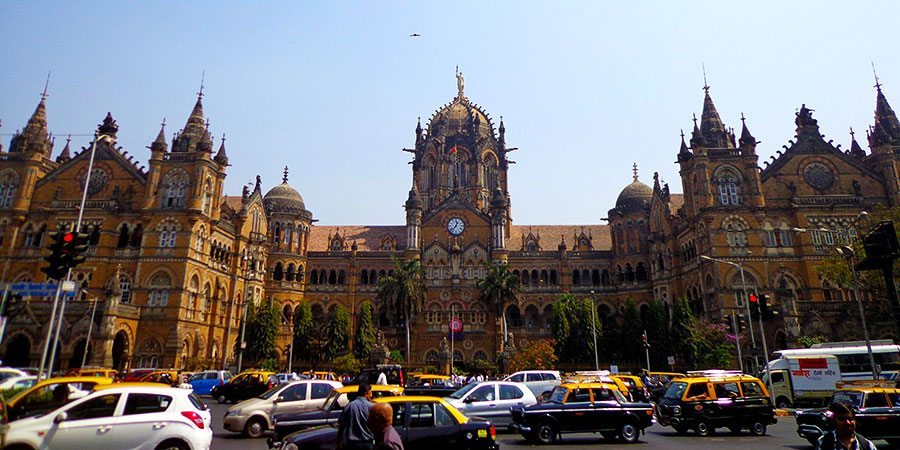
Read More: My Mumbai Travel Guide: The best places to visit, stay and eat.
To set up a Clear Trip account go through the normal process to set up an account, where it asks you to enter an Indian mobile number and zip code you will need to just make these up.
To make up an Indian mobile number it’s 10 digits and usually starts with 9, but you can’t use a mobile number that has already been used before so you might have to try a few combinations.
Then make up a numerical zip code (doesn’t work if you put in a UK style postcode) but make sure you change your country from India to UK or US or wherever and then finish the registration.
Then you should get an confirmation email with an Email OTP (Email One Time Password). Now send an email back to IRCTC customer care, attach a scan of your passport, quote your IRCTC user name and ask them to send you the SMS OTP by email.
It could take a few days or you may have to chase them for a while. Once you get the password then you can verify and activate your account on Clear Trip and enter the Email or SMS OTP and then you are ready to book train tickets and enjoy train travel in India!
There is more detailed information of this process on the really useful website – the Man in Seat 61
It’s a bit annoying but train travel in India really is the best way to travel here and so it’s worth it to book in advance and avoid the hassles of trying to get train tickets once you arrive.
Once you’ve got your Clear Trip account set up and the app on your phone it’s actually pretty easy to book train tickets! Just search the trains on the route you want to go, check the availability of the trains and book. Your ticket details will also be saved on the app and you can show it to the conductor – this is how I book most of my train travel in India.
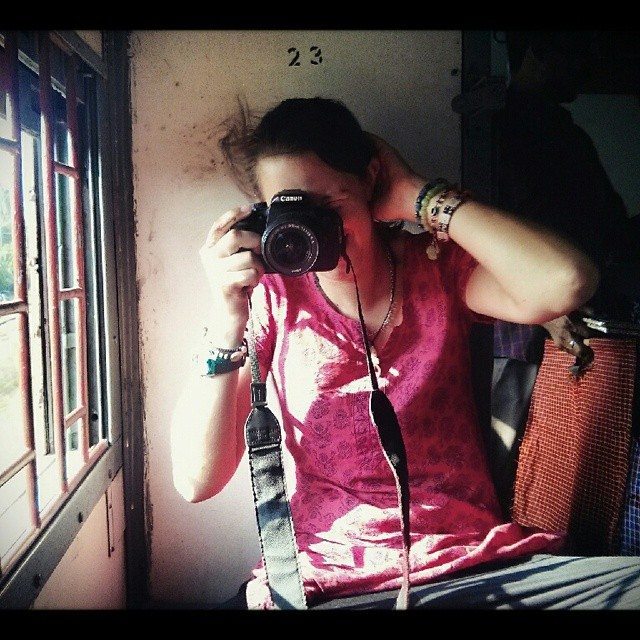
Use a travel agency or ask a friend
If you have a friend in India you could ask them to book the train tickets for you and forward you the ticket by email. If not, if you want to avoid hassle and don’t mind paying a bit more you could ask a reputable travel agency or a train travel specialist to sort out your train bookings.
I recently traveled through North India for 12 days and used a great company called India Someday to help plan my itinerary and book trains and homestays along the way ( read about it here )
India Someday are a young, energetic and resourceful travel company based in Mumbai (Bombay) who are experts on India and can assist you in booking trains and other transport as part of planning a complete well thought out, personalized trip to India.
They even offer Global Gallivanting readers 5% off just use the code GLOBALGALLIVANTING5. Contact them through the India Someday website.
Read More: My review of traveling with India Someday
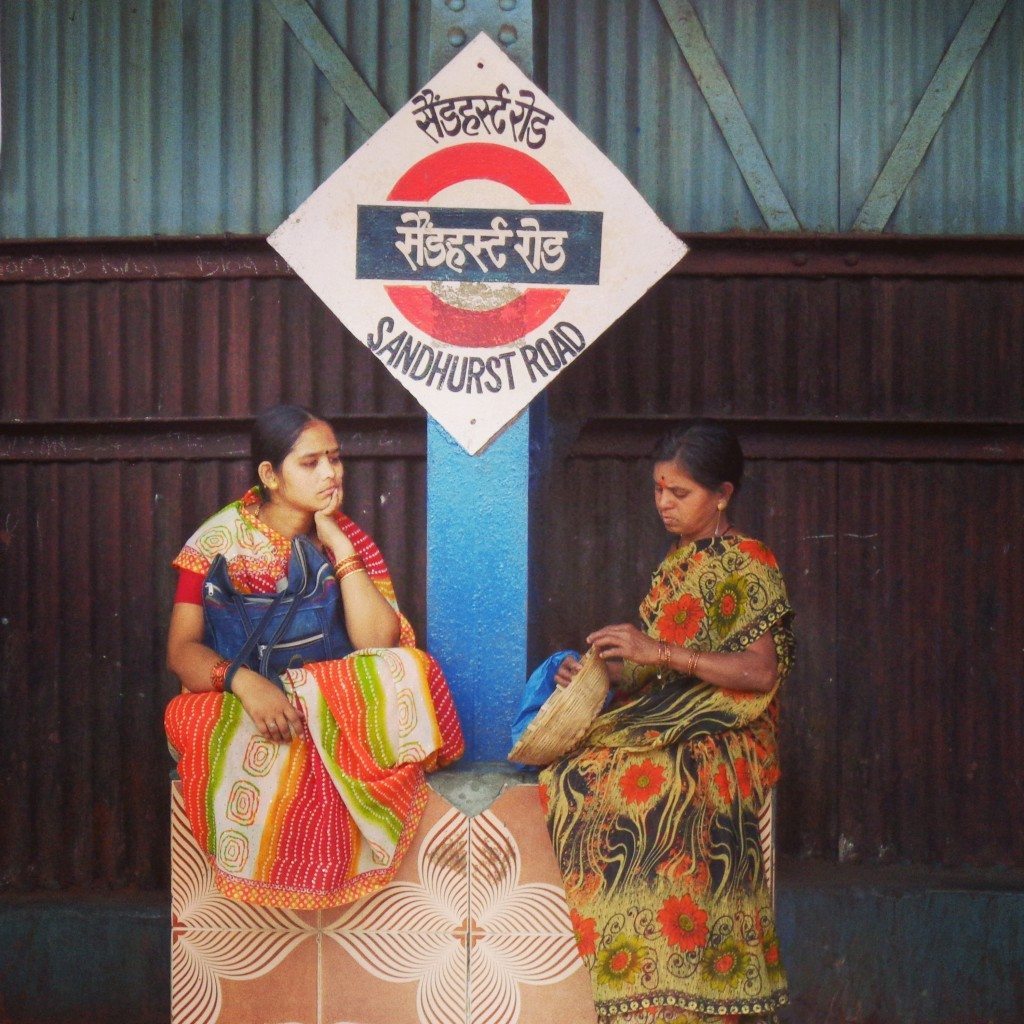
Read More: Tips for women traveling in India
If you prefer your train travel in India to be more luxurious then there are even some ultra luxury tourist train routes in India , escorted group trips by train and rail passes.
There is an IndRail Pass option where you can buy the pass and ask them to make all the reservations you want to go with it, free of charge.
However, I’ve never tried this as I prefer to stay flexible and travel slow. Using a rail pass would most likely be more expensive than booking point to point tickets and to get your money’s worth you would have to have quite rushed and busy itinerary that was all pre booked. I
f you only had a short time to explore India and wanted to have everything pre arranged then this might be an option.
Read More: The perfect route and itinerary for backpacking India
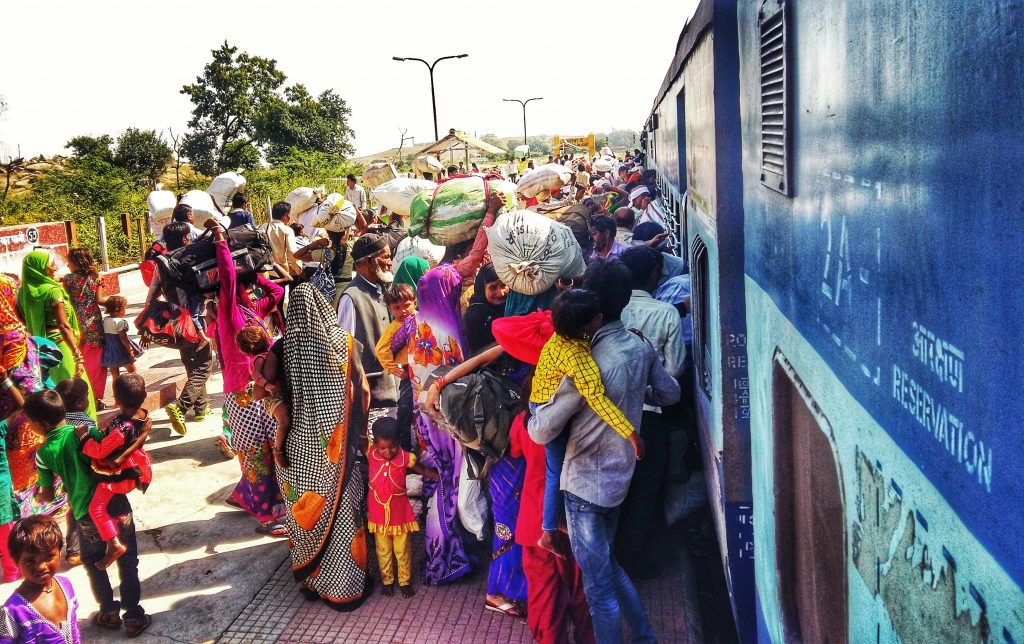
Tips for booking train tickets in India
Train travel in India, like everything else in India, always throws up some surprises, here are a few more tips and things you should be aware of when traveling by train in India.
Whether you use IRCTC or an app like Clear Trip the Indian railways online booking service closes for maintenance each day between 23:30-00:30 Indian time ( 18:00-19:00 GMT)
Sometimes the system is overloaded with visitors or just randomly won’t work, shows an error or no trains available – as with everything in India be patient and persistent, refresh the screen and keep trying and it should work in the end!
The system only shows direct train routes. If your search does not come with any train then maybe it is because there is not a direct train to your destination the system cannot calculate a journey where you have to change trains, you have to find a station where you can change and make the booking separately as 2 tickets.
Most places in India have 2 names – the old colonial names and the newer more ‘Indianised’ names. If you are having trouble with the destination try the other spelling! Usually it uses the Indian name but sometimes, for example Trivandrum is still used instead of Thiruvananthapuram, Bengaluru uses the old name Bangalore.
Also, sometimes the name of the railway station is not necessarily the same name of the city. For example, the main railway station (and one of the busiest) in Kolkata/Calcutta is called Howrah so you would need to type this in.
Also, many major cities have more than one train station – a search for trains from Mumbai will bring up stations like Lokmanya Tilak, Navi Mumbai or Thane which are actually pretty far away from the main re where travelers stay.
The main station in Mumbai is CST, in Delhi the main station is New Delhi, but there are also many others. For Goa, the main train station is Madgaon/ Margao.
For stress free train travel in India and to book trains you will need to first have a little geographical knowledge of India, to help you you can can check the Indian Railways Trains at a Glance timetable.
Read More: 8 useful apps to make traveling by train in India easier
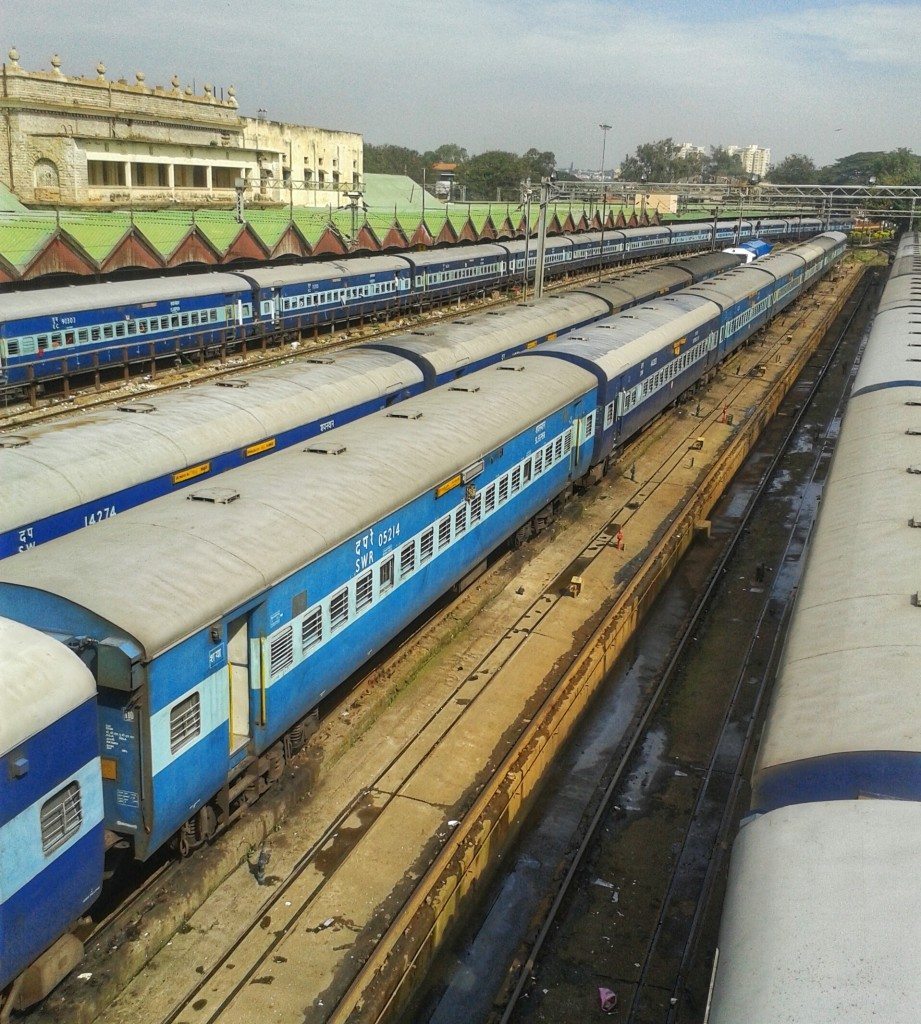
How to get a train ticket at the station in India
The main stations in big cities and tourist centres, such as New Delhi, Mumbai, Calcutta, Agra, Jaipur and Varanasi (and 24hrs at Delhi International Airport) have a separate booking office for foreign travellers called an International Tourist Bureau that you will need to visit if you want to get a last minute ticket from the foreign tourist quota.
Make sure you bring your passport, visa and cash and make sure you go to the right one! Don’t believe anyone that comes up to you claiming that it has closed, moved, burnt down, all trains are cancelled or whatever else! This is a scam to get you to go to their travel agency which may or may not even be able to provide the services but will certainly over charge you!
There is a list of stations with an International Tourist Bureau at www.indianrail.gov.in under the Information and International Tourist tabs. You could try your luck at a smaller station that has an international tourist reservation bureau as it may be less hassle and less waiting.
Either way, to apply for a tourist quota ticket you cannot get these online, you will need to go in, fill out a form showing where you want to go, show your passport and visa, wait and hope that there is a ticket available in the next couple of days for where you want to travel to.
You can only pay in cash with US dollars, UK pounds, Euros, or Indian rupees and you may need to show an encashment certificate, ATM receipt or something that shows that you obtained this cash in a proper, legal way.
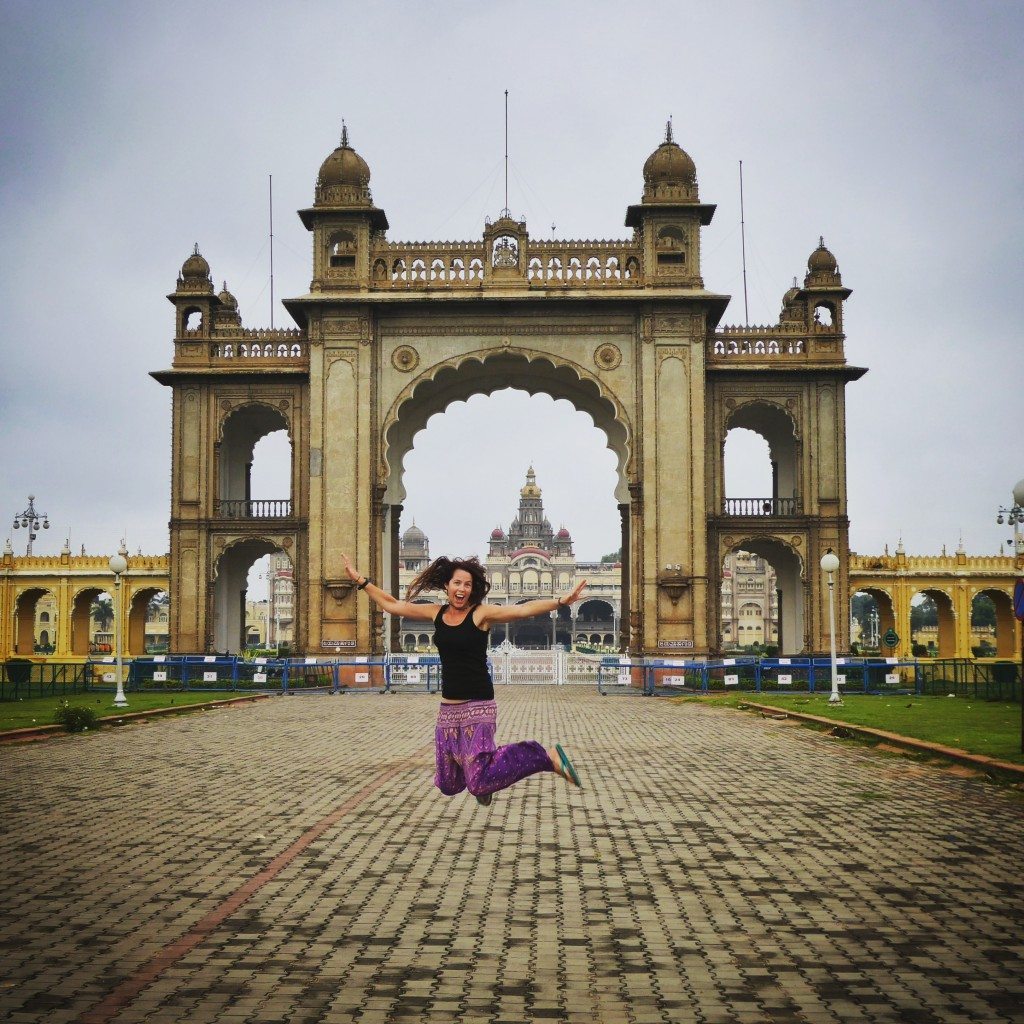
Read More: My Mysore Travel Guide: The best places to visit, stay and eat
So now you know how to book your ticket, read on to know which class to book…
Indian Railway Classes Explained
When you are booking train tickets in India, first you will need to understand what class you want to travel and what type of ticket you have.
The array of 8 classes on Indian trains can seem bewildering at first, although only a selection of these classes will be available on any given train, but let me break it down for you:
(AC1 or 1A) – Air conditioned first class
These can be sleepers or executive chair class and are a comfortable way to travel with lockable compartments in 2 or 4 berths available. However, there are not many carriages of these class and they are not found on every train. Also, the price is double the cost of AC2 and often comparable to a domestic flight.
Example price from Mumbai to Goa – Rs 2,640 ( £26 / US$40 )
(AC2 or 2A) – Air conditioned 2-tier
AC2 is a comfortable and relatively clean way to travel and favoured by most middle class families. AC carriages (and the non air conditioned sleeper carriages) with upper, middle and lower bunks arranged in bays of six on one side of the aisle, and along the coach wall in bays of two (upper and lower) on the other side of the aisle. The bench style padded seats convert into bunks at night.
In the AC carriages, pillows, sheets and blankets are provided for overnight journeys and you also get plug sockets. On AC trains the windows are sealed and tinted this means not so much dust gets in so they are cleaner than sleeper class but the windows are often quite dirty so not good for gazing out at the countryside or taking photos. It’s also a good idea to take a fleece or jumper for the AC carriages too as sometimes I find these too cold.
The main difference between AC2 and AC3 is that there are only 2 levels of bunks instead of 3, so it feels a bit less crowded, and that AC2 has individual berth lights curtains allowing for a bit of privacy.
Example price from Mumbai to Goa – Rs 1,580 ( £15 / US$ 25 )
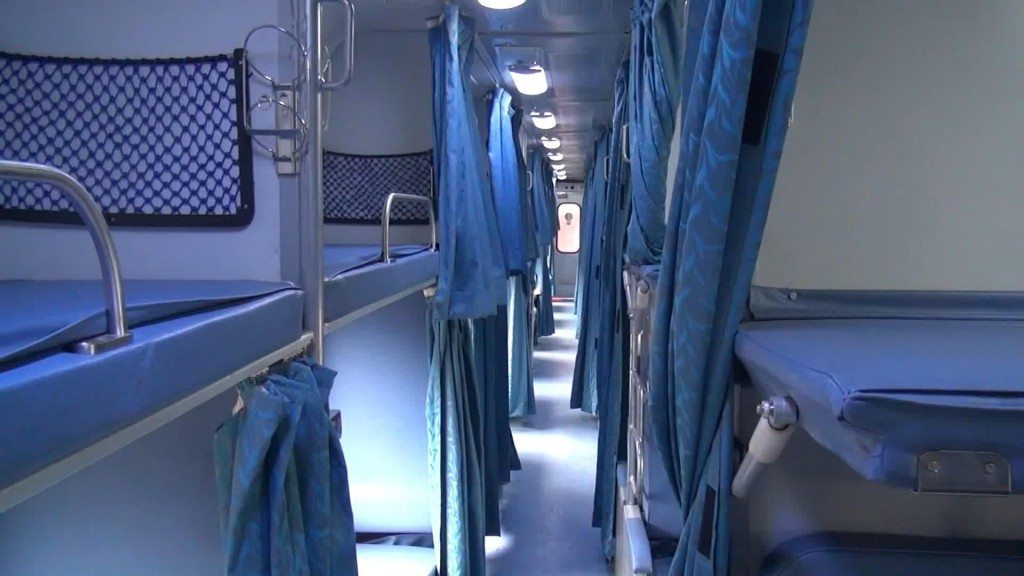
(AC3 or 3A)- Air conditioned 3-tier
AC3 is very similar to AC2 with an open plan and air conditioned carriage with three tiers of bunks instead of 2 and is slightly cheaper. Bedding and plug sockets are provided and the windows are sealed but there are no privacy curtains. Normally the AC carriages are a bit cleaner and the berths are better padded than in sleeper class.
Example price from Mumbai to Goa – Rs 1,120 ( £11 / US$ 17 )
(SL) Sleeper Class
Sleeper class coaches make up the majority of carriages on most long distance Indian trains and this is how most Indians travel.
The bunks are similar to those mentioned before in the AC carriages expect that, instead of air conditioning, there are fans and the windows are open providing a cool breeze and a good view of the countryside that’s better for taking photos!
The windows are fitted with bars to keep out intruders and have shutters you can bring down if it rains. There is also no bedding provided and it’s pretty grubby so you will probably want to bring your own sheet or sleeping bag.
When traveling in the winter (the best time to travel in India) I find that I don’t need air conditioning – actually the AC is often too cold for me and the temperature in sleeper class once the train is moving is not too hot (actually sometimes in the North it can be a bit chilly)
I usually use sleeper class in the winter although I do prefer to take an AC carriage in the hotter months or if I’m traveling alone on a long journey over night.
Riding the rails is an essential experience for anyone visiting India and the atmosphere in sleeper class is always more vibrant. You will often find that families want to talk to you and share their food with you. There are also hawkers coming along the train all the time selling food, drinks and a whole array of other items to the background soundtrack of tinny Bollywood tunes played from mobile phones, the rhythmic clack clack of the rails and the cries of “chai, chai, chai , coffee, coffee, coffee.” You can also buy food from the stations as sellers can pass it through the windows to you.
As all berths have to have a reservation the carriage should not be too crowded but sometimes people do still try their luck and the open windows do mean more noise and dust comes into the carriage but traveling in sleeper class gives you a better insight into Indian life both on and off the train.
Example price from Mumbai to Goa – Rs 420 ( £ 4 / US$ 6 )
Read More: 30 Incredible experiences you can only have in India!
You might also find:
(EC) – AC Executive chair class and (CC) AC Chair class
These classes are a comfortable and air conditioned good choice for day time journeys. There are also newer, modern fast trains like the Rajdhani Express (long distance) and Shatabi Express (day time) on important routes for example Delhi to Mumbai that are very comfortable and faster than the older, normal trains. Food and drinks are sometimes included in the fare and served at your seat.
Example price from Mumbai to Goa – Rs 950 ( £ 9 / US$ 14 )
First class (FC)
The traditional non-air-con 1st class coaches with lockable compartments but these are quite rare now.
(2S) Second Class Sitting
Open plan and non air conditioned cars with wooden or padded plastic seats. Fine for shorter day time journeys and most seats can be reserved but there are usually a couple of carriages like this that don’t need a reservation although I wouldn’t recommend joining the scrum in the unreserved carriages.
Example price from Mumbai to Goa – Rs 250 ( £2.50 / US$ 3.80)
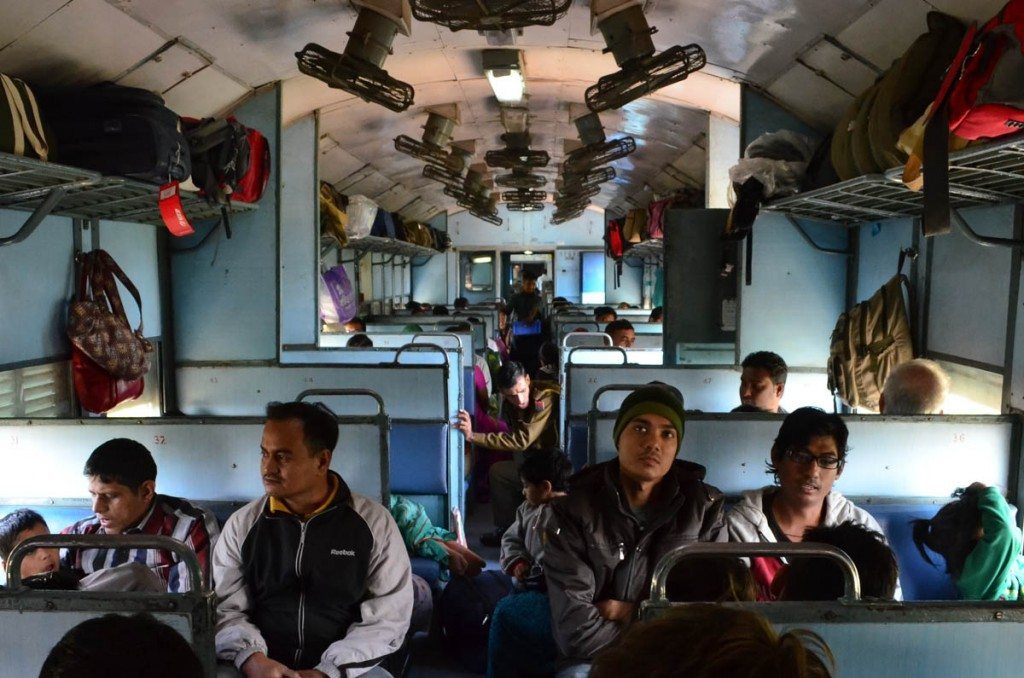
Luxury, Shatabdi and Rajdhani Express Trains
If you are traveling shorter distances between major metro cities, popular tourist destinations or important pilgrimage sites you could book a seat on one of the newer and faster air conditioned Shatabdi or Rajdhani express trains.
There are only 2 classes and only seats not sleepers and the trains do not stop at so many places and the price is higher but these trains will get you where you need to go quicker and more comfortably. Refreshments are also often served on the train and are included in the price.
There is a new high speed train that connects New Delhi to Agra for the Taj Mahal in only 99 mins. Read more here The Delhi-Bhopal Shatabdi Express takes 126 minutes to reach Agra from Delhi.
There are also new ultra luxury train tours you can take in India like The Deccan Express – the most luxurious train in India
There is also a new modern double decker train called the Tejas Express that has just started traveling the Mumbai – Goa route. Read more here…
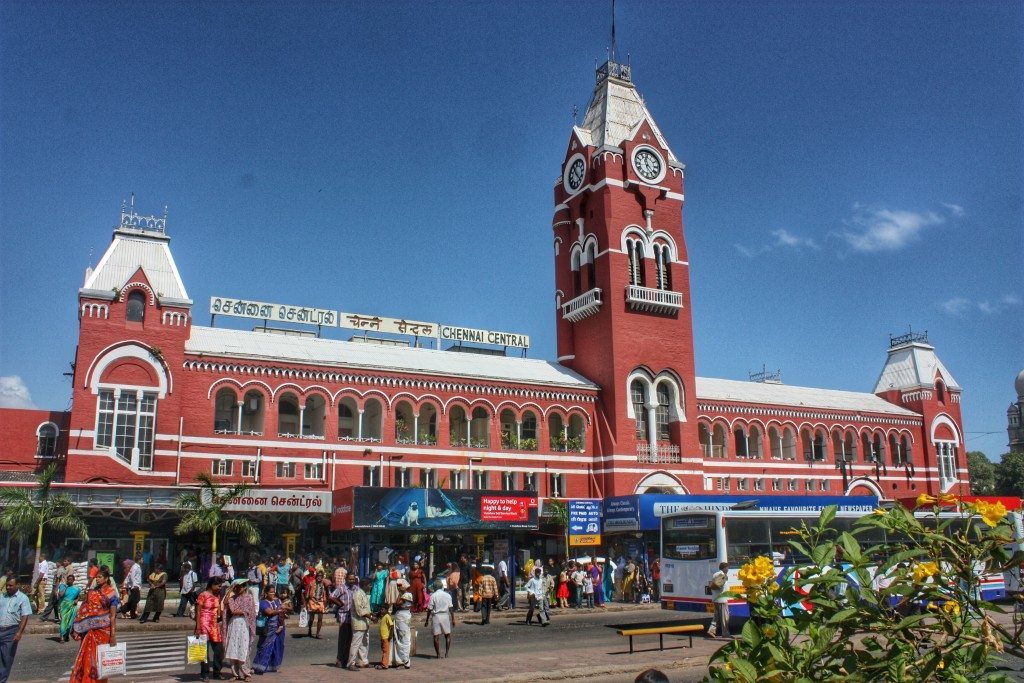
Indian Train tickets explained
So once you’ve decided which class of carriage is most suitable for you, you can book your ticket. Like the classes, there is also a bewildering array ticket types for Indian trains.
Here is an explanation to the ticket types and acronyms that you will find when booking train tickets in India:
As train seats often get booked up far in advance if you see availability then book it while you can! Don’t wait and come back to it in a few days it may be gone and you can always cancel if you change your mind!
If your ticket says CNF then congratulations! You have a confirmed seat on a train!
RAC (Reservation Against Cancellation) and Waitlist (WL) tickets
Once a train is fully booked with confirmed reservations (CNF) next tickets are sold as ‘Reservation Against Cancellation’ (RAC) and then after that passengers are put on the Waitlist.
If you have an RAC ticket, you are allowed to travel on that train you just don’t have a specific seat booked until someone cancels and then you are promoted from RAC to CNF (confirmed). If no one cancels you can still get on the train and you should be given somewhere to sit but maybe not a sleeping berth.
If you are on the waiting list you still have to pay for your ticket but unless you are promoted to RAC or CNF before departure you are not allowed to travel. If you are not promoted to a confirmed seat then your fare will be refunded.

Read More: The Ultimate Guide to Goa
Sounds risky but I’ve done this many time with a waiting list of 15 – 20 or below and always got on the train. You will find that 24 hours before the train is due to depart many people cancel and you should get a text/ email saying that your ticket is confirmed and showing your seat number.
I’ve seen waitlists of over 300 but I wouldn’t bother to join them but I take an RAC or WL ticket under 20 and have a good track record of getting a confirmed ticket.
You can check the status of your booking on www.indianrail.gov.in/pnr_Enq.html or if you booked with Clear Trip enter the PNR number on your booking. If you have the Clear Trip app you can also check PNR status on there and any movement should be sent to you in a text. Don’t give up hope too soon if you are on the waitlist – most of the movement happens the day before departure.
With both of these options there is no guarantee that you will get seats together with your travel companions although it is likely that a family will all cancel together therefore giving you their seats together.
Tatkal (CK) Quotas
Tatkal is Hindi for immediate . There some tickets on key trains that are held back for emergencies and available to book one day before departure and sold with an extra charge. For trains where there is no tourist quota you could try booking at Tatkal ticket. You can book these online from 10am one day before the departure but as the website is temperamental it’s best to go in and try to make the booking.
With Cleartrip you can book tickets from the General quota and the Tatkal quota for travel the following day but you cannot book Foreign Tourist quota tickets. You can also cannot buy more than 10 tickets per month. You cannot amend or change a booking but you can cancel it online and you get the majority of the ticket price refunded.
Tourist Quota Tickets
On many popular trains there’s a special (but small) Foreign Tourist quota which gives foreigners a chance to get on a train! The tourist quota is not available on every train and there are only a couple of tickets available. So hoping for tourist quota tickets can be risky, if you know your itinerary then it’s much better to book your trains in advance.
With tourist quota tickets you will probably still have to wait a couple of days, it does not guarantee a seat on a train and cannot be booked online meaning you have to go and wait around at the ticket booking office (possibly for a few hours) and hope you can get on a train. Tourist quota tickets can be paid for in US Dollars, pounds sterling, or rupees but you may need to show an exchange certificate or ATM receipt.
Read More: 7 Reasons why traveling in India isn’t as difficult as you might think
More Tips for traveling India by train
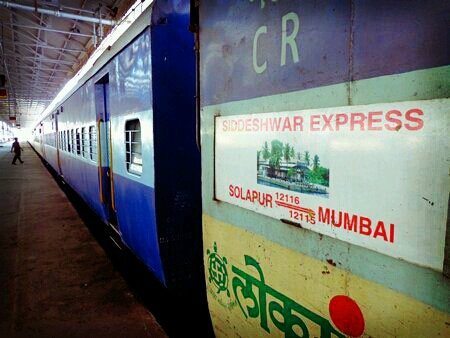
Arrive with good time at the station to find your platform and seat.
Indian train stations can be huge, chaotic places and departure platforms can sometimes change at the last minute so arrive at the train station with plenty of time to find your train.
Your train, coach and berth number will be printed on your ticket and you can check the train number on a board to find out the platform.
Announcements are made in Hindi, English and the local language and reservation lists are posted on the notice board at each station and on the train door too and you can check your name is listed.
Indian trains are also really long, on the platform are markers to show where each train carriage should arrive and each carriage is also labelled.
Your carriage number and seat number is on your ticket for example S6 means the 6 th carriage in sleeper class. B1 is the 1 st AC3 carriage, A1 is the first AC2 and H1 would be first class AC. Usually the higher classes are at the front of the train don’t leave yourself sprinting down the platform trying to find your carriage with your backpack on.
Once on the train you won’t be able to cross between carriages of different classes so you would have to wait until the next station if you got on in the wrong class.
Showing your ticket
When traveling by train in India all passengers are required to show their ticket and passport to the train conductor. Tickets cannot be sent overseas or picked up at the station but Cleartrip issues e-tickets, emailed to you to download and you can also see your tickets in the ‘Trips’ section of the app.
Until recently it was necessary to physically print out the tickets (annoying!) but since Feb 2015 I’ve had no problems simply showing the conductor the booking made on my phone in the app or downloaded email ticket along with my passport.
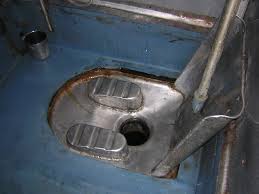
Toilets on Indian Trains
One of the biggest concerns about train travel in India is the toilets! Going to the toilet on any train is never the most pleasant experience and on Indian railways it is not different. There are toilets and wash basins at the end of every carriage with both squat and western options. Neither of which are that clean but not totally unbearable.
There is usually no toilet paper, soap or water but most travellers in India take tissues and hand sanitizer everywhere with them. Be careful you don’t drop anything out of your pocket onto the track too! I haven’t travelled in 1 st class but found that the conditions or the toilets in the AC classes are not that much better than sleeper class.
Food and Drink on Indian Trains
Indian Railways do not always have buffet or restaurant cars on the trains but some sort of food is always available. Hawkers regularly pass through the cars selling all kinds of food and drinks among other things for a few rupees (keep lots of 10 rupee notes handy for train journeys as they often don’t have change and most things are 10 or 20 rupees)
You can also order food from the attendant (veg or non veg) and it will be served to your seat. It’s cheap but I often find the train food is not great and the hygiene can be suspect so I often prefer to take snacks on with me.
There are also often many hawkers at the stations selling food, some stations even have local specialties, sometimes you can even call a restaurant and ask them to deliver to the train – Dominos is even staring to deliver pizzas to trains!
Expect to be late
I joke that Indian Railways must have an unbroken record of never having a train arrive on time but seriously I’ve never been on one that arrives on time so I allow plenty of time for delays. Time is a more flexible concept in India! Allow extra time for your train to be delayed by a couple of hours and chill out – India will teach you to be more patient and you will get there eventually!
The further the train is from the source (the start) the more likely it is to be late. These trains travel over many days all across the country so it’s no surprise that they often get held back. You can check the train running status online if your train will be late at www.trainenquiry.com or look on www.erail.in enter the train number to see how late yesterday’s train arrived to get an idea.
Also be aware that train travel in India can take a long time, India is a huge country and most of the trains travel pretty slowly and stop a lot – the journey from Kerala (Trivandrum) to Delhi could take over 50 hours – that’s over 2 full days (and maybe more if it is delayed) Domestic flights are not cheap but could be an option if you don’t want to spend 2 days on a train! I use Skyscanner to check for the cheapest deals if I need to save time.
How safe are Indian trains?
Train travel in India is one of the safer ways to travel however there are accidents on Indian Railways, the network is huge, aging and derailments do happen, although there has been a big drop in serious incidents since in the early 1990s and traveling by train is still safer than traveling by road!
Apart from accidents, train travel in India is usually pretty safe even for women travelling alone. In the lower classes you may encounter many stares of attention from other passengers but most of the time they are just curious. Foreigners traveling in the higher classes attract less attention and may feel safer because the other passengers are generally more educated but overall you are unlikely to have any problems at all.
On overnight train journeys women should book the upper bunk to avoid any potential wandering hands and also you can go and sleep without having to wait for other passengers to want to sleep. Women should take advantage of the special ladies carriages wherever available (usually on local commuter trains) and take advantage of ladies queues and of course, dress conservatively. If I travel on my own overnight I prefer to go for a higher class and book an AC carriage rather than a sleeper one but generally trains are pretty safe. See more tips for women traveling in India here.
Take care of your luggage though, theft is not common but it can happen if the opportunity is there although I’ve never had any problems. It’s good to sleep with your valuables on you, perhaps in a money belt. You can also chain your bags underneath the seats so they are not easy to grab and run off with when the train reaches a station although this has never happened to me or anyone I know.

Scams and Hassles on Indian trains to be aware of
Unfortunately India has more than it’s fair share of scams and hassle for a traveller to contend and train travel in India is not without its share of scams but you should soon get to realise who is genuine and just ignore touts, hawkers and other scammers. When you disembark after a long train journey in a new destination you are at your most vulnerable and will most likely to accosted with many offers of taxis, tours and hotels.
I always try to get a train that arrives in daylight wherever possible because I feel safer when dealing with these touts and of course it’s easier to find accommodation. Most of these offers will be over priced or a commission racket. The best way to deal with these is to just ignore all the touts and anyone that comes up to you, don’t engage at all and keep on walking confidently to find the official pre paid taxi or rickshaw stand (most big stations have them)
Failing that get out of the vicinity of the train station and just hail down a regular rickshaw who is just going about his normal business instead of preying on tourists and you are more likely to get a decent price and get taken straight to your hotel. It’s a good idea to know a landmark near your accommodation as more often than not the rickshaw driver will not know where it is although he may stop and ask people on the street as he goes along to help him find the place.
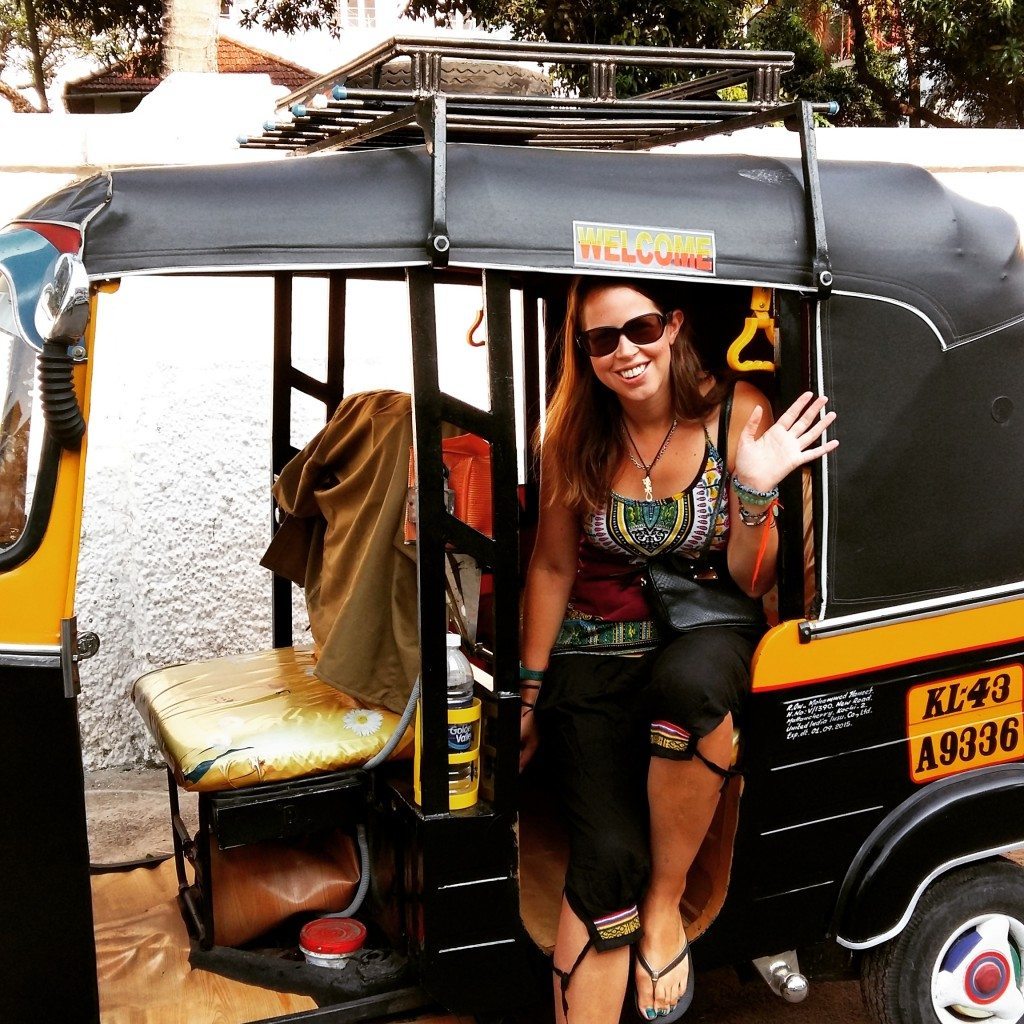
Read More: How to avoid the scams and survive your first time in Delhi.
Also be wary of anyone around places like train and bus stations, airport and major tourist attractions who tell you that where you want to go is closed, moved, burnt down, your train is cancelled or the hotel you want to go to is disgusting, closed, unsafe and that they will help you find an alternative or take you to the tourist information centre or ticket office.
Even if they look ‘official’ and are in uniform (this happened to me and I got scammed in Delhi ) or you will lend up being taken to an alternative hotel from which they will earn a commission or at some fictitious travel agency or tourist information centre paying a lot of money for a service that may not even exist. I’ve heard of people booking and paying for a whole 2 week tour that turns out to not exist or paying over the odds for a taxi all the way to Varanasi when it was just that the train was delayed. Read more about common scams in India.
Suburban Trains and Metros
Everyone’s seen those images of famously overcrowded Indian trains with people sitting on the roof and hanging on the side but I’ve never seen anything like that. Riding on the roof is illegal and I’ve never seen anyone doing it, the suburban trains or basic unreserved 2nd class carriages can get busy especially at peak periods, in Mumbai it’s called super dense crush load!
I avoid traveling in those peak hours on local trains but as long as your quick and prepared to barge on a bit taking the local commuter trains in Mumbai can be fun and a cheap and efficient way of getting around the crowded, congested and buzzing city.
Train travel in India is constantly changing and improving. India is rapidly building and introducing metro and rapid transit rail systems in many cities. Delhi’s metro is impressive, Calcutta has had one since 1984 and more metros are also started to operate in Bangalore, Mumbai, Chennai, Kochi and Jaipur.
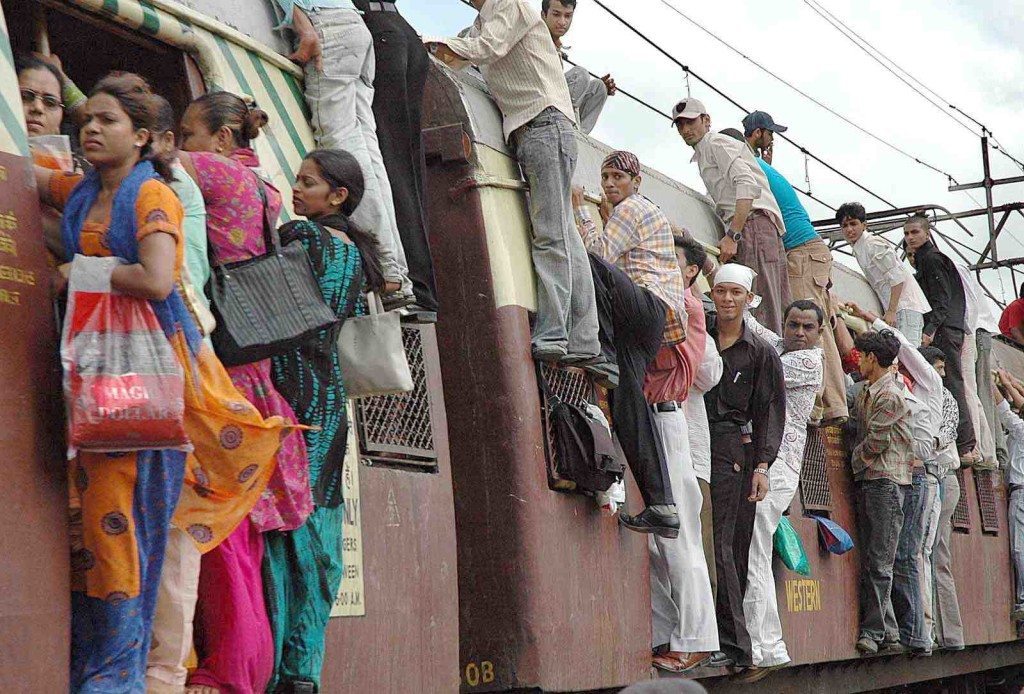
What if you like to be flexible and spontaneous?
I hear you! I do as well – I don’t like to have all my travels planed out as you never know what’s going to happen, who you will met, which places you will love and wish to linger longer in and which you will hate and want to leave asap.
You cannot change or amend your booking online though so what I do, as sleeper trains are so cheap, I often book a couple of options and then cancel the ones I don’t want only losing a tiny bit of money but it allows me to be more flexible.
It’s easy to cancel trains on the Clear Trip app and get a refund up to 4 hours before departure (not a full refund but you get most of it back).
Read More: The perfect route and itinerary for traveling India
Do you have any more questions or tips for train travel in India? Leave a comment below
Pin me and help another traveller 🙂
Want more India travel tips and stories?
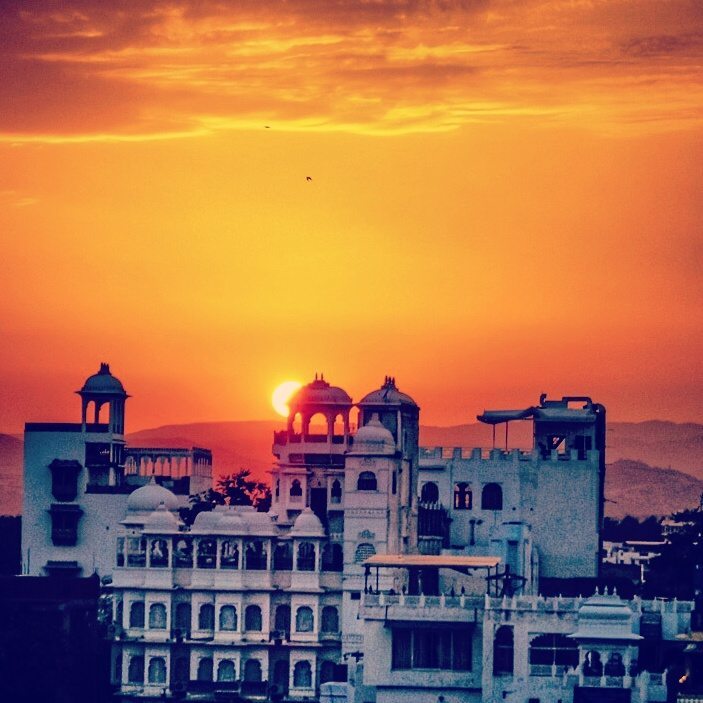
Sign up to the FREE newsletter and discover Incredible India with me!
Volunteering in Uttarakhand
Digital nomad interviews: radhika and johnny from fulltime nomad.
Related posts
Exploring auroville: a utopian community in south india, searching for tigers in the sundarbans, exploring pune: nothing in india is what you expect, 27 comments.
Yes please..would be very helpful..as I would like to book train tickets from South Africa.
That would be very helpful please
PDF would be fab 🙂
Super helpful!
I like how thorough many of your articles are. This is helpful not just to foreigners but also Indians.
Thanks so much – glad to hear that! 🙂
Cool, glad its helpful – I will work on making it into a downloadable PDF 🙂
Can we get India train tickets from you?
From me? No, I’m not a travel agent so I can’t use my account to book for other people sorry.
The easiest way is to ask http://www.indiasomeday.com they can book train tickets for you for a small commission. I’ve travelled with them before see more here – http://www.global-gallivanting.com/my-review-of-traveling-with-india-someday/
hope this helps you 🙂
Good to see your love for India and Indian Railways. The blog is surely informative. However, you should be aware of the current updates of Indian Railways. To get updated info, keep a check on http://www.getpnrstatus.co.in
Thanks, glad its been useful
Hi Anna, what do you do about safety when needing to use the toilet if you are travelling solo? Do you have to take your day pack with you and have on your back? Could imagine it would be quite tricky sqatting on a moving train with a day pack on your back. I wouldn’t imagine it’s safe to leave it at your seat? Thanks
Hi Shani, normally I have my valuables in a smaller pack and take it with me to the toilet. I also keep my smaller bag on valuables under my head normally when I’m sleeping. They do have handles to hold on too while squatting on a moving train and they also have some western toilets. You can also bring a chain to chain your bag to the seat but I haven’t had a problem with theft on the train. Hope this helps 🙂 Happy Travels
Just had my 1 year visa approved, flights are now booked but I was dreading the IRCTC registration……… but using your detailed instructions and reading seat61.com I completedthe whole process and received verification codes in less than an hour. Thanks for a fab website Anna. Woohoo, India here I come 🙂
Awesome! So glad my blog helped! Hope you have a great trip!
Nice one you put ample information in your blog, also add this to solve the confusion about waiting list problem In Indian Railway.Thanks http://blog.railyatri.in/decoding-the-myths-about-remote-location-wait-list/
Great blog and awesome pictures indeed. Your tips and suggestions will be certainly useful for many foreign travellers who come to India and want to travel safely.
Thanks, glad its helpful
Great blog Anna,You know more than any other citizens of India.These information are very useful for people using railways.If possible kindly include info regarding dustbins in Indian railways.Many people don’t know that there is a dust bin present in every compartment,It is located below the wash basin. Thanks,
Thanks Laxmikant 🙂
Hi Anna Love your website! We are planning to visit India for the first time this October November and found your fantastic website. You give such amazing all-round advice – superb! We would like to travel mostly by train, so your train piece is just what we need. However, most of the photos don’t come up, especially the ones inside the different compartments. I have tried in several countries and with many different providers, so it might be an instruction problem on your side. Would love to see them, so could you please check this out. Thank you so much for an exceptional website. Kindest regards Crystal and Joerg
Nice Article!!! Thanks for sharing such a amazing article with us, keep it up more.
Ive been travelling in indian trains since i was 1 year old (because i’m from india ) . I dont know why i still half your article .
Nice Blog !! It is a complete guide to the travelers especially foreigners. Food is also a major issue in India while traveling on a train. Call 07827998877 or visit traveler food website to order your food on your seat.
[…] by train in India is the best experience! I will not talk about the many kinds of tickets because other bloggers already covered this topic. But I advise you to book your train tickets in […]
Train travel in India can be an overwhelming experience. It takes meticulous planning ahead of time. We were uniquely blessed to be easily able to travel the complex and far flung vast expanses of perhaps the third largest railroad system in the world. Arguably the most used railway system as well. Without going into detail I can tell you confidently, that it was absolutely splendid! In contrast to that luxury, we also traveled on all four gauges (narrow, meter, broad and standard gauges) of the vast Indian Railways on every known classification. On some stretches the four gauges ran within and concurrently. I don’t know of any other place on the planet where that is so common over long stretches, lol!
The sound of the tracks and bewitching alpine horns as well as the archaic whistle on some old hobbies is etched in my mind. Some of the best quality REM deep sleep I’ve ever experienced was in those wonderful trips. The scenery was exquisite. Whether it was rumbling through megalopolis urban centers or the tranquil expanses of the country side (a veritable diaspora of green farmland, to the dense and foreboding jungles to the serene expanses of the many ocean beaches, the landscape was haunting. Aside from all these we also enjoyed being unhooked from the train next to a private cove with a pond or lake to camp out at. Stuff of dreams that would easily be the envy of many. Uncommon and common experiences to cherish forever.
I have to say I’m compelled to agree, it’s an !incredible !India!
[…] think nothing of jumping on a train and backpacking India alone but that’s because I’ve been here for a while, I’ve heard […]
Leave a Comment Cancel Reply
Save my name, email, and website in this browser for the next time I comment.
Yes, send me the newsletter.
This site uses Akismet to reduce spam. Learn how your comment data is processed .
This website uses cookies to improve your experience. We'll assume you're ok with this, but you can opt-out if you wish. Accept Read More

- 2 Weeks for Couple
- 2 Weeks for Family
- Thailand Lantern Festival
- Indonesia(Bali)
- South Korea
- China (HK, Taiwan)
- Itinerary Ideas
- Asia Highlights Travel Reviews
- Thailand Travel Reviews
- Vietnam Travel Reviews
- Cambodia Travel Reviews
- Japan Travel Reviews
- Myanmar Travel Reviews
- China Travel Reviews

Train Travel in India
Travelling by train, the railway network, express trains, classes of train, timetables & booking, indrail pass, special trains, best railway stations.
Travelling by train is an essential Indian experience. Trains offer more space and a smoother ride than buses. It is especially recommended for long journeys that include an overnight travel. India's rail network is one of the largest and busiest in the world, and Indian Railways is the world's eighth-largest employer on earth, with roughly 1.3 million employees.
Train travel in India can be intimidating. It can be confusing to navigate the Indian Railway system, but once you figure it out, it isn't so bad at all. Here is a guide on travelling by train in India.
- India's rail network is one of the largest and busiest in the world.
- The Gorakhpur Railway Station has the longest railway station in India.
- The Air-Conditioned First Class coach is found only on the most popular inter-state train routes.
- You can check train schedules at www.irctc.co.in
- The Indrail Pass can only be purchased by foreign nationals and non-resident Indians.
The best way to see India is not by plane, but by land on their incredible Indian railway system. No visit to India is complete without experiencing the bustle of the Indian railway stations and a safe and comfortable journey on the Indian Express Train.
You can safely forget media images of overcrowded suburban trains with people sitting on the roof-tops. On the long distance express trains in an AC Chair Car or an AC1 or AC2 sleeper, all seats and berths are reserved, inexpensive, comfortable and a safe way to get around India.
A long distance train journey such as Bombay to Delhi, Delhi to Varanasi or Delhi to Udaipur can save costs by traveling on the overnight AC Sleeper Trains. Train travel in India is an essential Indian bucket list experience!
With one of the largest rail network in the world, India came up over and over again as a country that is a must-see by train. The rail network in India is the fourth largest in the world after USA, Russia and China.
As of April 2019, the Indian Railways route length network spans over 115,000 km, and runs more than 20,000 passenger trains daily, on both long-distance and suburban routes.
The Indian railway network is not only ideal for long-distance travel but to transport bulk commodities due to it being energy efficient and an economic mode of conveyance. The railway network of India has brought the country closer together, hence creating a feeling of unity among Indians.
Explore similar itineraries: 9-Day India Tiger Safari and Golden Triangle Tour 11-Day India and Nepal Tour
Discover real reviews of Highlights Travel Family 's best-rated service across trusted platforms.
Express trains are express rail services of India. Express trains make less stops, unlike ordinary passenger trains. Most express trains have special names to identify them easily. The names of the trains usually denote the regions they connect and the routes they go on.
Duronto Express trains are most likely the fastest trains in India. They provide a non-stop point to point service, connecting the metros and major state capitals of India. They have air-conditioned one-,two- and three-tier seating.
The Rajdhani Express travels at a top speed of 130-140 km/h, with limited stops. It is.a fully air-conditioned, deluxe train, providing you a unique opportunity of experiencing Indian railways at its best. They run from Delhi to Howrah, Mumbai, Bangalore, Bhubaneshwar, Thiruvananthapuram, Guwahati, Patna, Chennai, Securanderabad, Jammu Tawi, Ranchi, Ahmedabad and back to Delhi.
Indian Railway has several classes of travel with or without air-conditioning. Slow passenger trains have only unreserved seating, whereas Express trains have only air-conditioned classes. Fares for all classes differ and unreserved seating is the least expensive.
Turn up at a booking office without a clear idea of classes, and you're likely to leave with a headache and no ticket. There are 8 classes of carriages on the Indian Railway. Below is an overview of them.
We recommend 3AC, 2AC, or 1AC for long trips and 1A for short day trips as they provide the most comfort among the other classes.
Unreserved General Class (UR)
The least expensive, no reservation required and for the unfortunate one who could not secure a ticket in the Sleeper Class.
There's sitting or standing room only, and any spare floor space is occupied by those willing to sleep on it. Most seats are simply wooden benches, although some trains do have padded benches.

Second Class (2S)
Reservations are required in Second Class (2S). 2S is usually found on daytime inter-city trains and is a cheap way of traveling. There are three seats on either side of the aisle, and they do not recline.
Most of them are cushioned bench-style seats, although some newer carriages have individual seats. There are no sleeping facilities in this class and the carriages are cooled with fans.
Sleeper Class (SL)
The carriages in the Sleeper Class are divided into open-plan compartments with six beds in each. The beds are stacked vertically in three-tiers on either side of the compartments. During the day, the middle beds must be folded down flat against the compartment walls to allow passengers to sit on the lower beds.
Fans are provided on the carriage ceiling to produce some ventilation, and the windows have bars to keep intruders out as they are usually kept open. The bathrooms have both western and Indian style toilets.
Three Tier Air-Conditioned Class (3AC)
The Three Tier Air-Conditioned Class, also known as 3AC, offers a significant step up in terms of comfort and quietness. The carriages are laid out in the same manner as in the Sleeper Class.
However, the windows are covered with tinted glass that is unable to be opened, and air-conditioning keeps the carriages cool. Bedding and hand towels are provided for the passengers.
Privacy is the main issue due to the open nature of the compartments. The carriages and bathrooms in the compartments are usually much cleaner than those in the Sleeper Class.
Two Tier Air-Conditioned Class (2AC)
The Two Tier Air-Conditioned Class, known as 2AC, attracts more of India's upper-class travelers. There is more space, as there are only four beds in each compartment. The beds are stacked vertically in two tiers on either side.
The best thing about the 2AC is the added benefit of privacy with curtains at the entrance of each compartment, as well as across each of the beds that run along the aisle. The curtains are usually always kept drawn to ensure privacy. Bedding is included in the fare.
First Class Air-Conditioned (1AC)
First Class Air-Conditioned, known as 1AC, is found only on the most popular inter-state train routes. The cost is double of 2AC and is comparable to that of flying. Compartments have lockable doors, carpet, and either two or four beds, stacked vertically in tiers. The beds are wider than other classes. Bedding, towels and room freshener are also provided.
The only problem with 1AC is that it is not possible to specify if you want a two-bed or four-bed compartment when you book. However, couples are normally allocated in the two-bed compartments, while singles and families are accommodated in the four-bed compartments.
Air-Conditioned Chair Car (CC)
Air-Conditioned Chair Car carriages or CC are commonly used for travel between major cities, especially those sectors that are frequented by business travelers. They have three seats on one side of the aisle, and two on the other.
The seats recline, there are overhead space for luggage, and bathrooms tend to be relatively clean. It is a comfortable way to travel for any day trips.
Executive Air-Conditioned Chair Car (1A)
Executive Class is only found on Shatabdi Express trains, which are premium super-fast passenger trains that run between major cities such as Delhi, Agra and Jaipur, as well as selected Duronto Express trains. It is Indian railways' version of an airline business class.
Carriages have only two seats on each side of the aisle. This makes them less crowded, and provides more leg room and luggage space. This class is well maintained, clean, and making it a pleasant day journey. However, its cost is significantly more than the Air-Conditioned Chair Car.
Most stations in major cities such as Mumbai and Delhi operate 7-days a week. The most common trains that leave these stations are the Rajdhani Express trains. Most trains leave the stations in the mornings between 6am to 10am and in the evenings between 4pm to 8pm.
You can always check the train schedules at https://indianrailways.info.
There are many ways to book a train ticket in India. Booking online should be the easiest way to buy tickets, although it may not be as straightforward as you would expect. The reservation system is open every day, so keep this in mind if you are buying tickets from abroad.
Online reservations can be made on the official Government Indian Railway Catering and Tourism Corporation Online Passenger Reservation website (www.irctc.co.in). Using the site can involve a frustrating and complex registration process.
Unfortunately the website is not user friendly. It is slow and temperamental; often the service is unavailable although if you keep trying it will work eventually!
A much easier way to arrange your train travel in India and book trains, even from abroad, is to use a website like Cleartrip.com to search and book trains. Their website is much more user friendly and easier to use. You can also pay with an international credit-card. However, they do charge a small service fee and not all trains are displayed.
Depending on where you are traveling to and what class of train you are choosing, the train fares will vary. The usual fares for AC1 trains are between US$40 to US$60 and between US$10 to US$40 for AC2 trains.
Reservations of train tickets can be booked 120 days in advance. Some short distance trains or day time trains have lesser advance reservation periods of 60, 30, or 10 days. With Asia Highlights, we can help arrange your train ticket bookings as well assist you with an itinerary to explore India..
To explore India, the Indrail Pass provides an excellent value for money way to travel, and enhances the charm of holidays for visitors from abroad. The Indrail Pass offer visitors the facility to travel as they like, over the entire Indian Railway system without any route restriction within the period of validity of the ticket.
These pass can only be purchased by foreign nationals and non-resident Indians on payment of US Dollars, Pound Sterling or any other convertible foreign currencies. The Indrail Pass has now been made more attractive for transit and short stay visitors. It is available for a duration ranging from 1, 7, 15, 21, 30, 60 and 90 days.
India is a hot tourist destination with its majestic monuments, breathtaking scenic beauty, rich flora and fauna, and as a shopping arcade. The Indian Railway Catering and Tourism Corporation along with the Indian Government have started some special trains to provide a comfortable journey to the tourists. These trains are generally termed as luxury trains.
Maharajas Express
This is one of the most luxurious trains of the world. Complementing its name, Maharajas Express comes with stunning interiors and best in class amenities.
The suites are equipped with antique furniture, wall-to-wall carpets, rich paintings, soft beds draped in silk bed linens, and other facilities like free WiFi and LCD television sets.
Palace on Wheels
This is one of the oldest luxury trains in India. Palace on Wheels is renowned for its warm hospitality and high quality amenities. Each coach is decorated to suit the ambiance of a palace while the food served brings to you the real taste of Rajasthan.
On board medical service, free internet, television sets and individual attendants are some of the services available.
Golden Chariot
Golden Chariot luxury train takes you to the off-beaten destinations of South India. It covers all important tourist spots in Karnataka, Goa, Kerala and Tamil Nadu with Pondicherry. The Golden Chariot travels through the states of Karnataka, Kerala, Tamil Nadu and Goa.
You can experience world-class facilities ranging from personal wardrobes to writing desks, 5-star hotel accessories to electric sockets.
Most people may not be aware of the grand and exotic railway stations which India treasures. There are quite a few railway stations in India which are architecture marvels. Have a look at these beautiful railway stations in India.
Chhatrapati Shivaji Terminus, Mumbai
The Chhatrapati Shivaji Terminus is a classic structure of Victorian-Gothic style architecture in India. In 2004, it was named a 'UNESCO World Heritage Site'. The iconic train terminus is well-connected to all parts of the country. Being the icon of Mumbai, this railway terminus is a very vital part of the city's life and growth.
Ghum, North Bengal
Ghum Railway Station is of the Darjeeling Himalayan Railway and is the highest railway station in India. It is situated at an altitude of 2,258 meters, and is a UNESO World Heritage Site. From Ghum there are roads that connect you to different places such as Kalimpong, Darjeeling, Mirik and many more.
Dudhsagar, Goa
The Dudhsagar Railway Station is small and south of Goa. The majestic Dudhsagar Falls is to the left of the railway station giving this station a pleasant outlook.
Char Bagh, Lucknow
The Char Bagh Railway Station in Lucknow is considered to be one of the most beautiful railway stations in India. The architecture is a blend of the Awadhi, Rajput and the Mughai styles.
Howrah Station, West Bengal
Built in 1854, the Howrah Station is the oldest railway station in India. The station is situated on the banks of the River Hooghly and it is linked to Kolkata with the help of the Howrah Bridge. It has the highest train handling capacity of any railway station in India and it has 23 platforms to serve the people.
Explore with Asia Highlights
As the Indian railway system can be very confusing, travelers can found themselves in a hard place to pick the right trains. With Asia Highlights, we can help you arrange your Indian train experiences so that you won't have to worry of booking tickets on your own.
Why Asia Highlights (10,000+ reviews & 98.8% 5-star rating)
- Save Your Time:
- Less research, more enjoyment!
- Real-time 1V1 expert planning
- Maximize Your Flexibility:
- Personal local guide and ride
- Explore at your own pace
- Celebrate Your Journeys:
- Specially-crafted family adventures
- Celebrate milestones with style!
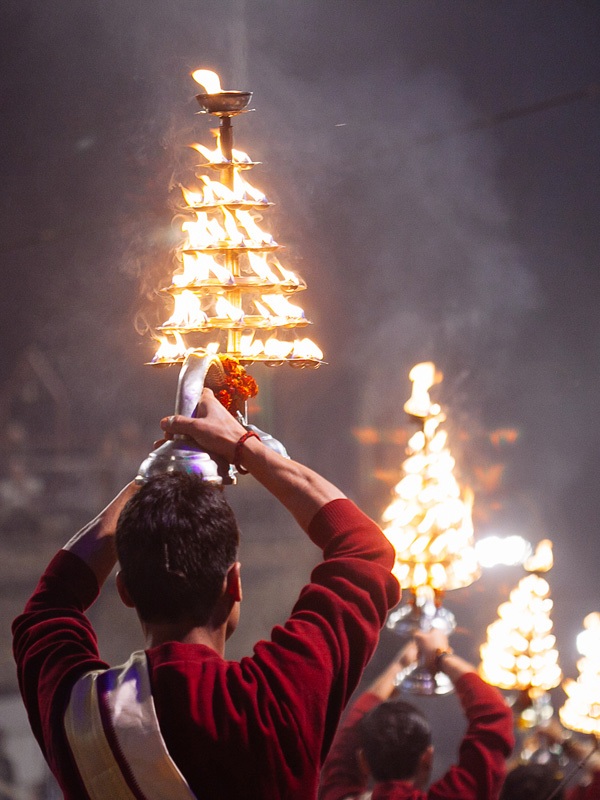
- 7-Day India Golden Triangle Tour
- 8-Day Diwali Festival in India Golden Triangle Tour 2024
- 9-Day India Tiger Safari and Golden Triangle Tour
- 9-Day India Golden Triangle with Varanasi
- 11-Day India and Nepal Tour
- 11-Day India Holi Festival Tour 2024
- 14-Day Rajasthan Tour Package for Westerners
- 14-Day Romantic Honeymoon Trip in India
- 14-Day India, Nepal, and Bhutan Tour
- 2-Week Luxury India Tour
- 21-Day India, Nepal and Bhutan Tour
- India Itineraries 2024: from 5 Days to 1 Month
- 2 Weeks in India 2024/2025: Top 4 Itineraries
- How to Plan a Trip to India 2024/2025 for First Timers
- How to Plan an Awesome Family Trip to India in 2024
- Plan an Awesome Trip to India, Bhutan and Nepal (6 Tips)
- How to Plan an India and Nepal Trip 2024/2025
- How to Plan a Trip to India for Holi 2024
- A Complete Guide to Experiencing Diwali
- How Much Does a Trip to India Cost?
- Is India Safe to Travel? Women & Kids (Tips for 2024/2025)
- Best (and Worst) Times to Visit India 2024, Rainy Season?
- Best Times to Visit the Taj Mahal?Expert Tips in 2024
- Weather and Where to Go in India in Janurary 2024/2025
- Weather and Places to Go in India in February 2024/2025
- Weather and Places to Go in India in March 2024/2025
- India Weather & Best Places to Visit in April 2024/2025
- Weather in India in May 2024 & Travel Tips for First-Timers
- India in June: Weather & Best Places to Visit 2024/2025
- India Weather & Best Places to Visit in July 2024/2025
- India in August: Weather & Best Places to Visit 2024/2025
- September Weather in India & Tips (Places+Crowds) 2024
- October Weather in India & Tips (Places+Crowds) 2024
- Weather and Where to Go in India in November 2024
- Weather in India in December 2024 & Tips for First Visits

Jessie was amazing ! Everything from her level of English to her understanding of what we valued .
We had a good time exploring the city with Selinda!
Our guide lele is a wealth of information, Lele is very professional and very attentive to our needs. Lele is amazing. Lele got everything spot on. It probably helps that Guilin is a brilliant place to visit so Lele has great material to work with but that doesn't take anything away from how much Lele helped make it a great trip.
Our guide for Beijing was super knowledgeable and experienced and able to help us to achieve as much as we wanted within the time given. We had a fun time guided by him as he is also super humorous and you can see how he interacts with the vendors and people whom he comes by. Thank you for a very enjoyable time in Beijing and accommodating to all our needs!
Our China Highlight guide. Michael, was attentive, thoughtful and knowledgeable. He narrated many interesting historical events about Chengdu while touring around the city and having afternoon tea with us. He was thoughtful to provide us with snacks during long hikes at Leshan or walks around the city.
She was very flexible and added extra time when we needed it and we felt extremely well taken care of. She also chose the best restaurants for us,
Our tour guide Helen, was excellent, she was very kind, professional and passionate for her work and she also loves Pandas! She will take you to take the best panda photos and to know more about Chengdu city. Our tour was great, she took us to all our destinations always with the best spots: Temples, pagodas, famous streets, theaters, pandas...you name it! Everything was great.
He picked up our pre-booked boat/other excursions tickets so we were able to avoid all the long lines and chaos. He is knowledgeable of the places we visited, courteous, fun to travel with and well-versed in Chinese classics.
Tom is the guide that will take you to where no other guide will. We pushed for the experience and Tom and the team delivered more than what we could have ever asked for. His English speaking ability and his Chinese history knowledge is second to none.
More reviews
Get Inspired with Some Popular Itineraries
At Asia Highlights, we create your kind of journey — your dates, your destinations, at your pace. You can have any trip tailor made for your travel.
More Travel Ideas and Inspiration
Sign up to Our Newsletter
Be the first to receive exciting updates, exclusive promotions, and valuable travel tips from our team of experts.
Why Asia Highlights
Where can we take you today.
- Middle East
- African Safari

- Travel Agents
- Our Differences
- Privacy Policy

Address: Building 6, Chuangyi Business Park, 70 Qilidian Road, Guilin, Guangxi, 541004, China
- Things To Do
- Entertainment
- Food Travel
Travel Tips
- Travel News
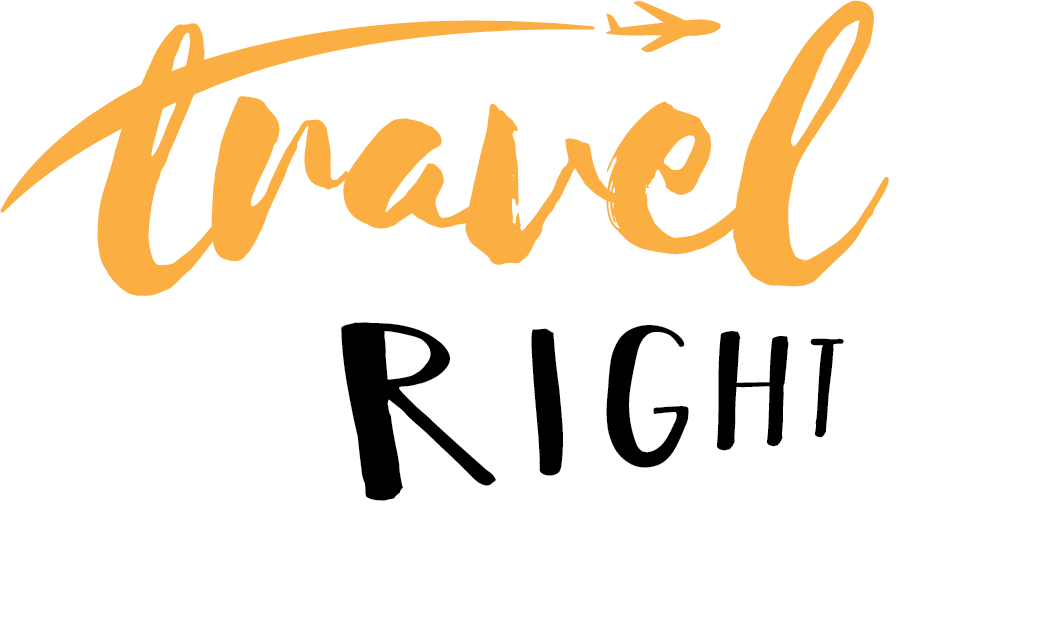
India Train Travel: Tips For Navigating The Indian Railway System
Introduction.
Welcome to the vibrant and mesmerizing world of train travel in India! With one of the largest railway networks in the world, India offers a unique and thrilling experience for adventurers and explorers. Navigating the Indian railway system can seem daunting at first, but with the right tips and information, you’ll be ready to embark on an unforgettable journey.
Train travel in India is not just a mode of transportation; it’s a cultural experience that allows you to immerse yourself in the diverse tapestry of the country. From bustling metropolises to serene villages, the Indian railways will take you through picturesque landscapes and give you a glimpse into the rich heritage of this incredible nation.
India’s railway network spans the length and breadth of the country, connecting major cities, towns, and even remote regions. Whether you’re planning a short day trip or a cross-country adventure, the Indian railway system offers a wide range of options to suit your travel needs.
In this guide, we’ll provide you with essential tips and insights to make your train travel in India smooth and hassle-free. From booking tickets to understanding different train classes, we’ll cover every aspect to ensure that you’re well-prepared for your journey.
So, grab your backpack, hop on board, and get ready to embark on an incredible train adventure through the heart of India. With our expert advice, you’ll be able to navigate the Indian railway system like a seasoned traveler and create memories that will last a lifetime.
Understanding the Indian Railway System
Before embarking on your train journey in India, it’s important to familiarize yourself with the intricacies of the Indian railway system. Understanding how the system works will help you plan your trip effectively and make the most out of your experience.
The Indian railway system is operated by the Indian Railways, a vast network that covers almost every part of the country. It consists of several zones and divisions, with each zone having its own set of trains and routes. The major zones include Northern Railways, Southern Railways, Eastern Railways, Western Railways, and Central Railways.
The railway system in India is known for its diversity of trains, catering to the needs of different travelers. From local passenger trains that stop at every station to high-speed express trains that connect major cities, you’ll have a wide range of options to choose from.
One unique feature of the Indian railway system is the “classes” system. Trains offer various classes ranging from basic seating arrangements to luxurious compartments. Each class comes with different facilities and amenities, allowing travelers to choose according to their preferences and budget.
The Indian Railways also has a well-established reservation system, allowing passengers to book train tickets in advance. This is particularly important during peak travel seasons when trains can get crowded quickly. It’s advisable to book your tickets as early as possible to secure your preferred class and avoid last-minute disappointments.
It’s important to note that train schedules in India can sometimes be unpredictable due to factors like inclement weather, maintenance work, or unexpected delays. Therefore, it’s essential to keep an eye on updates and be prepared for any changes to your travel plans.
Understanding the Indian railway system will not only help you plan your journey but also enable you to appreciate the vastness and complexity of the network. So, dig deeper into the details, familiarize yourself with the different zones and classes, and get ready to embark on an incredible train adventure in India.
Planning Your Train Travel in India
Planning is key when it comes to a successful train journey in India. From selecting the right destinations and routes to deciding on the best time to travel, careful planning will ensure that you make the most out of your trip.
One of the first steps in planning your train travel in India is choosing the destinations you wish to visit. India offers a plethora of options, from bustling cities like Delhi and Mumbai to serene hill stations like Shimla and Ooty. Research and explore the different regions of the country to get a better understanding of the places you would like to include in your itinerary.
Once you have identified your destinations, it’s time to decide on the routes and trains that will take you there. The Indian Railways has an extensive network and multiple train options connecting various cities. Consider factors such as travel time, train frequency, and the type of train (express, superfast, or local) when selecting your routes.
The timing of your train travel is also crucial. India experiences different climates throughout the year, and some destinations may be more enjoyable during specific seasons. For example, hill stations are best visited during the summer months to escape the heat, while coastal regions are popular during the winter season. Keep in mind the weather conditions and festivals when planning your travel dates.
Another important aspect of planning your train travel in India is budgeting. Train fares in India can vary depending on the class and distance of the journey. Research the train fares beforehand to get an estimate of your transportation costs. This will help you manage your expenses and allocate your budget accordingly.
While planning, keep in mind that trains can often get crowded, especially during peak travel seasons. It’s advisable to avoid traveling during major holidays, festivals, and weekends if you prefer a more comfortable and less crowded experience. If you have a flexible schedule, consider traveling on weekdays or during off-peak seasons to have a smoother journey.
Lastly, for a more convenient and hassle-free experience, consider using online platforms or mobile applications to check train schedules, book tickets, and receive updates on train status. This will save you time and ensure that you have the latest information about your train journey.
By taking the time to plan your train travel in India, you can ensure a smoother, more enjoyable journey. So, research your destinations, select suitable routes and trains, choose the best time to travel, and get ready to embark on an incredible adventure through the enchanting land of India.
Booking Train Tickets
Booking train tickets in India can sometimes be a daunting task, especially for first-time travelers. However, with the right information and resources, you can easily navigate the process and secure your tickets hassle-free.
There are several ways to book train tickets in India:
- Online Booking: The Indian Railways offers a user-friendly online booking platform called the Indian Railway Catering and Tourism Corporation (IRCTC) website. You can create an account, search for train availability, select your preferred class and seat, and make payment online. It is advisable to book your tickets well in advance, especially for popular routes and during peak travel seasons.
- Mobile Applications: Many third-party mobile applications, such as Cleartrip, MakeMyTrip, and Goibibo, offer the convenience of booking train tickets through your smartphone. These apps provide similar features to the official IRCTC website, allowing you to search for trains, check availability, and make secure online payments.
- Reservation Counters: If you prefer the traditional way of booking tickets, you can visit the reservation counters at various train stations. These counters are usually open for a specific period, and you can purchase tickets in person by providing your travel details and making cash payment.
When booking train tickets, it’s important to have the following information ready:
- Date and Time of Travel: Know your travel dates and preferred train timings to find the most suitable options.
- Origin and Destination: Identify the starting point and the final destination of your journey.
- Class of Travel: Decide on the class you wish to travel in, considering your comfort and budget.
- Passenger Details: Provide accurate passenger details, including names, ages, and any special requirements.
It’s important to note that train tickets in India can get sold out quickly, especially for popular routes and during peak travel seasons. Therefore, it’s advisable to book your tickets well in advance, preferably a few months ahead of your travel dates, to secure your seats.
Once you have booked your train tickets, make sure to carry a printout or a digital copy of the e-ticket. This will serve as your proof of purchase and allow you to board the train without any issues.
Booking train tickets in India may require some patience and planning, but it’s a crucial step in ensuring a smooth and enjoyable journey. So, utilize the online platforms, mobile applications, or visit the nearest reservation counter to secure your tickets and get ready to embark on an unforgettable train adventure in India.
Types of Train Classes in India
When it comes to train travel in India, the Indian Railways offers a variety of classes to cater to the different needs and preferences of passengers. Each class comes with its own set of facilities, amenities, and price points. Understanding the different classes will help you choose the most suitable option for your journey.
Here are some of the common train classes in India:
- Sleeper Class (SL): Sleeper Class is the most commonly used class for long-distance train journeys in India. It offers basic sleeping berths with curtains for privacy. Each compartment usually accommodates six passengers, with upper, middle, and lower berths. Bedding is provided, and there are overhead storage racks for luggage.
- AC 3 Tier (3A): AC 3 Tier is a popular choice for comfortable travel, especially for overnight journeys. It offers air-conditioned compartments with sleeping berths. Each compartment accommodates six passengers, with upper, middle, and lower berths. Bedding is provided, and there are charging points available for electronic devices.
- AC 2 Tier (2A): AC 2 Tier provides a higher level of comfort than AC 3 Tier. It offers air-conditioned compartments with berths and curtains for privacy. Each compartment usually accommodates four passengers, with lower and upper berths. The bedding is provided, and there are charging points and reading lights available.
- AC First Class (1A): AC First Class is the most luxurious class available on Indian trains. It offers spacious cabins with lockable doors, individual berths, and private washroom facilities. Each cabin usually accommodates two passengers. Bedding, meals, and other amenities are provided, offering a premium travel experience.
- Chair Car (CC): Chair Car class provides comfortable seating arrangements for shorter journeys. It features cushioned seats, similar to those in a bus or airplane. It is a preferred choice for day trips or when the journey duration is relatively short.
- General Class or Unreserved Class: General Class is the most economical option and has unreserved seating. It is usually crowded, and seats are available on a first-come, first-served basis. This class is commonly used for short distances or when other classes are not available.
It’s important to note that the availability of different classes may vary according to the train and route. It’s advisable to check the class availability while booking tickets and select the option that best fits your budget and comfort requirements.
Additionally, the Indian Railways also offers specialized classes such as the First Class AC (FC), Executive Class (EC), and specialized tourist trains with unique classes. These classes provide exclusive facilities and services for a more tailored and memorable travel experience.
Understanding the different train classes in India will help you make an informed decision when booking tickets. Consider your comfort, budget, and duration of travel to select the class that suits your needs. Remember, each class offers its own unique experience, allowing you to enjoy the journey while exploring the beautiful landscapes of India.
Packing Essentials for Train Journeys in India
When embarking on a train journey in India, it’s important to pack wisely to ensure a comfortable and smooth travel experience. Here are some essentials to consider when packing for your train journey:
- Comfortable Clothing: Opt for loose, breathable clothing to stay comfortable during the journey, especially if you’re traveling long distances. It’s also advisable to carry a light sweater or shawl as temperatures can vary inside the train.
- Footwear: Choose comfortable and slip-on shoes, as you may need to take them off during the journey. Slip-on sandals or flip-flops are also convenient for moving around the train and using shared washroom facilities.
- Toiletries: Pack travel-sized toiletries such as toothbrush, toothpaste, soap, shampoo, and hand sanitizer. It’s also a good idea to carry toilet paper and wet wipes as they may not always be readily available on the train.
- Medications and First Aid: If you have any specific medications, be sure to pack an adequate supply. It’s also recommended to carry a basic first aid kit with essentials like band-aids, pain relievers, antacids, and any other necessary medications.
- Entertainment: Long train journeys can sometimes get monotonous, so it’s a good idea to pack some form of entertainment. Bring books, magazines, a deck of cards, or download movies or music on your electronic devices to keep yourself entertained during the journey.
- Power Bank and Charger: To ensure that your electronic devices stay charged throughout the journey, carry a power bank and charger. This will come in handy, especially if the train doesn’t have charging points or if the power supply is limited.
- Snacks and Water: While train journeys in India often offer onboard food services, it’s always a good idea to carry some snacks and water. Pack light, non-perishable snacks such as granola bars, nuts, and fruits to keep you energized during the journey.
- Travel Documents: Don’t forget to carry your identification documents, train tickets, and any other travel documents that may be required. Keep them in a secure and easily accessible place.
- Cash and Small Change: Carry sufficient cash, including small change, as it may be needed for various expenses like food, drinks, and tipping service staff on the train.
- Reusable Water Bottle and Travel Mug: It’s always a good idea to carry a reusable water bottle to stay hydrated during the journey. A travel mug is also useful for enjoying hot beverages provided on the train or for carrying your own tea or coffee.
- Locks and Luggage Tags: To secure your belongings, consider carrying locks for your bags and luggage tags with your contact information. This will help you distinguish your bags and ensure their safety during the journey.
Remember that space onboard the train is limited, so pack only the essentials. It’s also advisable to carry a small backpack or bag for easy access to your belongings throughout the journey.
By packing these essential items, you’ll be well-prepared to have a comfortable and enjoyable train journey in India. So, pack smart, sit back, and get ready to embark on a memorable adventure through the incredible landscapes of India.
Boarding and Getting Comfortable on the Train
Once you’ve booked your train tickets and packed your essentials, it’s time to board the train and settle in for a comfortable journey. Here are some tips to ensure a smooth boarding process and make yourself comfortable on the train:
- Arrive Early: Arrive at the train station with ample time before your departure. This will give you enough time to locate your platform, find your coach, and settle in without rushing.
- Verify Your Coach and Seat: Double-check your coach and seat numbers before boarding the train. This will ensure that you’re headed in the right direction and help you avoid any confusion or last-minute changes.
- Assistance for Elderly or Disabled Passengers: If you or any of your fellow passengers require assistance, such as ramps or wheelchairs, inform the railway authorities in advance. They will provide the necessary support to ensure a smooth boarding process.
- Store Your Luggage: Find the appropriate storage space to stow your luggage, whether it’s overhead racks, under-seat storage, or designated luggage areas. Secure your bags with locks for added safety and keep valuable items with you.
- Set Up Your Sleeping Berth: If you’re traveling in a sleeper class or an AC class with sleeping berths, set up your bed as soon as possible. Make sure to let the train staff know if you need assistance with converting the seats into beds. This will allow you to relax and rest during the journey.
- Keep Essentials Handy: Keep essential items like your tickets, identification documents, toiletries, and entertainment within easy reach. This will save you the hassle of rummaging through your bags repeatedly during the journey.
- Stay Hydrated and Snack Wisely: Drink plenty of water during the journey to stay hydrated. Take advantage of the onboard food services or enjoy the snacks you brought along. However, it’s advisable to consume light and easily digestible food to avoid discomfort during the journey.
- Maintain Cleanliness: Maintain cleanliness and dispose of waste in the designated bins provided on the train. Consider carrying a small trash bag to conveniently collect and dispose of your garbage.
- Respect Fellow Passengers: Be mindful of your fellow passengers and maintain appropriate behavior throughout the journey. Keep noise levels to a minimum, respect personal space, and be considerate of others’ needs.
- Stay Updated with Announcements: Pay attention to announcements made on the train regarding stops, delays, or any important information. This will help you stay informed and avoid any confusion or surprises along the way.
- Make the Most of the Journey: Train journeys in India offer beautiful landscapes and unique glimpses into local life. Enjoy the picturesque views, strike up conversations with fellow passengers, read a book, listen to music, or simply sit back and relax, taking in the charm of the journey.
By following these tips for boarding and getting comfortable on the train, you can ensure a hassle-free and enjoyable journey. So, settle in, make yourself at home, and embrace the adventure that awaits you on the Indian railways.
Safety and Security Tips for Train Travel in India
Ensuring your safety and security should be a top priority when traveling on Indian trains. While train travel in India is generally safe, it’s always important to take precautions to protect yourself and your belongings. Here are some safety and security tips to keep in mind:
- Secure Your Belongings: Keep a close eye on your luggage and personal belongings at all times. Use locks on your bags and store valuable items in a secure place. Avoid displaying expensive gadgets or jewelry that may attract unwanted attention.
- Travel Light: Minimize the number of valuable items you carry with you. Traveling light not only helps you keep better track of your belongings but also allows for easier mobility during the journey.
- Keep Important Documents Safe: Keep your identification documents, train tickets, and other important travel documents secure. It’s advisable to make digital copies of your documents and store them on a secure online platform or carry photocopies as a backup.
- Stay Aware of Your Surroundings: Stay alert and aware of your surroundings, both in the train and at the stations. Be cautious of your fellow passengers and their behavior. Report any suspicious activities or unattended bags to the train authorities or railway police.
- Use Authorized Taxis or Cabs: If you need transportation to and from the train station, use authorized taxis or pre-paid taxi services. Avoid accepting rides from unauthorized individuals who may approach you offering transportation services.
- Keep Emergency Contact Information Handy: Carry a list of emergency contact numbers, including the helpline number for the railway authorities. This will be helpful in case of any emergencies or unforeseen situations.
- Respect Local Customs and Etiquette: Familiarize yourself with the local customs and etiquette of the region you’re traveling in. Respect the local culture, traditions, and values to ensure a harmonious journey for yourself and fellow passengers.
- Be Prepared for Medical Emergencies: Carry a basic first aid kit and any necessary medications for minor ailments. If you have any pre-existing medical conditions, don’t forget to carry an adequate supply of your prescribed medications.
- Stay Hydrated and Practice Good Hygiene: Drink plenty of water to stay hydrated during the journey. Additionally, maintain good hygiene practices, including washing your hands frequently, using hand sanitizers, and carrying tissues or sanitizer wipes.
- Follow Train Rules and Regulations: Familiarize yourself with the rules and regulations of train travel in India. Follow instructions given by the train staff, such as timetables, seating arrangements, and safety guidelines.
By following these safety and security tips, you can ensure a safe and worry-free train journey in India. Remember, personal safety is paramount, so take precautionary measures, trust your instincts, and have a memorable travel experience in this enchanting country.
Food and Drinks on Indian Trains
One of the unique aspects of train travel in India is the diverse range of food and drinks available onboard. The Indian Railways offers various options to satisfy your taste buds during the journey. Here’s what you need to know about food and drinks on Indian trains:
- Onboard Catering: Most long-distance trains in India have onboard catering services, providing meals and snacks to passengers. These meals are typically served in disposable containers and include a variety of vegetarian and non-vegetarian options. You can choose from Indian staples like biryani, roti and sabzi, or opt for continental dishes.
- Pre-Booked Meals: Some trains offer the option to pre-book meals before boarding. This allows you to choose your preferred meal and have it delivered directly to your seat during the journey. This is a convenient option, especially for those with dietary preferences or restrictions.
- Station Food: Many train stations in India have food stalls and vendors selling snacks, beverages, and regional delicacies. If you have the time during a scheduled stop, you can explore these options and indulge in the local cuisine.
- Food Delivery Apps: In recent years, food delivery apps have gained popularity in India. Some of these apps offer the option to deliver food directly to your train seat at selected stations. This allows you to have a wide range of food choices from popular restaurants delivered right to you.
- Carry Your Own Food and Drinks: If you prefer to have your own food and drinks during the journey, you are allowed to bring outside food and non-alcoholic beverages onboard. Packing some snacks, fruits, and a water bottle can be a good option, especially for longer journeys or if you have dietary restrictions.
- Train Pantry Cars: Many long-distance trains have pantry cars, which are dedicated kitchen and dining areas on the train. These pantry cars serve as a hub for preparing and distributing meals to passengers. You can visit the pantry car to purchase snacks, beverages, and other refreshments.
- Hygiene and Quality: The Indian Railways places a strong emphasis on maintaining hygiene and providing quality food to passengers. They have implemented various measures to ensure food safety and have strict guidelines for vendors and caterers. However, it’s always advisable to use your discretion and choose reputable sources for your meals.
During the journey, it’s important to stay hydrated. You can purchase bottled water and beverages onboard or refill your own water bottle at stations. However, it’s recommended to ensure that the water source is safe and potable.
While enjoying the culinary delights on the train, it’s essential to be mindful of your food choices and consume in moderation. Avoid overeating to prevent discomfort during the journey, especially if you have a sensitive stomach.
By exploring the various food options available, be it onboard catering, station stalls, or food delivery apps, you’ll have plenty of opportunities to savor the flavors of India while traveling by train.
Tips for Interacting with Fellow Passengers
Train journeys in India provide a unique opportunity to interact and connect with people from different walks of life. Engaging in conversations with fellow passengers can not only make your journey more enjoyable but also offer insights into the local culture and traditions. Here are some tips for interacting with your fellow passengers:
- Be Friendly and Respectful: Approach your fellow passengers with a friendly and respectful attitude. Smile, greet them, and be open to initiating conversations. This will create a positive atmosphere and encourage others to engage in conversations.
- Respect Personal Space: While interacting with fellow passengers, be mindful of personal space. Avoid invading someone’s privacy and maintain an appropriate distance. Respect their need for personal space during the journey.
- Be Curious and Show Interest: Show genuine curiosity about the people you meet and ask about their lives, culture, and experiences. This will not only make the conversation more engaging but also demonstrate your interest in learning about their background.
- Learn Basic Local Phrases: Learning a few basic phrases in the local language can go a long way in breaking the ice and connecting with fellow passengers. Simple greetings, thank you, and common phrases can create a sense of camaraderie and make conversations more meaningful.
- Share Travel Experiences: Share your own travel experiences and stories with fellow passengers. This can spark interesting conversations and create a sense of camaraderie. It’s also a great way to exchange tips and recommendations for future travels.
- Respect Cultural Differences: India is a diverse country with a multitude of languages, religions, and customs. Be respectful of the cultural differences you encounter during your interactions. Avoid sensitive topics and refrain from making judgments or stereotyping.
- Listen and Engage: Be a good listener during conversations. Show genuine interest and actively engage in the discussion. This will make the interaction more enjoyable and create a lasting impression on your fellow passengers.
- Share Food and Snacks: Sharing food or snacks with your fellow passengers is a common gesture of friendship and camaraderie in India. If you have brought some snacks or food, offer to share it with those around you. This small act of generosity can create a sense of warmth and connection.
- Respect Boundaries: While interacting with fellow passengers, be aware of their boundaries. If someone seems disinterested or prefers solitude, respect their need for privacy and give them space. Not everyone may be inclined to engage in conversations, and that’s perfectly fine.
- Enjoy the Moment: Embrace the opportunity to meet new people and create connections during your train journey. Enjoy the interactions, listen to fascinating stories, and cherish the cultural exchange. Train journeys often foster unexpected friendships that can leave a lasting impact.
Remember, every interaction is an opportunity to learn and broaden your horizons. By following these tips, you’ll be able to connect with fellow passengers, share memorable moments, and make your train journey in India even more enriching.
Dealing with Delays and Cancellations
While train travel in India is generally reliable, delays and cancellations can occur due to various reasons such as weather conditions, technical issues, or unforeseen circumstances. It’s important to be prepared and know how to deal with such situations to minimize disruption to your travel plans. Here are some tips for handling delays and cancellations:
- Stay Informed: Keep yourself updated with the latest information regarding your train’s status. Check for updates on the official Indian Railways website, mobile applications, or through announcements at the station. Stay connected with other passengers who may have received updates to get a better understanding of the situation.
- Have a Contingency Plan: It’s always a good idea to have a backup plan in case of delays or cancellations. Consider alternative routes, train options, or transportation modes. Stay flexible with your schedule and be prepared to adjust your plans accordingly.
- Contact the Railway Authorities: If you’re facing a significant delay or cancellation, reach out to the railway authorities for assistance. They can provide information on alternative travel arrangements, refunds, or rescheduling options. Seek guidance from the station master or railway staff for any queries or concerns.
- Stay Patient and Adapt: Delays and cancellations are beyond your control, so it’s important to stay patient and adapt to the situation. Use the waiting time to relax, read a book, explore the station, or connect with fellow passengers. Having a positive attitude can make the waiting process more bearable.
- Keep Essentials Handy: During delays or cancellations, ensure that you have essential items within reach. This includes important documents, snacks, water, medication, and any other necessities that you may need during the waiting period.
- Consider Alternative Accommodation: In the case of extended delays or cancellations, you may need to consider finding alternative accommodation. Nearby hotels, lodges, or guesthouses can provide a comfortable stay until your train service resumes. It’s advisable to book accommodations in advance or have contact details of nearby options handy.
- Follow Refund Procedures: If your train is canceled, you may be eligible for a refund of your ticket. Follow the prescribed refund procedures as outlined by the railway authorities or the platform through which you booked your ticket. Be aware of the refund policies and timelines to ensure a smooth refund process.
- Check Travel Insurance Coverage: If you have travel insurance, check if it covers expenses incurred due to train delays or cancellations. Contact your insurance provider to understand the procedures and requirements for filing a claim. Keep all relevant documents, such as train tickets and communication with railway authorities, for documentation purposes.
- Stay Calm and Cooperate: Lastly, maintain composure and cooperate with railway authorities and staff during delays and cancellations. Understand that they are working to resolve the situation and provide assistance to all passengers. Treat fellow passengers with kindness and respect, as everyone else is likely dealing with similar challenges.
It’s important to remember that delays and cancellations are part of travel, and having a proactive and flexible mindset can help you navigate any disruptions. By being prepared and staying informed, you can mitigate the impact of delays and cancellations and ensure a smoother journey overall.
Etiquette and Cultural Considerations
When traveling by train in India, it’s essential to be mindful of the local customs, traditions, and etiquette. Respecting the cultural norms will not only enhance your travel experience but also show your appreciation for the rich heritage of the country. Here are some important etiquette and cultural considerations to keep in mind:
- Greetings and Politeness: Greet fellow passengers and railway staff with a warm smile and a respectful “Namaste” or “Hello”. Use polite language and avoid using slang or offensive words. Showing kindness and politeness will create a positive atmosphere during the journey.
- Dress Modestly: In India, modesty in dress is highly valued, especially in public spaces. It’s advisable to dress conservatively, avoiding revealing or provocative clothing. This is particularly important when visiting religious sites or traveling through rural areas.
- Remove Footwear: It’s customary to remove your footwear before entering train compartments and certain public spaces, such as temples or religious sites. Pay attention to signs or follow the lead of the locals to understand when it’s appropriate to remove your shoes.
- Respect Personal Space: Indians value personal space and physical distance. Avoid standing too close to strangers and maintain an appropriate distance when interacting with others. Respect the privacy and personal boundaries of your fellow passengers.
- Sitting Arrangements: In Indian trains, seating arrangements are often shared. Be considerate of others when claiming your seat and avoid occupying more space than necessary. If there are elderly or disabled passengers, offer them your seat as a gesture of respect.
- Food Preferences: India is known for its diverse cuisine, including both vegetarian and non-vegetarian dishes. If sharing food or snacks, be mindful of dietary restrictions and preferences. Respect the choices of those around you and avoid offering non-vegetarian food to individuals who follow a vegetarian diet.
- Respectful Photography: It’s important to seek permission before taking photographs of people, especially in rural areas or religious sites. Respect the privacy of individuals and be considerate of local customs and sensitivities regarding photography.
- Tipping and Giving: Tipping is not mandatory in India, but it’s appreciated for good service. If you wish to tip porters or service staff, offer a small amount as a token of gratitude. However, be cautious of giving money to beggars or children, as it can perpetuate a cycle of dependency.
- Follow Local Customs and Practices: Observe and respect local customs and practices. When visiting religious sites, follow dress codes, remove footwear, and be mindful of noise levels and photography restrictions. It’s also important to be aware of any specific cultural practices or taboos depending on the region you’re traveling in.
- Learn Basic Phrases in Local Languages: Learning a few basic phrases in the local language can go a long way in showing respect and creating a connection with locals. Greeting people in their native language or saying “thank you” can be greatly appreciated.
By observing these etiquette and cultural considerations, you can navigate your train journey in India with sensitivity and respect. Embrace the rich cultural diversity, interact with locals, and foster meaningful connections as you explore the incredible landscapes of this enchanting country.
Train travel in India is an extraordinary experience that allows you to immerse yourself in the vibrant culture and diverse landscapes of the country. By following the tips and guidelines shared in this guide, you can navigate the Indian railway system with confidence and make your journey a memorable one.
From understanding the railway system and planning your trip to booking tickets and interacting with fellow passengers, each aspect requires careful consideration and preparation. By familiarizing yourself with different train classes, packing essentials, and practicing etiquette, you can ensure a comfortable and enjoyable journey.
It’s important to stay flexible and patient, as delays and cancellations can occur. By having a contingency plan and making the most of the situation, you can adapt to changes smoothly and continue your travel adventure.
Furthermore, respecting local customs, rituals, and cultural practices is crucial. It shows your appreciation for the rich heritage of India and promotes a positive atmosphere during your interactions with fellow passengers and locals.
Train journeys in India offer a window into the soul of the country – its people, traditions, and stunning landscapes. By embracing the adventure, engaging in conversations, and cherishing the moments, you’ll create memories that will last a lifetime.
So, step onto the platform, hear the familiar sound of the train whistle, and embark on an incredible train adventure through the magical land of India.
RELATED ARTICLES MORE FROM AUTHOR

Climbing Kilimanjaro Expert Advice
How To Save Money For Travel
Trekking The High Atlas Mountains With The Berber Tribe (Amazigh) In Morocco

12 BEST Topless Beach In U.S. For You To Be Wild...

The Ultimate Guide: First Time Nude Beach Dos And Don’ts

15 BEST Clothing Optional Resorts Around The World

10 Goblin KDrama Filming Locations You Should Visit
More stories.

- Privacy Policy
- Advertising
- Affiliate Disclosure
Deals of the Week European Long Weekends Up to 50% OFF
Train & Rail Tours in India
Relax and admire breathtaking views in India only accessible by train journey. With 31 India train tours lasting from 1 days up to 34 days, you're sure to find a railway carriage with your name on it on a route that will leave you speechless.
Filters applied
31 train tour packages in india with 100 reviews.
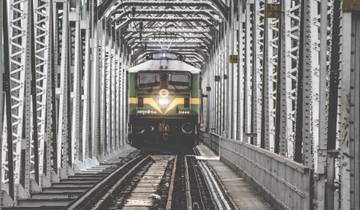
- Train & Rail
- Christmas & New Year
Golden Triangle on Wheels Indian Railways
Overall a great tour. Highlights were the train rides, the guides, and the monuments. Hotels could have been better, I wish all of them were as good as the hotel in Jaipur. Amit was excellent and accommodating in every aspect of the tour. Best guide was Mr. Kashana in Jaipur.
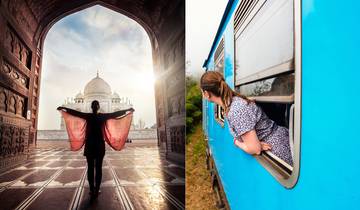
Golden Triangle Tour By Train/Rail - Taj Mahal and Train Ride 5 days

Rajasthan Wildlife Tour: Ranthambore National Park by Train - 5 Days
Awesome Ranthambore Jungle Safari, an experience to remember for a lifetime !
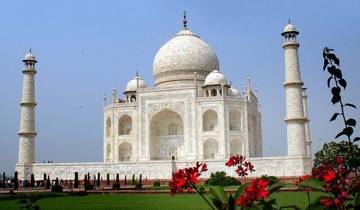
Taj Mahal & Agra Private Tour for 2 Days by Express Train
We are back home now after a brilliant time in Delhi and Agra last week. I want to say thank you to the Delhi driver Riyaz and the Agra driver Sonu for their service. Also a special thanks to Aayush the guide as he was very knowledgeable and attentive. Everyone made our Agra trip very special and we have fantastic memories to come again one day. Please can you extend our thanks to them when you next speak to them. Finally I want to thank you and Raj Tours as the way we were able to organise the trip was seamless and easy. We will use you again and recommend to others. Unfortunately I cannot make a TripAdvisor review as I explained to Aayush, I do not have or want to have a TripAdvisor account.
- 10% deposit on some dates Some departure dates offer you the chance to book this tour with a lower deposit.
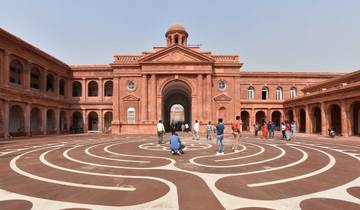
Amritsar Tour From Delhi By Shatabdi Train
We Have no any other option to take the Amritsar Tour from Delhi by Shatabdi Train and I must say, it was an incredible experience. The tour was well-organized and everything went smoothly from start to finish. The journey from Delhi to Amritsar on the Shatabdi train was comfortable and convenient. The train was clean and well-maintained, and the seats were spacious and comfortable. The on-board service was also excellent, with friendly and efficient staff catering to our needs. Upon arrival in Amritsar, we were greeted by our tour guide who was very knowledgeable and enthusiastic about the city. He gave us a brief introduction to Amritsar and its history, and then we proceeded to visit the Golden Temple. The Golden Temple was a sight to behold. The magnificent structure, the serene atmosphere, and the devotion of the people made it a truly spiritual experience. Our guide took us around the temple and explained the significance of each part of the complex. We also got to witness the langar (community meal) which is served to all visitors for free. After the Golden Temple, we visited the Jallianwala Bagh, a memorial to the tragic massacre that took place there in 1919. Our guide gave us a detailed account of the events that took place and it was a somber and moving experience. The tour also included a visit to the Wagah Border, where we witnessed the famous Beating Retreat ceremony. It was a thrilling experience to see the soldiers from both India and Pakistan perform their drill with such precision and patriotism. The tour ended with a visit to the local markets where we got to indulge in some shopping and try out some delicious Punjabi cuisine. Our guide took us to some of the best street food stalls and we were not disappointed. Overall, the Amritsar Tour from Delhi by Shatabdi Train was a memorable experience. The well-planned itinerary, comfortable transportation, knowledgeable guide, and the beautiful city of Amritsar all made it a perfect trip. I would highly recommend this tour to anyone looking to explore the vibrant culture and history of Amritsar.

Journey Through Time: Exploring India's Heritage by Satabdi Train
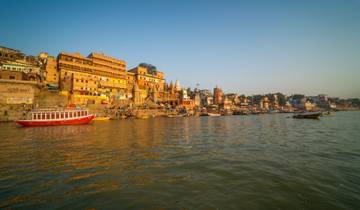
Taj to Varanasi
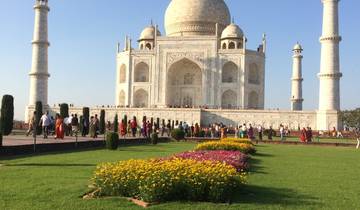
Train Tour: 5 Days Golden Triangle Tour with 4 Nights Accomodation
Amar was our tour guide for the 6 days Amritsar plus Golden Triangle tour. This is an amazing tour. This itineray is packed with amazing tours sightseeing and activities Lots to see and cover in 6 days. I know a tour guide can either make or break your vacation, let me assue you we had the best in Amar . He goes above and beyond to ensure satisfaction. He is attentive, patient , understanding, and thrives to please his clients. If you are planning to take this trip I highly recommend Amarjeet. Nothing is too much to ask. There is no question his priority is customer satisfaction. We were completely blown away by Amar's kindness and I know you will too.

Incredible Golden Triangle Rail Tour
Tour Guide Hilal was Guide for Agra and the Taj Mahal. Hall was Incredible Historian and a Great Photoghapher. Jugal Kishore was my Guide in Jaipur to view the Amber Fort and by my request Jugal obtain permission for me to climb the Great Wall surrounding the city and Fort. Jugal climbed the wall with me. Not an easy thing to do. Well done Jugal Kishore.

From Delhi: Taj Mahal Private Tour By Gatiman Express Train
Taj Mahal is always a dream to visit. And finally I got the chance on my business trip to India. When i had a one day free then i have searched the same day tour and preferred to visit the Taj Mahal by train rather than by car. I was picked on time by the driver, got into the train safely and driver helped me to find the seat and coach. On arrival at Agra , other driver and guide came to pick me up then we drive to the Taj Mahal and the Taj Mahal is just awesome I was speechless the time I saw the white building. Our guide was such a nice person he was kept helping me everywhere. In the evening i was dropped back to the railway station and guide helped me to find out the coach and seat then i arrived in Delhi and driver came to pick me up. Entire tour went the way it was planned as per the tour itinerary and it was a great tour.

All Inclusive - Taj Mahal and Agra Fort by Superfast Train: Private Day Tour from Delhi
Taj Mahal and Agra fort were fantastic! Beautiful buildings with fascinating origins. Faizs was an amazing tour guide! Very knowledgeable, engaging and friendly throughout. Helped us so much with getting around, photos and was great getting to know too. Highly recommended :)
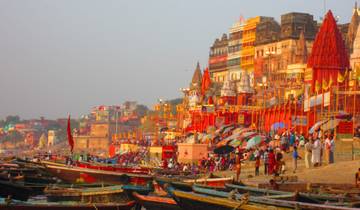
Explore Varanasi Overnight Tour By High Speed Train From Delhi
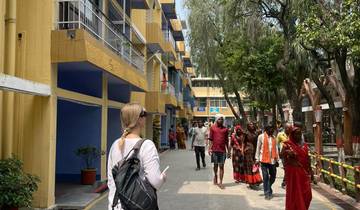
Haridwar & Rishikesh Reverie: A Sacred Train Tour from Delhi

- In-depth Cultural
Express Taj Mahal Day Trip: Delhi to Agra by India's Superfast Train
So we’ll organized and great pick up service and then the tour itself so smooth and interesting. Highly recommended.
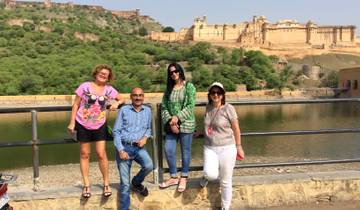
3 Days Delhi, Agra, Jaipur Golden Triangle Tour by Train
What a fantastic trip. Although we were never 100% sure what was going to happen next, it all worked out to plan. Good guides, enjoyable train journeys, interesting sights, ok hotel in Jaipur - thoroughly recommend this company and this tour
What people love about Train & Rail Tours in India
The idea of travelling by train to different cities and getting picked up by different tour guides was a great idea. Tour guides had different strengths and weaknesses. Overall good experience although a little on the pricy side.
So, I kind started the tour with a bit of a rough start. My Delhi driver didn't seem to know how to get to the train station, then I felt pressed to take a tuk-tuk that I couldn't afford, to get dropped off. Then was pressed by him to get money from the ATM, which none of the three at the station worked for me. I was feeling pretty skeptical about the tour I had purchased and that I had been thrown out there on my own,but my tour guide in Agra, Faz, quickly decreased my worries and immediately brighted my mood for the rest of the time I spent with him on the tour. He pleasantly welcomed me to Agra with a beautiful flower garland and was very professional and polite. He spoke perfectly clear English and was easy to understand. He clearly has a lot of knowledge, passion and pride in the historical, religious and artistic beauty of the cities sites. He had a lot of special insights and knew best how to plan things. He was great at both offering to take pictures and at taking them, some unique and fun. Additionally, he was very considerate and carried my bag and sweatshirt for me so I could enjoy taking my own pictures and not have to deal with them, such a gentleman. He was very easy to talk to and open to questions. As mentioned earlier, I had cash/ATM issues and he stepped right up until we were able to resolve this, paying for entry fees. Then he was more than patient when this unfortunately took several stops to successfully resolve. I really felt he went above and beyond. He was very kind and understanding, despite my embarrassment that this couldn't get easily resolved. He had an engaging, fun, but very professional quality. I was highly impressed. He's the most delightful and professional guide and I highly recommend him. I was very saddened that I would be getting a new tour guide as he was wonderful. He always wanted to make sure I was enjoying the sites and was feeling good with how things were going. Definitely a top notch professional, highly knowledgeable and great character. I absolutely loved my tour with Faz. I'd give him over 5☆☆☆☆ My guide in Fatehpur sikri, was also quite pleasant. I was only with him for a few hours in the city, but he guided me through things well and was helpful. He had a great knowledge of the area and seemed to enjoy the history. He even helped me get rid of an obnoxious peddler, which was appreciated. I did however feel that he was a bit pushy in a shop we went into and I spent more money than planned/could afford. My driver, Chetan, was always punctual and I had no complaints. Although, he didn't speak much he was always polite and professional when he did. I really appreciated him expertly maunvering through all the crazy traffic. He did amazing. ☆☆☆☆☆ The hotel was fabulous and had a beautiful rooftop pool and spa. You could even see the Taj Mahal from there (just barely through the smoke). The restaurant and breakfast were both good. No complaints at all. The train was fine, not luxury or similar to US. Food was not bad considering it was train food, which I compared to being similar to plane food. Everything was great really, except my drop off in Delhi and my pickup in Delhi were I never connected with the driver and ended having to pay to take a chilly ride in a tuk-tuk. They did try and contact me when I arrived in Delhi (my service is inconsistent),but it would have been better to have this information before Ieft Agra. I believe this would have negated the problem as could directly go where I needed to go. This was done before I left for Agra, why not Delhi. So, the guides, hotel, driver in Agra and train I had no issues. Just a bit with the drop off driver in Delhi and confusion over pickup, but overall good tour.
Regions in India
- Northern India (16)
- Rajasthan (11)
- Golden Triangle (6)
Travel Styles
- Best Train Travel Companies
- India Travel Guide | All You Need to Know
- 10 Best Trekking Companies & Operators in India (with 5,325 Reviews)
- 10 Best Backpacking Groups & Travel Agencies (with 1,857 Reviews)
- India for Female Solo Travellers - Is India Safe?
- Best 2 Week India Itineraries 2024/2025 (with Reviews)

Train Travel in India: Everything You Need to Know

Train travel in India can be stressful or quite an interesting experience to say the least. However, it is one of the most affordable ways to get around India. This is everything you need to know before traveling by train in India – how and when to book tickets, the train classes, and train travel safety tips.
Things to Know About Traveling by Train in India
1. book your tickets in advance online..
Trains in India tend to book up ahead of time so a last minute ticket when you arrive at the train station isn’t always guaranteed. For most trains you can book tickets about 4 months ahead of time. I would suggest booking tickets as soon as you know exactly when you’ll be traveling.
2. Seats aren’t guaranteed to be together.
If you’re booking tickets for multiple people, keep in mind that seats aren’t guaranteed to be together. Seats are allocated randomly so you won’t know for sure if you’ll actually get the seat that you want.
3. Reservations usually open 120 days before departure.
It’s best to book your train as soon as you know exactly when you will be traveling. A few train stations in India only sell tickets 30 days ahead of time but for most, bookings open 120 days before departure.
4. RAC and WL tickets .
When booking train tickets online you will have to first check the availability of tickets. The availability will be shown as ‘Available’, ‘RAC’, or ‘Waitlist’.
Available (pretty self explanatory) means that there are confirmed seats or berths available on that train. You will be able to select a seat or berth (though neither are guaranteed) before you travel.
RAC (Reservation Against Cancellation) means that the train is technically full. However, you will still be able to board the train and be taken to a berth by the conductor. You won’t be able to choose your seat but you will still be able to travel.
WL (Waitlist) means that all available and RAC tickets have been sold. You will only be able to travel if someone else cancels their ticket and yours is upgraded to RAC or confirmed. If your waitlisted ticket is not upgraded, the train fare will be refunded.
5. Trains in India often run late.
Many times while we were at train stations waiting to board our train, we often would worry that we had somehow missed ours because it would be long past boarding time and we still hadn’t seen our train anywhere. Many of the train stations never made announcements for late trains or updated arrival times, either. The only one I remember actually making an announcement for an updated arrival time was at Delhi Cantonment Railway Station in New Delhi. Most times when we were traveling by train in India, our train would arrive at our destination hours after it was supposed to. Definitely avoid planning tight schedules if you’re traveling by train.

Train Travel Safety Tips
For the most part, I believe that train travel in India is pretty safe. However, we do live in a crazy world and you truly never know what type of people you’ll come into contact with. I never had any issues while traveling on the trains in India, but , I will say that India is the only country I’ve traveled to that I ever felt at any point like I wasn’t safe. While this was mostly in the city (New Delhi, to be exact), you can never be too safe even on the trains. Continue reading for a few safety tips and things to look out for.
Don’t Leave Your Things Unattended
Theft is, unfortunately, very common in India. A crossbody bag can be useful for anything valuable that you will have (phone, passport, money, etc.) as long as you leave it on while you’re on the trains. I kept my luggage on the top bunk with me as I traveled as well (I only had one bag so it was fine). A small lock to put on your luggage can also be useful.
Always Be Aware of Scams
One of the most common scams at train stations would be someone telling you that your train has been cancelled and you need to purchase another ticket from their travel agency. Never trust this. Even if they look like they may work there, that’s not how it works. If a train is cancelled you will either hear an announcement or see it on the signs. Never go with a random person to purchase anything. Honestly, it’s best to just ignore anyone who approaches you at the stations. If you give them even a minute of your time they will not leave you alone. Trust me, I learned that the hard way!
Solo Train Travel in India
Though I know plenty of women who have traveled solo in India and had the time of their lives, I personally would not recommend it. I traveled through India with my husband but anytime that I was alone (even just long enough to buy a drink), the local men were relentless. They said some of the most inappropriate things to me and would not leave me alone. It was exhausting and almost ruined the trip for me. However, if you do travel solo in India (as a female) I would suggest always getting the top bunk on trains if possible as it offers a bit more privacy. Also, as stated above, it’s best to ignore anyone who approaches you. Many of the men in India will take even the slightest bit of attention (ex: a smile) as a window of opportunity and won’t leave you alone after that.
Don’t be Afraid to Find Help
There will always be police or guards on every train. If you’re having major issues, don’t be afraid to find them and ask for help. Don’t worry about hurting someone’s feelings, either. If someone is bothering you, touching you, or really just doing anything that makes you uncomfortable, feel free to tell them no. Be firm about it. Shout if needs be, whatever will get your point across. It’s always better to be safe than to spare someone’s feelings.
Booking Train Travel in India
I always use IRCTC to book trains. It’s a very frustrating website to use (to say the least) but it’s not too bad once you get used to it. You first must register with the website in order to purchase tickets. This involves a small one-time processing fee of just over 1 USD (to confirm identity). Only one person needs to register and they can then purchase tickets for the rest of their party (up to 6 at a time). The process is pretty straightforward once you know when and where you will be traveling to and from.
As stated above, last-minute tickets aren’t always available once you arrive at the train station. If you decide to book your tickets at the station, I would suggest arriving pretty early to do so. You should have no problem finding someone who speaks English to help you with your purchase. Do keep in mind that if you buy tickets at the train station you must pay with cash.
Through a Local Travel Agent
If you don’t feel like going through the entire process of planning, choosing, and booking the right ticket (don’t blame you) then you can buy tickets through a local travel agent. However, keep in mind that travel agents in India will often tell you that cheaper train tickets are “sold out” or that certain trains aren’t available in order to get you to spend more money. If you go through a travel agent, make sure you check reviews first or choose an agent that was recommended to you by someone you trust.
Indian Train Classes
There are eight different classes for train travel in India. However, not all trains will have all eight classes of accommodation available. I’ll try to list all of the classes in order from highest to lowest level of comfort and standards (and for the most part, prices will coincide).
First Class, Air-Conditioned (AC1 / 1A)

AC1 trains are probably the most comfortable way to travel by train in India but they are also the most expensive. AC1 coaches are divided into 4-berth and 2-berth sleeper compartments. Most of which are typically pretty spacious and have lockable doors and curtains on the windows. They are much less noisy and more private than other classes. Blankets and pillows are provided on each bunk for comfort. Unfortunately, you cannot choose whether you get a berth with two or four bunks when you book online.
2-Tier, Air-Conditioned (AC2 / 2A)

AC2 trains are relatively comfortable and uncrowded. It’s an open berth plan with bays of four (two upper and two lower bunks) on one side of the aisle and bays of two (one upper and one lower bunk) on the opposite side. Each bunk has a curtain for privacy. Most of the ones we traveled on had outlets so we were able to charge our phones as well.
3-Tier, Air-Conditioned (AC3 / 3A)
AC3 is basically the same as AC2 except the bunks have three tiers instead of two. The AC3 coaches are typically more crowded and may not have the curtains for privacy like the AC2. During the day, most of the middle bunks will be folded down as most people prefer to just sit together on the bottom bunk. If you have the bottom bunk, don’t be surprised if random people sit on yours during the ride.

We had 2 or 3-tier tickets on most trains that we traveled on throughout India. AC2 was obviously a bit more private but both were pretty decent and relatively comfortable. Most of the 3-tier trains that we were on had outlets but none of them seemed to actually work. Maybe bring a power bank with you if you’ll be needing to charge your phone.
First Class (FC)
Most trains in India no longer have First Class seats and have more AC2 cars instead. For the most part, FC cars are the same as the AC2 without all of the upgrades. No air-conditioning, no bedding, and not nearly as clean or comfortable.
AC Executive Chair Class (EC)
EC is only found on a few trains in India. There are two seats on each side of the aisle and food and drinks are included in your fare. It’s a good way to travel if you prefer an actual seat instead of a bunk.
AC Chair Class (CC)
CC is another class that is only found on certain trains in India. The train has two and three seats seats on each side of the aisle, they are air-conditioned, and for the most part it is a pretty comfortable way to travel.
Sleeper Class (SL)
Most long-distance trains in India will consist mostly of sleeper cars as this is how the majority of people in India travel. Bedding is not provided, there are no curtains or air-conditioning, and sleeper cars can get quite crowded. It’s not the most comfortable way to travel but it will definitely save you some money.
Second Class Seats (2S)
On 2S cars you will not have your own seat but rather you will be sharing a bench (picture bench seats on buses). Sometimes the seats are padded and other times they are just wooden. These trains can get extremely crowded, it’s not the most comfortable, and I wouldn’t recommend it for overnight travel. Avoid these unless you’re just making a short trip.
Finding Your Coach
Finding your coach when your train arrives at the platform can be tricky at some train stations. When you arrive at your platform at the train station, look for the abbreviation of your class (the letters in parenthesis above) on the signs hanging from the ceiling along the tracks. This is where your coach will be when the train arrives. The signs change for each train so wait until you know your train is next. The platforms are very long so getting to your spot ahead of time will insure that you won’t be rushing to get to the correct coach when your train arrives. Not all train stations have these signs so ask a train station official for help if needed (we did many times with no problem).
Train Travel in India – Tips
- Have a rough idea what your itinerary will look like before booking anything. You’ll want to figure out what days you’ll be traveling and you may have to adjust plans based on what trains are available. Do this before booking any hotels.
- You will be stared at a lot at train stations. Traveling through India, I had never been stared at so much in my life. Especially at the train stations! The lighter your skin and hair, the more they will stare. It’s honestly just part of the experience (staring isn’t considered rude in India) so try not to take offense even though it may be extremely uncomfortable.
- Make sure you arrive early! It can often be a bit confusing trying to figure out exactly where your train will be. Some train stations have everything clearly labeled and are easy to figure out but, others, not so much. Leave yourself enough time to figure everything out before your train arrives and make sure you pay attention to the announcements.
- If you plan on sleeping on the train, set an alarm! No one will wake you up or let you know that it’s your stop. Make sure you keep an eye on the time (or the map).
- As soon as you get off of your train and exit the station, you‘ll likely be surrounded by tuk tuk drivers offering a ride. Always confirm a price before you agree to go anywhere and know that prices are always negotiable.
Have you ever traveled by train in India? Share in a comment below!

Like it? Pin it!

Don’t forget to check out these other India posts:
- A Sunrise Visit to the Taj Mahal in Agra
- Places to Visit in Jaipur, India
- Indira Gandhi Airport in New Delhi
- The Golden Triangle in India: An Itinerary and Guide
- India Travel Tips
- Things to Do in New Delhi, India
- Agra, India Travel Guide
Share this:
You may also enjoy:, agra, india travel guide: what to do …, seoul lantern festival in south korea, indira gandhi airport in new delhi, india, things to do in gwangju, south korea: ….
Like!! Great article post.Really thank you! Really Cool.
I’m so glad that you like it, thank you 😁
I guess this is one of the most amazing indian train travel guides, I’ve read so far. Being a India , I can completely relate to this article.
Thank you so much, that means a lot! 😁
This information will come in so handy if I ever actually make it to India! Might be a while since, based on your description, I definitely wouldn’t feel comfortable going alone.
– Laura // afinnontheloose.com
Totally understandable! Hopefully you’ll still make it there someday 😁
Leave a Reply Cancel reply
Your email address will not be published. Required fields are marked *
Notify me of follow-up comments by email.
Notify me of new posts by email.
Hiking the Stairway to Heaven on Oahu: The Legal Back Way
Ddong cafe in seoul: the most unique cafe in south korea, where to eat in washington dc, where to next.

Travel In India By Train - A Complete Guide To Travel By Indian Railways
How to book a train ticket in india, cost of train tickets in india.
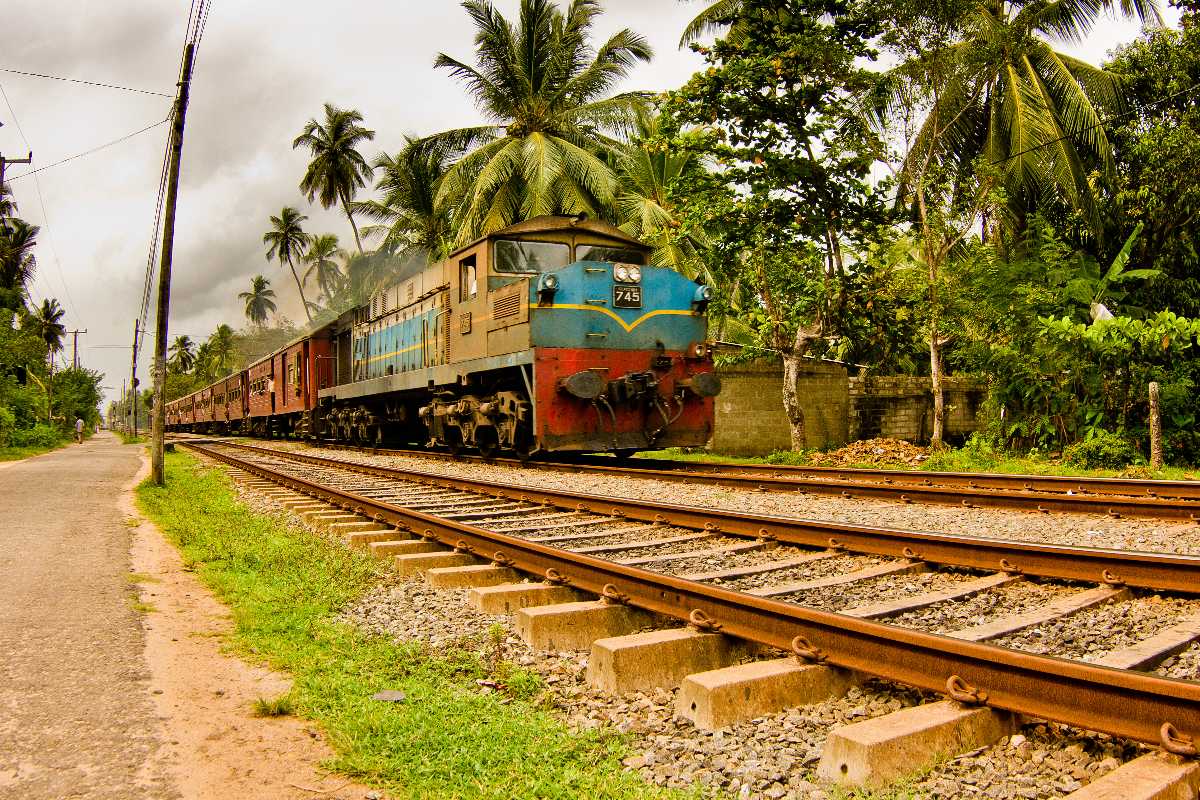
Luxury Train Travel in India
1. 'maharaja's express.
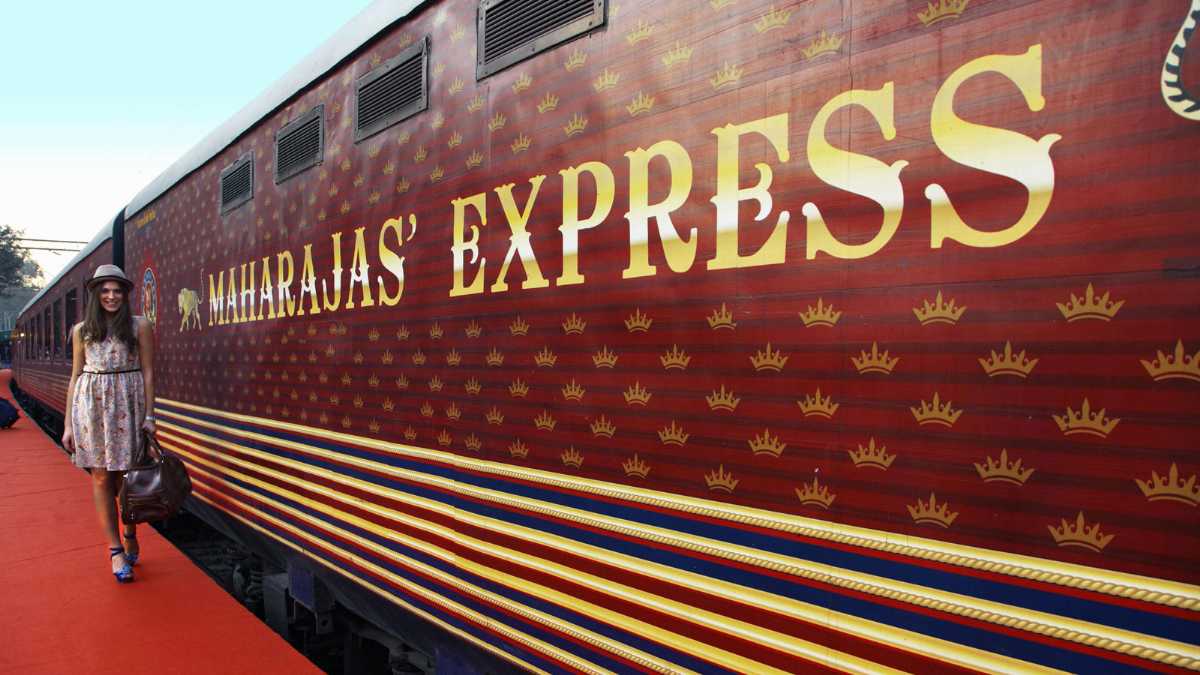
2. Palace on Wheels
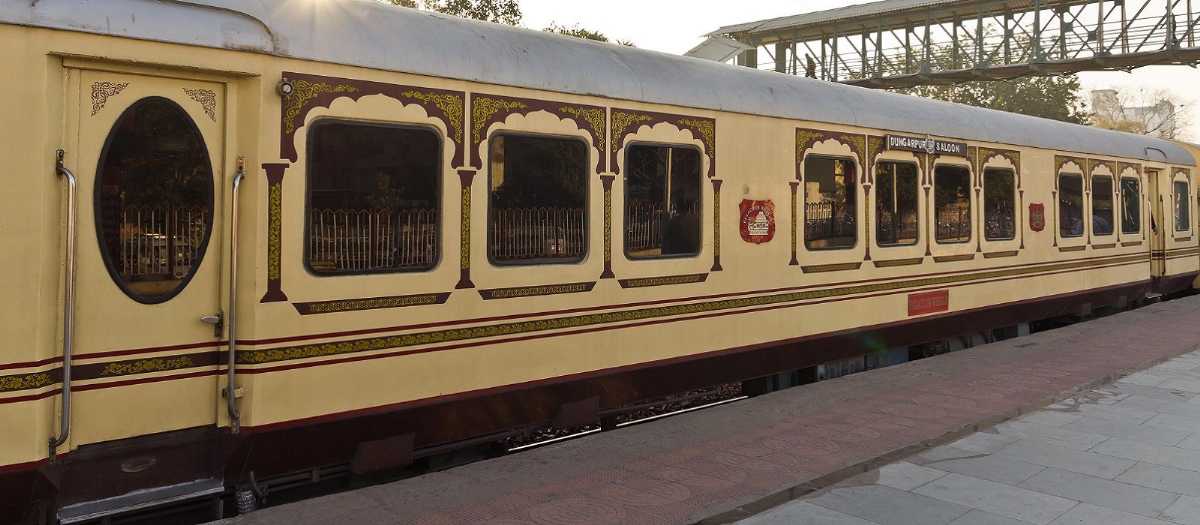
3. Royal Rajasthan on Wheels
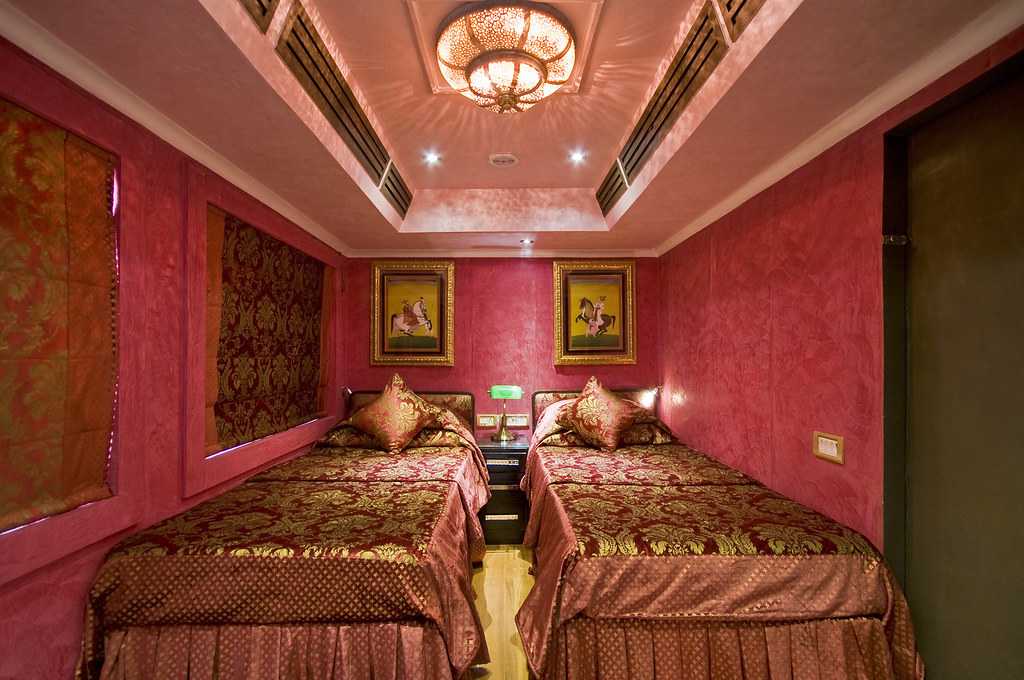
4. The Deccan Odyssey
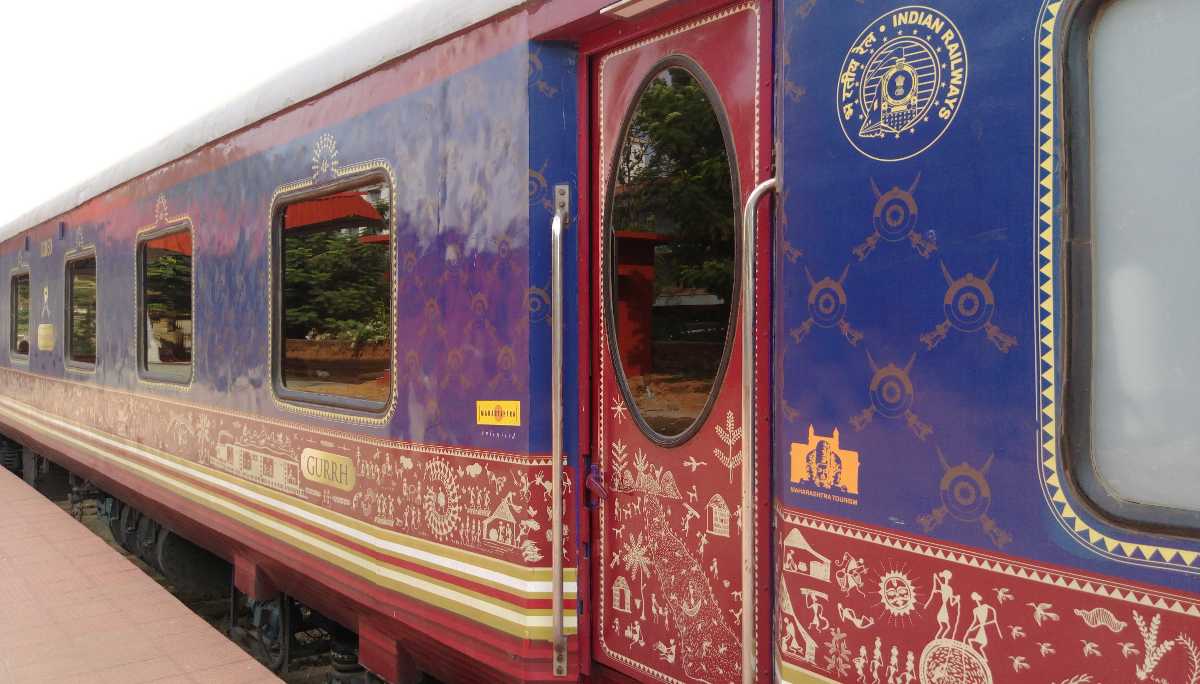
5. Golden Chariot
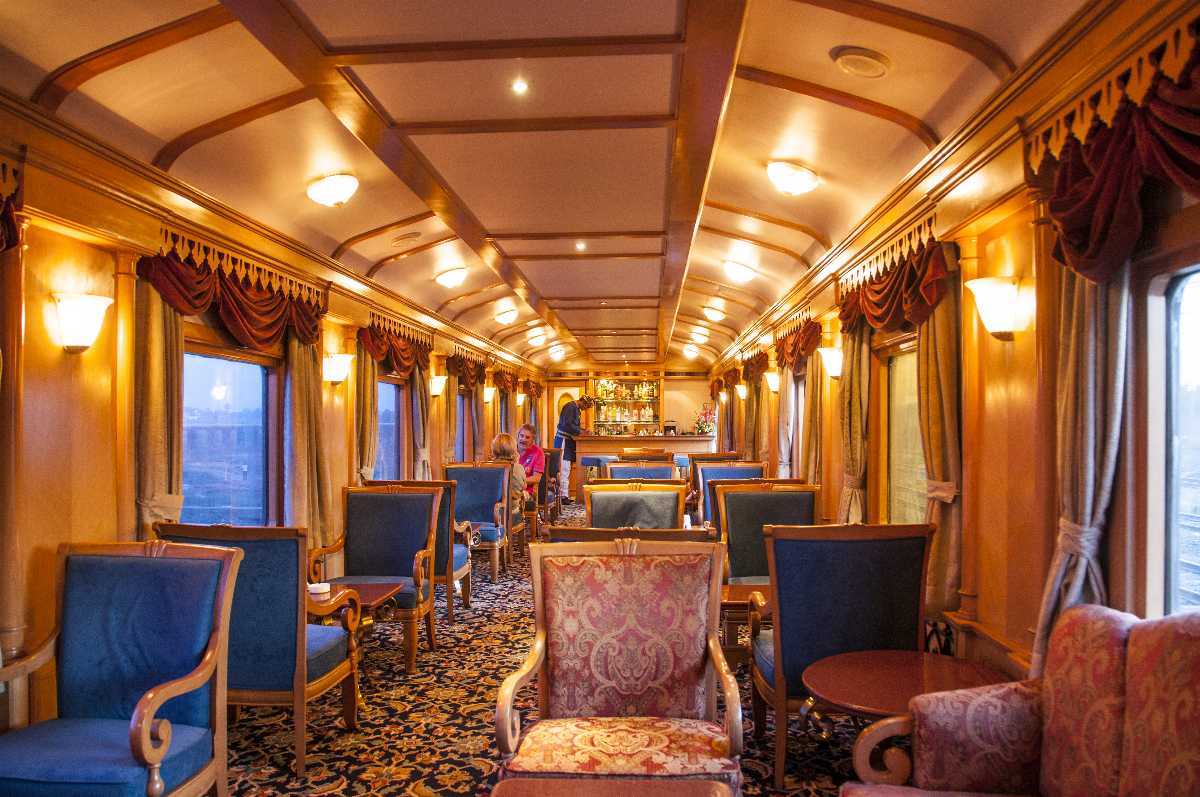
6. Royal Orient Train
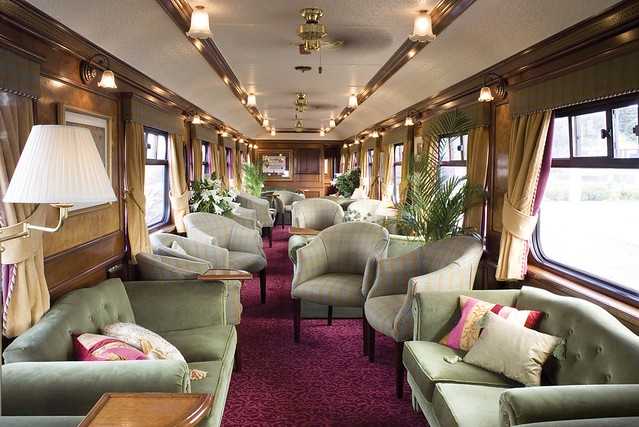
7. Fairy Queen Express
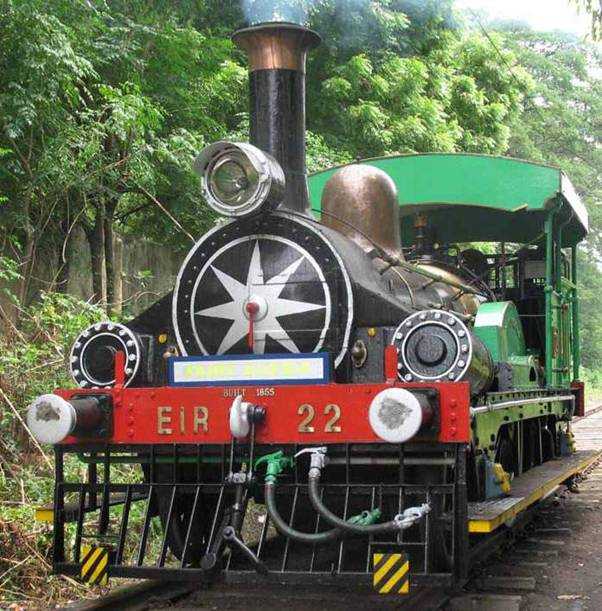
Other Train Travel in India With Classes
1. first class ac or 1a.

2. AC two tier or 2A
3. ac three tier or 3a.

4. Executive Class Chair Car or EC

5. AC Chair Car or CC
6. sleeper class, 7. second seater or 2s.
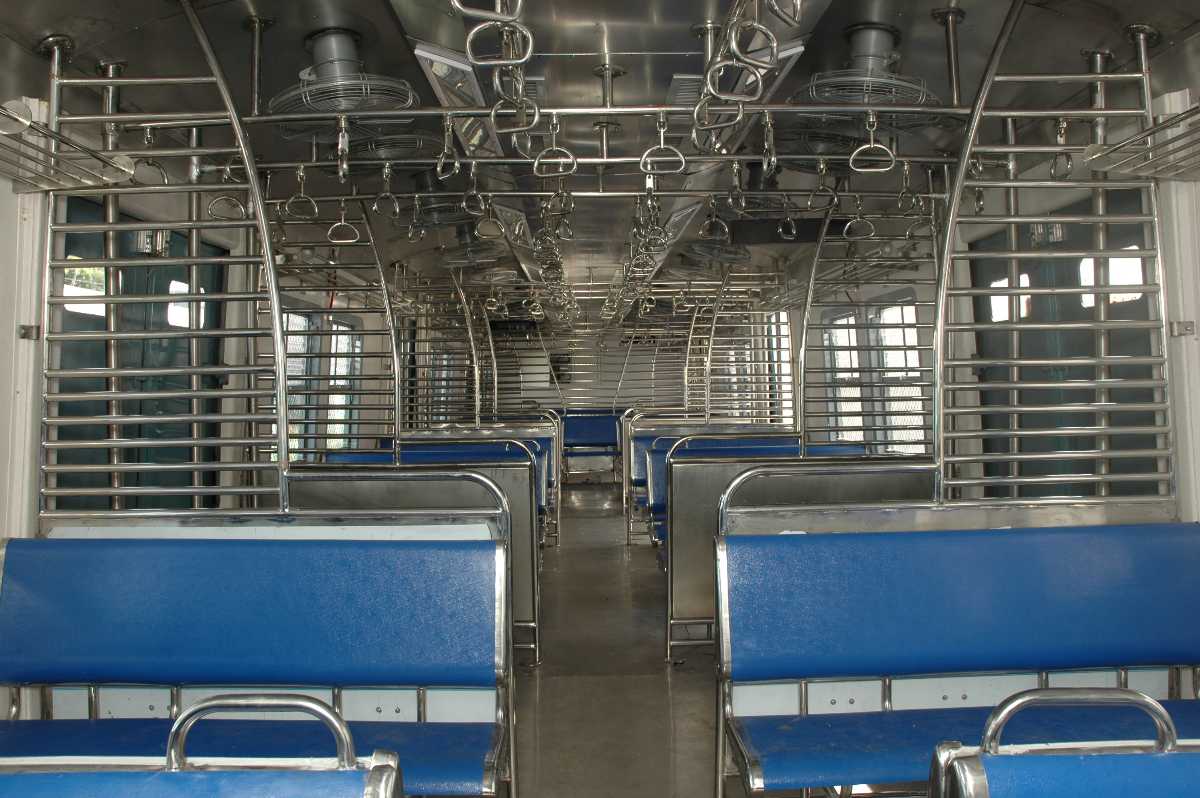
Well then get ready to embark on one of the most memorable train travels in India which you are sure to cherish forever!
This post was published by Priyanka Chugh
Share this post on social media Facebook Twitter
India Travel Packages
Compare quotes from upto 3 travel agents for free
Best India Tour Package - Shimla, Kullu and Manali
Kashmir tour package 9 days with gondola ride, leh ladakh summer holiday package with nubra & pangong stay, bestseller andaman and nicobar tour package, sikkim tour package for 7 days - excursion to tsomgo lake, shimla manali dharamshala dalhousie tour package - day trip to khajjiar, related articles.

Travel Tips
Drinking Water Standards In India
Vaccinations Required While Travelling To India
Indian Visa Requirements - Application Process, Eligibility, Fee & More
Travelling With Children In India
International Driving License in India - A Complete Guide

11 Fastest Trains in India: Superfast Trains in India for a speedy getaway
Top Must-Have Medicines While Travelling In India - Your Travel Medical Kit Guide

Experiences
Urban Experience - 8 Ways To Truly Explore A City
Best Railway Stations In India: Vintage Essentials
Best Train Routes in India: Most Beautiful Railway Rides
Transport in India: Flights, Trains, Bus and Cabs in India

Beaches & Islands
Places You Should Avoid This Monsoon Season! Go TO THESE Destinations Instead

10 Historical Monuments Extended Closing Time! Read More To Find Out
Have You Taken the Longest Train Journey in India Yet? Here's How To Do It
Speedboats Soon To Connect Navi Mumbai to Gateway Of India
Is Couchsurfing in India A Great Option? 12 Do's and Don'ts To Get It Right
Renewal of Passport: Step-by-Step Guide on How To Renew Passport in India

Luxury Trip
IRCTC Launches Its First Buddhist Circuit Tourist Train This Month

Nail Your First Snow Trek in India With These 9 Essential Tips!
12 Foreigners Describe What They Think of India After Their Visit and You Can’t Miss What They Have to Say
IRCTC is All Geared Up to Launch its Third Private Train on Indore - Varanasi Route
International Airports in India - A Guide to Finding the Perfect Wings to Fly
Golden Chariot Is All Set To Return This March! Here's All About the Comeback!
Mumbai to Goa on the Angriya Cruise: India's Premier Sea Voyage
Is India Safe to Travel? Travel Tips Before You Book Your Tickets
5 Biggest Railway Stations in India in Terms of Platforms
Travel Updates from Unlock 1 : Everything You Need to Know
A Step By Step Guide to Plan A Caravan Trip in India Like Shahrukh Khan In The Movie Swades

Best Airports In India

Family Holidays
Best Places to Visit in August in India : The Mid-Monsoon Trips
Comments on this post
Browse package collections, india package collections.
India Honeymoon Packages
North East Tour Packages
South India Tour Packages
International Honeymoon Packages
International Tour Packages
Honeymoon Packages
Top Listed Packages
Spiti Valley in Summers: 1 Week in Breathtaking Kinnaur & Spiti
Kashmir 8 Days Itinerary: Enthralling Trip with Srinagar Houseboat Stay
India Tour Package with Best of Himachal
3 Days Tour Package in India: Char Dham Yatra By Helicopter
Sikkim Tour Package for 5 Days
Assam Meghalaya Arunachal Pradesh Tour Packages
Luxury India Honeymoon Tour Package - Tri-City Tour
Sikkim Tour Package for Couple - 8 Nights
5 Days Trip in India: Alleppey, Kovalam & Munnar
Gangtok Itinerary of 7 Nights 8 Days Package
Meghalaya Tour Package 7 Days with Shnongpdeng
Browse Hotel Collections
By hotel type.
Best Private Pool Villas in India
Best Cottages in India
Best Hostels in India
Capsule Hotels in India
Ski Resorts in India
Eco Friendly Resorts in India for Those Who Travel Consciously
Best Heritage Hotels in India for a Royal and Luxurious Stay
By Budget Category
Most Expensive Hotels in India for a Royal Stay
Best Luxury Hotels in India
Best Luxury Resorts in India
By Star Category
Best 5-Star Hotels in India
For Special Purposes
Resorts & Homestays to Work from Mountains in India
Best Yoga Retreats in India
Beautiful Treehouses in India Perfect for a Quick Staycation
Best Beach Resorts in India
Most Romantic Resorts in India
Top Places in India

Get the best offers on Travel Packages
Compare package quotes from top travel agents
Compare upto 3 quotes for free
- India (+91)
*Final prices will be shared by our partner agents based on your requirements.
Log in to your account
Welcome to holidify.
Forget Password?
Share this page

My India Travel Itinerary: 1 Month Across India by Train!
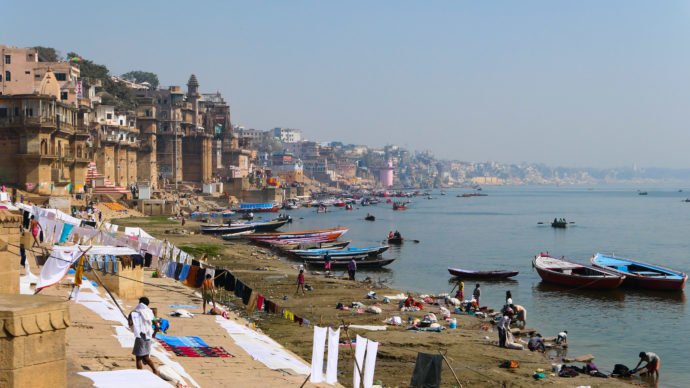
Today I’m sharing my India travel itinerary with you all. One month in India may sound like a long time, but when you’re planning to travel in such a big country, one month can feel like a huge time constraint. Where should you go and what should you do?!
Sam and I ended up in India as part of our annual winter escape with his parents. So far we’ve done Southeast Asia and South America together, and this year they wanted to travel in India.
The two big items on their travel bucket list were the Taj Mahal in Agra and the Ganges in Varanasi; aside from that we were free to plan the whole itinerary.
Sam and I then started talking about Rajasthan, the trip started expanding, and next thing you knew, we were travelling the full width of the country by train from Jaisalmer to Kolkata!
I’ve already shared a few little snippets of our time in India in previous posts, but today I’m going to outline our 1-month India travel itinerary for anyone considering a similar trip.

1-Month India Travel Itinerary
// 4 days //
Our first stop was Delhi and what an introduction to India! It was chaotic, it was colourful, and it was a whirlwind.
We spent our first day touring the Red Fort , which was once the main residence of the Mughal emperors. It may be called a fort, but this place is more like a walled city and you could easily spend half a day here visiting the bazaar, hammam, gardens, courtyards and palaces.

On our second day we toured Humayun’s Tomb which was commissioned by the Emperor’s wife after his death. It’s a majestic sight with beautiful surrounding grounds.
From there we took a pedal rickshaw to the Lodhi Gardens which house beautiful tombs and they are a popular spot with families on weekends – we saw birthday parties, picnics, and plenty of cricket games taking place.
Just outside the gardens you also have Lodi – The Garden Restaurant , which is a bit of a splurge but offers al fresco dining surrounded by nature.

Our third day in Delhi was reserved for visiting Jama Masjid in the morning. This is the largest mosque (by size) in all of India, so we couldn’t leave without a glimpse of the interior.
Keep in mind that the mosque is not open to visitors during prayer times, so you’ll want to plan your visit accordingly.

Many people will tell you to get in and out of Delhi as quickly as possible, but even after three full days there I felt I could have used more time to see the rest of the sights.
If you have a bit more time you can consider visiting: India Gate , Safdarjung’s Tomb , the Lotus Temple , Akshardham Temple , Jantar Mantar , plus lots of markets.
If you ask me, you need at least a week in Delhi to see it all! You can have a quick look of my Delhi highlights here.
Where I stayed:
Tara Palace Hotel
We booked this hotel because it was a modern property located in a quiet area, yet still within walking distance of the Red Fort. The rooms were spacious and clean, the staff was beyond helpful and friendly, and while there weren’t many restaurants on our street, the hotel served up great meals at their in-house restaurant.
Read reviews for Tara Palace Hotel.
// 3 days //
Jaisalmer was my favourite stop in Rajasthan. Yes, it was a long train ride to get there, but it was worth it in the end!
Jaisalmer, also known as the Golden City, is one of those places that seemingly rises out of the desert like a mirage.
The yellow sandstone buildings blend in with the colours of the sand, and the city has a bit of a magical feel to it.

The main attraction in town is the Jaisalmer Fort , but it’s such a massive place and there is so much to see and do that you could easily revisit again and again over the course of your stay.
Inside the fort, you can tour the Raj Mahal , the palace where royal members resided, and the Jain Temples, which are renowned for their intricate craftsmanship.
As for souvenir shopping , there is no shortage of shops and stalls selling tapestries, hand-painted postcards , leather goods, metalware, and all sorts of art and crafts.

Jaisalmer’s location also makes it a popular jump off point for camel treks in the Thar Desert .
We did an afternoon trek where we rode camels, climbed dunes to watch the sunset, had dinner, waited for the stars to appear (sadly, it was an overcast night!), and then returned back to the city.
If you’re feeling a bit more adventurous you can camp out for the night or organize a longer tour.
Sam did a 4-day camel trek through the Thar Desert many years back and he’s got some good stories from that trip – including surviving a flash flood that involved climbing trees and then seeking refuge in a small village! – but an afternoon excursion was enough for me.

If you have a bit more time in Jaisalmer you can also consider visiting Bada Bagh , a garden complex about 6 kilometres outside the city, which houses royal cenotaphs (empty tombs).
You can find my full Jaisalmer itinerary here.
Tokyo Palace Hotel
This hotel was amazing and the rooms were full of character – exposed yellow sandstone, window day bed with silk pillows, traditional dark wood furniture, and colourful glass lanterns. They also had a great rooftop restaurant that had the best views of Jaisalmer Fort, plus a second rooftop where you could watch the sunrise. The staff were also very kind and helpful, and they offered a free pick-up and drop-off service at the train station.
Read reviews for Tokyo Palace Hotel.
Next up, we visited Jodhpur, the famed Blue City of Rajasthan . I was expecting it to be similar to Jaisalmer in size, but Jodhpur is a full-blown city that can be a little tricky to navigate.

The main attraction in Jodhpur is Mehrangarh Fort , a place that looks like the setting of a fairy tale with elements of science fiction.
Mehrangarh Fort houses an impressive museum where you can see paintings, costumes, armour, and furnishings that would have been used by the rulers.
Inside the fort, there’s also a nice cafe called Café Mehran which serves up some of the best samosas I had in India.

We also visited the Sardar Market which encircles the Clock Tower. It was not my favourite area, but that does put you in close proximity to two really good restaurants that we coincidentally discovered.
The first is Indique , which is a rooftop restaurant that’s popular for sunset drinks; and the second is Jhankar , which is set in a lush courtyard and serves up a delicious Rajisthani thali – this was my favourite restaurant in town!
When we weren’t eating in Jodhpur (and it seems that we visited more restaurants than we did attractions!), we were wandering the blue maze that is this city.

Jewel Palace Haweli
We got the Deluxe Room with Castle View and like the name suggests, we had amazing views of the fort and the blue city. Yes, that picture you see right above was taken from our hotel! While I loved staying in a traditional haveli, we did find the staff quite forgetful – we had to repeatedly ask for things like bedsheets, towels and toilet paper. So although I would recommend staying at a haveli as it’s such a unique type of accommodation, I would also suggest finding a property with better ratings. You can browse havelis in Jodhpur here.
Read reviews for Jewel Palace Haveli.
We then travelled to Jaipur, which is nicknamed the Pink City.
The attractions in Jaipur were beautiful, but we also signed up for a day tour that turned into a bit of a nightmare.
I would not recommend the day tour operated by RTDC (Rajasthan Tourism Development Commission); we raced from attraction to attraction with an unhappy guide who lost half the people in his group, scheduled several commission-based shopping stops, and had a very negative attitude, but that’s a story for another day.
If I were to redo my time in Jaipur, I would try to cover less attractions and visit these on my own, perhaps only hiring a driver to get me to some of the further sites.

Our longest stop of the day was at the City Palace and I’m glad we had the time to visit this place thoroughly.
The City Palace is a complex housing several buildings within it and you could easily spend half a day wandering around.
You have Mubarak Mahal , housing a textile museum; Chandra Mahal , the residence of the descendants of the former rulers of Jaipur; Diwan-i-Khas , the Hall of Private Audience; Diwan-i-Am , the Hall of Public Audience; and plenty more.
Just a short walk from the City Palace, you also have Jantar Mantar , which is a collection of architectural astronomical instruments that were built in the 18th century.
There are a total of 19 instruments that would have been used to study the planets and the stars, and it kind of made me wish they did night tours so we could actually see these instruments put in action.
Alas, the site closes at 4:30 in the afternoon!

On our tour we raced to three different forts – Nahargarh Fort, Jaigarh Fort, and the Amber Fort – but to be honest, our visits were so brief that I can’t say I truly saw any of them.
If I had to redo it, I would have chosen one fort – probably the Amber Fort since it’s just outside Jaipur – and focused on enjoying that one to the max.

Another major landmark that we only got to see in passing through the bus window was Hawa Mahal , also known as the Palace of Winds.
This is a pink structure that kind of resembles a honeycomb, which was used by ladies of the royal household who wanted to observe processions and everyday life in the city, but remain unseen.
Jai Niwas Garden Hotel
We stayed at a little boutique hotel that had a bit of an old British feel. What sold me were the gardens complete with outdoor furniture so that you could enjoy a book or a cup of tea out on the lawn after a long day of sightseeing. The staff at this hotel were also very sweet, always helping us with directions and offering to find us transportation when needed.
Read reviews for Jai Niwas Garden Hotel.
Our first full day in Agra was a Friday, which meant the Taj Mahal was closed for visitors, so we decided to visit Agra Fort instead.
This was the residence of the Mughal emperors before they moved their capital over to Delhi and built the Red Fort, so it was kind of cool spotting some of the similarities between the two places.
The following day we made it to the Taj Mahal , which was even more beautiful in person than I expected.
It’s funny, sometimes when you’ve seen a place in photos or documentaries, it can be a bit of a let down in person, but that was not the case with the Taj. It radiated against the bright blue skies, and then once we got closer we were able to see all the arabesques and floral details done in precious stones.

We also made time to visit the Taj Protected Forest , which is located just outside the east gate. This is a nice scenic walk and because there are a few lookout points you also get views of the Taj Mahal off in the distance.

Lastly, before hopping on the overnight train , we visited the Baby Taj , whose real name is the Tomb of I’timād-ud-Daulah.
This tomb was built for Mizra Ghiyas Beg, who was the grandfather of Mumtaz Mahal (the woman the Taj Mahal was built for).
This was the first Mughal structure to be built entirely out of marble and it’s often compared to a jewellery box because it is covered in semi-precious stones.

From the Baby Taj, it’s only a short drive to Mehtab Bagh , or the Moonlight Garden.
The gardens sit directly behind the Taj and across the river, so it’s a popular spot to catch the sunset.
You can read this post for a better look at the places we visited in Agra .

The Coral Court Homestay Hotel
Alright, so this was my favourite hotel of the whole trip! Not only was it a beautiful property lovingly decorated with trinkets from around the world , but it was also a short walk from East Gate, which made it very easy to get to the Taj Mahal on foot. I also loved that in the evenings we had the option of having dinner with the other hotel guests in a communal setting. They served home cooked vegetarian meals and we devoured every last bowl of pumpkin and eggplant curries. The hosts were lovely and I would highly recommend this place!
Read reviews of The Coral Court Homestay Hotel.
After taking the overnight train from Agra, we arrived in Varanasi, which was the second last destination of our month in India.
The main attraction in Varanasi is the Ganges River and everything that happens along the water’s edge, so we spent our first morning walking along the ghats (the steps leading down to the river).
There was so much going on that we almost didn’t know where to look, but what surprised me the most was seeing people doing laundry in the Ganges! What?!?!?!
Hotel towels and bedsheets were being washed in the dark waters and these were then being draped to dry in the sun on the ghats.
Laundry was happening not too far from where bodies were being cremated, and then people were bathing so close to the cremation site that the ashes were floating around their ankles…
I think that was the moment when I experienced culture shock in India .

Another popular activity in Varanasi is to go on a boat ride down the Ganges River . Sunrise and sunset draw people for soft, golden light – if you want the buildings to be illuminated, you’ll want to go at sunrise.
Hotels and tour operators across town can help you arrange this outing, or you can just walk down to the river and find a boatman on the spot.

We also attended the Ganga Aarti ceremony which takes place on Dashashwamedh Ghat starting at 6:45 p.m.
This fire worship ceremony is performed by a group of priests soon after sundown, and crowds gather to watch them sing, burn incense, and light candles.
Places fill up fast so it’s good to arrive early if you want to snag a spot near the action. Some of the temples along the ghats offer priority seating for a small fee (about 50 rupees) where you can observe the ceremony from a high vantage point, or you can also pay to watch from a boat.
Where I stayed:
Ganges Grand Hotel
I stayed at the Ganges Grand Hotel and while it was a great location and the rooms were clean and spacious, the hotel was located in a busy intersection, which meant the honking and traffic noise could be heard in the background from sunup to sundown. If you’re a light sleeper, you may want to look elsewhere, but aside from that I have no real complaints. They also served up some delicious Indian dishes in their restaurant. You can browse hotels in Varanasi here.
Read reviews of Ganges Grand Hotel.
This brings us to our final stop in India: Kolkata.
Admittedly, I didn’t do a whole lot of sightseeing in Kolkata since I got quite ill just before leaving Varanasi, but I did manage to explore a bit of the area on my last day there.
Sam and I visited the Sir Stuart Hogg Market (also known as New Market), photographed the iconic yellow cabs, and then finished the day at Blue & Beyond , which is a nice little rooftop resto-bar in the Lindsay Hotel.

I would have liked to visit Mother Theresa’s Home , see the Victoria Memorial Hall , and walk around the Maidan , but sometimes you just can’t win them all.

Where I stayed:
I can’t recommend the hotel where I stayed since I ended up sharing the room with a mouse! The Astoria Hotel looked great in photos, but we were placed in the “Old Wing”, which looked nothing like what we saw online. We found cigarette butts in the bathroom, a dirty shower, mouldy walls, but what’s worse was the staff’s lack of interest in their guests. Despite my hotel’s shortcomings, I did enjoy the neighbourhood, so I would suggest staying just east of the Maidan in what’s known as Colootola – you can search for Kolkata hotels here. There are lots of hotels and restaurants in this area, plus it also puts you within walking distance of many of the attractions.
And that finally concludes my month-long India travel itinerary .
We visited a total of 7 destinations, giving ourselves 3-4 days in each place, and travelling entirely by train .
I will say that travel in India is exhausting in ways that other destinations aren’t – don’t go into it thinking it’ll be a walk in the park! – but we also saw some beautiful sights and architectural wonders that made it all worth it.
More posts from India with practical travel tips coming soon.
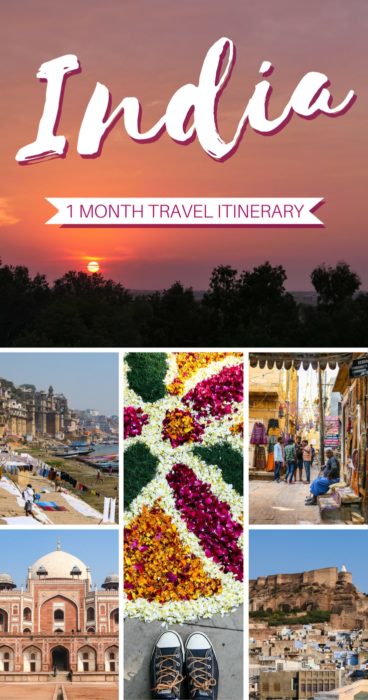
Nice one Audrey!
This is a really cool itinerary. And I like the way that you dedicated 3 to 4 days on your trip. ‘So much more relaxing!
Yes, I’ve been to India. 12 years ago now. Eek! And what an experience! I went there solo, travelled with a Swiss girl that I bumped into for 2 weeks, then continued on solo again. I was there for a month! I loved everything except for Delhi and the train journey. And the thing is, I spent about 4 days in Delhi – 2 days at the beginning of my trip, and 2 days at the end. It was the right thng to do but by then I was pretty exhausted and just wanted to go home!
Ha! Ha! I’m taking the family next year! p.s. I would also add Udaipur. It really was lovely.
http://thebritishberliner.com
This is definitely a great itinerary for a first trip to Northern India if you want to see all the main highlights in a month! I can highly recommend Bundi in Rajasthan if you want to get a bit off the beaten track – it has an awesome fort (with a real Indiana Jones feel!) that was practically empty when I was there!
Such an amazing trip Audrey, took me back to my memories!
India is such a crazy place, sometimes it gets overwhelming but as soon as you leave the country you kind of miss it. We visited more or less the same places, I fell in love with Varanasi; that place is out of this world! I still miss that spiritual feeling, would definitely turn back one day.
I had had a bit of problem with transportation (who doesn’t) and gotten pretty sick of spending money and time on my arrival, I created this one for travelers. Leaving it here for your future travels, it shows all the possible transportation options between airport and the city center so we don’t end up getting ripped by a taxi driver or spend time and money. here it is: http://airporttocenter.com/
Enjoy your travels!
Thanks so much, will definitely be referring to this when I trek to India next year, cheers
What a gorgeous blog, I was looking for India inspo and came across your posts. I remember visiting some of these places but my photos from 10+ years ago are not up to scratch and doesn’t capture the essence of India like yours does. Thanks for sharing, I’ve been dreaming of going back to India with the kids and this post makes me want to go now!
Love this post! It’s making me all kinds of excited for my trip coming up! Question for you – how did you deal with safety in India? especially when travelling by train? Also, what kind of luggage did you take?
Really a wonderful post. Thanks for posting such an informative & useful post with us. I would especially interested in Jodhpur and Jaisalmer. Those palaces in the desert are so beautiful!
Your email address will not be published. Required fields are marked *

Luxury Trains in India not just take you to places, but they get you there in style. Presenting a seamless fusion of the romance of a bygone era with contemporary finesse, luxury train journeys in India offer unparalleled ways to explore the true essence of Indian culture. These elite trains cater to tourists who wish to experience the rich cultural heritage in the lap of opulence. ss
This luxury train comes with massive grandeur, mind-blowing interiors, stringent security, and lavish affairs. Embark your journey with matchless comfort onboard with Indian Luxury Trains (ILT). Indian Luxury Trains (ILT) is India’s first luxury train travel portal that brings together all luxury trains operating across India on a single platform.
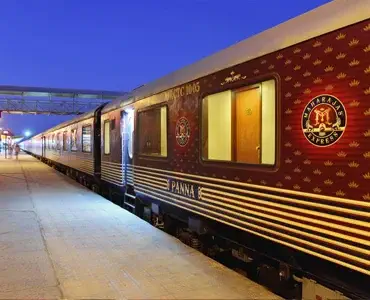
Maharaja Express
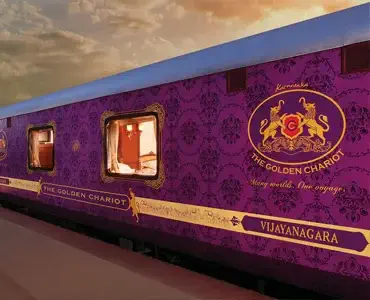
The Golden Chariot
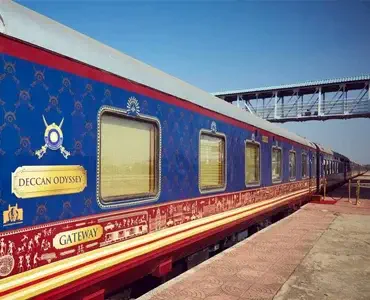
Deccan Odyssey
Latest train reviews.
My Experience
Overall, the trip was a great experience. The tours and the guides were excellent. You could perhaps not charge for soft drinks and beer..... charge a one-time fee and include these items. It will make you look good and not cheap.
Maharajas Express
"Really the Maharajas Express is covering the most prominent tourist destinations such as India's capital Delhi, City of Nawabs "Lucknow", flim city "Mumbai", Agra's “Taj Mahal, Khajuraho, Jaipur etc. It could become an exciting tour."
Brilliant Staff & Experience
Each and every staff gave us exemplary service! The Chef and his crew were absolutely fantastic, and so were the tour guides.
Luxury Train Travel in India - A Magnificent Journey into India's Resplendent Panorama
Step onboard the Luxury Trains in India, and enter a world overflowing in opulence, while exuding an aura which transports you back to the days of Maharajas. Discover the various charms of India even as you experience the magnificent hospitality and lose yourself in the arms of comfort onboard….
India’s tryst with luxury rail journeys commenced with the introduction of Palace on Wheels train in 1982, and since then, luxury trains have achieved one milestone after another. As the guest, relaxed in his personal cabin, takes a sip of a heady cocktail and stares outside at the breathtaking scenery greeting his eyes, he realizes the incredibility of it all.
Indian Luxury Trains (ILT) holds the distinction of being India’s first luxury train travel portal which brings together all luxury trains operating across India on a single platform. The luxury trains of India, namely Maharajas’ Express, Palace on Wheels, Deccan Odyssey, The Golden Chariot, The Fairy Queen, Maha Parinirvan Express and Palace on Wheels let you embark on a fascinating journey to discover the heritage of India. When it comes to experiencing luxury train travels in India, you can be rest assured that we deliver outstanding service and travel expertise to our customers. Besides, this is the one-stop window for getting access to information like latest news, reviews, details of train facilities, schedules, tariff, journeys, photos and videos. Moreover, we also assist you with your bookings and other formalities through our authorized agents and affiliates. Our expertly crafted tour packages take you to the most enchanting destinations, while being surrounded by the choicest of comforts.
Luxury Trains in India
The renowned luxury trains of India, namely Palace on Wheels, Deccan Odyssey, The Golden Chariot, and Maharajas’ Express, welcome you to embark on a beguiling journey to discover the rich heritage of India.
A grand version of a blue limousine, the Deccan Odyssey train includes all the flavors, traditions, and authenticity of India. With its royal carriages, take a closer look at the lives of local people at several Indian destinations. Begin your rail journey to explore the royal palaces, historical monuments, sandy beaches, ancient caves, and other religious sites.
History – Maharashtra Tourism Rail Corporation (MTDC) after taking inspiration from the royal carriages used by Indian royals, brought Deccan Odyssey to life. MTDC Deccan Odyssey took its first journey on 16 January 2004 and since then, this deluxe train has never failed to impress its guests with top-notch services and warm hospitality.
Journeys – Maharashtra Splendor , Indian Odyssey , Indian Sojourn , Hidden Treasures of Gujarat , Jewels of the Deccan , and Maharashtra Wild Trail
Destinations Covered – The Deccan Odyssey train route covers major Indian destinations with its 6 carefully designed itineraries covering destinations in and around Mumbai, cities in North and South India, places in the Deccan plateau, Indian Wildlife, and the best of Gujarat.
Duration – All the Deccan Odyssey journeys will take 7 Nights/ 8 Days to complete.
Awards & Recognitions – In 2015, 2016, 2017, and 2018, Deccan Odyssey won the World Travel Awards under the category ‘Asia’s Leading Luxury Train’. It also won the ‘TTJ Jury Choice Award’ under the category of Excellence and Innovation in 2016. And in 2017, it was awarded the ‘TTJ Jury Choice Award’ under the category of Excellence and Innovation.
A famous luxury train journey in India, The Golden Chariot offers you the opportunity to live through Karnataka’s 1,600 years of history. So, get on this rail journey and unveil the hidden treasures, empires, and lost kingdoms on a ride on this rail journey. A blend of rich culture, palatial architecture, and 19intricately designed coaches, this luxury train will pamper you with world-class services.
History – The idea of the luxury rail came into development by an MOU signed by Karnataka State Tourism and Development Corporation and the Ministry of Indian Railways in the year 2002. The name Golden Chariot was given after the iconic stone chariots of Hampi, the ruined temple complexes from the Vijayanagara Empire.
Journeys – Pride of Karnataka , Jewels of South , and Glimpses of Karnataka
Destinations Covered – The Golden Chariot train route takes you to the famous destinations of Southern India and some of the places covered on this journey are Bengaluru, Mysore, Hampi, and Mahabalipuram.
Duration – While the Golden Chariot train journey ‘Glimpses of Karnataka’ is completed in 3 Nights/ 4 Days, the ‘Jewels of South’ and ‘Pride of Karnataka’ is terminated in 6 Nights/7 Days.
Awards & Recognitions – In 2017, this luxury train was awarded 7th time with the World Trade Awards (WTA) under the title of ‘Asia’s Leading Luxury Train’. It was also recognized by the TTJ Jury Choice Award for Excellence and North India Travel Award for Best Luxury Train in India 2015.
Maharajas’ Express
Maharajas’ Express takes you back to the bygone era whilst maintaining all modern comforts. Designed to recreate the elegance of the carriages used by former Maharajas, the interiors of Maharajas’ Express provide a nostalgic aura. Set off on a luxurious journey in one of the cheapest luxury trains in India and explore the best of India.
History – Maharajas’ Express was officially launched in March 2010. The Indian Railway Catering and Tourism Corporation Limited (IRCTC) and Cox and Kings India Ltd., made a mutual investment to establish a company named Royale Indian Rail Tours Ltd. (RIRTL) to manage the Maharaja Express train.
Journeys – Treasures of India , The Indian Splendor , The Indian Panorama , and The Heritage of India
Destinations Covered – This luxury rail travel will take you to India’s historical destinations such as Mumbai, Delhi, Jodhpur, Jaipur, Agra, Khajuraho, Varanasi, Orchha, Gwalior, Bikaner, and more.
Duration – While Treasures of India Maharajas’ Express takes only 3 nights/4 days to complete, Heritage of India Maharajas Express, Indian Panorama Maharajas Express, and Indian Splendour Maharajas Express ends in 6 nights/7 days.
Awards & Recognitions – In 2010, Maharajas’ Express won the ‘Best Luxury Train’ at CNBC Awaaz Travel Award. It was the 1st runner up in the Specialist Train Operators Category awarded at Conde Nast Traveler Readers’ Travel Award 2011. In 2012, 2013, 2014, 2015, 2016, and 2017, this Indian luxury rail was awarded the World Travel Award under the ‘World’s Leading Luxury Train’. Lastly, Maharajas’ Express acquired the Seven Stars Luxury Hospitality and Lifestyle Award in 2015 and 2016.
FAQs of Luxury Train in India
Which are the best luxury trains in india, which is the most luxurious train in india, how many luxury and semi-luxury trains are there in india, how to book tickets for luxury train tours in india.
NatureDiary » Blog » Travel Guides » Information
Train Travel In India – A Comprehensive Guide
Known for its multitude of famous and offbeat tourist attractions, India offers plenty of places to travel to and explore. Railway is the best mode of transport to travel for its easy booking process, comfortable journeys and affordability . Besides, what can possibly beat the train journey experience with beautiful views of the countryside?
With one of the largest railway networks in the world, India boasts outstanding railroad connectivity throughout the nation. Those who usually travel by other modes of transport and haven’t travelled by train a lot might find it a bit difficult to figure out how to travel by train and what type of train and class to choose . I came up with this comprehensive rail travel guide to answer all your queries on this matter.
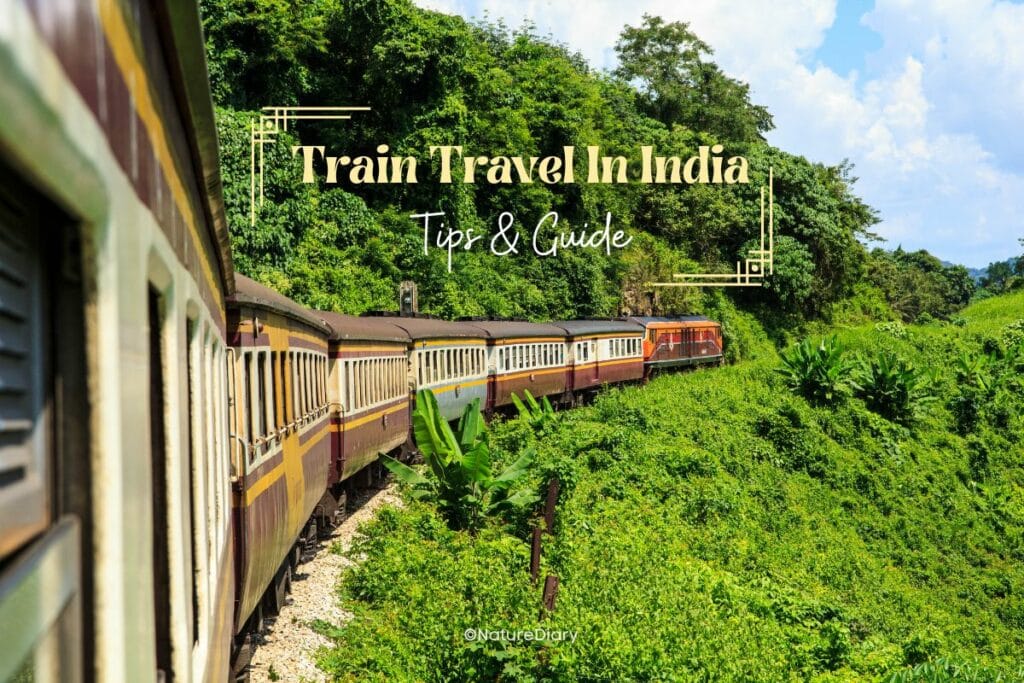
Types Of Trains In India
1. express train.
An express train is your most reliable option if you’re travelling to a different state. Running at a maximum speed of around 100 Km/hour , these trains are much faster than local and passenger trains. Besides, they also have much fewer stops, which allows them to cover long distances quickly.
Apart from ordinary express trains, Indian Railways has also launched AC Express coaches to offer a more comfortable train travel experience . Special express train routes connecting major cities have been launched too. These are known as intercity express trains, such as the Kolkata – Asansol Intercity Express.
2. Superfast Express Train
Superfast express trains are only slightly faster than regular express trains in terms of maximum speed, which ranges between 100 and 110 Km/hour. However, the former takes even fewer stops, which cuts down on the total travel time .
Superfast trains are also more expensive than ordinary express trains as the fares include a superfast surcharge. The Sampark Kranti Expresses, which connect New Delhi to different state capitals and other important cities, fall into this category.
3. Premium Superfast Express Train
There are a few premium superfast express trains too, which have higher fares and come with additional perks. The Duronto Express and Rajdhani Express , for instance, are long-distance trains in India that runs non-stop from its departure station to its destination.
These trains have sophisticated LHB coaches for a more comfortable and posh travelling experience . These premium superfast express trains get more priority and barely delay for any reason. For long-distance travels, I always prefer Duronto or Rajdhani to reach my destinations on time.
4. Metro Train
Metro railway has become one of the most convenient modes of public transport in metropolitan areas in India. Also known as Rapid train service in some areas, the metro railway frequently uses underground railroads to get across crowded urban areas swiftly.
These trains use completely separate tracks from other trains explicitly designed for them. Metro trains are available every few minutes, and passengers can get on and off at any station along the way. This type of railway offers fast and air-conditioned transit at affordable prices , but it’s available in only 15 Indian cities at the moment.
5. Mountain Train
India also has 7 mountain railways, of which 3 have been recognized by UNESCO as world heritage sites . These are special railway routes running through various mountain ranges. Thanks to the picturesque views one can enjoy during the journey, mountain railways are major tourist attractions.
The Darjeeling Toy train and the Nilgiri Mountain Railway are among the most popular ones, but others, like the Kalka–Shimla Railway , offer unforgettable experiences too. Fortunately, I have travelled on all these three railways and the journeys were pretty exciting!
6. Luxury Train
These trains are operated specifically for tourism purposes rather than regular travel. Complete with various luxurious amenities like minibars, restaurants, spas, fitness cars , etc., these are models of ancient royal trains used by different Indian kings and the British.
Luxury trains pass through different tourist destinations and halt at each of them for excursions. The best trains with luxury facilities in India include the Golden Chariot, Palace on Wheels, Maharaja’s express , etc.
7. Local Train
This is one of the most affordable and popular modes of transport in the country. Also known as suburban or local trains run for short distances – usually between a central business district and the suburban areas surrounding it.
These trains are slower than the rest as they stop at each and every station along the way. Seating is unreserved, and it’s quite common for these trains to get very crowded.
8. Passenger Train
Running at 40 to 80 Km/hour, passenger trains offer a mix of reserved and unreserved seating . These trains stop at almost every station on their routes, although not as frequently as local trains.
There are two types of passenger trains in India – slow passenger and fast passenger trains. Both of them are very economical modes of transport.
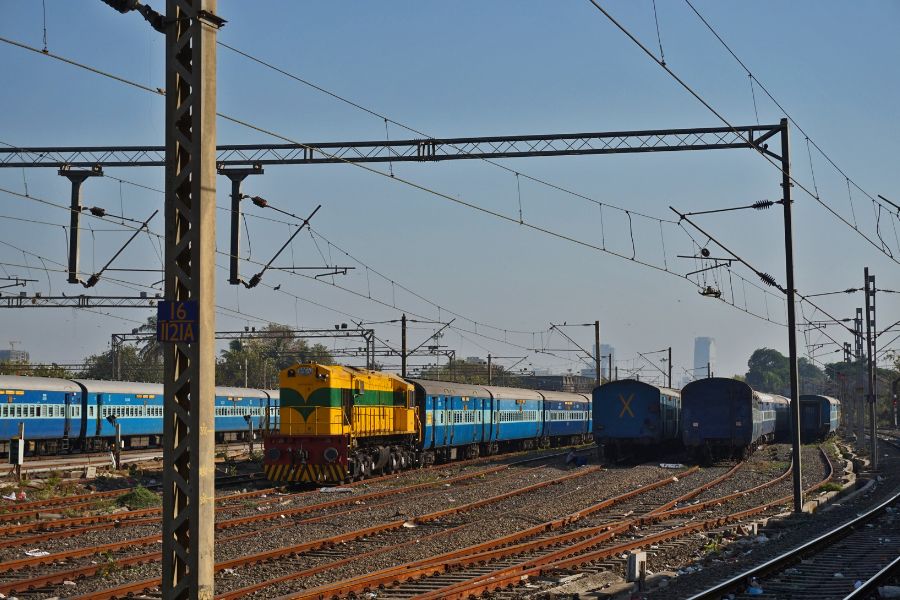
The Classes Of Train
Apart from the different types, one can also choose from various travel classes of trains when booking tickets. This might be a little confusing for those riding the first-time train in India. Your travel experience would depend heavily on the class you’re riding in. Different classes offer varying comfort levels and amenities. Let’s see what Indian Railways offer.
Executive Anubhuti (EA)
These coaches offer a travel experience similar to plane rides. Executive Anubhuti coaches are air-conditioned and come with comfortable recliner seats, infotainment systems, headphones, etc. EA coaches are frequently cleaned and boast very sophisticated sanitation.
Executive AC Chair Car (EC)
Very similar to EA, this is one of the most expensive train classes in India, besides AC First Class. EC coaches also offer a great travel experience, with various amenities, free snacks and drinks, and even large tables in between seats facing each other.
First AC (1A)
These are the most luxurious coaches for long-distance travel, and the tickets can cost around the same as many domestic flights. Travellers can book entire cabins or coupes to themselves and enjoy complete privacy. You can enjoy spacious berths, fresh food prepared in the pantry car, and the added security of lockable doors. First AC coaches also come with shower facilities for the passengers.
First class (FC)
A first-class compartment is very similar to AC first class, minus the air conditioning. If you plan to travel on a first-class train in India, it’s best to go for the First AC class unless you want the privacy of first-class coaches at a lower cost. Otherwise, the third AC is a better choice in terms of both comfort and cost.
Second AC (2A)
The second AC coaches don’t come with individual coupes. They are divided into compartments of three berths each, separated by curtains. These air-conditioned coaches also offer a comfortable travel experience, and the berths are relatively spacious. The fares are somewhere in between 1A and FC class fares.
Third AC (3A)
These coaches offer a mix of affordability and comfort and are an ideal choice for middle-class travellers in India. The coaches are divided into compartments of eight berths each – six regular berths and two side berths. Although 3A coaches don’t offer the privacy and the amenities you’d enjoy in the 2A, FC, or 1A classes, you can easily interact with fellow travellers here.
Third AC economy (3E)
The 3E class was launched to make AC train travel more affordable, but putting more berths per compartment. These coaches have three side berths per compartment rather than two.
Chair Car (CC)
One of the most affordable options for those travelling between different districts or states, chair car coaches don’t have any berths. Instead, they feature chair-style seating. This class is viable for journeys lasting up to a few hours.
Sleeper Class (SL)
Sleeper class is your most budget-friendly option for long-distance train journeys. The berth arrangement is similar to AC 3-tier, with six berths on one side and two on the other per compartment. However, the travelling experience is completely different. Apart from air conditioning, sleeper class coaches also lack the catering services you’d get in 3A class. Instead, you may buy food from vendors boarding these coaches.
Second seating (2S)
Offering the cheapest reserved seating, these coaches come with chair-style seats too. However, the problem with 2S coaches is that they can get quite crowded and congested as they have a mix of reserved and unreserved seats.
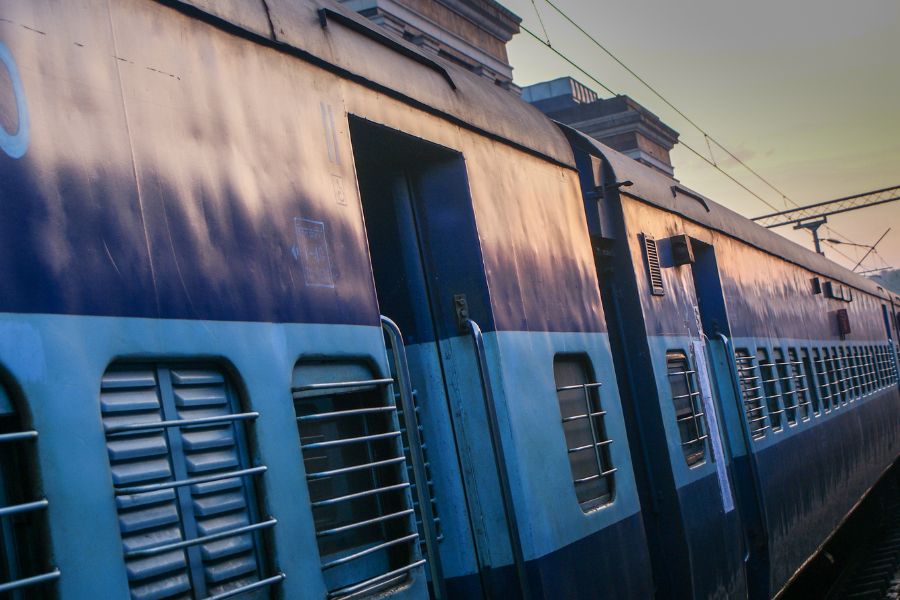
Different Berths On Indian Train
Usually, you have the option to choose your preferred berth when reserving your berths for a train journey. Different berths have their own perks and downsides, which you should always consider while booking your tickets.
- Upper berth (UB): Do note that only the top berths of the face-to-face berths are referred to as upper berths – not the side berths that lie lengthwise. While elderly travellers or women wearing sarees may have a hard time getting up there, an upper berth is perfect if you need to rest.
- Middle berth (MB): Lying between the upper and the lower berth, the middle berth is more accessible. However, it’s not really my most preferred choice as you can neither enjoy the views outside nor engage in conversations very well. Unlike when travelling in the upper berth, you’ll also have to deal with the chatter of people.
- Lower berth: My personal favourite, this berth is next to the window and offers nice views. Lower berth travellers can easily get off their berth without worrying about having to climb back up.
- Side upper berth (SU): Moving on to the side berths, SU refers to the topmost berths among the ones positioned lengthwise along the wall of the coach. This berth offers a couple of nice perks, like extra headspace and allowing you to interact with other passengers with ease.
- Side middle berth (SM): Remember I mentioned that 3E coaches have three side berths in each set instead of two? The side middle berth is the extra berth in question, and it’s one of the worst berths you could get. The cramped space may result in a very uncomfortable travel experience, and you won’t get to enjoy the views very well either.
- Side lower berth (SL): This is the best alternative in case a lower berth isn’t available. Side lower berths offer the same accessibility perks and views as lower berths. You can also chat with your co-passengers with ease. However, people walking past your berth can be a little disturbing due to the position of this berth.
Who Can Ride Trains In India?
Pretty much anyone and everyone can ride trains in India. If you travel by train even a couple of times, you’ll notice people of every age group using it for transport. Even minors and senior citizens wouldn’t have any trouble riding trains. Local trains also have ladies-only coaches to ensure a safe travelling experience for women.
However, you’ll need to choose the travel class and berth according to your requirements and who you’re going with. For couple travellers , the best options are the FC/1A coupes or the side berths in Third AC and sleeper coaches. When booking tickets for family travellers , try to make sure everyone can stay together if possible. For solo travellers , it doesn’t really matter – go for whichever berth you like the most.
If you plan to travel with pets, standard first class and AC first class are your only options. Those are the only coaches where passengers are allowed to carry pets. Alternatively, your dog can travel in the dog box or the brake van.
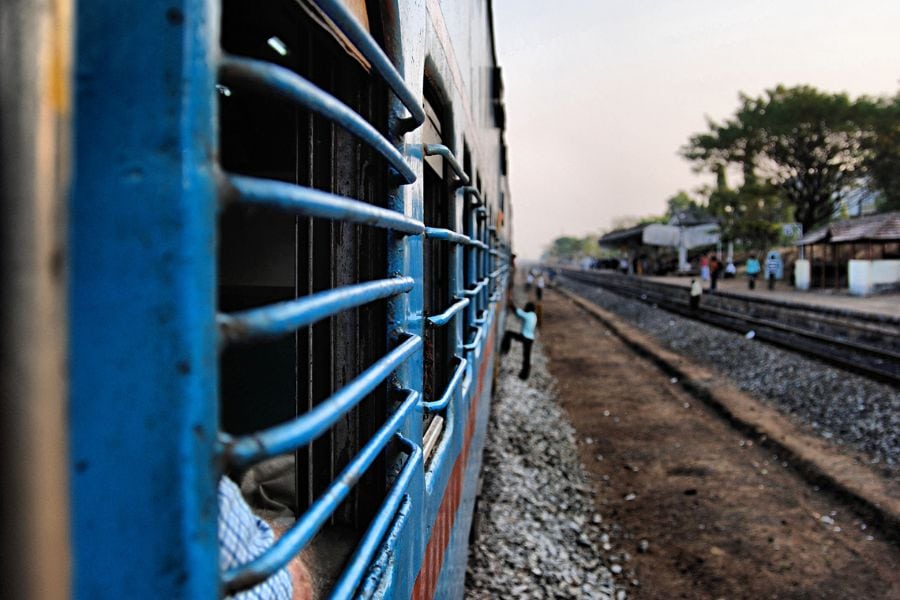
The Fare Of Train Journey
As you know by now, you have plenty of options when booking a train ticket in India and can usually find something that fits your budget. There’s a huge contrast between the fares for AC First Class and sleeper class coaches. This is something you should always keep in mind when booking train tickets.
Here are two charts showing the fare rates for different train classes at varying distances:
1. Fare For Mail/ Express Trains
2. fare for ordinary trains.
Please note that the above tables contain fares that are subjective to change over the years. We will update it as soon as we get the latest information. You can also visit the official website of Indian Railways .
How To Book A Train Ticket?
You have several ways to book train tickets for your travels. Online booking is obviously the most convenient, but you may also get your tickets at the counter. Here are four ways you can book a train ticket in India.
Online Booking Procedures
1. using the uts app for unreserved ticket.
Indian Railways launched the Unreserved Ticketing Service (UTS) app to make life easier for passengers. Especially in busy urban areas, the queues at ticket counters for local and passenger trains can get quite long. You can instead use the UTS app to book a paperless ticket online.
You first need to download and install the UTS app on your device ( Android | IOS ). Run the app and register yourself as a new user, signing up with the necessary credentials. Once you have signed up, log in to your account and click on book ticket. Below are the steps to follow for this method.
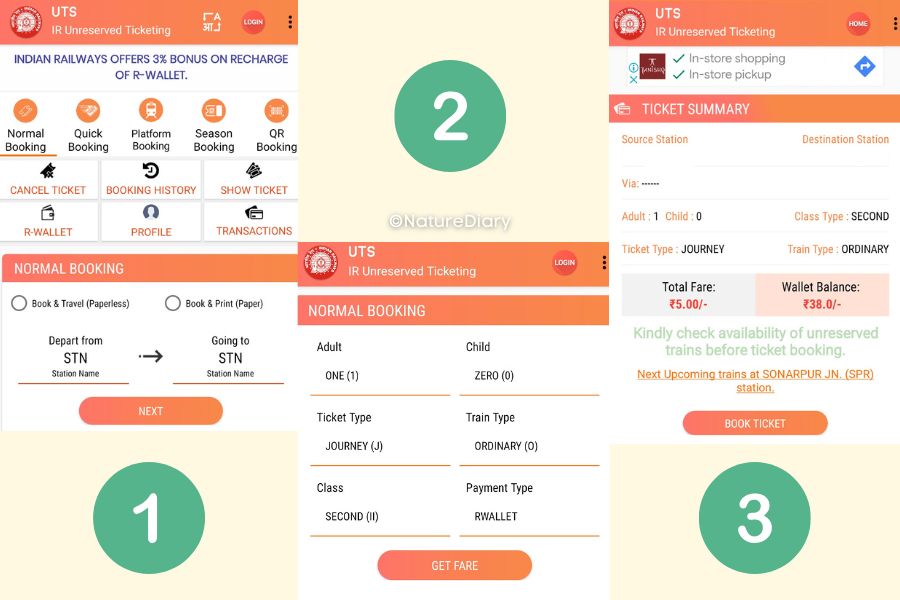
- Step 1: Select ’Normal Booking’ from the options that appear. At this point, the app will ask you to turn on the location/GPS on your smartphone to identify the nearest railway stations. Accept this request. Now you will find two options “Book and Travel (paperless)” and “Book and Print (paper)”. Remember to print the ticket in case you have selected the second option. Then fill up “Depart from STN” and “Going to STN”, and click the NEXT button.
- Step 2: Next you will get 6 boxes on your screen containing the Number of Tickets for Adults and Child, Ticket Type (journey and return), Class, Train Type and Payment Type. Choose the suitable options and click on the GET FARE button.
- Step 3: On the next page, you will find your ticket summery. Verify the details and click on BOOK TICKET button. Do it and complete the payment, and your ticket will be generated.
You may check your tickets later by clicking on the home icon on the top right and tapping on booking history.
2. Booking Reserved Tickets With IRCTC app/ Website
Besides the official train ticket booking website , IRCTC has also launched a mobile app that allows users to carry out various tasks online, such as booking tickets, checking the ticket status, ordering food on the train, etc. Use these steps to reserve seats or berths for long-distance train journeys.
- Step 1: Install the IRCTC Rail Connect app ( Android | IOS ) and register yourself. Now, log in to your account using the credentials created during registration.
- Step 2: From the homepage, select Plan My Bookings. A page with spaces to enter your departure station, destination, and travel date will appear. Fill them up and click on Search Trains.
- Step 3: The app will now provide you with a list of trains, along with information like their departure time and the availability of seats/berths. Information regarding the availability or non-availability is provided separately for every travel class. You can view the respective ticket prices by clicking on the classes.
- Step 4: Select the train and class of your choice, and tap on passenger details. Now, fill in the details and click on the respective checkboxes to accept the terms and conditions. Keep in mind that each booking can include only up to six adults and two infants maximum.
- Step 5: Once you’ve provided the necessary information and accepted the terms and conditions, tap on Review Journey Details. You can now go over the train information, passenger details, class and berths booked, etc.
- Step 6: If all the details are fine, fill in the Captcha at the bottom and tap on Proceed To Pay. The app offers several payment options – debit card, credit card, net banking, and E-wallets. You’ll find the tickets under your transaction history after completing the payment.
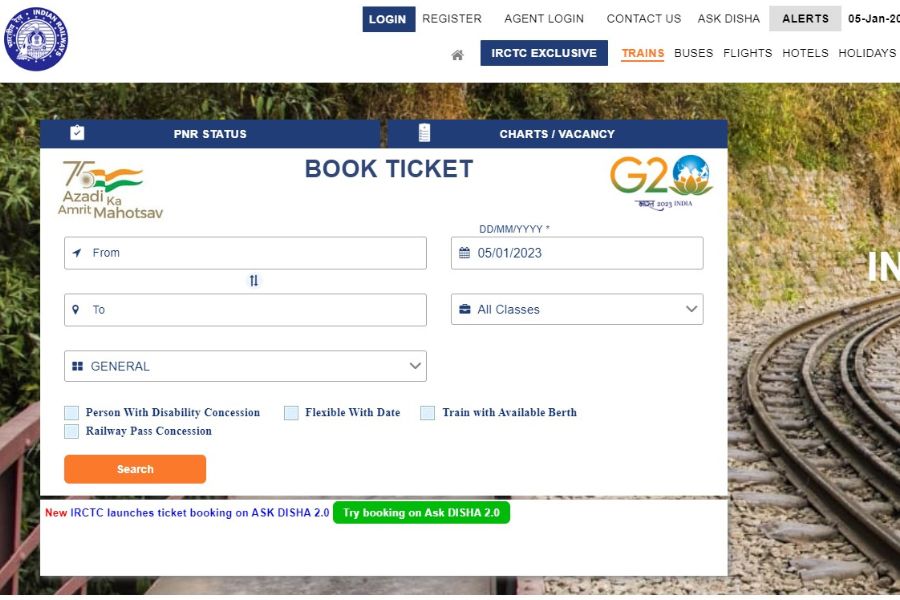
3. Booking Train Tickets With Third-party Apps
Apart from booking directly through the IRCTC app, you can also use various other third-party apps that offer online travel ticket and hotel booking services. Especially if you’re already booking your hotel rooms through an online travel company, it might be more convenient and cost-effective to use it for train ticket booking.
Although they charge an additional service fee that you can avoid by using the IRCTC app , they also offer various discounts, cashbacks, and other special offers.
Every third-party ticket booking app has its own booking procedure and interface. In this regard, you should note that their user interface is usually more intuitive and easier to use than the IRCTC app. This might make them a better choice for users who aren’t too tech-savvy and find the IRCTC app to be too complex.
Examples for such third party ticket booking websites are makemytrip.com , railyatri.in , goibibo.com for domestic travellers and 12go.asia for international travellers.
Offline/ On-counter Ticket Booking
Passengers who find online booking to be too difficult, lack the means to pay online, or face other problems with online ticket booking can get it done offline instead. For this, you need to visit the booking counter at your nearest railway station and request a reservation form.
The form has spaces to fill in with details like passenger information, berth preference, train, train number and name, travel date , etc. Once you have filled it up, submit it at the booking counter along with the payment. They’ll issue your tickets along with your unique PNR number.
Online booking is much more convenient and hassle-free, but sometimes you may not have a choice besides offline booking. You can also get your booking done through brokers and travel agencies, but it’d be much more expensive as they charge extra to earn their profits .
Common Terms Related To Train Ticket
When booking or reading your train ticket, you might come across a number of terms and abbreviations that you’re unfamiliar with. Indian Railways commonly use these terms, and it’s a good idea to learn them beforehand. Below are some of the most common terms related to train tickets.
- PNR: Passenger Number Record
- RAC: Reservation Against Cancellation
- CNF: Confirmed
- CAN: Cancelled
- WL: Waiting list
- RSWL: Roadside station waiting list
- RLWL: Remote Location Waiting List
- GNWL: General Waiting list
- TQWL: Tatkal Quota Waiting list
- PQWL: Pooled Quota Waiting List
- RQWL: Remote Quota Waiting List
- RLGN: Remote Location General waiting list
- LB: Lower Berth
- MB: Middle berth
- UB: Upper berth
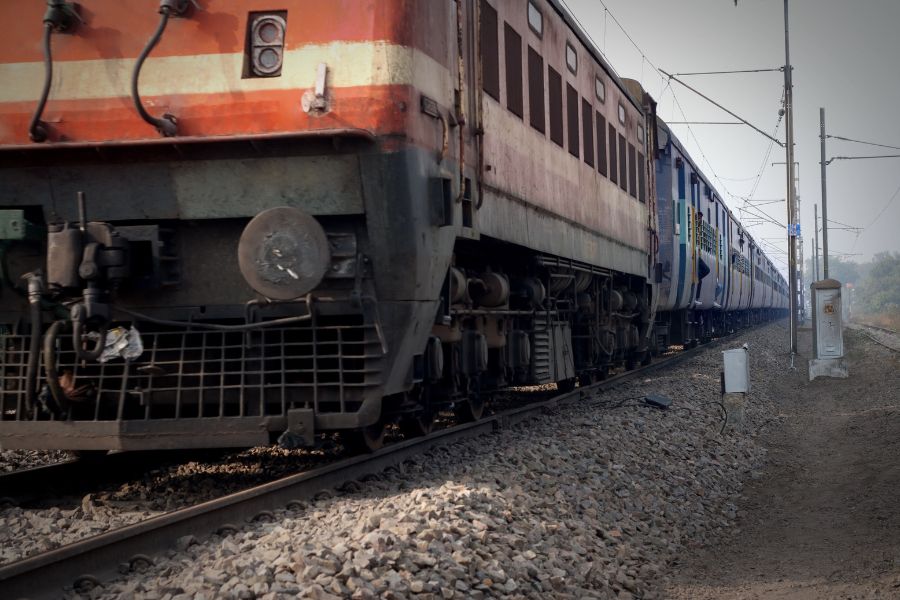
Facilities You Can Get Inside Indian Trains
Indian railways have made significant improvements to train coaches over the years, adding various new facilities. Although not every train class is equally luxurious, some of them can deliver quite an amazing travel experience.
Most train coaches have toilets, with the exception of local and passenger trains meant for short-distance travel. Usually, there are four toilets per coach – two on each side. During 2021 and 2022, Indian Railways also installed bio-toilets in many trains to reduce the dumping of bacteria on railway tracks.
2. AC and fan
The various air-conditioned travel classes mentioned earlier come with AC units to keep the passengers comfortable during travel. The non-AC coaches have plenty of fans instead to maintain air circulation and comfort . You may also ride a full AC train in India, where all the coaches are air-conditioned.
3. Bed, Pillow And Blanket
Passengers travelling in AC first class, AC Second Class sleeper, and AC 3-tier sleeper receive free bedrolls from Indian Railways. These bedrolls include a pillow, a blanket, two-bed sheets, and a face towel.
Hence, you don’t have to worry about it getting too chilly at night in air-conditioned coaches. In case you don’t receive your bedrolls for any reason, you’re entitled to a refund of ₹20 once you reach the destination station. You’ll need a certificate from the TTE as proof of your claim.
As of now, Indian Railways has fitted only the air-conditioned coaches with dustbins as these coaches have sealed windows, and passengers end up littering the coaches. They’ve also integrated some of the modern trains like Tejas Express with sophisticated compacter dustbins that crush garbage to make more space inside.
5. Charging Point
Most sleeper train coaches have charging ports beside the seats or berths . You need not worry about not being able to charge your phone during long train journeys, regardless of the class you’re travelling in (unless others are using them already).
6. Reading Lamp
Travelling in the AC 2-tier sleeper class will also get an individual reading lamp in your berth. This is quite useful if you don’t want to go to sleep and night and have work to do.
7. Luggage Security
The cabins and coupes in first-class coaches (both AC and non-AC) have doors that you can lock. This ensures significant luggage security, as you need not worry about your stuff getting stolen as you sleep.
However, this feature isn’t available in other travel classes. You’re allowed to carry luggage in the luggage van for free up to a certain weight limit, over which you’ll have to pay an extra fee. It is pretty secure, although there’s a chance that your stuff may get damaged unless packed very well.
8. Child Safety
Northern Railway has recently taken up the initiative and launched special baby berths as an experiment. Currently available only on certain trains, these berths have baby-sized foldable extensions on the outer edge. The extended berth area has a railing to prevent babies from falling off and straps to keep them secure.
9. Food Items
Long-distance trains have pantry cars to prepare fresh food on the move. However, this is only for only passengers travelling in first class and AC first class coaches. Those travelling in AC 2-tier and AC 3-tier receive food prepared at IRCTC’s kitchen facilities at various stations along the way. Indian Railways has also launched an eCatering service, through which passengers can order restaurant food while travelling in trains.
Food On Indian Trains
Let’s dive a bit deeper into the availability of food on trains in India and see how you can while travelling:
1. Pantry Cars
As mentioned earlier, long-distance trains have pantry cars. Apart from catering to the 1A and FC passengers with food cooked on the train, the pantry car personnel also take down orders from those travelling in 2A, 3A and sleeper coaches . They pass on the orders to a station on the way with kitchen facilities, where they collect the food and load them onto the train.
2. Online Order
You can now use the IRCTC app to order food online too. The eCatering service is a great initiative by IRCTC that allows passengers to enjoy restaurant food while travelling by train. They have partnered with various FSSAI-approved restaurants at more than 450 stations. Placing the order is easy too, since your details and other information are already linked to your PNR number.
3. Buy At Train Stations
You always have the option to buy food at railway stations along the way, provided that the train will stop there long enough. Note the halt times and be careful not to get stranded because your train took off while you were buying food.
A variety of foods are available at railway stations, although snacks are the most common. When travelling in sleeper class or chair cars, you may also buy food from vendors boarding the train at different stations.
4. Pre-packed Food
If you aren’t travelling in a coach with catering facilities and don’t want to take your chances with buying food during the journey, you can carry long-lasting pre-packaged food . This is also a good solution for those who prefer homemade food due to health concerns . Choosing relatively dry food items is advisable, so you don’t have to worry about leaks or creating a mess. Also, make sure the food won’t go bad by the time you can eat it.
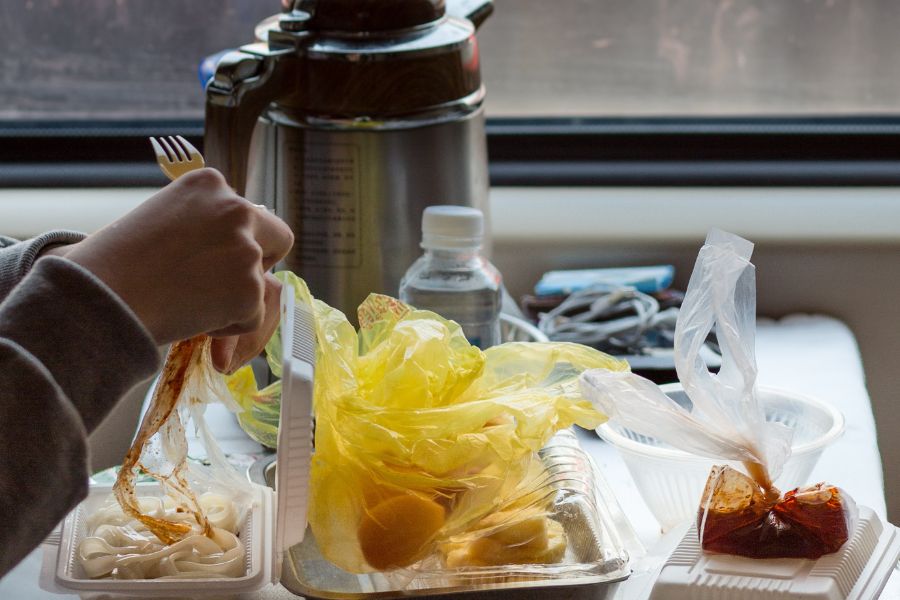
Things To Carry While Travelling on Trains
For individuals unfamiliar with travelling by train, packing for the journey might appear to be a daunting task. While you can’t afford to leave behind anything important, carrying extra and unnecessary luggage isn’t recommended either. Here are six things that you should carry when travelling by train in India:
1. Ticket And Other Essential Documents
Forgetting your tickets at home is a terrible idea. Travel ticket examiners (TTEs) board reserved compartments to ensure no one is travelling without tickets and everybody is in their assigned seats . You must display your ticket and prove that you have booked one to avoid getting in trouble.
Thankfully, you don’t necessarily need a physical copy of the ticket – a PDF version of it on your smartphone will do just fine. Hence, in case you book your train tickets online, you don’t need to print them out.
Apart from your tickets, you should always carry proof of identity while travelling. Your Aadhar card is an ideal choice for this, although a voter ID card or driving license would work too.
2. Your Mobile Charger
Unless you’re travelling for a day and are confident your phone has enough battery life, you should always carry your mobile charger. You can charge it on the go using the charging point beside your seat. Also, definitely carry a power bank if you have one, just in case the charging point is faulty.
3. Water Bottle
Even if the journey isn’t long enough for you to need meals on the way, you’ll need water. You can easily buy a bottle of packaged drinking water at a station or from vendors boarding the train. However, carrying your own water bottle from home is advisable to save money and reduce waste . This is even more important when travelling to desolate places where you might not find shops or vendors to buy water from.
4. Safety Locks
Luggage safety is a huge concern on Indian trains, as anybody can board or get off a train at any given time, even without tickets. Unless you’re travelling 1st class, there are absolutely no luggage security features to protect your stuff from theft.
You should always use safety locks to secure your luggage bags while travelling, regardless of your mode of transport. Travel trolley bags are the best options for train travel as they are easy to carry and have locking facilities. Besides this, it’s advisable to carry a chain with a lock to tie your bags to your seat during train journeys too.
5. Earphones
A pair of earphones can prove to be invaluable during long train journeys when it’s easy to get bored unless you’re travelling with a group of friends.
Apart from these essential items, you may like to carry a neck pillow, travel clothing, hand sanitiser, toilet seat sanitiser, soap paper, biodegradable wet wipes, sleeping bag liner, inflatable travel pillow, power bank and books . You may also like to check the list of travel essentials worth carrying on your trip.
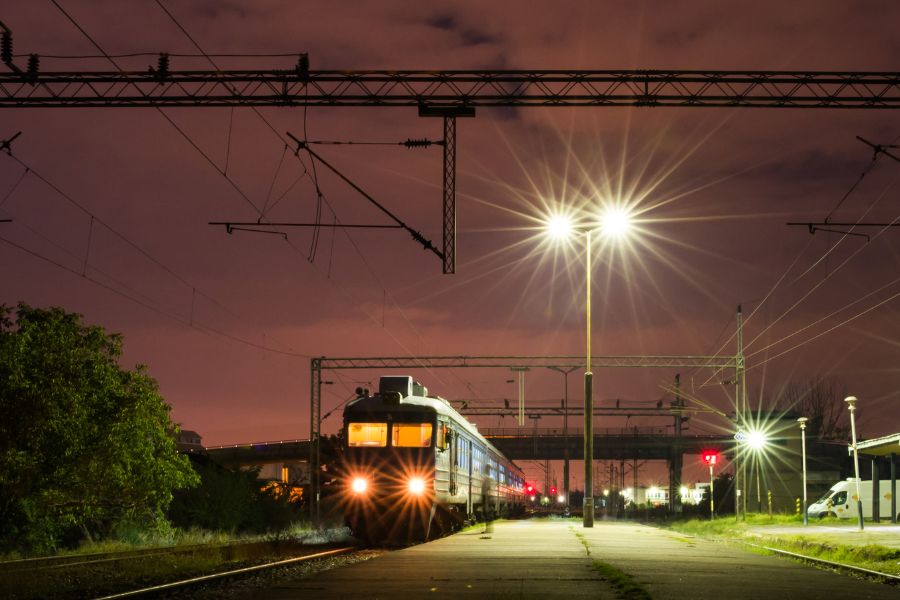
Tips For Travelling By Train In India
It can take you some time to get accustomed to train travel in India. Especially if you’re travelling in sleeper class or one of the other coaches without a lot of amenities, it might initially be a rough experience. To help you avoid potential hassles and enjoy a smooth journey, I’m going to share a few tips I learnt from my own experiences.
1. Pack Some Extra Food
Due to unexpected delays, train journeys can take much longer than they’re supposed to. In worse cases, the train might stop for a long time in the middle of nowhere. When embarking on a long train journey, it’s always wise to pack some extra food for such situations.
It doesn’t necessarily have to be a meal – simple dry snacks like nuts and biscuits are fine too. You just need something to keep you from starving until you can find a meal.
2. Book Your Tickets Well In Advance
In a country as densely populated as India, it’s only normal for train tickets to be very high in demand. Unless you book your tickets ahead of time, you might end up on the waitlist or not even get a ticket at all.
Train tickets are available for booking 60 days before the date of departure , and it’s best to get yours as soon as possible. This is especially true if you plan to travel during certain times of the year, such as the winter months, Diwali, and during other major festivals.
3. Look For Nearby Stations If Tickets Aren’t Available
Considering the high demand for train tickets to major cities and popular tourist destinations, it’s quite common to find no tickets available on your preferred travel date. In such cases, check if you can get tickets to other stations near your destination station . Although it’s a bit inconvenient compared to a direct train route, you can get a cab or an auto rickshaw to cover the remaining distance.
4. Travel At Night
For long train journeys, it’s best to opt for nighttime travel if possible. It’s easier to spend your time sleeping, and you don’t have to spend in a hotel room for the night . Besides, there’s far less noise and commotion at night since most passengers are asleep, ensuring a more relaxing journey.
Travelling at night also means you don’t waste a day travelling to your destination. You can check in at the hotel early and spend the whole day sightseeing.
5. Always Carry Toilet Supplies
Unless you’re travelling in one of the costlier classes, dirty bathrooms will always be a problem on Indian trains. Running water is also limited, which can cause severe inconvenience during long journeys . As mentioned earlier, you should always carry hand sanitiser and some toilet paper during long train journeys.
6. Reach The Station Early
When you have a train to catch, never aim to reach the station with just a few minutes at hand. In case you are unaware, major railway stations in India are huge, with 10 or more platforms in many cases.
It might take you far longer than expected to get to the platform where your train will be arriving . Add up the time taken to navigate through the crowds and the heaps of luggage, and you’ll see why it’s wise to reach the station at least half an hour in advance.
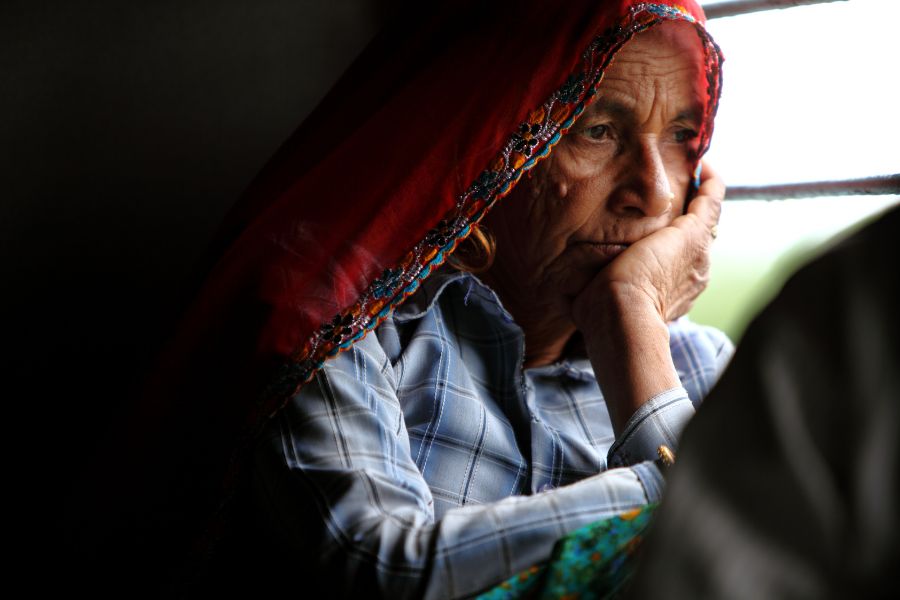
Frequently Asked Questions (FAQ)
Unless your waitlisted ticket is confirmed, you’re not allowed to board the train. Only when people with confirmed tickets cancel their bookings the waitlisted tickets are promoted to confirmed status in serial order. Unconfirmed waiting list tickets are refunded by Indian Railways. Travelling with unconfirmed waiting list tickets is illegal.
Reserved compartment tickets are specific to the respective trains. You can only board the train for which you’ve booked the ticket. However, this doesn’t apply to unreserved tickets like those for local trains or general coaches in other trains, and you’re free to board a general bogie on a different train.
Every train reservation has a PNR number linked to the passenger details. If you book a train ticket in your name, only you’re allowed travel on it. However, IRCTC now allows passengers to transfer train tickets to someone else. You’ll have to visit the reservation counter with your ticket and ID proof of the person to whom you wish to transfer the ticket.
You can board your booked train at a different railway station along the way, and there shouldn’t be much of a problem if it’s just 2-3 stations away from the boarding station on your ticket. However, in case you board it from one of the previous stations, you may have to pay the penalty for the extra distance. You can also change your boarding station on the IRCTC app in advance, which is a much safer option.
It’s recommended to book your train ticket as early as possible. This not only increases the likelihood of getting confirmed tickets but also allows you to choose the berths as per your preference. Train tickets are available for booking up to 60 days in advance, excluding the departure date.
There are various apps that would enable passengers to locate and track their trains live on the map while travelling. I use the app Where is My Train on my own trips, which is one of the most popular apps. Developed by Google for Indian Railways, this app provides various information such as the live location, train speed, schedules, etc.
Train travel in India might initially seem complicated, but it’s one of the most convenient modes of travel once you get used to it. Booking train tickets online is easy, and so is managing your booking and checking your ticket status.
I’ve always preferred travelling by train, and the digitalisation of the services through the IRCTC app has made things even better . In case you weren’t sure how to travel by a first-class sleeper train in India, I hope this guide has cleared up your doubts.
I hope you’ll enjoy a great train journey and gain an experience worth remembering.
We hope that you have enjoyed this article. Let us know your experience! If you like us to write on any specific topic, send your request to [email protected] . Your feedback is highly appreciated. We will love to hear from you!
Is This Article Helpful? Cancel Reply
- Rating 5 4 3 2 1
How To travel safely in Indian trains: 13 Awesome tips
I was 12 years old when I traveled solo in the sleeper class of an Indian train. I was unattended by an adult on this overnight journey from Amravati to Mumbai. I can safely and happily say no untoward incident happened with me (a solo traveling girl child) in Indian railways.
If you are still wondering if it is safe to travel by train in India? My answer is, Yes, traveling by train in India even though risky at some levels, is safer if you travel in a reserved compartment. Staying cautious is the key. If you are a female traveling solo or with a child then try to get an upper berth where you are at a safe distance from the (unwanted) touch of passers-by.
Of course, there is much more to train travel in India than what I have just mentioned.
Now that I am a mother, I am not very sure if I will be as daring as my own parents and send my kids to travel solo in the train.

I asked Amandeep Kaur (an avid traveler who loves train journeys and is also the author of this post) to give her tried and tested tips on safe traveling in Indian trains.
Here is what she says.
I have been traveling in trains in India since I was a child and I have been traveling solo for years now. I haven’t faced any major issue and have found it quite easy and safe to travel by train in India.
Train travel in India is crowded, often messy and loud, but a complete enriching experience in its own.

Here are my tried & tested 13 awesome basic safety tips for traveling by train in India.
1. Wear suitable clothes
To be on the safer side, avoid expressing your personal fashion sense while traveling in train.
Dressing modestly in loose fitting clothes, keeping your shoulders and legs covered would minimize stares and unwanted attention that is common for foreigners and solo women travelers.
Preferably opt for something that local women wear so that it’s easy to blend in.
While choosing your train travel clothes, keep in mind the weather and class you are traveling in. During summers, Sleeper coaches (Non-AC) can get very hot.
During boarding or de-boarding a train, the crowd gets very pushy and too close for comfort.

I would highly recommend clothes which cover your cleavage for personal comfort from unwanted stares and “not so accidental” touches.
Avoid wearing too much jewelry and other expensive accessories.
Though sheets and blankets are provided in AC coaches, for overnight journeys I always carry a cotton dupatta/stole with me so that I can cover myself up with something that I am sure is very clean and smells familiar and comforting.
Read more on How to Dress in India: the Ultimate Dos and Don’ts.
2. Safety on station

When you reach the station, look for the display board that lists the train name, number with its arrival time and platform number. If in doubt about train arrival, platform number, etc, ask the officials at the enquiry counters or railway police or the shopkeepers at the platform.
Reach your platform well before time as Indian platforms tend to get very crowded with passengers, people who have come to bid farewell to the passengers, people who have come to receive the passengers, red uniformed porters and hawkers.
A common sight in India is people crossing the railway tracks to reach the platform on the other side. This is illegal and should not be done.
Use the foot over-bridge if you have to cross to the other side.
Don’t keep your belongings unattended anywhere.
Tickets are not usually checked at the station before you board the train.
You must have your ID card with you to show to the ticket examiner.
Enquiry counters, washrooms, waiting rooms and other facilities like chemist shop, book shop etc can be found easily on Platform 1 at most of the stations.
‘Women only’ waiting rooms are there at most of the stations.
The Good news is that the CRIS reservation system used by the Indian Railways uses an algorithm where a single woman traveling is always preferably given a seat where there’s a family or other women near her compartment.
3. Travel Light
All stations are not equipped with lifts and escalators. These are installed only at major stations. So, it’s advisable to travel light.
If you need the services of Porter/Sahayak (commonly known as Coolie) for carrying your luggage, you will find them on the platforms wearing the quintessential red-shirt, a copper-badge on their arms. They charge a fee according to the weight of the luggage. The going rate is Rs.100 per luggage.
Trivia: ‘Coolie’ is a colonial-era racist term. Now called as Sahayaks, they don’t mind being called a coolie. Perhaps it makes them feel like megastar Amitabh Bachchan whose movie ‘Coolie’ was a blockbuster.
Keep your money, cards, ID proofs, phone and other important documents in a separate bag/pouch and keep it close to you all the time.
Don’t keep all your money in one place. Keep a separate change of money with you that you might need in order to use washrooms at the stations or to buy something.
PRO-TIP FOR TRAIN TRAVEL: I always travel with only one backpack so that even if I need to use the washroom at such places, I can carry it inside with me.
Don’t forget to pack your First Aid kit. This post by a wanderlust doctor will give you a good insight into what you need to pack.
4. Know your train and seat

Usually, there are many display boards at the platform displaying the train number and coach number due to arrive at the designated place on the platform.
Look for the board displaying your coach number and wait at that place.
Sometimes, getting on or off the train may seem like a hassle due to the crowd as there is no queue to board the train. Just stand your ground, push a little if you have to and find your way.
As soon as you board, find your seat, place your luggage under your seat or nearby and settle down.
Also, look around for emergency exit so that in case of an emergency you know where to go.
You may sometimes find someone else occupying your seat, tell the person politely that you have a reservation for it. In all probability, the person would leave.
You may be approached by people wanting to exchange seats, do it only if you think there is a good enough reason and your comfort is not compromised.
Know your AM and PM – Once while traveling by train, I witnessed an incident, where two persons were arguing for a berth, both claimed to have a reservation for it. Later on, it came to light that one man had booked the train for the wrong date as it starts late at night around 12.30 a.m. The ticket he had purchased was for the previous date, the day that had just ended.
5. Stay connected
Always keep your phone and power bank charged. Indian train compartments have common power points for phones.
Use your phone to stay updated about the train schedule during the journey as stations are not announced in trains, unlike many other countries.
Once while traveling, I lost my phone and never got it back. Since then, I keep a diary with me where I note down all the emergency numbers and contacts of people I may need to contact.
Keep a friend or family member updated about your journey and schedule etc so that if you don’t reach a place on time, they can raise alarm.
6. Railway staff/ attendant
After settling in my seat, I look for train attendant so that I know in case of an emergency, complaint, etc, whom to contact.
Sometimes sheets/blankets are already placed on your berths and sometimes you have to ask the attendant for it so it’s good to know the person responsible for it.
They usually have a seat near the washroom so in case you are a woman traveling alone, you know if it’s a staff or a random person hanging around.
While traveling at night, I make it a point to use the washroom before the other passengers finally retire to sleep as most of the lights are shut out at night.
It is not compulsory to tip the train attendant. However, many people tip anywhere between Rs.20 to Rs.50. Read more about tipping in India in this post .
7. Stay aware and appear confident
Don’t get too lost in your devices that you are unaware of what is happening around.
Even if you are a woman traveling alone for the first time in a train in India, appear confident. It’s not as scary as you may have heard. Don’t let this fear stop you from experiencing the real India.
8. Food and drinks
Most of the long route trains have pantry cars where food is cooked and served to the passengers after you place an order to the attendant.
You have to pay for the food you order.
Food is already included in the train fare for Rajdhani, Shatabdi, and Duronto trains.
Many trains don’t have panty cars. While traveling in such trains, you can buy eatables from the vendors at the stations during the journey.
There’s a lot to choose from depending upon the area you are in. You can get pakoras, samosa, idli, bhajiya, kulcha, poori-sabji, wafers, biscuits, cold drinks etc.
There are many options to order food online during your journey and it gets delivered on your seat in train such as railmitra.com, railyatri.in, railrestro.com, ecatering.irctc.co.in at the stations covered by these.
Through these websites or their apps, entering your PNR/ journey details you choose your meals, place order, pay online or cash on delivery and have your meals delivered on your seat.
Dominos has started delivering pizza at some stations.
Avoid taking any eatables from strangers.
I prefer to carry home-cooked food and water bottle with me.
- Should you drink Tap Water in India?
- 16 Tips on Eating Street Food in India & Not Getting Sick
9. Conversations

In case you feel like striking a conversation with co-passengers, limit it to general topics and don’t disclose personal information that may put you in an uncomfortable situation.
If you like your privacy, it’s better to have a book with you to read or pretend to be busy with something all the time. A headphone is super helpful to avoid unwanted conversations.
Sometimes people initiate conversations even if you are not interested.
If I do not feel like interacting with someone, I just reply in one word. If the person still doesn’t get the hint then I make a phone call to some friend that I haven’t talked to for long.
If you are a female foreigner traveling solo, I would suggest you avoid conversations with men traveling without any female companion or family, unless you are yourself ok with striking a conversation.
It’s not that men traveling without female companions are a threat to your safety, it’s just that there are high chances of you getting unsolicited attention for the whole journey.
10. Avoid travelling during major festivals
Plan your journey in such a way that you don’t have to travel on major festivals of that place.
Trains get way too overcrowded and it gets difficult to even board the train.
It has happened to me once while traveling to Roorkee (Haridwar) from Patiala. When the train arrived, it was full already and the platform was so crowded that I was unable to board the train despite having a reservation.
People, especially men were pushing to board the train and I didn’t feel like risking my safety.
If you have to travel during such period, travel only by AC Class.
11. Be aware of the rules of railway
Smoking and consuming alcohol is not allowed inside trains and neither on the railway station.
Do not carry inflammable articles with you while traveling.
Littering the stations is also an offence.
Traveling standing on the footsteps/door of the train coach is an offense. You may still find some people doing all these things despite the rules.
12. Avoid getting down the train in between stations

Sometimes trains stop midway (where there is no scheduled halt) to let other trains pass.
It may also stop for more than the scheduled time at a particular station.
Stay inside the train and avoid getting out just to stroll.
13. Prevention of sexual harassment in trains
Many incidents of sexual harassment in trains have been coming into light. It is a serious punishable offense.
Railways and government are taking preventive measures for this and to make train journey safe for female passengers.
If you face any such situation, you don’t need to stop the train to visit a police station for registering your complaint, you can approach train ticket examiner or railway police personnel on duty in the train.
There is also a helpline number for safety during train travel. You can contact 182 (all India security helpline number) for safety issue during your journey. Click here for detailed information about all railway helpline numbers .
14. Female travelers should opt for Upper Berth
In addition to all the safety tips mentioned above, women traveling solo or with other females in groups should opt for upper berths or berths together in a cabin/coach while booking the tickets.
I don’t prefer side upper or side lower seats because that’s right next to the passageway.
15. Metros & local Trains

The Metro railway system and service are operational in 12 cities in India. These are Delhi, Gurgaon(Haryana), Noida (UP), Lucknow (UP) Kolkata(WB), Chennai(TN), Bangalore(Karnataka), Mumbai(Maharashtra), Nagpur (Maharashtra) Jaipur (Rajasthan), Kochi(Kerala), Hyderabad(AP) and Ahmedabad (Gujarat). The Kolkata Metro rail is the oldest metro service in the country.
While traveling in local trains (Mumbai) or metro trains, use compartments designated for women only, especially during rush hours.
I have met many amazing people while traveling by train.
During my recent train journey from Udaipur to Jaipur, I met a Belgian couple who were traveling in India. The girl wanted to have a gemstone called ‘watermelon tourmaline’ for her wedding ring. It is a stone having shades of watermelon and that’s why it is called so.
Their search for the same had brought them to Jaipur.
Our conversation mainly revolved around travel and Indian culture. They both were surprised to know that many Indians were fluent in English and many Indian women were choosing to travel solo.
Most educated Indians are bilingual. Amongst the urban elite though, there is a disdain for regional languages. That’s unfortunate. Amish Tripathi
Hope these tips come in handy and you enjoy train travel in India.
If this is your first trip to India you will find these posts helpful:-
- 30 Breathtakingly Beautiful Destinations in India that you should not miss visiting!
- Varanasi has a historical, Spiritual, and academic connect. Here are 11 Top Things to do & Places to Visit in Varanasi , India.
- Golden temple is located in the city of Amritsar in the state of Punjab in India. It is also known as Darbar Sahib or Harmandir Sahib. It is among the holiest places for Sikhs. Read my 2600 words detailed post: India’s Golden Temple in Amritsar: The Only Guide You Need
- Bhang on! An Awesome Guide on having Bhang in Varanasi, India.

Sharing is Caring! If you have liked reading the post please feel free to subscribe to email and share it with your friends and follow us on Facebook and Instagram .
30 thoughts on “How To travel safely in Indian trains: 13 Awesome tips”
It is very great content on tour and travels, this helps many travels and travel bloggers.
Thanks David and safe travels 🙂
I’ve heard traveling by train in India can be a crazy experience! These are great tips for travelers, especially women. I’ll be keeping them for when I finally make my journey to India!
I haven’t been to India yet, and I truly adore you for your one of a kind experienced traveling in India by train when you were at 12. It must have been scary to travel on your own, but you have proved it that traveling solo as a female by train in India is really safe. I also love all the important tips that you have provided in this blog post. I will surely bear these tips in mind for future reference.
Great contentand very encoruaging. Trains in India usually get bad reps
That’s right Erik but things are changing now. Though one has to be cautious and prepared but it is a unique experience.
There are some good tips there for sure. I will use it when I travel there.
Love this post. Pinned as well. I have been to India but would love to return again some day. Pinning for the next time I am out that side of the world. Hopefully not too long from now.
Thanks Bianca! You would find a lot of such helpful posts here regarding traveling in India. I hope that helps you plan your travels when you visit India next time 😀
That’s such a thorough and common-sense approach to having the best journey. All that practical advice is very reassuring and makes me much more confident. I’d not have thought of using my phone to keep up with the schedule; that’s a really helpful insider tip too.
Thanks Bernadette. Hope it helps you travel safe 🙂
Great tips. It’s sad that women and families have to be so extra cautious- but it’s best to know how to protect ourselves so thank you for sharing!!
It is sad actually but let’s not let that fear stop us from going places. 🙂 Prepare,plan and go!
Yes, it’s true that it can get crazy but these tips would definitely help you make it easier and stay safe!! 😀
I like train travel, but have never been to India before. I’d definitely travel with my partner, as I’ve read so many unfortunate stories about harassment there from others. Great tips.
Some good tips to travel in overcrowded local trains in India. Quite an exhaustive list for first timers who would be experiencing travelling in trains for the first time. Although I would have to say travelling in AC coaches is pretty safe.
This is a great post for any ladies planning to visit India, alone or with friends. It’s great to get the advice of someone who knows the system better than others to help prepare them for their own journeys.
This is a great article! I haven’t been to India yet, but if I ever do and take the train, I’ll try to remember all the advice of you have here. Great guest post!
These are some super-helpful tips – thank you! Just coming back from Sri Lanka where I was i.a. travelling by train, I cannot agree more on ‘travelling light’. I made sure to have all my stuff in a small carry on which proved to be a smart idea considering the crowds.
Thanks Lisa. Yes, jt’s good to have company if traveling alone make you feel unsafe at any place.
Thanks for appreciating. I feel that’s how we make traveling easier and better for others by sharing what we know 😀
This is a thorough information on traveling by train in India. You put the good and the bad, and how to avoid the bad things that can happen. From how to dress, to behave, and to handle your personal belongings. So helpful!
Yes, it’s true that it can get crazy but these tips would definitely help you make it easier and stay safe!! 😀
I also do my mostly travel by train in India. I feel traveling by train is much relaxing then traveling by air or road. Everything has good and bad. If your bookings are confirmed then journey will be happier.
This a good and helpful article for those who fear traveling by train.Personally I was also among them for a quite long time. But not now since I travelled with my toddler in a train. All the points mentioned are agreeable. Especially, being reserve with strangers and be in a comfortable outfit with a confidence on face.
Totally agree with that Rahat!
Indian trains are all-time full. Anytime, Anywhere. I am reading your blog. You shared the information is absolutely correct. Great blog.
I am glad you liked the blog and yesss Getting Reservation in Indian trains during School Summer Vacations is most difficult!!
nice post. thanks for making the people aware about how to travel safely in India by Train.
Great blog, You know more than any other citizens of India. These information are very useful for people using railways. If possible kindly include info regarding dustbins in Indian railways. Many people don’t know that there is a dust bin present in every compartment,It is located below the wash basin.
Leave a Reply Cancel reply
Discover more from light travel action.
Subscribe now to keep reading and get access to the full archive.
Continue reading

How to Navigate India’s Vast Train Network
The train system was created during the British Raj in the 1800s, with the goal to move people and goods from remote parts of India to bustling port cities like Mumbai, Goa, and Chennai for worldwide export. The first commercial railway line opened in 1851, running between Bombay (Mumbai) and Thane, and the first passenger train was inaugurated in 1853, covering a distance of just 21 miles. Today, the Indian rail system has over 41,000 miles of track and more than 7,000 stations all over the country. It is one of the busiest networks worldwide, hauling over six billion passengers and millions of tons of freight annually. More than just a transportation option, it is a lifeline for many Indians, since owning a car is a luxury not everyone can afford.
Types of trains and classes of service
One of the most popular options is the Rajdhani Express , which connects major cities in India with the capital, New Delhi. These trains are superfast and fully air-conditioned—a must, especially during summer when much of the country experiences a heat wave. They offer comfortable seating, meals, and bedding for the overnight portions of the journey. If you are looking for trains that connect major cities with one another, then opt for the Shatabdi Express . These trains are also air-conditioned and run daily, providing passengers with meals and snacks during the journey.
The intercity network in India is also quite vast. Commuter trains operate within a particular city, connecting one suburb to another, and offer affordable travel options for day-trippers. Tickets can also be purchased on the same day as travel.
Booking train travel in India
Of course, you can always visit the reservation counter at any railway station in the country and book a train ticket in person. If you choose this option, you must fill out a reservation form, provide an ID, and pay the fare in cash. Travel agents can also assist in booking train tickets but will likely charge a service fee for their efforts. Many railway stations in India also have ticket vending machines that allow you to book tickets quickly and easily. You can pay using cash or a debit/credit card.
What to expect on Indian trains
Train travel in India is a great way to see the country and engage with its people. Because it's so popular and caters to people from all economic backgrounds, tickets can sell out quickly, so book your seats well before your journey. Also, be sure to choose the class of travel that feels right for you, from general class, (also known as economy) to air-conditioned coaches. Pick one that best suits your budget and comfort requirements. When packing, remember to include essentials like clothes, toiletries, medicines, and snacks. Although Indian trains usually provide bedding and some meals, carrying extra supplies can come in handy. Many stations also have food and snack vendors during the day, but things will be closed after sunset.
Due to possible delays in train schedules, it is a good idea to check the timetable a day or two before your journey. Always arrive early and carry important documents like tickets and your ID. Train stations and platforms can get crowded during peak travel seasons, so expect to do a fair bit of walking and sharing personal space with other passengers. It is also advisable to keep wet wipes and hand sanitizer handy, as some trains and stations may not meet your cleanliness standards. Another pro tip? Consider carrying earplugs or noise-canceling headphones, as trains can be quite noisy, especially at night.
Popular train routes worth exploring
If you want to take your train journey experience up a notch, then definitely consider the Vivek Express, also known as the Dibrugarh-Kanyakumari Vivek Express . This train route is the longest in India, covering an impressive distance of 2,662 miles in 82 hours and 30 minutes and connecting Dibrugarh in Assam (Eastern India) to Kanyakumari in Tamil Nadu (the southernmost tip of India). During this journey, you'll travel through eight states and experience a diverse range of landscapes, including the Eastern Ghats, the Western Ghats, and the Brahmaputra and Godavari rivers. With 55 stops, this is one of the most extensive train journeys you can take in India.
Karthika Gupta is a contributor for Thrillist.

Cookie policy
Wanderlust Movement | A South Africa Travel Blog
A Quick and Easy Guide to Train Travel in South India
June 28, 2016 by Lauren Melnick
Last Updated on December 22, 2022 by Lauren Melnick
Travelling by train in India is by far one of the cheapest ways to experience this huge country. Not only is it a great way to interact with the locals, but it will also give you the chance to watch the lush green terrain rush past as you get a glimpse of the day-to-day life in small villages and big cities.
I had my first experience of India train travel when I visited the South of India in February. My friend and I spent three weeks in India travelling from the east to west coast and back again. By the end of it, I had developed a deep appreciation for train travel and a undying hate for night buses.
Here is a quick guide to everything you need to know about exploring South India by Train!
Table of Contents
Book Online
There’s an app for that, what is the foreign tourist (ft) quota, what are reservation against cancellation (rac) and waitlisted tickets, second class, sleeper class, ac tiers 1 to 3, train schedule and fares in south india, how safe is train travel in south india –, getting off at the right stop, how to keep your bags safe, what to bring with you on the train, how to buy train tickets in south india.
Travelling by train to India means a lack of spontaneity to a certain degree. You won’t be able to just rock up and board a train. You’ll be required to make a seat reservation for long-distance train journeys.
The best way to buy tickets for train travel in south India is online. Tickets do tend to book up as quickly as 90 days in advance, so it’s best to lock in those travel plans ASAP.
There are two websites where you can buy tickets from, the official IRCTC site and ClearTrip . I prefer to use ClearTrip as it is a lot easier to navigate and simpler to understand. Even though you do end up paying a wee little service fee on top – it’s worth it. The site also has a few nifty tools like Seat Availability Calendar . It gives you an indication of IRCTC seat availability for a range of dates across the different train classes, so you can find the best date and train to travel.
ClearTrip has also recently launched an Android, Windows and Apple iStore app ! And it does more than just allow you to book your tickets with a swipe of your finger, check ticket availability or see if your train is running on time. It also gives you updates on what is happening in the city you are travelling to, ideas on what to eat curated especially for you and a list of over 15,000+ things to do!
How to Book tickets at the Station
Sometimes life gets in the way, and booking online is not possible. This was the case for me when I tried to book tickets from Kerala to Goa. If you find yourself in a similar predicament, you can try going down to the station to book RAC, get yourself Waitlisted Tickets or try to grab yourself one of the Foreign Tourist quota seats.
Many of the trains in India have a quota of seats or berths only available to foreign tourists and IndRail pass holders. This can be a lifesaver when a train is fully booked, and you like to plan your trips last minute. The train offering the FT quota may still have a few berths available within a day or two of departure, making it possible to travel around at short notice.
But isn’t foolproof and you might not get the class you want. The FT quota is only 200 trains out of the 9,000 trains a day, and the quota might be as small as 2 seats and no bigger than 12.
Four of us tried to get the FT quota for tickets to Goa, but only two in our group managed to get tickets. This caused my friend and me to throw our travel plans out the window and decide to make a mission down the east coast of India. Which in hindsight I am glad happened because the quota tickets were in second class and I’m a motherfucking princess.
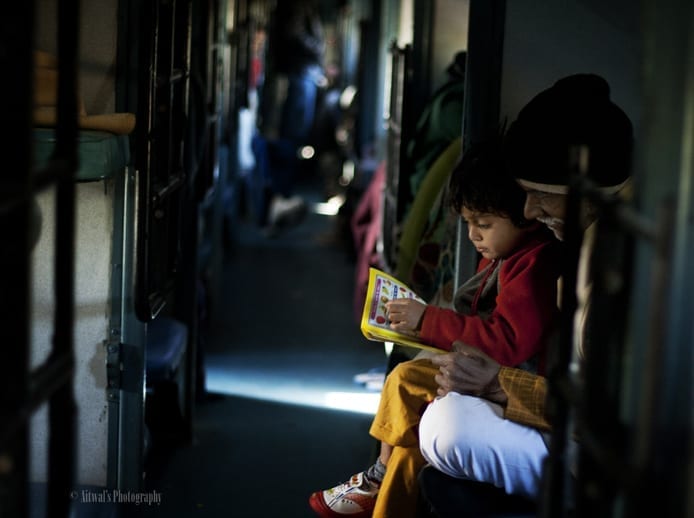
Due to how fast train tickets sell out online, the Indian Railways sells tickets in three different categories:
- Confirmed Reservation (CNF)
- Reservation Against Cancellation (RAC)
- Waitlist (WL)
With a RAC ticket, you will still be allowed to board the train and travel, but you won’t have a specific seat or berth number. If one of the confirmed ticket holders cancels before departure, you will be then promoted to CNF with a confirmed seat or berth. In the worst-case scenario, no one cancels, and you might have to share a berth with someone and not get a comfortable night’s sleep.
A waitlist ticket means you cannot travel until you promoted from WL to RAC. But, if you have a low-numbered WL ticket, you stand a good chance of being bumped up to RAC. And if you don’t get onto the train because your number is too high, your money will be refunded.
To see if your status has been changed, you can check online. Just head on over to either Indian Rail or ClearTrip and enter your PNR number found on your ticket.
Choosing your Class
When booking train tickets in south India, you can choose between five different classes. The main differences between each class have to do with how much you value your personal space, privacy and comfort.
If you are okay with getting up close and personal with the locals to save a few rupees, you should be able to survive second class without any problems. The cars are packed with as many people as possible, seats are not assigned, and for overnight journeys, there is no berth to pull down to catch some shut-eye.
Hell, you should count yourself lucky if you manage to get a seat to sit on.
There is also no AC, so brace yourself for a couple of hours of sweaty bodies bumping up against one another. Just think of it like Britney Spears’s I’m a Slave 4 U music video, but less sexy.
Photo by: Brian Holsclaw
For just a few more rupees, you can experience the comforts of stretching out on a berth, and personal space to make your night just a little bit more comfortable. Bedding is not included so be sure to pack a sleeping bag or a blanket –especially if you are travelling during winter when it gets colder at night.
It is the way most Indians travel, so you will have plenty of opportunities to have a chat with your bunkmates and get to know the locals. The big bonus of choosing sleeper class is that you get a better view of the countryside then the AC coaches, which makes up for the fact that there is no air conditioning.
For many foreign travellers, the price of this class isn’t going to put a HUGE dent in your budget, so if you aren’t looking to rough it or just want privacy – this is the class for you. I choose to travel on AC 3 for all my routes in India, and I loved it!
The different tiers are broken up with varying degrees of segregation and creature comforts. Here you will find air-con, complimentary bread rolls, bedding and the option to choose non-vegetarian or vegetarian for your meals.
I only had positive experiences during my train rides and luckily got to chat with some very interesting locals. The one nun I met even went out of her way to make sure we got off at the right station.
All the feels right there.
It is pretty easy to check the train timetable and fares for south India. All you need is an internet connection. If Indian Rail or Indian Railways is a bit too bewildering for you, ClearTrip once again comes to save the day. Seat 61 has a great resource for helping you understand the Indian Rail websites and navigating through the confusion.

What to expect on your journey
I know there are some horror stories that go around about how “unsafe” train travel in India can be (usually aimed at female travellers), but if you keep your wits about you as you would do anywhere else in the world, I doubt you’ll have any problems.
If you are a solo female traveller and worried about your safety, try to book the top bunk on the A3 class. No one is going to be able to get to you without disturbing the people below and everyone else below you.
I slept on the middle bunk because my friend is an ass and grew really long legs that kept on getting in passengers faces as they walked past. Needless to say, I had no problems, and the locals did their best to look after us.
If you are on a train that has multiple stops, make sure to set an alarm on your phone to ensure you get off at the right stop. This is especially important if you are on a night train and need to get off along the route before the train reaches its final destination.
There have been cases of bags being stolen or cut open on trains. To avoid this happening to you, there are three things you can do:
- Buy locks for your zippers and secure your bag to the seat with a chain and a lock.
- Sleep with your bag underneath your pillow.
- Hide your valuables on you or inside your pillowcase.
Looking outside the window will only hold your attention for so long. If you are taking a long-distance train pack the following to help keep you entertained and more comfortable during your journey:
- Phone Charger (yes there are power points in A3!)
- Your tickets
- Toilet paper
- Hand sanitiser
- Sheet or sarong to sleep on
- Water to stay hydrated
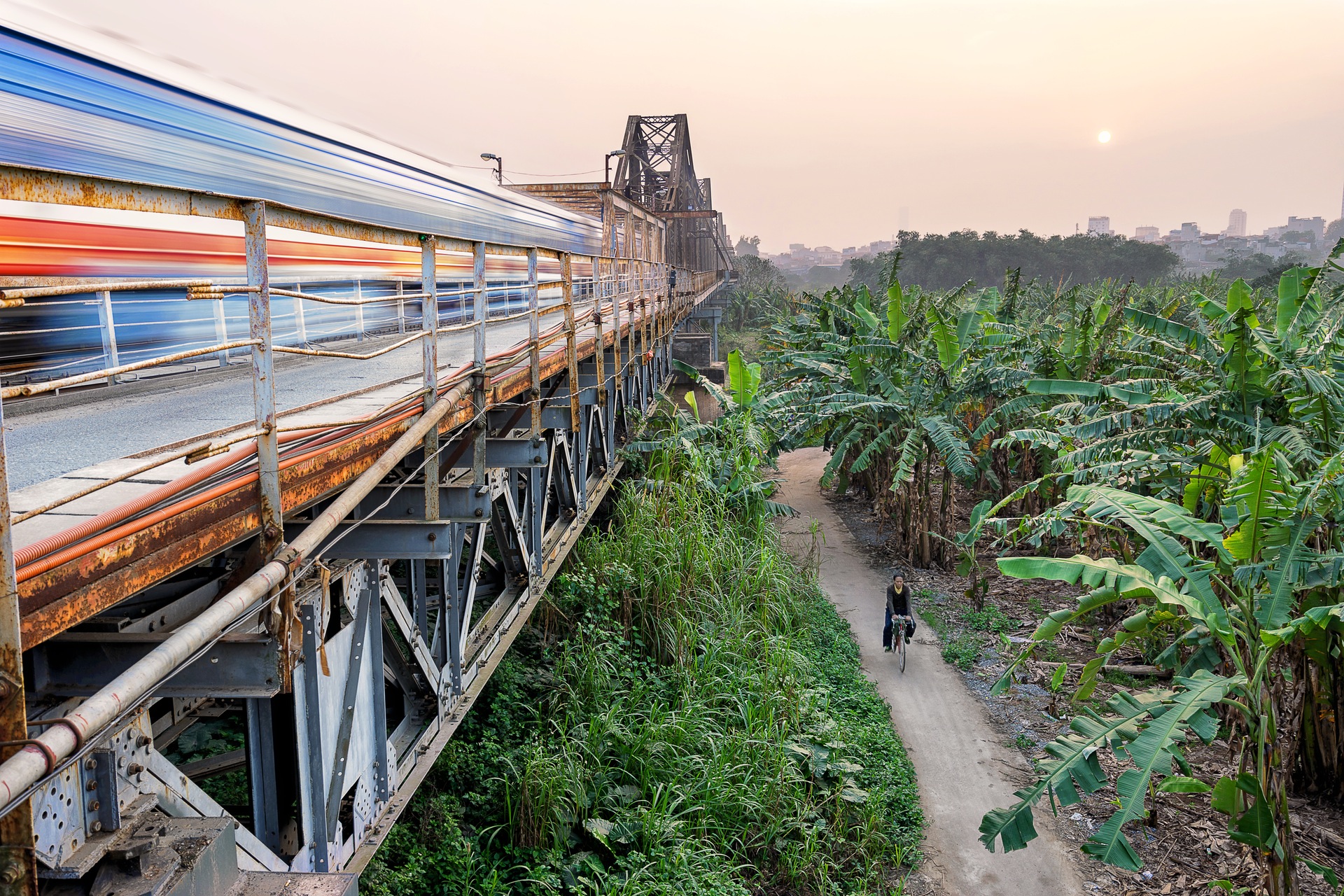
Overall, train travel in India is an easy and interesting experience! Be sure to do a bit of pre-planning beforehand and enjoy the ride!
About Lauren Melnick
Lauren Melnick is the founder of Wanderlust Movement, Wander to Here and is a South Africa travel blogger. She's been travelling the world as a full-time freelance writer since 2016 and has visited over 40 countries.
When she isn't typing up a storm, you can find her conquering overnight hikes around the Western Cape, rock climbing, and hosting sold out group travel trips around South Africa, Namibia and Morocco.
Reader Interactions
August 1, 2018 at 2:58 am
Excellent post, thank you!! One question though. Just looking at types of berths etc. Travelling from GOA to Kannur, and want to know which of the seats look out to the sea please? Thank you!
August 1, 2018 at 8:16 pm
Hey Suzanne!
I can’t help you with that. I’ve never taken the train between Goa and Kannur. Maybe ask when you book?
April 15, 2019 at 8:12 pm
Hey! you have given information is more useful for everyone, because of most of the travelers have faced problem for train booking. I hope you love t travel India, so why you don’t visit more places in India. What’s your next plan for trip? Go for The Golden Triangle India. Best tour ever.
April 19, 2019 at 9:51 am
I visited quite a few places in India during this trip, but I hadn’t started blogging yet so don’t have many photos 🙂
Leave a Reply Cancel reply
Your email address will not be published. Required fields are marked *
This site uses Akismet to reduce spam. Learn how your comment data is processed .
Love The Content?
You will be redirected to your dashboard shortly. We will also call you back in 24 hrs .
- 18 Beautiful Train Journeys In India In 2024 That Will Compel You For A Ride!
Planning a vacation rarely encompasses a train expedition nowadays. But if it does, it certainly takes us back to the childhood days when holidaying meant embarking on beautiful train journeys in India . It also meant admiring the changing landscapes as the train passed through towns and villages; playing cards or memory game; chitchatting over warm tea in earthen cups (locally called Kulhad); yummy munchies and lot more! This time round, we take you on some of the most beautiful train routes in India that cover absolutely enthralling and diverse landscapes – steep mountain slopes, narrow valleys, and wide seas.
18 Most Beautiful Train Journeys In India
Go through the list of these most beautiful train rides in India and make sure you head to one of them, the one that you find to be truly out of this world. You will realize the journey is nothing short of a dream. There’s mountains, waterfalls, rivers, plains, deserts and every possible landscape that you can imagine of. They are spread across the northern frontier to the southern frontier. Have a look!
- Jammu – Baramulla
- Pathankot – Jogindernagar
- Kalka – Shimla
- Jaisalmer – Jodhpur
- Mumbai – Goa
- Hubli – Madgaon
- Matheran – Neral
- Karjat – Lonavala
- Ratnagiri – Mangalore
- Mandapam – Rameshwaram
- Mettupalayam – Ooty
- Vishakhapatnam – Araku Valley
- Bangalore – Kanyakumari
- Hassan – Mangalore
- Bhubaneshwar – Brahmapur
- New Jalpaiguri – Darjeeling
- Alipurduar – Jalpaiguri
- Guwahati – Silchar
1. Jammu – Baramulla
Kashmir Railway Gifts you Travel Charisma

Image Source
The railway track connecting Jammu, Udhampur, Srinagar and Baramulla is not only picturesque and enthralling but also one the most challenging railway projects. It is located in the high earthquake intensity zone with undulating and rugged terrain, extreme cold temperature, and is the most beautiful railway route in India .
Train Journey Time : 4 hours
Must Read: 30 Unbelievably Beautiful Places To Visit In Kashmir One Cannot Miss
Looking To Book A Holiday Package?

Spellbinding Cochin Family Tour 2D/1N Package @ Rs 2,750
Plan your trip today!

Himachal Family Tour Package 4D/3N @ Rs 8,750
Get quotes from multiple travel experts.

Exciting Andaman Family Trip 5D/4N @ Rs 10,250
Compare & customize quotes before booking.

Gangtok & Darjeeling Tour Package 5D/4N @ Rs 13,000
Have Questions? Talk to our travel experts today.

Wonderful Goa Family Package 3D/2N @ Rs 6,500
Best prices guaranteed.

Riveting Rajasthan Vacation 3D/2N Package @ Rs 6,499
EMI option available.

Enchanting Uttarakhand Tour 4D/3N Package @ Rs 7,199
Explore best destinations with our experts.

Delightful South Weekend Tour 3D/2N Package @ Rs 4,999
Thrilling weekend full of fun.

Marvelous Gujarat Tour 3D/2N Package @ Rs 4,999
Talk to our experts today.

See more at TRAVELTRIANGLE.COM
2. Pathankot – Jogindernagar
Mystics of Kangra Valley
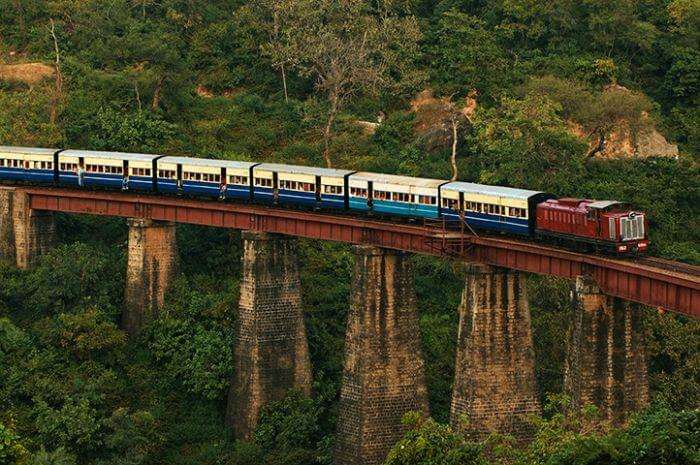
Image Source If you want to enjoy the thrills of Kangra Valley, the river bridges, deep gorges and exclusive flora, enjoy the pleasant but quite slow ride of 164 km from Pathankot to Jogindernagar in Himachal Pradesh. It is not only located at a challenging height, but is also one of the most scenic train routes in India .
Train Journey Time : 8 hours
Suggested Read : 43 Famous Historical Places In India To Visit
3. Kalka – Shimla
A Spellbinding Journey to the Summer Capital
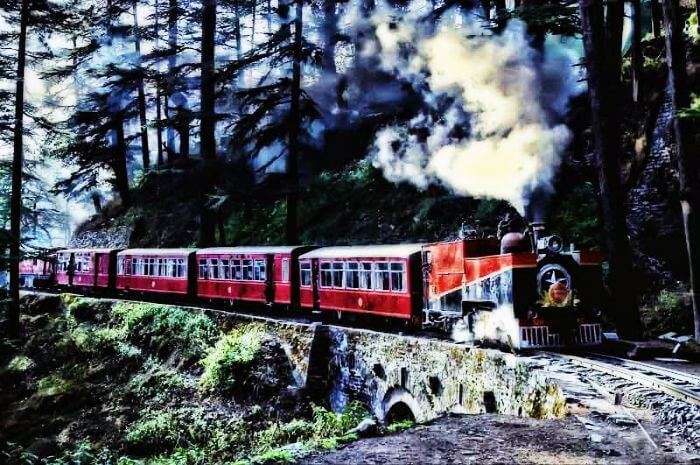
If you want to cherish picturesque valleys, steep pathways and foggy meadows, travel to Shimla in the narrow gauge train. This little toy train, now considered as World Heritage Site by UNESCO, starts from Kalka and travels 96 km upslope through 102 tunnels: (the longest tunnel located at Barog), 82 bridges, deep valleys, steep curves, rolling bends, forests of deodar and rhododendron, pine and oak.
Few trains like Siwalik, Kalka-Shimla, Himalayan Queen, Rail Motor and Siwalik Queen ply on this route. The journey is truly enchanting but at a slow pace as the train ascends the slope rhythmically through stations of Dharampur, Solan, Kandaghat, Tara Devi, Barog, Salogra, Totu, and Summerhill to reach the summer capital. It is one of the best in north Indian and most beautiful train journeys in India .
Train Journey Time : 5 hours
Suggested Read: 53 Best Places To Visit In Shimla On Your Soothing Weekend Getaway!
4. Jaisalmer – Jodhpur
Xerophytic Route
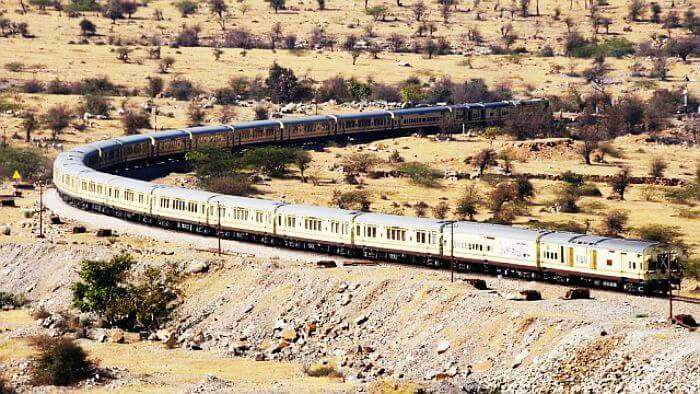
The Rajasthan trip which is otherwise full of colors, can have an extra bright shade if you travel to Jaisalmer from Jodhpur in Delhi Jaisalmer Express. The travel time in the train called the ‘Desert Queen’ takes close to 6 hours to reach the destination.
The journey is not at all monotonous. In fact you see diversified topography like typical desert landscape with xerophytic vegetation, yellow soil, dunes, grazing camels and scattered settlements of the desert inhabitants. The passengers will surely get a feel of the desert safari before reaching the land of the Golden Fort. This is amongst the most beautiful train journeys in India .
Suggested Read : Longest Rivers In India: Know About The Important Water Bodies Of The Country
5. Mumbai – Goa
Journey through the Enigmatic Ghats
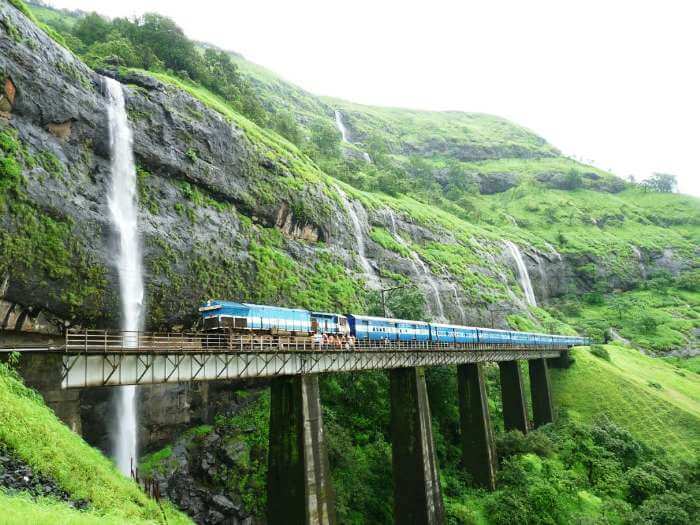
The journey from Mumbai to Goa intersecting through the gorges of Sahyadari and fringes of Arabian Sea is equally or perhaps the most scenic train rides in India . Mandovi Express, as a part of the Konkan Railway network, travels between Mumbai and Goa.
The route is full of scenic landscapes, ranging from tunnels, bridges, coastal peripheries, steps of Western Ghats (other name for Sahyadari), innumerable small rivers, seasonal streams and lush green meadows. Do not forget to take out your handicam or camera and capture the highlights of one of the stunning and beautiful train journeys in India .
Train Journey Time : 12 hours
Planning your holiday but confused about where to go? These travel stories help you find your best trip ever!

Nikhil Recites A Tale Of 11 Friends Who Went From Bengaluru To Ladakh
Bengaluru - Delhi - Leh - Ladakh - Leh - Delhi - Amristsar - Chandigarh - Bengaluru

Pranav Took A Solo Trip To Andaman & It Was Truly Wonderful
A backpacker's guide to the predominant Honeymoon destination!

Shivani Talks Of Her Trip To Mcleodganj & Dalhousie With Her Husband And Friends
Sunset views. Monasteries. Bhagsunath falls. And amazing street food.

Kanika Proves That Traveling With An Infant To Kerala Is Totally Safe & Wonderful
Beaches, Backwaters, Spas, & More. Take me there now, please!

Here's Why Aakanksha's Trip To Manali Changed Her Idea About Group Tours
Ideal long weekend getaway from Delhi! Isn't it?

Isha Elaborates On How She Went Solo To Kasol & Returned With Lots Of Friends
And tales of her exciting Kheerganga & Chalal trek...

Prasham's Account Of A Goa Tour Proves That Goa Is More Than A Party Destination
Adventure, sightseeing, laid-back beach tours, and it doesn't stop there!

Bhavya Gives An Extensive Account Of His Jaisalmer Trip With Friends
Desert safari, haunted Kuldhara village, & Gadisar Lake. There's more...

Ashish Tells Why Kashmir Turned Out To Be A Winter Wonderland For His Family
For Gondolas, Shikaras, and plenty of snow!
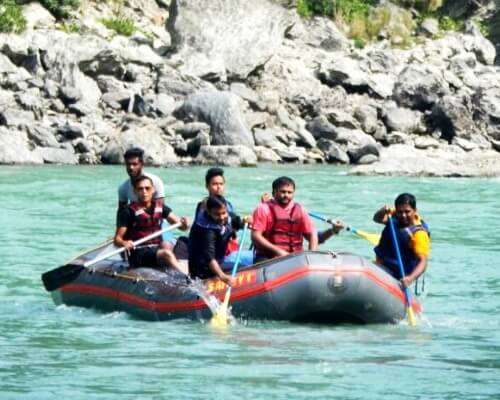
Arunav Can't Stop Praising His Adventurous Trip To Sikkim & Darjeeling With Friends
For adventure in Air, on Land, and in Water!

Avneet Describes Her Trip To Spiti With A Group Of Strangers That Became Friends
Sightseeing. Monasteries. Trekking. And beauty all along
6. Hubli – Madgaon
Vasco da Gama Route
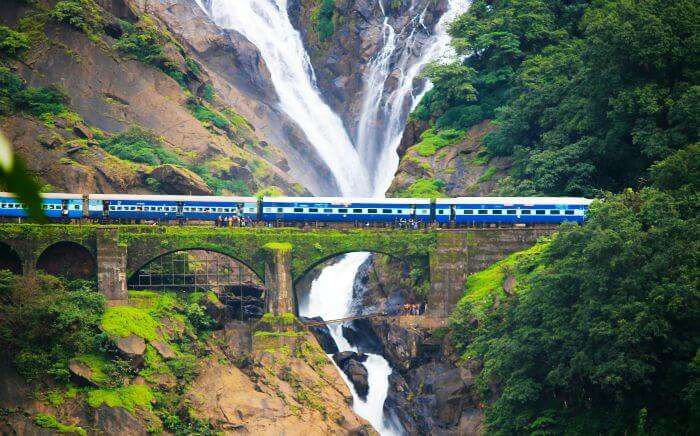
Image Source While travelling from Hubli to Madgaon, experience one of the most thrilling and enchanting train journeys in India. The train passes through the gigantic and most magnificent Dudhsagar waterfalls gushing out from a 300 metres in full vigor.
Once the train reaches the waterfall, you will be amazed at the cascading beauty and force on a thrilling and best train journeys in India. If you decide to enjoy it closely, quickly get down at Londa junction, which is the nearest station to Dudhsagar falls.
Train Journey Time : 10 hours
Suggested Read : Scuba Diving In India: Explore The Breathtaking Underwater Universe At The 14 Best Spots
7. Matheran – Neral
Heritage of Maharashtra
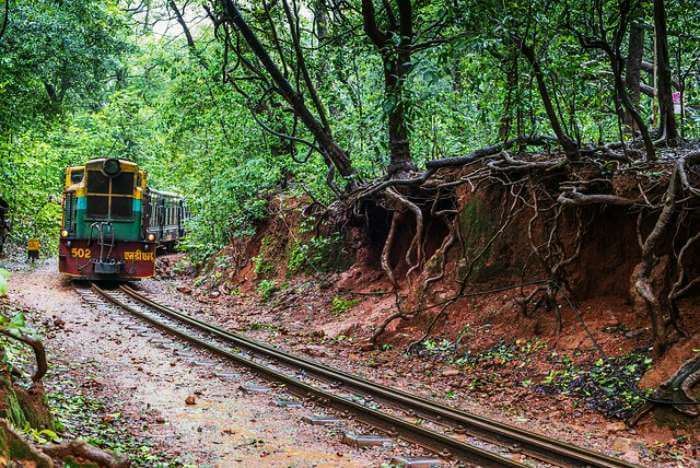
The narrow gauge railway running between Matheran and Neral passes is one of the best train routes in India. It passes through the rugged terrains of the Ghats and gained immense tourist attraction. This only Heritage railway of Maharashtra running a distance of 20 km is surely included in the list of India’s best train journeys. This is one of the best train routes in India .
Train Journey Time : 2 hours
Suggested Read: Top 38 Weekend Getaways From Mumbai For The Love Of Traveling
8. Karjat – Lonavala
Monsoon Trip

Another line that passes through the Western Ghats is the journey from Karjat to Lonavala through Thakurwadi, Monkey Hills and Khandala. It is the very scenic and one of the best train routes in India known for its mystic nature. Monsoon season is recommended because of the lush green views and beautiful rain scenery that it offers. The ride is pure scenery and being hill stations connected by train, it is the most adventurous way to reach the destinations.
Train Journey Time : 1 hour
Suggested Read: 21 Hill Stations Near Mumbai To Soothe Your Senses On A Trip
9. Ratnagiri – Mangalore
Charming Konkan Railway

Image Source One of the most mesmerizing railway tracks lies in the Konkan Railway network, in the Ratnagiri to Mangalore sector. The is one of the most scenic train journeys in India which is truly absorbing and wherein the dense forests, mighty Western Ghats, deep tunnels, river bridges, sharp bends and innumerable seasonal streams will leave the travelers spellbound and hypnotized.
Suggested Read: 20 Road Trips During Monsoon In India That Every Biker Ought To Take
10. Mandapam – Rameshwaram
Journey Intersecting the Ocean
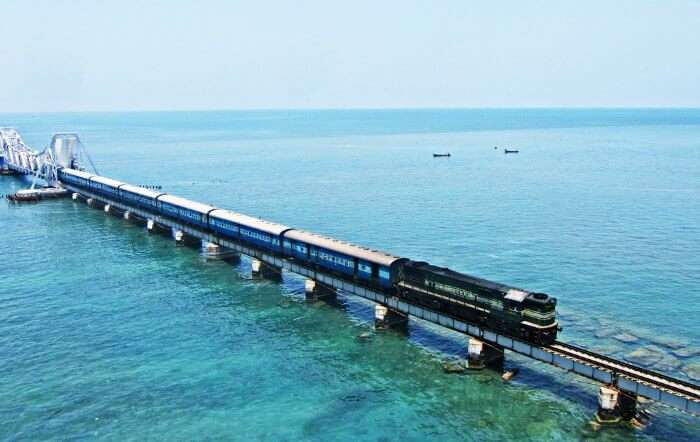
Image Source Besides thrill and adventure, train travel from Mandapam in Tamil Nadu to Rameshwaram on Pamban Island oozes calm and serenity. It is certainly one of the top ten best Indian train journeys. One of the most beautiful train routes in India, it passes over the second longest bridge of India, the Palk Strait, which is the only route that connects mainland India to Pamban Island.
Suggested Read : 15 Offbeat Places In South India That Will Make You Go ‘WOW’ With Natural Beauty!
11. Mettupalayam – Ooty
Voyage in Landscapes of Nilgiris
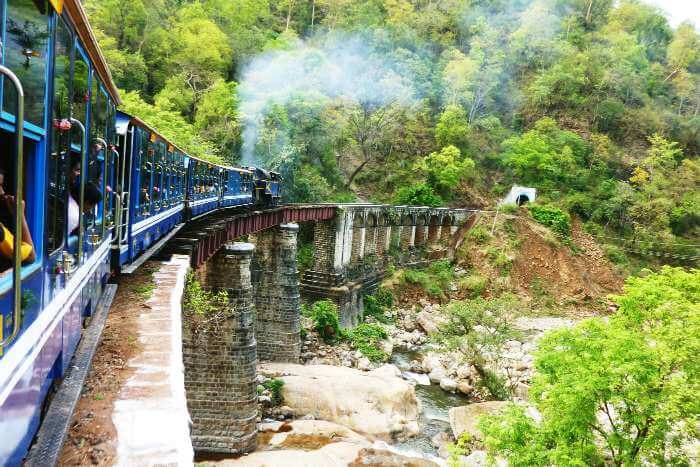
Image Source Running since 1908, ‘Nilgiri Passenger’ still runs on steam engine, going from Mettupalayam to Ooty. As the train ascends the Nilgiri Mountain, thick pine, oak and eucalyptus forests, bends, curves and tunnels, it moves along Asia’s steepest track with maximum gradient of 8.33 percent. Nilgiri Passenger travels 26 km up the slope in almost 5 hours via stations like Kallar, Adderly, Hillgrove, Kateri, Runneymede, Kateri, Coonoor and Lovedale.
Suggested Read: 25 Mesmerizing Hill Stations In South India That Are A Must Visit
12. Vishakhapatnam – Araku Valley
The Tunnel Topography
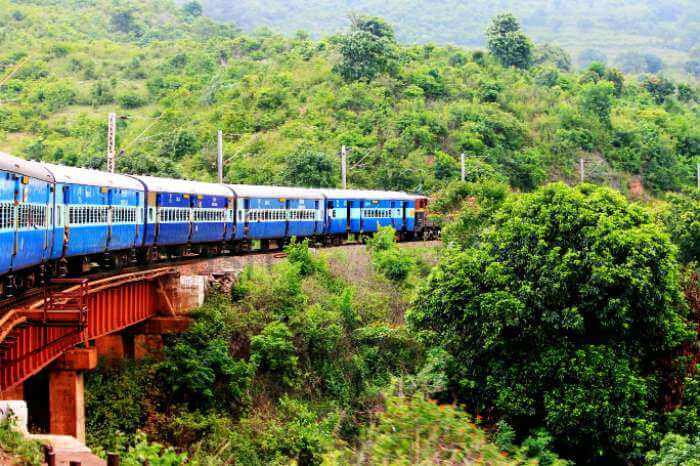
Image Source The journey from Vishakhapatnam to Araku Valley through innumerable tunnels and sharp loops is quite an interesting one. Started as a mode to transport iron ore and other minerals to Vishakhpatnam from Chhattisgarh, this railway route in India is a treat for the eyes as well as the soul.
Train Journey Time : 3 hours
Suggested Read : 14 Most Unusual Beaches In India That Will Make You Fall In Love At First Sight
13. Bangalore – Kanyakumari
The Malgudi Voyage

Image Source Another scenic journey through the typical landscape of South India – the picturesque villages, plantations, meadows and water bodies is from Bangalore to Kanyakumari. The Island Express travels 944 km in about 19.5 hours and surely take you the land of ‘Malgudi Days’, undoubtedly paving its way to the list of best train journeys in India.
Train Journey Time : 15 hours
Suggested Read: 35 Road Trips From Bangalore You Must Plan With Your Friends
14. Hassan – Mangalore
Magical Malnad
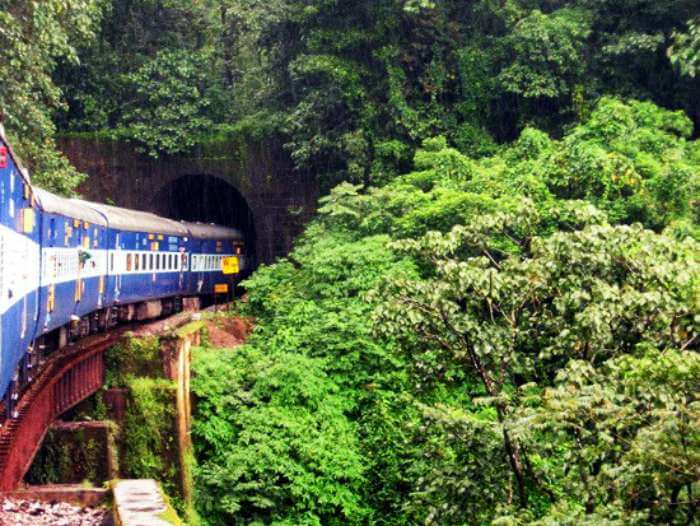
Witness a pleasant train journey through scenic waterfalls, lofty mountains, palm plantations and rice meadows from Hassan to Mangalore. Railway voyage along this stretch of the Malnad region is truly refreshing and perfect delight for travelers.
Train Journey Time : 1 and half hours
Suggested Read : Discover 6 Incredible Rain Forests In India For A Memorable Wildlife Adventure
15. Bhubaneshwar – Brahmapur
The Serene Journey
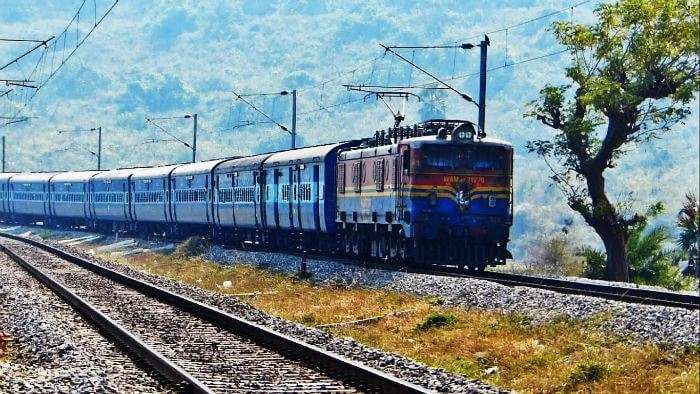
Image Source Another of most beautiful train journeys in India is from Bhubaneshwar to Brahmapur, with lush green Malyadri on one side and serene Chilika Lake on the other. You may be lucky enough to see lots of migratory birds, so don’t forget your camera. You can capture the glimpse of the best lakes in Odisha while traveling through this train.
Suggested Read : Mountain Biking In India: 10 Most Thrilling Adventure That Is A Must Try
16. New Jalpaiguri – Darjeeling
The Heritage Voyage to the Summer Resort of British Raj

Image Source How good does it feel to ride through hill stations connected by train? A pleasant upslope journey from the foothill region through loops, turns and bends can be experienced from New Jalpaiguri to Darjeeling. The 78 km long quaint journey takes almost 8 hours and passes through Siliguri Town, Siliguri Junction, Sukna, Rangtong, Tindharia, Mahanadi, Kurseong, Tung, Sonada, Ghum, Rongbul, Jorebunglow and Batasia Loop.
Though the journey, now a UNESCO World Heritage Site, is sluggish but certainly leisurely. The surrounding hill-valley topography, especially from Ghum (the highest narrow gauge railway station in India) and Batasia Loop, adds extra flavors of delight to your trip.
Train Journey Time : 7 hours
Suggested Read : Visit 14 Luxury Holiday Destinations In India For A Lavish Stay
17. Alipurduar – Jalpaiguri
Jungle Safari on the Wheels
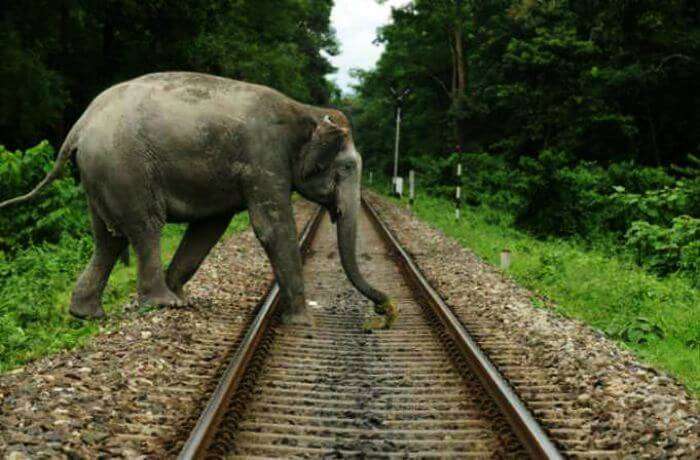
Want to pass through dense forest and see elephants and rhinos while passing by? Plan a train journey in the foothills region of North Bengal. Travelling to Alipurduar, Jayanti, Moorti, Samsing, Baux and Jalpaiguri will take you through the reserve forests of Gorumara, Jaldapara, Mahananda and Buxa while crossing seasonal streamlets.
Suggested Read : 20 Unbelievable Experiences In India That You Must Add On Your Bucket List To Enjoy An Offbeat Escape
18. Guwahati – Silchar
Awes of Assam
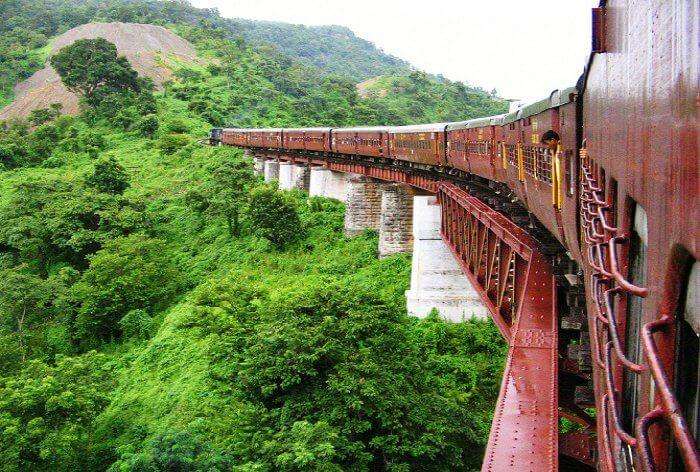
Image Source This journey meanders through river Jatinga, lush green Assam Valley, tea plantations and undulating Haflong valley. The route from Guwahati to Silchar via Lumding and Barak Valley makes it one of the most beautiful train journeys in India. The train makes you witness the beauty of hill stations in Assam .
Train Journey Time : 9 hours
Further Read: 23 Types of People You Meet While Travelling in an Indian Train
Aren’t all these beautiful train journeys in India absolutely stunning? If you have more to the list, share us with them in the comments below, and let the word spread. But for now, plan your holiday in India with TravelTriangle to experience these wonderful train rides. We have no doubt that these rides will sweep you off your feet and make your heart skip a beat.
Disclaimer : TravelTriangle claims no credit for images featured on our blog site unless otherwise noted. All visual content is copyrighted to its respectful owners. We try to link back to original sources whenever possible. If you own the rights to any of the images, and do not wish them to appear on TravelTriangle, please contact us and they will be promptly removed. We believe in providing proper attribution to the original author, artist or photographer.
Frequently Asked Questions About Beautiful Train Journeys In India
Is it safe to travel in Indian trains during COVID times?
You need to follow all the mandatory guidelines mentioned by the authorities to ensure your safety. Wear mask while traveling in train or being at the railway station, avoid crowds and maintain social distancing. Keep sanitizing your hands regularly. You can also carry a disinfectant spray to disinfect your seat and surroundings.
Which is the best train in India?
This is no definite answer to this because of the way you define best. It could be in terms of service or the route it runs on. If you have to pick one, Samjhauta Express would be the best train of India as it connects India and Pakistan displaying the amazing coordination between the two countries with communal tensions. It connects Amritsar with Lahore.
Which is the long-distance train in India?
Vivek Express is the longest distance train in India that connects Dibrugarh in Assam with Kanyakumari in Tamil Nadu. The train runs weekly and takes about 79 hours to complete a journey of 4234 km. It has 57 intermediate stoppages. Whoa! Imagine the journey that would be on this train.
Which are the dangerous train routes in India?
Chennai - Rameswaram route is considered to be the most dangerous train route in India. It is ironic because it is also a pilgrimage route. So, your faith in God is put to test when you travel on this train. The 2.3 km long stretch of this train runs over the ocean fighting strong winds and tides that make this journey dangerous and testing.
Which are the best train journeys from Bangalore?
The train journey from Bangalore to Kanyakumari is the most scenic one. Ditch the car ride and take the train instead if you want to enjoy the scenery
Which is the longest rail bridge in India?
The longest rail bridge in India is the Vembanad Rail Bridge that connects Vallarpadam and Edappally in Kerala’s Kochi. The bridge is 4.62 km long and dedicated only to good trains.
Is the Indian railways run by private or public?
The Indian railways is a public railway organization run by the Ministry of Railways, Government of India.
Which is the fastest train in India?
The Vande Bharat Express or Train 18 is currently the fastest train in India with a maximum operational speed of 180 km/h. The average speed of the train is around 102 km/h.
Which railway station has the most number of platforms in India?
Howrah Junction in Kolkata, West Bengal is one of the largest junctions in the country and a perfect bridge between North, South, East and West India. It has 23 platforms that spread in a huge area.
People Also Read:
Beautiful Train Journeys In The World Beautiful Train Journeys In Canada Luxurious Train Journeys In India
Recent Posts

10 Voyages les plus populaires en Europe pour planifier l’évasion ultime de 2024
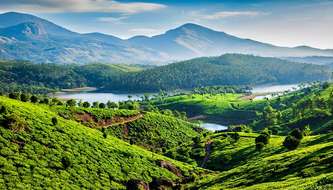
आनंदपूर्वक घूमने के लिए 52 भारत में सर्वश्रेष्ठ छुट्टियाँ बिताने की जगहें
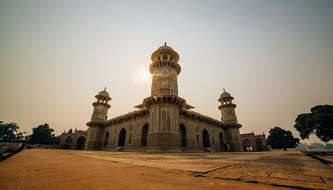
2024 में एक ताज़गी भरी 49 छुट्टियों के लिए उत्तर भारत में घूमने की जगहें
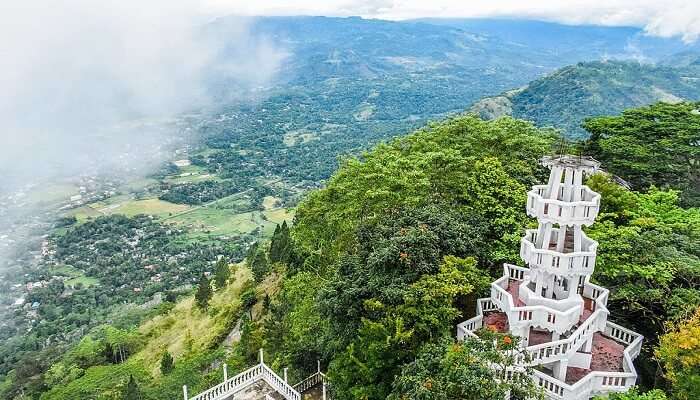
भारत से घूमने के लिए सबसे सस्ते देश जहां आपको 50K से भी कम खर्च आएगा!
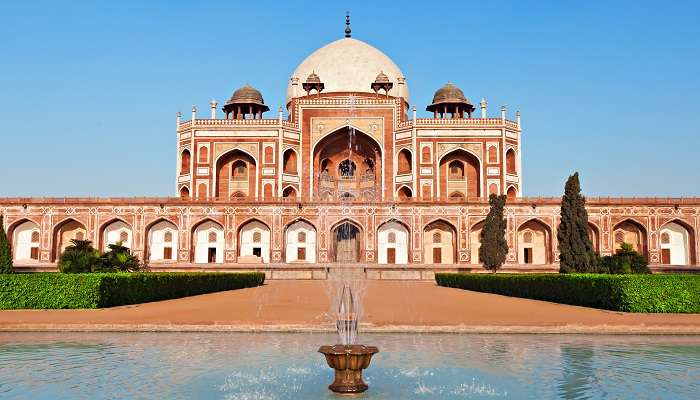
9 Best Places To Visit Near Humayun Tomb For A Wholesome Experience

Best Places To Visit Near Taj Mahal That Are Beyond The White Marble Marvel
Trending Blogs

20 Mysterious Places In India To Visit In 2023 More Bizarre Than The Bermuda Triangle

10 Scariest Roads In India That Are A Driver’s Nightmare

101 Places To Visit In India Before You Turn 30 in 2024

35 Exotic Places To Visit In December In India 2024 To Enjoy A Surreal Vacation

60 Best Honeymoon Destinations In India In 2024

95 Best Honeymoon Destinations In The World In 2023 For A Romantic Escape!
Best Places To Visit In India By Month
Best places to visit outside india by month.
- TravelTriangle
- Travel Punch »
- Tour Packages
- Honeymoon Packages
- Family Packages
- Budget Tour Packages
- Luxury Tour Packages
- Adventure Tour Packages
- Group Tour Packages
- Kerala Tour Packages
- Goa Tour Packages
- Andaman Tour Packages
- Sikkim Tour Packages
- Himachal Tour Packages
- Uttarakhand Tour Packages
- Rajasthan Tour Packages
- Tour Packages From Delhi
- Tour Packages From Mumbai
- Tour Packages From Bangalore
- Tour Packages From Chennai
- Tour Packages From Kolkata
- Tour Packages From Hyderabad
- Tour Packages From Ahmedabad
- Kerala Tourism
- Goa Tourism
- Sikkim Tourism
- Andaman Tourism
- Himachal Tourism
- Uttarakhand Tourism
- Rajasthan Tourism
- Hotels in Kerala
- Hotels in Goa
- Hotels in Sikkim
- Hotels in Andaman
- Hotels in Himachal
- Hotels in Uttarakhand
- Hotels in Rajasthan
- India Today
- Business Today
- Reader’s Digest
- Harper's Bazaar
- Brides Today
- Cosmopolitan
- Aaj Tak Campus
- India Today Hindi
The journey is your destination: 5 luxurious train rides that promise the trip of a lifetime
If you think train journeys are a thing of the past, you will be utterly surprised to know what these luxurious trains have to offer..
Listen to Story

- Palace on Wheels is one of the most luxurious trains that you can find in India
- Venice Simplon-Orient-Express is like the modern version of the famous Orient Express
- Seven Stars in Kyushu is Japan's premier luxury sleeper train
When it comes to travelling luxury, train journeys don’t really fit the bill (at least that’s what we think). Tourists eying to travel in comfort and grandeur often find solace in an airline’s business or first-class seating. It’s like finding a mini luxury room at 42,000 feet above sea level.
But imagine, if you could find the comfort of a business class seat and much more on a train that takes you to your destination, would you swap tickets?
Palace on Wheels

Embark on the 'Shri Ramayana Yatra' by Indian Railways for a spiritual journey across India. This 17-night tour covers 14 cities and 39 worship sites, offering diverse pricing options to suit all travelers.
Embark on the 'Shri Ramayana Yatra' by Indian Railways for a spiritual journey across India. This 17-night tour covers 14 cities and 39 worship sites, offering diverse pricing options to suit all travelers. Read less
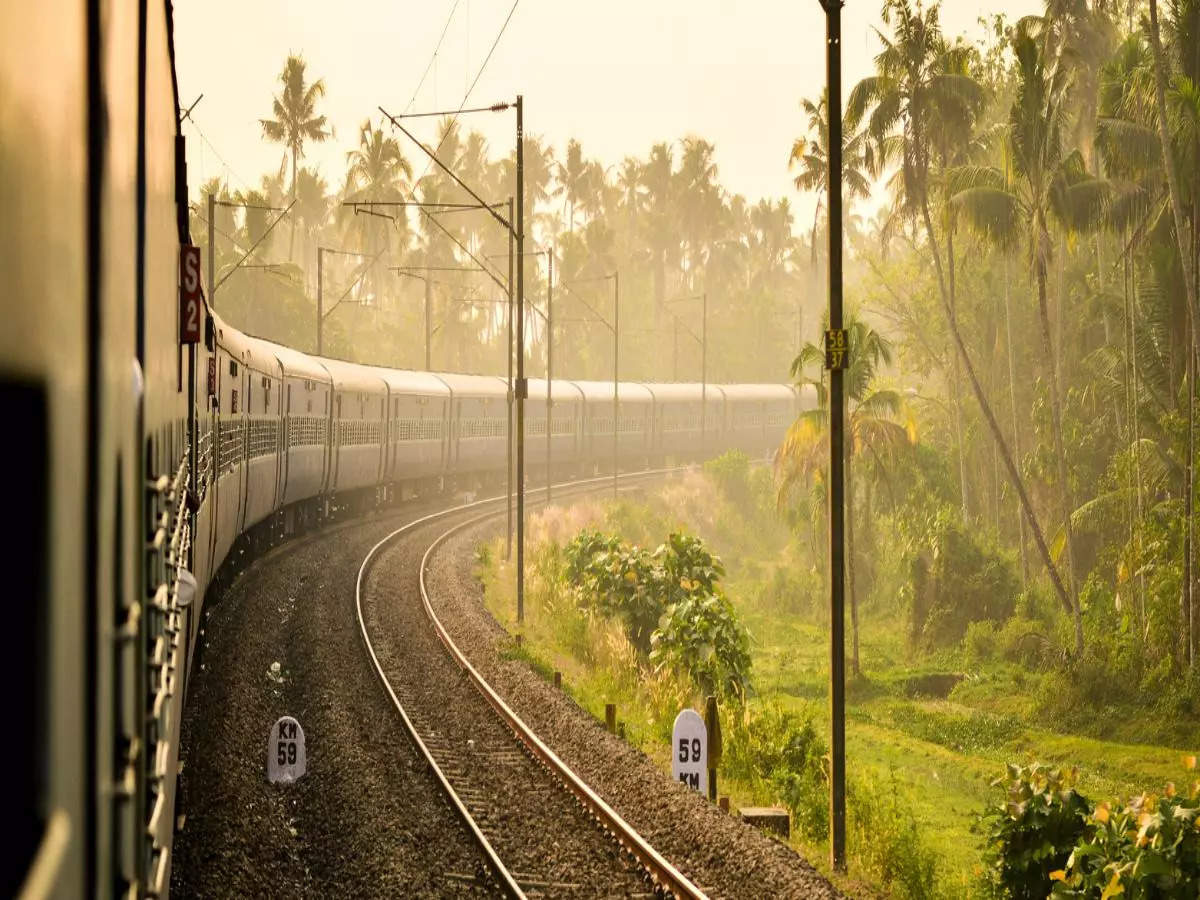
More from Travel News

The perfect one-week itinerary for Kerala, and places to cover
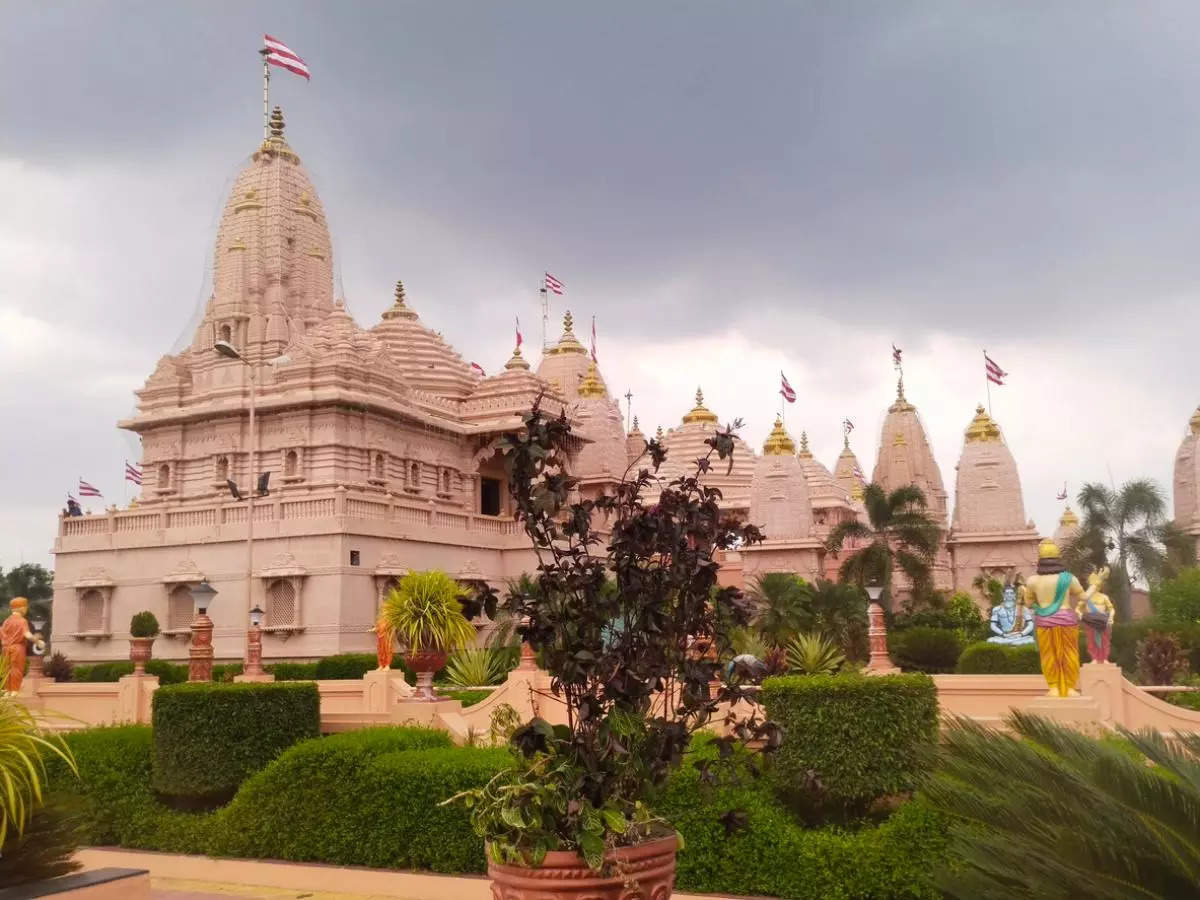
Comments (0)

Refrain from posting comments that are obscene, defamatory or inflammatory, and do not indulge in personal attacks, name calling or inciting hatred against any community. Help us delete comments that do not follow these guidelines by marking them offensive . Let's work together to keep the conversation civil.
Comments ( ) Sort: Newest UpVoted Oldest Discussed Down Voted closecomments

SIGN IN WITH
Or post without registration.

Visual Stories

Popular Galleries

10 most surreal places on earth that will leave you speechless TRAVEL TRENDS , WORLD

Geological wonders: 5 of the oldest fossil parks in India TRAVEL TRENDS , INDIA

From Gulmohar to Amaltas, flowers that are Indian parallel to cherry blossoms TRAVEL TRENDS , INDIA
Trending stories.
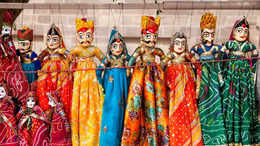
- Is it a good idea to plan a trip to Rajasthan during summer?

Digi Yatra expected at 14 more airport this month; check full list

Top 10 biodiverse countries in the world; India on the list

5 thrilling adventure experiences to have in East Africa

5 temples in Amritsar every spiritual seeker must visit
- 1 IRCTC Ramayana Yatra train: It will take you to 14 cities, 39 revered sites, including Ayodhya
- 2 6 common reasons why most visas are rejected
- 3 Delhi’s temperature might go up to 40 degree Celsius by April 15; IMD predicts
- 4 This country is offering 5,000 free passports worth $5 billion! Find out if you qualify
- 5 Thailand: Single-visa initiative targets long-haul travellers, promotes seamless ASEAN travel

THE DEFINITIVE GUIDE TO DESTINATIONS, ITINERARIES, THINGS TO DO, RESTAURANTS, NIGHTLIFE and LOTS MORE!
FOLLOW US ON
Places to visit.
- Places to visit in Bangalore
- Places to visit in Mumbai
- Places to visit in Delhi
- Places to visit in Goa
- Hotels in Goa
- Hotels in Jaipur
- Hotels in Shimla
- Hotels in Mumbai
Things To do
- Things to do in Goa
- Things to do in Mumbai
- Things to do in Bangalore
- Things to do in Delhi
Travel Inspiration
- Visa on arrival for Indians
- Honeymoon Places in india
- Hill Stations in India
- Weekend getaways in Mumbai
- Weather in Delhi
- Weather in Chennai
- Weather in Bangalore
- Weather in Mumbai
Best Beaches
- Goa Beaches
- Mumbai Beaches
- Pondicherry Beaches
- Kerala Beaches
- Restaurants in Bangalore
- Restaurants in Chennai
- Restaurants in Pune
- Restaurants in Jaipur
- Hill Station near Delhi
- Winter trip to Ladakh
- Places to visit in Kerala
- Winter Honeymoon Destinations
- UK visa guide for Indians
- Winter Trip to Manali
- Vaishno Devi Yatra
- Special Train Ticket Booking
- HP inter-state Bus
- Honeymoon Destinations India
Latest News
Congratulations.
You have been successfully added to the mailing list of Times of India Travel. To complete the subscription process, kindly open your inbox and click on the confirmation link which has been emailed to you.
Share with friends
Thank You for sharing! Your friend will receive the article link on email mentioned.
- (For more than one recipient, type addresses separated by commas)
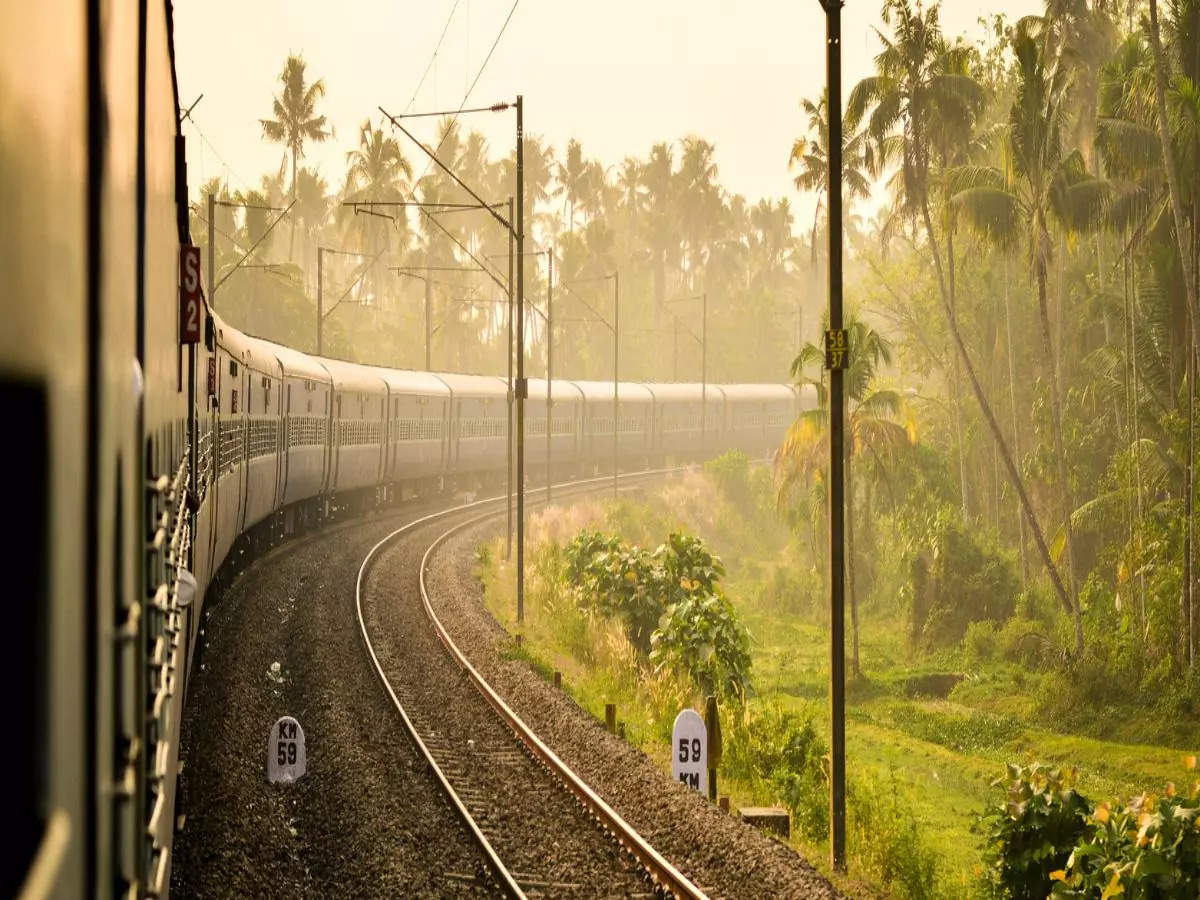
Embark on the 'Shri Ramayana Yatra' by Indian Railways for a spiritual journey across India. This 17-night tour covers 14 cities and 39 worship sites, offering diverse pricing options to suit all trav...

- WEB STORIES New
- ENTERTAINMENT
- CAREER & CAMPUS
- INFOGRAPHICS
- ISL 2023-24

- Manorama Online
- Manorama News TV
- ManoramaMAX
- Radio Mango
- Subscription

Indian Railway might introduce Vande Bharat trains with 20 coaches
Mumbai: In a significant development, the Indian Railway is planning to introduce longer Vande Bharat trains with up to 20 coaches. Currently, eight or sixteen coach train sets are operating services in the country. The Railway, now, plans to introduce 20 - coach sets in the busiest routes. However, complaints are rife that other services are getting affected due to the schedule of the Vande Bharat trains. But, when twenty coaches are introduced, in the place of the 8 - coach sets, it would be tantamount to running an additional one and a half trains. Moreover, Vande Bharat trains with a greater number of coaches might even reduce overcrowding. The Railway also hoped that the new train sets would bring additional income.
Vande Bharat sleeper trains As for the much-awaited Vande Bharat sleeper trains, even though the railway will not significantly change the existing arrangement of coaches in long-distance trains, the sleeper train will be fully air-conditioned. Each of the new trains would have one AC 1, four Second AC and 11 Third AC coaches, with a total capacity of 832 passengers. Having an aerodynamic exterior design, the trains will also flaunt a most modern modular pantry. The doors will be automatic, similar to those in Metro trains. Special berths and washrooms will be available to physically disabled passengers.
Loco pilots also would have a washroom for themselves. Yet another unique facility would be a hot water supply in the washrooms of AC 1 coaches. A public announcement system to alert travellers on the upcoming station, noise insulation in the interiors and an expansive luggage room are among the other attractions which indicate that the standards of the Vande Bharat sleeper train would match those of airlines.
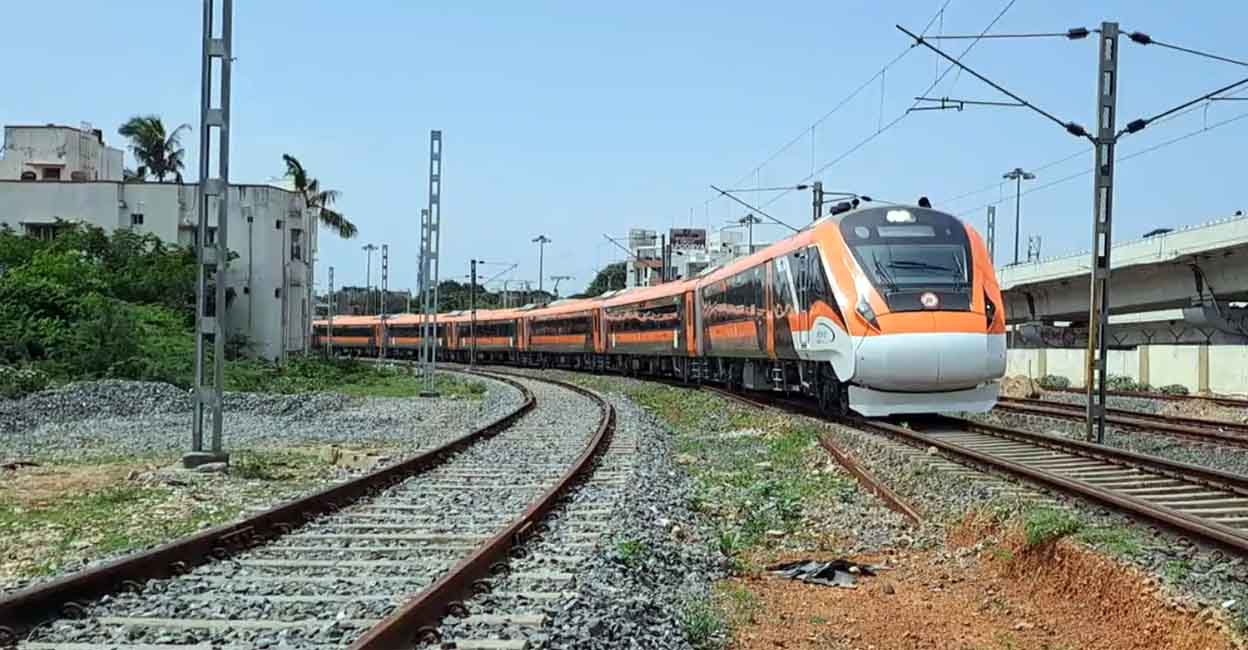
Ernakulam – Bengaluru Vande Bharat: New rake brought to Kollam

Off – road trekking banned in Kerala's Vagamon: Here's why
Designers are also making an effort to create a better Vande Bharat, compared to the existing trains. For this purpose, lightweight and rust-proof GFRP panels would be used in the interiors. GFRP – glass fibre reinforced polymer – is a combination material of fibreglass and polyester and has been utilized in the boat-building industry for several years owing to its corrosion-resistant feature.
- Vande Bharat Express

Daily flights from Kozhikode to Lakshadweep's Agatti for Rs 5000: Details

Air India Express launches ‘baggage tracker and protect’ service; Compensation for baggage delay

Kochuveli – Bengaluru weekly special train to be flagged off today

Idukki's Mangaladevi Temple's Chitrapournami festival on April 23: Here's what you should know

Trains in Kayamkulam - Ernakulam route to speed up to 110 kilometres

KSRTC tells bus drivers to stop anywhere, any time; ensure clean hotel toilets during night halts
- Insider Reviews
- Tech Buying Guides
- Personal Finance
- Insider Explainers
- Sustainability
- United States
- International
- Deutschland & Österreich
- South Africa

- Home ›
- Life ›
- news »
Vintage photos show how first-class train travel has changed over the past 100 years

Passengers listen to a radio gramophone on a LNER train carriage in 1930.Photo by Fox Photos/Getty Images
- First-class train cars used to include gramophones and leather armchairs.
- Travelers would dress up in suits and fur coats for their trips.
Modern first-class train tickets include perks like lounge access and meals, but trains used to be even more luxurious.
Train travel has experienced a renaissance in recent years, with more passengers opting to avoid rising airfare costs and the environmental impact of flying. Amtrak reported its ridership reached 28.8 million in 2023 — a 24.6% increase from the previous year.
Here's a look back at how glamorous first-class train cars once were and how they've changed through the years.
In the early 1900s, first-class train carriages featured club cars with sumptuous leather furniture.
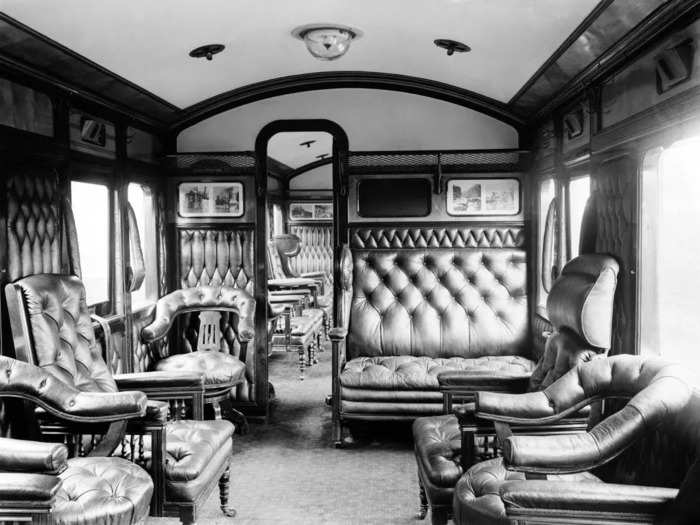
This ornate 1905 club car was part of the British railway company Lancashire & Yorkshire Railway.
In 1912, meals on the Great Eastern Railway's first-class dining cars were served on fine china and silverware embossed with the GER logo.

The carriages also featured upholstered leather booths with covers, known as antimacassars that were embroidered with "GER."
The carriages also featured upholstered leather booths with covers, known as antimacassars that were embroidered with GER.
First-class lounges looked more like living rooms aboard the London, Midland, and Scottish Railway in 1928.

First-class lounges on LMS trains were furnished with leather armchairs, drapes, and carpeting.
Passengers dressed to the nines in hats, gloves, and fur coats in a first-class London North Eastern Railway car in 1930.

The lounge also included a gramophone and decorative wood panels.
Travelers on the Canadian Pacific Railway in 1930 passed the time by reading newspapers or listening to the radio.

The first-class car featured plenty of windows, as well as striped furniture and tabletop lamps.
In 1937, sleeping carriages on luxury Pullman trains included perks like being served breakfast in bed.

The carriages included clothing racks and shelves for storing luggage, as well.
In 1951, waitstaff served food and drinks in a first-class dining saloon on a train at Marylebone Station in London.

The tables were set with white tablecloths and patterned china.
Lunch was also a dressy affair in British Railways' first-class dining car.

Passengers wore suits and ties, as did the waitstaff.
Glamorous Golden Arrow trains, operated by Pullman, ran between London and Paris from 1929 to 1972.

The Golden Arrow's Trianon Bar, the first-class bar car pictured above, debuted in 1951.
Pullman offered rides on restored Golden Arrow trains in 2022 to mark the 50th anniversary of its final run.
Paul McCartney and Mick Jagger traveled in style in first class in 1967.

The musicians rode the train from London's Euston Station to Bangor.
King Charles (then Prince of Wales) also rode in first class in 1978.

Charles chatted with a journalist in a first-class cabin on a train in the UK.
In 1992, the first-class lounge on Indian Pacific trains offered entertainment in the form of board games like Scrabble.

Passengers were photographed playing Scrabble as an Indian Pacific train pulled out of the Broken Hill station in Australia.
In 1997, British Prime Minister John Major and his wife, Norma, ate a meal in first class as they rode a train from King's Cross Station in London.

Their table featured a rose in a vase and blue linen napkins.
Today's first-class cars on Amtrak don't look much different from the rest of the train.

Business Insider's Joey Hadden rode in a first-class Amtrak Acela car in 2022 and concluded that while she enjoyed the meal service and travel experience, she didn't feel it was worth the $270 price tag.
Some trains still offer the old-world glamour of yesteryear, like the Venice Simplon-Orient Express.

The Venice Simplon-Orient-Express consists of vintage luxury train cars from the 1920s and 1930s that transported passengers through Europe as part of the Orient Express.
The sleeper trains now travel to 17 European cities on 60 routes. Prices for a private cabin range from $9,000 to $26,000.

- RIL cash flows
- Charlie Munger
- Feedbank IPO allotment
- Tata IPO allotment
- Most generous retirement plans
- Broadcom lays off
- Cibil Score vs Cibil Report
- Birla and Bajaj in top Richest
- Nestle Sept 2023 report
- India Equity Market
- Best printers for Home
- Best Mixer Grinder
- Best wired Earphones
- Best 43 Inch TV in India
- Best Wi Fi Routers
- Best Vacuum Cleaner
- Best Home Theatre in India
- Smart Watch under 5000
- Best Laptops for Education
- Best Laptop for Students

- Advertising
- Write for Us
- Privacy Policy
- Policy News
- Personal Finance News
- Mobile News
- Business News
- Ecommerce News
- Startups News
- Stock Market News
- Finance News
- Entertainment News
- Economy News
- Careers News
- International News
- Politics News
- Education News
- Advertising News
- Health News
- Science News
- Retail News
- Sports News
- Personalities News
- Corporates News
- Environment News
- Top 10 Richest people
- Top 10 Largest Economies
- Lucky Color for 2023
- How to check pan and Aadhaar
- Deleted Whatsapp Messages
- How to restore deleted messages
- 10 types of Drinks
- Instagram Sad Face Filter
- Unlimited Wifi Plans
- Recover Whatsapp Messages
- Google Meet
- Check Balance in SBI
- How to check Vodafone Balance
- Transfer Whatsapp Message
- NSE Bank Holidays
- Dual Whatsapp on Single phone
- Phone is hacked or Not
- How to Port Airtel to Jio
- Window 10 Screenshot
Copyright © 2024 . Times Internet Limited. All rights reserved.For reprint rights. Times Syndication Service.
Please view the main text area of the page by skipping the main menu.
The page may not be displayed properly if the JavaScript is deactivated on your browser.
- Entertainment
Japan-backed bullet train in India may be operational by 2026: envoy
April 5, 2024 (Mainichi Japan)

TOKYO (Kyodo) -- A high-speed railway project in India backed by Japan, featuring its shinkansen bullet train technology, could see start commercial operations begin by 2026, the South Asian country's envoy said Thursday.
The project's inauguration "could be 2026, or it could even be early," although the two nations are still "in consultation on the exact timeframe," Indian Ambassador to Japan Sibi George told Kyodo News in an interview in Tokyo.
"What I can say is that there is considerable progress in the project," George said. The original schedule for the start was sometime in 2023.
India's first-ever shinkansen project, which covers a distance of some 500 kilometers between the western cities of Mumbai and Ahmedabad and cuts travel time from six to two hours, was agreed between the Japanese and Indian governments in 2015. Construction work began in 2017.
The completion has been pushed back mainly due to a site acquisition delay. But India's Ministry of Railways said in January this year that the land purchase had been completed, while its minister reportedly said in March operations could start in 2026.
As this year marks the 10th anniversary of Japan and India's "special strategic and global partnership," George said there will "definitely" be mutual visits by Japanese Prime Minister Fumio Kishida and his Indian counterpart Narendra Modi this year as they have done so every year recently.
"We would be looking forward to have a very productive and interactive year, which would help us to take our relationship to new higher levels," George said, adding that the ties are "so broad and wide-ranging," covering the fields such as economy, energy and defense.
Referring to the Quad, a four-way security dialogue framework involving Japan, India, the United States and Australia, George underscored the importance of like-minded nations to "work together for the prosperity and stability" of the Indo-Pacific region.
The Quad is widely considered a counterweight to China, which has been intensifying its maritime assertiveness in the region.
The ambassador also said India aims to increase the number of Japanese firms operating in the country "from the current 1,500 to 15,000 in the next few years."
Also in The Mainichi
Latest articles.
- Haiku in English: April 13, 2024

More Articles
- Go to Page Top

IMAGES
VIDEO
COMMENTS
A beginner's guide to train travel in India, with information on train times, fares, & how to buy tickets, Indrail passes, Indian train travel tips plus photos of what trains are like in India. Advice on where to go in India. Also covers overland travel by train from London & Europe to India, and train travel from India to Nepal & Pakistan...
Explore the soul of the subcontinent by traveling by train in India, from luxury to budget, from city to country. Discover the best train journeys in India, from the Deccan Odyssey to the Darjeeling Toy Train, with scenic views, cultural insights and historical attractions.
The great Indian train journey is an exciting and colourful adventure, but it does require some planning. From booking tickets and which class to choose, to travel safety, food and luggage essentials, our guide to India train travel has everything you need to know. We're massive fans of train travel. There's just something about watching ...
Learn how to book tickets, choose classes, understand fares and facilities, and enjoy the culture and experience of train travel in India. Find tips for taking trains with kids, using apps, and downloading the right apps.
Booking tickets. Booking online is the easiest way to buy train tickets. The railway reservation system is open from 1.30am to 11.30pm every day (IST) so keep this in mind when trying to book online, particularly if you are abroad. The following websites all issue e-tickets, which are valid for train travel.
Trains are the transport mode no. 1 and the Indian Railway network is the third biggest in the world. Train travel in India ranges from dirt cheap to very affordable. That said, with a tourist budget you can probably also afford a personal driver for a few days but still, it won't be as cheap as taking the train.
Why should you train travel in India. India's expansive railway network is not just a mode of transportation; it's an integral part of its cultural fabric. With over 18 million people traveling daily across its vast expanse, Indian trains offer an unparalleled opportunity to witness the pulsating heartbeat of this nation.
Rail travel in India. The rail network of India is the third largest in the world, and the rail system is efficient, if not always on schedule. Tracks running well over 60,000 km help connect over 7,500 stations, ferrying nearly 20 million people every day. Although distances in India are long and Indian trains aren't the world's best ...
Where to book train tickets in India. How to book India train tickets online. First Step - Registration. Second step - Verify your number and email. Third step - Book your tickets. Fourth step - Payment. Fifth step - At the station, boarding the train. Issues and troubleshooting while booking.
Vital train tips from Ashish Verma, Intrepid Travel's Contracting Manager in India: Be ready for delays for a number of reasons - fog is a pretty common one. And remember a chain and padlock (there are bars beneath the seats where you can lock up your bag). Also, don't use the toilets when the train is stationary! Sleep early and bring ...
Booking Indian Train Tickets From Overseas. Option #1 - The stress-free way with Raj from Train Ticket Please. Option #2 - Do it yourself with 12Go.Asia. Option #3 - Sign up for an IRCTC Account & (try to) Book Directly. Option #3 - Use a Local Travel Agent. Option #4 - Buy Your Ticket at a Railway Station in India.
The best way to travel India is by the vast, and great value, Indian Railways network and traveling on Indian railways is an essential Indian bucket list experience in itself.. However, this massive system can be confusing to navigate at first and tickets can get booked up way in advance and can be difficult to book from abroad.
Train travel in India is an essential Indian bucket list experience! The railway network. With one of the largest rail network in the world, India came up over and over again as a country that is a must-see by train. The rail network in India is the fourth largest in the world after USA, Russia and China.
Train travel in India is an extraordinary experience that allows you to immerse yourself in the vibrant culture and diverse landscapes of the country. By following the tips and guidelines shared in this guide, you can navigate the Indian railway system with confidence and make your journey a memorable one.
Express Taj Mahal Day Trip: Delhi to Agra by India's Superfast Train. 5.0 (28 reviews) Taj Mahal one day trip from Delhi by India's fastest train was a worthy tour. Everything was good and tour guide was very knowledgeable. Destinations.
Train travel in India can be stressful or quite an interesting experience to say the least. However, it is one of the most affordable ways to get around India. This is everything you need to know before traveling by train in India - how and when to book tickets, the train classes, and train travel safety tips. ...
Learn how to book a train ticket, choose a train, and enjoy a comfortable and convenient journey by train in India. Find out the cost of tickets, the benefits of quota and concessions, and the best luxury trains in India.
1-Month India Travel Itinerary Delhi // 4 days // Our first stop was Delhi and what an introduction to India! It was chaotic, it was colourful, and it was a whirlwind. We spent our first day touring the Red Fort, which was once the main residence of the Mughal emperors.It may be called a fort, but this place is more like a walled city and you could easily spend half a day here visiting the ...
Destinations Covered - This luxury rail travel will take you to India's historical destinations such as Mumbai, Delhi, Jodhpur, Jaipur, Agra, Khajuraho, Varanasi, Orchha, Gwalior, Bikaner, and more. Duration - While Treasures of India Maharajas' Express takes only 3 nights/4 days to complete, Heritage of India Maharajas Express, Indian ...
Types Of Trains In India 1. Express Train. An express train is your most reliable option if you're travelling to a different state. Running at a maximum speed of around 100 Km/hour, these trains are much faster than local and passenger trains.Besides, they also have much fewer stops, which allows them to cover long distances quickly.
Train travel in India is crowded, often messy and loud, but a complete enriching experience in its own. Here are my tried & tested 13 awesome basic safety tips for traveling by train in India. 1. Wear suitable clothes. To be on the safer side, avoid expressing your personal fashion sense while traveling in train. ...
Train travel in India is a great way to see the country and engage with its people. Because it's so popular and caters to people from all economic backgrounds, tickets can sell out quickly, so ...
The best way to buy tickets for train travel in south India is online. Tickets do tend to book up as quickly as 90 days in advance, so it's best to lock in those travel plans ASAP. There are two websites where you can buy tickets from, the official IRCTC site and ClearTrip. I prefer to use ClearTrip as it is a lot easier to navigate and ...
Suggested Read: 43 Famous Historical Places In India To Visit. 3. Kalka - Shimla. A Spellbinding Journey to the Summer Capital. Image Source. If you want to cherish picturesque valleys, steep pathways and foggy meadows, travel to Shimla in the narrow gauge train.
India's original luxury train, Palace on Wheels, has undergone a recent renovation, restoring its former glory. It was the first heritage luxury train organised by the Rajasthan Tourism Development Corporation, introducing Indians and foreign visitors alike to the opulence of royal travel.
Embark on the 'Shri Ramayana Yatra' by Indian Railways for a spiritual journey across India. This 17-night tour covers 14 cities and 39 worship sites, offering diverse pricing options to suit all ...
Mumbai: In a significant development, the Indian Railway is planning to introduce longer Vande Bharat trains with up to 20 coaches. Currently, eight or sixteen coach train sets are operating services in the country. The Railway, now, plans to introduce 20 - coach sets in the busiest routes. However ...
The sleeper trains now travel to 17 European cities on 60 routes. Prices for a private cabin range from $9,000 to $26,000. Some trains still offer the old-world glamour of yesteryear, like the ...
TOKYO (Kyodo) -- A high-speed railway project in India backed by Japan, featuring its shinkansen bullet train technology, could see start commercial operations begin by 2026, the South Asian ...
A 4.8 magnitude earthquake rattled buildings across parts of the Northeast Friday morning, according to the US Geological Survey, with reports of shaking being felt from Washington, DC to New York ...